


John White Managing Director




John White Managing Director
Managing Director John White squeezes so much content into a small porthole.
Welcome, dear reader, to your latest edition of Inside Marine.
My Editor just popped into my office to give me some guidelines for this piece. As usual, there is so much exciting content that trying to cover it all within the meagre number of words he allows me is a challenge, but here goes…
This edition brings you coverage of four exciting maritime-related events (Europort, Breakbulk Americas, ADIPEC and Silicone Expo) with which we are official media partners with. Therefore, given how popular this section has become, be sure to take some time to find out more about them and the many exhibitors, especially if you are considering a visit!
As if that were not enough, you will also be pleased to find a focus on the specialised support vessel industry: those unsung heroes working hard behind the scenes in support of the often show-stealing larger vessels and fleets. For example, where would those leviathan tankers and cargo ships be if it were not for the comparatively tiny tugboats guiding them in and out of port? Well, quite simply, either stranded outside of the port or causing havoc within it !
There’s more… we should always find time, (and Inside Marine is always pleased to do so), to showcase those involved in crew welfare. This vital area of the industry helps to keep our fleets afloat and is, of course, of paramount importance.
Finally, in keeping with our slogan ‘Seven Seas – Five Oceans – One Voice’, we bring you, as always, a vast array of other maritime articles, advertisements, news, views, and snippets of interesting and informative content for your reading pleasure.
I think I have just enough space left to wish you all fair winds and following seas n
To have your company’s latest product, technology or concept included in Inside Marine, contact us today.
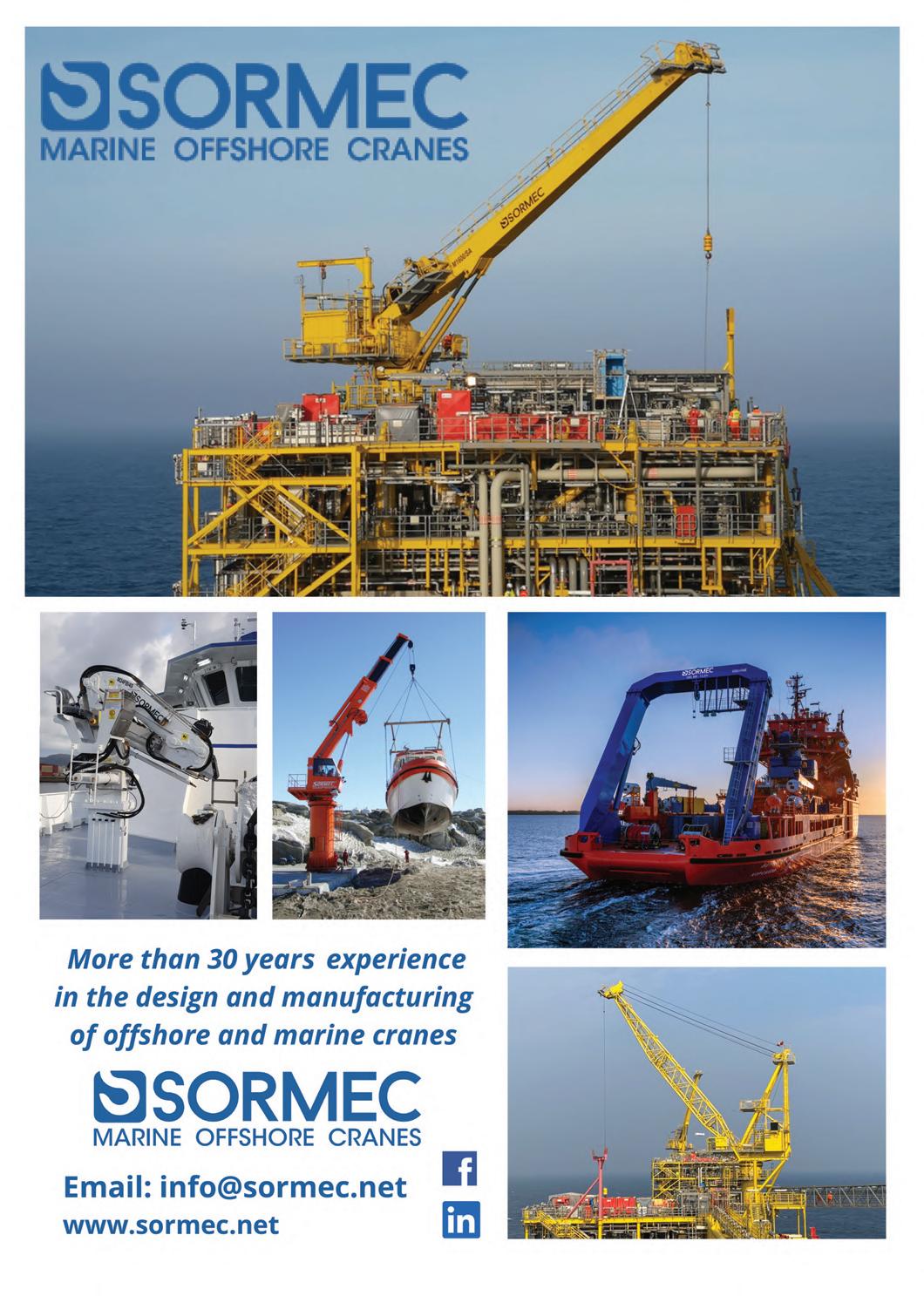
Decarbonisation is a hot topic within the maritime industry. ADIPEC 2023 will facilitate global dialogue on critical energy and climate issues, foster meaningful partnerships and inspire credible solutions towards securing a cleaner, more affordable and sustainable energy future.
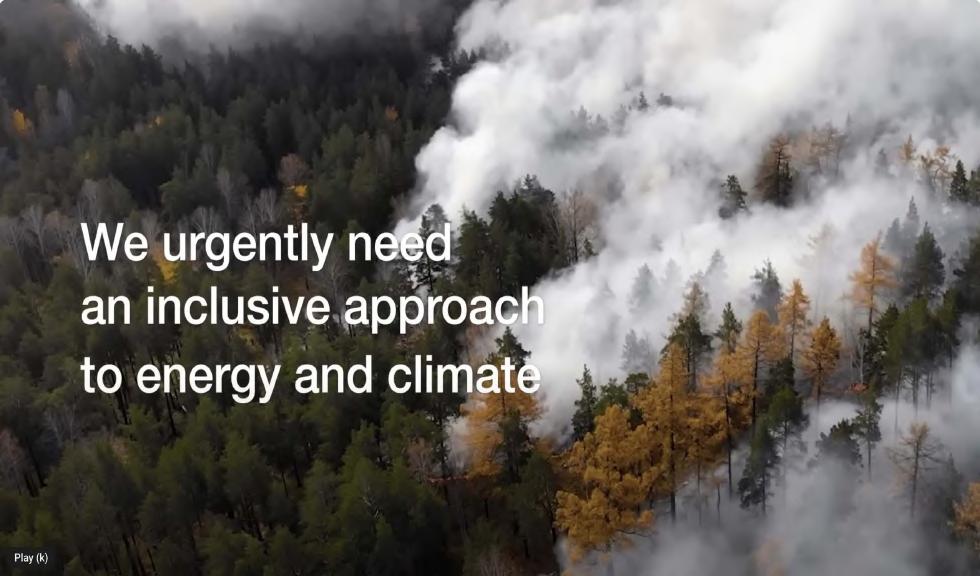

Managing Director
John White
Finance Director
Filomena Nardi
Editorial Manager
Phil Nicholls
Editorial Assistants
Imogen Ward
Hannah Barnett
Feature Writers
Andy Probert
Romana Moares
Richard Hagan
Colin Chinery
Business Development Manager
Darren Foiret
Research Editors
Jeff Johnson
Mark Simmonds
Judi Wheaton-Mars
Ginelle Lorenzo
Natalie Martin
Dane Coady
Becky Scrivens
Jamie McBride
Sam Ransome
Sales Director
Richard Brightmore
Sales Manager
Helen Leisi
Project Managers
Alexander Paterson
Tony Ingrouille
Kym Hamilton
Chris Renicar
David Earl
Connor Doddington
Lisa Smith
Carl Millican
Art Director
Ian Spencer
Art Editor
Philip White
Webmaster
Michael Stamp
Designers
Sarah Jones
Georgina Harris
Events Manager
Jasmine Lodge
Events Executive
Matthew Spalding
Marketing Executive
Adam White T: +44 (0)1493 445121 +44 (0)1502 566216
E: media@insidepublication.com W: www.insidemarine.com



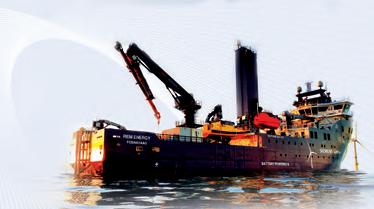
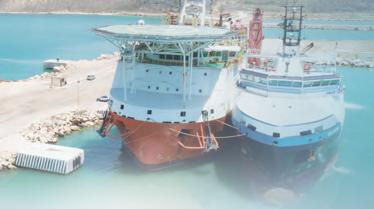


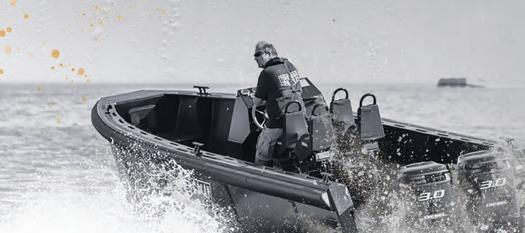







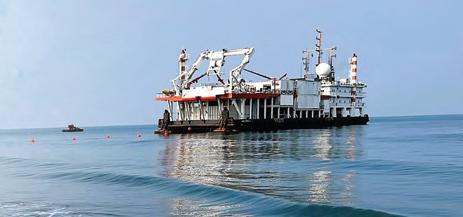
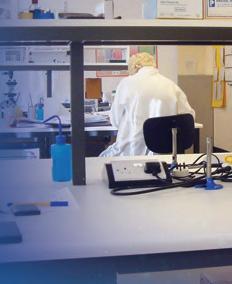



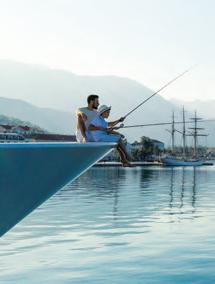
Latest developments from the Brazilian industry
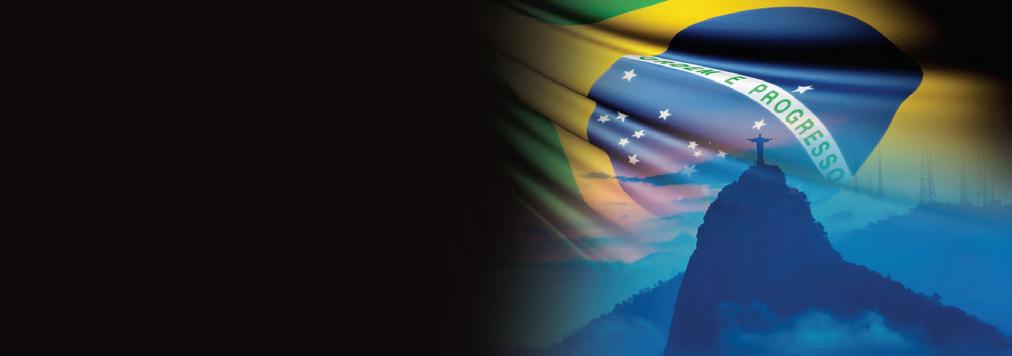
Petrobras, the major Brazilian energy company, has achieved a significant milestone in its new commitment to sustainable ship recycling with the successful conclusion of the auction for the disposal of a floating offshore platform in Brazil.
The sale of the floating unit P-32, which has operated in the Marlim field of the Campos Basin, took place at the start of July 2023. In a collaboration supervised by Petrobras, the steel company Gerdau S.A. and shipyard Ecovix have been entrusted with the responsible and environmentally sound recycling of the platform.
“This decision marks the first time a commercial vessel at the end of its lifecycle will be dismantled in Brazil,” Nicola Mulinaris, Senior Communication and Policy Advisor of the NGO Shipbreaking Platform, said. “This significant move not only paves the way for the development of a recycling industry in Brazil, but also sets an important precedent for the shipping and oil and gas sectors, encouraging other ship owners to adopt similar strategies for capacity building.”
Over the next five years, Petrobras is expected to retire at least 26 units, with a projected investment of USD 9.8 billion allocated towards decommissioning activities. Just a few months ago, the oil
and gas giant announced the adoption of a new policy mandating the recycling of vessels only in facilities equipped with dry-docks or impermeable surfaces with drainage systems.
This off-the-beach stance places the company among an increasing number of responsible ship owners – including competitors SBM Offshore and Shell –that are choosing facilities with infrastructure enabling the safe and environmentally sound management of their end-of-life assets.
“After years of selling numerous old vessels for dirty and dangerous shipbreaking on the shores of South Asia, Petrobras has finally committed to environmental stewardship by unequivocally disavowing such practices, Ms Mulinaris concluded: “Moreover, the company’s decision to opt for a domestic solution, leveraging the state-of-the-art infrastructure available in Brazil, showcases that it is possible to find alternative and better solutions to beaching.” n
Latest developments from the UK’s industry

Babcock International has successfully completed maintenance works for the Royal Research Ship (RRS) Sir David Attenborough at its Rosyth facilities.
Babcock welcomed the RRS Sir David Attenborough (SDA) to Rosyth in early June with works to the ship including upgrades to the vessel’s gas detection system, helideck netting and draft sensor vent pipework, as well as assistance with planned maintenance, defect rectification and general logistics support.
The maintenance was supported by around 20 expert Babcock tradespeople, including apprentices.
Designed to support science in extreme environments, the SDA is one of the most advanced polar vessels in the world, with the maintenance carried out by Babcock allowing the vessel to continue operating efficiently and safely as it embarks on its next global operation.
The SDA is the second Royal Research Ship to visit Rosyth as part of the newly agreed Natural Environment Research Council (NERC) contract, part of Babcock’s £45 million contract to maintain the UK’s fleet of scientific research ships. Babcock will also support NERC to review, identify and
adopt technologies and solutions to reduce ship emissions.
“The UK’s fleet of scientific research ships carries out invaluable work at both polar regions to allow us to further understand changes in our climate,” Sean Donaldson, Managing Director, Babcock’s Rosyth facility, said. “To operate effectively in those regions, it is essential that each vessel is perfectly maintained. That’s where Babcock’s expertise and long history of successfully maintaining complex assets is invaluable.
“Our flexible and efficient recent work on the vessel bears testament to the fact that we deliver when it counts most, and we are proud to play a part in this fantastic UK scientific programme.”
RRS SDA is a one-of-a-kind polar research ship that is set to transform the UK’s polar research capability. A floating laboratory, the ship will enable world-leading research in Antarctica and the Arctic over the next 30 years, allowing scientists to investigate the important issues we face as a society, including climate change, future sea-level rise and threats to marine biodiversity. n
Latest developments from the Australian industry
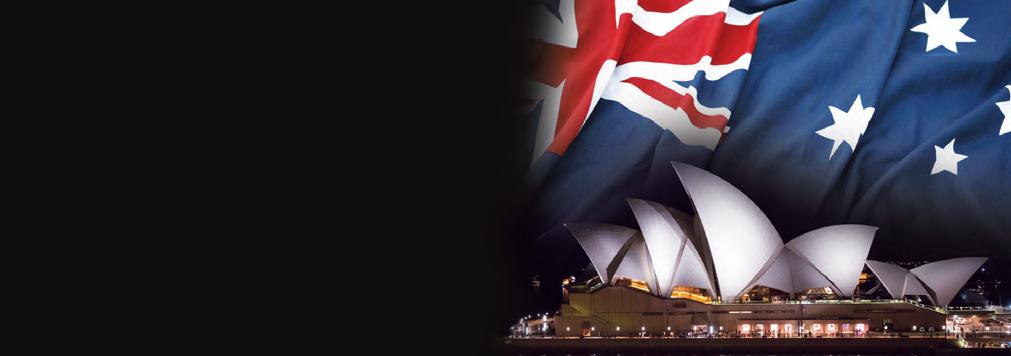
AAL Shipping (AAL) recently completed the successful transportation of critical Toshiba-built power station components on a single shipment from China and Japan to Queensland, Australia.
The units were carried for global logistics provider DB Schenker and are to be used in the repair of the Callide Power Station as part of a USD 200 million project to fix damaged turbines. The components will also return one of Queensland’s newest and most vital coal-fired power plants to full capacity, after failures had resulted in mass power outages from the NSW border to the north of Cairns.
AAL was selected for the project due to its long-standing relationship with DB Schenker, a history of strong performance on Toshiba cargoes and the reliability of AAL’s monthly ‘Asia-East Coast Australia Liner Service’ on which this latest cargo was shipped.
Initially consisting of a 270-tonne transformer and 600CBM of accessories, the cargo was loaded onto AAL’s 31,000 deadweight mega-size A-Class heavy lift MPV ‘AAL Singapore’ in the Port of Shanghai and was due to be discharged at the Port of Gladstone in Queensland,
with the trans former offloaded to barge and then transported to shore.
“Whilst loading the transformer in China and before her sailing to Gladstone, our client requested if the AAL Singapore could deviate to Yokohama in Japan and load other critical accessories for the same project, which we were happy to do,” Chris Yabsley, Chartering Manager, AAL Australia, said. “AAL was then further engaged to harness our vessel’s heavy lift cranes and transfer a large 276-tonne generator stator from wharf laydown to a waiting barge, which we again executed seamlessly.
“All these components were then transported via road to the Callide Power Station in central Queensland for the final 100 kilometres of their journey, having travelled a total distance of nearly 9,000 kilometres. The project was completed on time and without issue, to ensure vital works at the power station can go ahead without delay.” n
Latest developments from the Dutch industry

The Dutch Minister of Infrastructure and Water Management, Mark Harbers, attended an event celebrating the completion of the enlargement of the Twente Canals.
Agreat recognition for the work of consortium Van Oord – Hakkers –Beens, who worked on the final phase of the enlargement of the Twente canals in recent years.
The Twente canals are an important logistical connection for the transportation of goods by water. By enlarging the waterway, the ports of Almelo, Hengelo and Enschede are more accessible, and larger vessels can sail through more safely and smoothly. This boosts regional economy and makes water transport even more attractive.
The Van Oord – Hakkers – Beens consortium was commissioned by Rijkswaterstaat, the executive agency of the Dutch Ministry of Infrastructure and Water Management. The consortium was responsible for enlarging the canal, replacing the sheet piling over a length of 35 kilometres and applying a self-sealing layer at the bottom of the canal. The consortium also created 13 kilometres of nature-friendly riverbanks.
During project execution, the Twente canal remained accessible and in use at
AS A CONSORTIUM, WE ARE PROUD TO CONTRIBUTE TO THE OBJECTIVE OF THE TWENTE CANAL PROJECT: THE IMPROVEMENT OF THE ACCESSIBILITY OF THE WATERWAY
“
all times whilst 80 pieces of floating equipment worked on the canal. The project paid a lot of attention to sustainability: part of the sheet pile walls, and the dredged material, were reused on projects in the area.
“As a consortium, we are proud to contribute to the objective of the Twente canal project; the improvement of the accessibility of the waterway,” said Ronald Schinagl Managing Director for Van Oord Netherlands. “In cooperation with Rijkswaterstaat and all other stakeholders, we got the job done with limited disruption and an eye for sustainability.” n
An overview of All Aboard Alliance’s efforts to improve conditions for women seafarers.


Interviews with 115 anonymous women seafarers from all ranks form the basis of a multi-year effort by the All Aboard Alliance to improve living and working conditions for women at sea. Report by Phil Nicholls.
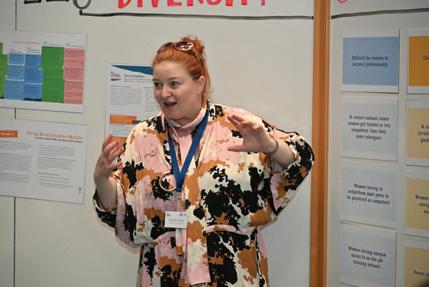
The new qualitative study from the Global Maritime Forum and the All Aboard Alliance contains a wide spectrum of perspectives from women seafarers who address the challenges they experience at sea, from ill-fitting safety gear to slower career progression and harassment.
The key pain points
From the anonymous interviews, the All Aboard Alliance has identified 15 key pain points which fall into four broad categories, the first being the difficulty of succeeding professionally at sea. This category referenced being perceived as less competent than male coworkers, not having equal access to training or tasks onboard and
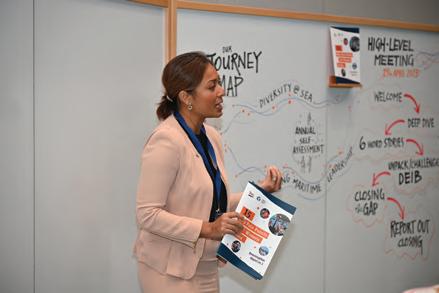
having to outperform male peers to get respected or promoted.
Another category of key pain points involves how social relations onboard can be especially challenging for women at sea. This involves feeling isolated or unsupported because of their gender, the concern for gossip or rumours, power abuse or sexual harassment and sexual misconduct onboard.
The third group of pain points relates to systemic employment challenges at sea. The seafarers highlighted the lack of family planning options, such as maternity leave or sea-shore rotation programmes, resulting in many women having to choose between a career at sea or starting a family, in turn


pushing women seafarers to find employment elsewhere. This category also covers service contracts at sea being too long and how many companies are still not willing to recruit women seafarers.
The final category relates to the physical conditions onboard. This describes the lack of access to female sanitary products onboard or a lack of access to adequately fitted Personal Protective Equipment, such as boiler suites or fire gloves. The concerns in this area also noted the lack of access to designated women’s changing rooms or bathrooms onboard vessels.
Some of these pain points were already known, but the detailed accounts are very valuable. The study itself contains a selection of the quotes recorded to illustrate the pain points.
“We need to make life at sea more inclusive to women seafarers,” Su Yin Anand, Head of Shipping at South32 and Co-Chair of the All Aboard Alliance, said; “but now that we have a better understanding of what the pain points are, we can work together to address them. We do not
An overview of All Aboard Alliance’s efforts to improve conditions for women seafarers.

want them to leave their careers at sea because we need them – and we need many more.”
The qualitative Diversity@Sea study covers such a wide spectrum of the industry and looks broadly at the problems that face women working at sea.
On average, women at sea amount to less than 2% of the total seafarer population.
“These issues must be addressed,” said Mikael Skov, Co-Chair of the All Aboard Alliance. Mr Skov is also CEO of Tanker operator Hafnia – which in 2022 launched its Maritime
Cultural Lab aboard four of its vessels, with crew matrixes consisting of at least 50%

women – to learn more about the cultural nuances and impact of a more diverse crew.
“First of all, we must address these issues because it is the right thing to do,” Mr Skov continued. “Secondly, because the maritime industry is changing rapidly, and more advanced skills are needed –ones which require us to look holistically at the full talent pipeline to identify the best candidates – for the maritime sector to thrive and grow.”
It is important to note that many of the key pain points identified in this study –such as bullying and harassment, feelings of isolation and long contracts keeping seafarers from their families for many months – are also considered as pain points for many male colleagues.
The interviews were the first part of a pilot project conducted by the All Aboard Alliance. The study covers women of all ranks, from captains to deck hands, and in many types of ships, with most of the women interviewed being from Asia (63%) and Europe (25%).
“The study provides us with the direction we need to develop adequate measures to find solutions to each of these challenges, and not, to decide which of the measures to test in the pilot project later this year,”


Susanne Justesen PhD, Project Director, Human Sustainability at Global Maritime Forum and co-author of the report, explained. “The maritime industry needs female seafarers, and it is important that we work collectively to develop and test ways to make work life onboard more inclusive for everyone.”
In the next phase of the project, to be launched in Q4 of 2023, selected vessels from within the All Aboard Alliance with higher-than-average numbers of women officers and crew members onboard, will test the co-designed measures and solutions in an action-research approach. The goal is to identify which of the proposed solutions are most impactful in addressing the 15 key pain points for female seafarers, and thus what will best help the All Aboard Alliance in making a career at sea not just

inclusive, but also attractive to more women seafarers going forward.
The Global Maritime Forum and the All Aboard Alliance hope that the Diversity@Sea report will help spread awareness of the major challenges experienced by women at sea and that many will join this mission to identify adequate and sustainable solutions for each of the 15 key pain points. A career at sea must made be more inclusive to become attractive to women seafarers and everyone interested in pursuing a career at sea.
Read the Diversity@Sea report, 15 Key Pain Points for Women at Sea, here: https://cms.globalmaritimeforum.org/w p-content/uploads/2023/04/All-AboardAlliance_Diversity@Sea-report-no.-1_15key-pain-points-for-women-at-sea.pdf
The All Aboard Alliance brings together senior leaders from across the maritime industry, united by a collaborative drive towards increasing diversity, equity, and inclusion in all organisations, at sea and onshore. The All Aboard Alliance is supported by Founding Knowledge Partners: Global Maritime Forum, Diversity Study Group and Swiss Re. The Alliance was established in 2021 and currently has 36 member companies. n
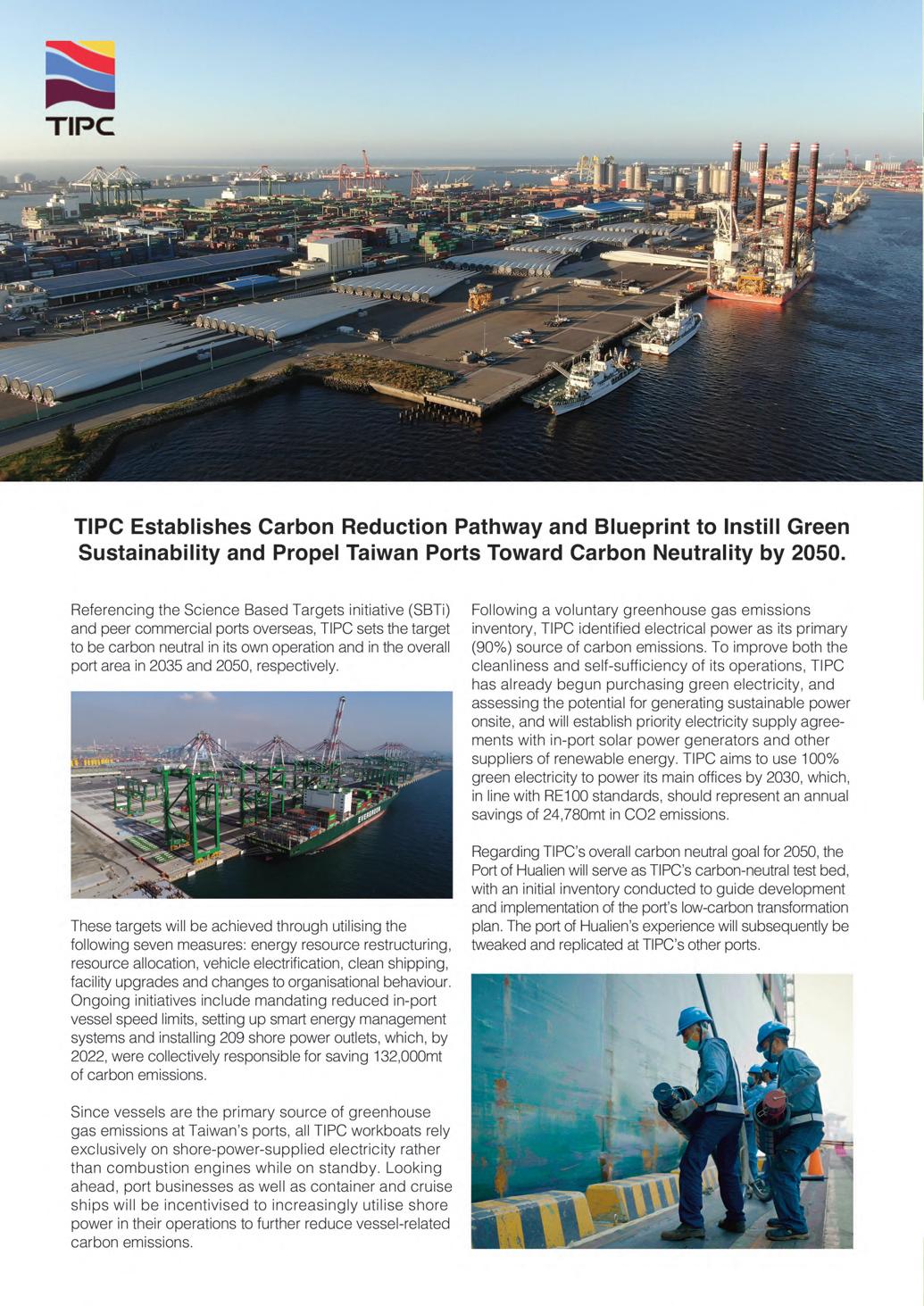

Latest innovations from the marine industry

HAV Design has been chosen to develop another methanol-fuelled offshore wind service operation vessel (SOV) for ESVAGT.
VHADesign will deliver both the ship design and an integrated equipment package including propulsion system, engines, propellers and positioning system.
“We are humbled and delighted to be awarded yet another assignment from our long-term customer, who is the leading SOV operator,” said Gisle Vinjevoll Thrane, Vice President of Sales at Norway-based HAV Design. “ESVAGT sets extremely high standards for project execution, safety, environmental features and cost-efficiency of operations. As such, the company is a customer that makes us an even better supplier.”
The newbuild hybrid vessel is of HAV 833 SOV design. The vessel will be equipped with a methanol-electric propulsion system, including a battery pack that allows very low to zero-emissions operations. The SOV is 93 metres long and 19.6 metres wide and can accommodate up to 124 people.
The main purpose of the SOV is to safely transfer technicians and spare
parts to and from wind turbines and offshore substations.
The vessel will be constructed at Cemre Shipyard in Turkey. Upon completion, the vessel will become an integral part of Ørsted’s UK East Coast Hub.
This is the 11th SOV that ESVAGT is developing together with HAV Design. ESVAGT is a provider of safety and support at sea and a market leader within offshore wind solutions. The company has a fleet of more than 40 vessels and approximately 1,100 employees offshore and onshore. It is recognised as the market leader and largest operator of SOVs in Europe. n


A unique e-learning programme that puts positive wellbeing in the hands of seafarers was launched in July by international maritime charity Sailors’ Society.
With funding contributions from Norden and Trinity House, the fun, interactive platform with animations, podcasts and quizzes is being offered free of charge and works on- and offline to ensure seafarers everywhere can access the charity’s award-winning Wellness at Sea programme.
Available on a phone, tablet or laptop, it provides seafarers with tools and resources they can apply to daily life. It is designed to educate and empower seafarers to make the changes they need to see a positive impact on their health and wellbeing, allowing them to live a happier, healthier and more fulfilling life at sea.
Six modules cover a wide range of topics to help seafarers manage mental and emotional strain, improve personal and professional relationships and look after their finances and physical and mental fitness. Everyone who completes the course is awarded a certificate.
“We are so proud and excited to launch this platform today,” Sailors’ Society CEO
Sara Baade said. “We think this is a game changer in getting wellness coaching into the hands of all seafarers, wherever they are and whether they have good connectivity or not. This platform brings together our many years of expertise and experience in providing practical solutions to maritime welfare.”
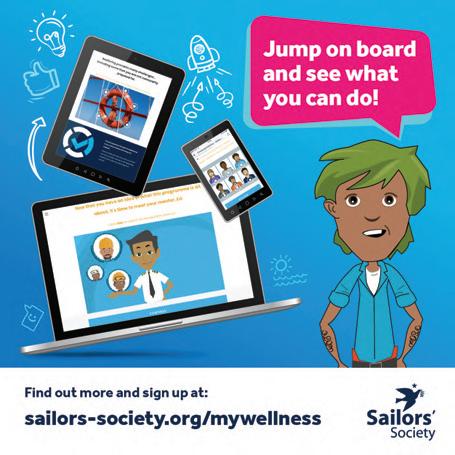



Fibre optic sensor-based and digitally connected Hull Stress Monitoring Systems improve safety and optimise Condition Based Maintenance.
Light Structures AS, the world-leading supplier of fibre optic condition monitoring systems based on Fibre Bragg Grating technology (FBG) and its Dubai headquartered partner Elcome International LLC have been contracted to provide precision SENSFIBTM Hull Stress Monitoring Systems for 10 Offshore Supply Vessels (OSVs). All of which are owned by a major Middle Eastern-based offshore support services provider.
The project is due for delivery and installation on all 10 OSVs by August this year. The SENSFIBTM system has been selected for the retrofit project and is designed to provide instrumentation that fulfils requirements under the new SMART Structural Health Monitoring (SHM) notation. It will also follow ele -
ments of the Hull SMART notation from Bureau Veritas (BV)
Both notations provide a framework for the use of structural stress and fatigue monitoring data as part of a Condition Based Maintenance programme. As a result, significant OPEX savings are expected to be made by reducing the number of drydock visits during an average vessel’s lifetime if onboard instrumentation can deliver compliant, verified data.
Precision measurements from unique SENSFIB fibre optic sensors on board all 10 OSVs will be made available digitally to ensure that the latest hull stress and fatigue data is always available for informed maintenance decisions. Light Structures will also provide comprehensive annual reports for all vessels based on the collected data, supporting a long-term monitoring approach to ensure operational safety and to help extended the vessels’ operational life. n

Thefinal day of Maritime Safety Week
2023 saw the launch of a new partnership to improve safety in commercial fishing. The partnership was established between The Seafarers’ Charity and the National Federation of Fisherman’s Organisations (NFFO) and formalised by a Memorandum of Understanding aimed at ensuring collaboration on a range of industry-led initiatives to improve fishing safety.
The new partnership sees The Seafarers’ Charity and NFFO utilising their specialist skills and resources for the broader benefit of the commercial fishing sector. The Seafarers’ Charity is a leading maritime funder of safety initiatives and welfare services for people working at sea. The Charity brings its funding resources, collaborative approach and convening powers to the partnership, which will be informed by the NFFO’s representation and specialist knowledge of the fishing industry in England and Wales.
The formalisation of a partnership builds on The Seafarers’ Charity co-funding with the NFFO of their Risk, Safety & Training Lead post held by Charles Blyth. The post
has already been co-funded by the two partners since May 2022 and the Charity recently agreed a further two-year funding commitment into 2025.
In addition to funding this key role, the two organisations committed to collaborating on various initiatives and projects that will contribute to raising awareness and understanding of safety management practices.
The Seafarers’ Charity has been improving the lives of seafarers and their families for over 105 years. Through grants and fundraising, the charity brings about truly life-changing impacts for many who work –or have worked – at sea, and their families. Alongside this, it also uses funding collaboration, research and advocacy to tackle the root causes of seafarer hardship and disadvantage in the UK and around the world. n

seven seas, five oceans, one voice

A selection of event previews and quotes, followed by interviews about ADIPEC, Silicone Expo USA, Breakbulk Americas and Europort.
02-05 October 2023
ADIPEC 2023

ADIPEC is an international platform convening global energy producers, consumers and innovators to accelerate game-changing solutions and transformational progress for the future of energy. Hosted in Abu Dhabi by ADNOC, ADIPEC builds on its 39year legacy of innovation and evolution for the entire energy ecosystem.
[click here] for weblink

20-21 September 2023
World Offshore Week

World Offshore Week is the #1 mega-show bringing together all industry stakeholders impacting the offshore oil and gas sector. This leading platform is the focal point for the offshore industry to discuss best practices and latest solutions in transforming the future of offshore energy.
[click here] for weblink
11-15 September 20
London International Shipping We

London International Shipping Week important international shipping an world. Having grown consistently s become an even bigger event in 2023, host attracting thousands of international indus
[click here] for weblink

November 2023
roport, organised in the world port city Rotterdam, is the international maritime eeting place for innovative technology ex shipbuilding. With an average of 25,000 al visitors and 1,000 exhibiting companies elongs to the world’s largest maritime d knowledge sharing B2B platforms.
12-14 March 2024

For nearly 40 years, global maritime professionals have come together to meet, network and do business at CMA Shipping. Across a packed three days, CMA Shipping offers opportunities to learn from industry leaders, source products from established and emerging brands, and take advantage of enviable networking opportunities. here] for weblink
[click here] for weblink
023 eek
(LISW) is one of the most nd maritime events in the ince 2013, LISW is set to ting hundreds of events stry decision-makers.

Why not give your event exclusive coverage to thousands of readers and connections globally? Contact us: media@insidepublication.com
Inside Marine asks the experts about their personal experience in the industry
What benefits do you see from attending industry events and conferences, either face-to-face or online?
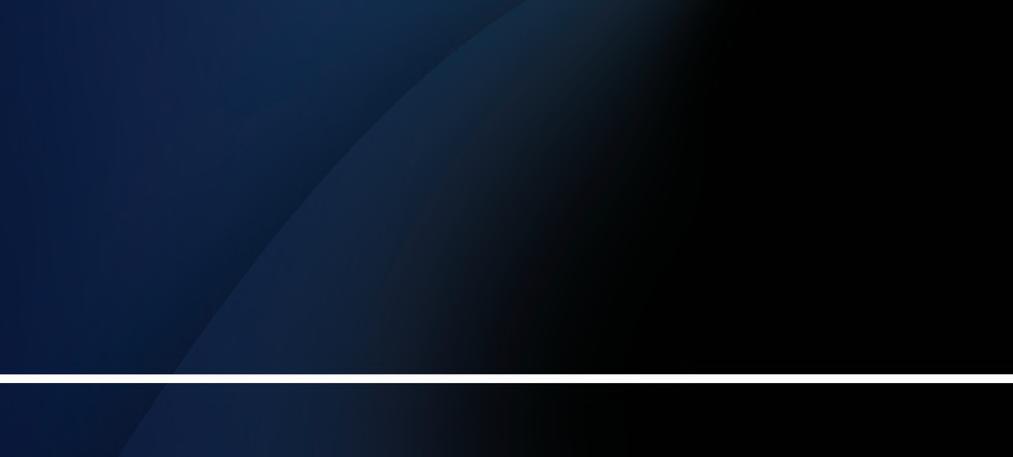
I prefer face-to-face interaction. If it’s a course or seminar, it can be online, but when you’re talking about industry events and conferences, the personal discussions are far better than online. When you’re online, there are often a lot of things that are not discussed. In face-to-face events, you achieve a lot and get lots of meetings done. We came back to industry events last year, and since then, we’ve been attending conferences worldwide, non-stop.
Diego Aguilar, Founder & CSO, E-NAV Offshore
Today, we live in a globalised world. Attending exhibitions and conferences allows us to reach better agreements with suppliers, strengthens the relationship between companies and customers, thereby building alliances with shared experiences, innovations and good practices.
“Germán
Schacht, Business Development & Marketing Manager, ASENAV
“Having face-to-face meetings will always trump meeting people over the internet. In fact, I think that people have lost that sense of personal feeling in recent years. It is extremely important to meet clients and new people face-to-face and stay ahead of industry trends.
Cherif Khoury, Chartering Manager, Blue Fleet Group
Based on my experience, I value faceto-face interaction much more than I value online. Industry events are important to share views, and to put a face to the nameotherwise, you talk a lot to people digitally, but never get to meet them and understand who they are and how they really think. At a recent exhibition that we attended, it was great to share views about the industry’s direction and future challenges. You can’t do that via email, because human conversation is so dynamic. I also think it’s easier to influence key decision-makers when you have the opportunity to see them face-toface and talk to them.
Francesca Trotta, General Manager, Iblea Ship Management

“The maritime industry is a very traditional ecosystem and a lot of what we do is built on personal trust. Meeting customers and potential customers face-to-face gives us the opportunity to discuss what we stand for. It gives us an opportunity to come out of our offices, meet our peers, discuss opportunities and challenges together. The growth we’re seeing is attributable to, the conferences and events we’ve been to and therefore we try to be at all the shipping conferences.
Sanjeev Wewerinke-Singh, Founder and Managing Director, Varuna Marine Services
“
“
When you’re face to face, there’s always that extra opportunity because you’re seeing the face and gaining that extra content from the conversation. Having a cup of coffee together gives you the opportunity for a bit more interaction; it’s much more natural. You can pick up the small details and read the room.
“
Justin Bijenhof, Marine Sales Manager, Wouter Witzel
It’s hugely beneficial because, generally, you learn something you’d never learn from an email or a telephone conversation. When you sit down with people, they tend to relax and open up; conversations are broader. We often mention things when we’re talking to people, and opportunities arise as they realise that we can do various other things – beyond what they’d assumed about our capabilities.
Things tend to come up in conversation and they lead to unexpected opportunities. That’s the great thing about industry events: you get much more open conversations that lead somewhere that both parties can benefit from. Also, selling is about relationships, so it’s important to go and meet people and enhance those relationships.
Mark Phare, Group MD, Teignbridge Propellers
We would love to hear your answers, so send an email over to our Editorial Manager, Phil Nicholls, and share your thoughts with all our readers.
media@insidepublication.com

Event Director Will Maley explains the show to Inside Marine.

Taking place in Detroit on 4-5th October, Silicone Expo USA is the one-stop shop for buying industries to find silicone solutions. One of the organisers, Event Director Will Maley shared with Inside Marine’s Jasmine Lodge what attendees can expect.
Looking ahead to Silicone Expo USA on 4-5th October, what do you see are the benefits to businesses of attending the show?
Attending Silicone Expo USA provides businesses with the opportunity to meet with industry professionals and showcase their products and services. It is an ideal platform for networking and gaining insights on the latest developments and trends in the industry.
How has Silicone Expo USA evolved since the last show? What is new for this year?
Silicone Expo USA has evolved in quite a large way with the addition of our co-located event Tape & Functional Film Expo, following its successful launch in Europe in March 2023. Not only this, but

we are working closely with Visit Detroit to create an immersive experience inside the hall to showcase why Detroit is the perfect host city for the event.
What visitor and exhibitor numbers are you targeting this year?
We’re aiming to have 130+ exhibitors, 90 guest speakers across two conference tracks and 2,000-2,500 attendees visiting. Based on the turnout from our debut European event in Amsterdam, I believe this is an achievable target.
What can visitors expect from their trip to Silicone Expo USA?

Visitors can meet with 130+ exhibitors showcasing their latest silicone technologies and solutions. Our conference also offers a platform of thought leadership, where visitors can benefit from a variety of topics presented by our speakers. This year, we will be incorporating an essence of Detroit within the hall to create a more
Event Director Will Maley explains the show to Inside Marine.

rounded experience. Be sure to grab your self a Coney Island hot dog while enjoying the Motown Band!
What benefits can companies expect to gain from exhibiting at Silicone Expo USA?
Exhibitors can expect to have high level conversations with corporate executives looking to source their bespoke silicone solutions. The beauty of this show is that it is completely dedicated to silicone. People will be in attendance looking to meet new suppliers for their projects.
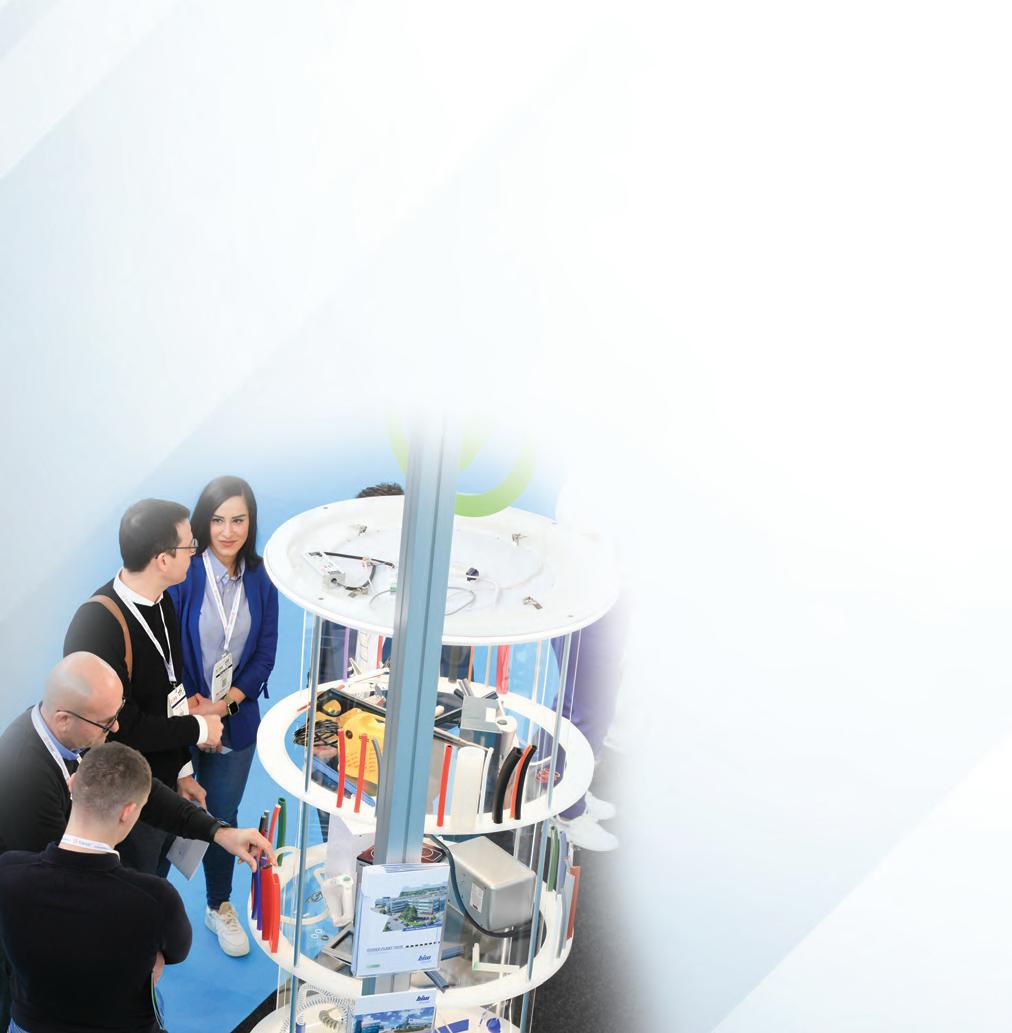
Looking at the companies already booked for Silicone Expo USA, can you share any previews about the trends and developments on display this year?
We have a great line-up of companies already booked for Silicone Expo USA. There seems to be a lot of talk within the industry about the improvement of sustainability throughout all aspects of manufacturing. I think this year we will see new advancements in this space across our conference and exhibition.
Are there any other special aspects of Silicone Expo USA that you would like to include in this feature?
This year, we are planning a giveaway for anyone who registers by mid-September. The details are being finalised, but it involves an exclusive Detroit experience, sponsored by Visit Detroit. Tune into our social media platforms to find out more about this in due course.
untington Place, Detoit, USA 4-5th October, 2023
www.silicone-expo.com

What do you consider to be the main industry challenges the maritime sector faces for the future? How far do events such as Silicone Expo USA go in helping companies overcome such difficulties?
The maritime industry – along with most other industries – faces hurdles within the supply chain. Trade shows, such as Silicone Expo, can offer a bridge between suppliers and buyers looking to network and gain new business opportunities that help to alleviate these issues.
Tell me more about your conference programme: who do you have lined up to speak and what topics are high on the agenda?
We are in the process of building the agenda now with our Call for Speakers programme. We expect more of the same quality from our previous events, with sessions dedicated to manufacturing and new applications. We are pleased to have Dow as our headline sponsor for the conference, as they endeavour to share new information about sustainability within the space.

On a personal level, what aspect of Silicone Expo USA are you most excited about?
As we are a UK based company, we do not see our American representatives as often as we would like. It is always nice to reconnect with people who are passionate about the industry. The team and I have worked tirelessly to deliver a great show. I think we are all excited to see our hard work come to life. n

Christopher Hudson, President of dmg events, explains the show to Inside Marine.

Hosted in Abu Dhabi by ADNOC, and taking place from 2-5 October 2023, ADIPEC is an international platform convening global energy producers, consumers and innovators to accelerate game-changing solutions and transformational progress towards decarbonisation and the future of energy. Christopher Hudson, President of dmg events, organisers of the show, shared with Inside Marine what visitors can expect.
ADIPEC has evolved considerably over the years. Today, we build on our nearly 40year legacy of innovation and evolution with a bolder vision, and stronger purpose to support the energy industry and wider
ecosystem in its efforts to transition towards greater sustainability. Under the overarching theme, ‘Decarbonising. Faster. Together’, ADIPEC 2023 seeks to unite industries to accelerate the urgent action and game-changing solutions needed to decarbonise quicker and future-proof the global energy system.
For four days, ADIPEC will convene some of the brightest minds from across the energy value chain and beyond –including government, private enterprise stakeholders, technology, academia
United Arab Emirates 2-5th October, 2023
www.adipec.com


and finance – to ignite the innovative and disruptive thinking needed to tackle the world’s most pressing energy challenges.
And with ADIPEC 2023 taking place less than two months before the UAE hosts the 28th United Nations Conference of Parties (COP28), our event is uniquely placed to offer a global stage to address some of those critical issues from across the energy ecosystem and focus on moving the needle forward towards securing sustainable energy for all.

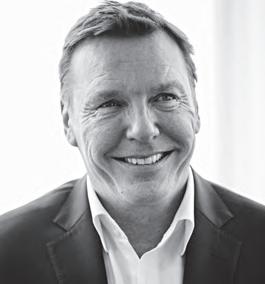

ADIPEC consistently strives to be a force for transformation and leadership, offering a platform for the industry, by the industry. Through continued discussions with key industry stakeholders – including the ADIPEC 2023 Executive Committee – we have iden tified specific challenges the energy industry needs to be advanced, including reducing methane emissions, supporting the decarbonisation of heavy industries and facilitating finance and investment in low-carbon energy and clean technology.
Reflecting this, ADIPEC’s themes and programme have been designed to bring together the ideas, ambition, technology and capital needed to address some of these critical issues and drive energy progress on the path to net zero. They are focused on facilitating collaboration and innovation, to enable diverse actors to unify around a common cause and empower them to share ideas, co-operate and build the momentum needed to create the energy system of the future.
These key industry challenges will be addressed across 10 strategic and technical conferences and more than 350 sessions, where more than 1,600 speakers
United Arab Emirates 2-5th October, 2023
www.adipec.com


will share diverse perspectives and approaches, forge collaborations and explore the strategies and innovations critical to accelerating a cleaner, more secure energy future.
How is ADIPEC responding to industry needs in this rapidly changing and challenging energy environment?
ADIPEC’s central focus on decarbonisation reflects the need for energy and related sectors to reduce their carbon emissions in support of the global energy transition. As part of our commitment to that, we have developed enriched conference and exhibition offerings to enable a secure and sustainable energy future.
This includes the new ADIPEC Decarbonisation Accelerator; a specialised exhibition area that enables organisations to showcase their game-changing projects and solutions driving decarbonisation at scale. Within the Accelerator, a dedicated Start-up hub will host pioneers presenting groundbreaking technologies that drive the future of decarbonisation and accelerate energy progress.
Complementary to that, we have introduced the new Decarbonisation Connect
initiative to facilitate connections on the show floor by showcasing exhibitors’ decarbonisation strategies and innovations through dedicated spaces and presentations. To increase engagement, we are also developing the Decarbonisation Guide, featuring exhibitors' decarbonisation products and solutions and a schedule of exhibitor presentations during the event.
Recognising the importance of the maritime sector – which supports the transportation of 90% of all traded goods –ADIPEC 2023 has broadened its focus on the wider maritime and logistics industries. We have launched a dedicated hall to host our expanded Maritime & Logistics Zone and dedicated Maritime & Logistics Strategic and Technical Conferences. The zone will connect the global maritime and logistics supply chain with leading experts in energy and technology driving lower-carbon solutions while maintaining sustainable

Christopher Hudson, President of dmg events, explains the show to Inside Marine.

growth, while the conferences will gather industry leaders, regulators and decisionmakers from across the shipping and logistics supply chain to engage in technical and strategic dialogue around decarbonisation and digital innovation.
These new offerings, alongside our expanded youth programme, Hydrogen Strategic Conference and all new ADIPEC Awards categories, support the global energy transition by focusing the wider industry’s attention on key needs and issues. Proof of ADIPEC’s responsiveness and relevance to industry’s needs can be seen in the fact that we had our highestever number of submissions for our Technical and Downstream Technical Conferences, and a record number of submissions for our ADIPEC Awards.
What are the top-line issues for energy and energy-related companies this year?

Energy industry volatility, climate change- related commitments, persistent global conflicts, and record levels of inflation are among some of the many challenges currently being faced by the global energy ecosystem. At the same time, energy and its related industries, like manufacturing and transport, face growing pressure to reduce emissions outputs – through improved efficiency and use of cleaner fuels, secure investment for research and development for cleaner products and services, and to ensure the continuity of the company’s commitment to sustainability through training and development of its workforce.
While the issues faced by the energy ecosystem are manifold, as an inclusive platform convening countries, governments and policymakers ADIPEC has created an event programme and setting to enable participants to engage in inclusive dialogue, foster collaboration
Abu Dhabi, United Arab Emirates 2-5th October, 2023
www.adipec.com


and work collectively to find solutions. Some of the timely topics of focus in our conference programme include reinforcing regulatory systems to guide and accelerate emissions reduction, decarbonising end-use and heavy industries to facilitate discussion and resolution, and navigating safety and sustainability for hydrogen.
In the same vein, we have introduced all new ADIPEC Awards categories reflecting topics of importance to a sustainable and inclusive energy transition, like hydrogen, decarbonisation at scale, clean-tech and sustainable energy for the developing world. Like previous editions, the awards focus on celebrating the pioneers in industry who are implementing the projects and programmes that are helping to scale up, innovate, and support the changes needed in the energy sector and beyond.
What can visitors expect to see on the show floor at ADIPEC 2023?
More than 2,200 companies from across the entire energy value chain will exhibit at ADIPEC’s 15 exhibition halls, which include four specialised exhibition areas – the Decarbonisation Accelerator, Maritime & Logistics Zone, Digitalisation in Energy Zone, and Manufacturing & Industrialisation
Exhibition & Conference. Additionally, the 30 dedicated country pavilions at ADIPEC 2023 will highlight each country’s latest innovations and best practices, offering a platform for global collaboration and innovation.
ADIPEC’s strategic conference programmes have been curated to focus on important topics like hydrogen, decarbonisation, manufacturing and industrialisation, diversity, equity and inclusion (DEI), and the development of future leaders. The technical conference programme has been designed to demonstrate cutting-edge technical and engineering insights that will drive ideas, overcome challenges, create new value and highlight innovation. n
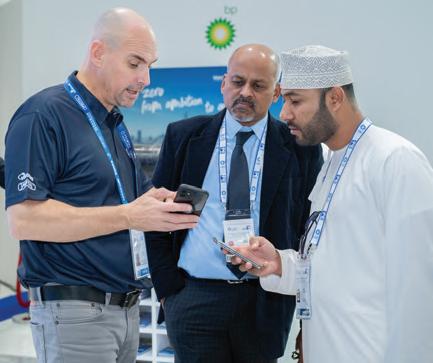
Director Europort Raymond Siliakus answered questions for Inside Marine

Held in Rotterdam on 7-10 November, Europort 2023 is the international maritime meeting place for innovative technology and complex shipbuilding. Director Europort Raymond Siliakus offered Inside Marine an insight into what visitors will experience at the show.

With Europort coming up on 7-10 November 2023, what would you say are the advantages for companies attending the show?
For many decades, Europort has been the exhibition and meeting place where the industry gets together to connect, cooperate and innovate. Europort is held in Rotterdam, the Maritime Capital of Europe, and one of the leading maritime cities in the world. Within a range of 200 kilometres, Europe’s largest ports, offshore and dredging contractors, superyacht builders and shipyards are active, working closely together with high-level research centres, equipment suppliers and numerous ship owners. And every two years these stakeholders come together at Europort along with visitors from all over the world. Therefore, it is safe to say that Europort belongs to the world’s largest maritime meeting and knowledge-sharing B2B platforms.
Rotterdam Ahoy
7-10th November, 2023
www.europort.nl


Last time, we were very fortunate that Europort could take place despite Covid. However, there were still some travel restrictions, mainly from continents other than Europe. Nevertheless, we had a very successful event, with many satisfied visitors and exhibitors. This year, we see that Europort's appeal extends again beyond Europe, with the return of the Chinese and South Korean pavilions, for example. In addition, we see that the world is changing even faster with all the digital developments and the emergence of AI. Hence this year, for the first time, we have a Digitalisation Area where frontrunners in digital transition and smart connectivity are concentrated and can get visitors connected most effectively.
How many exhibitors and visitors are you expecting this year?


This edition, we will again aim to make the best use of all available space in Rotterdam Ahoy. That means we can expect more than 1,000 exhibiting companies and approximately 25.000 professional visitors. Looking at the current status of the floor plan, we are well on our way to achieving this goal!
What might a visitor expect from a trip to Europort?
A trip to Europort promises a diverse and enriching experience for visitors, with exhibitors showcasing the latest products, technologies and services. Visitors can witness the latest advancements in automation, digitalisation, sustainable solutions and other transformative technologies that are shaping the industry's future.
Europort not only focuses on the professional aspects, but also offers a social side that enhances the overall experience for visitors. Europort organises various social events, receptions and networking

Director Europort Raymond Siliakus answered questions for Inside Marine gatherings, offering attendees a chance to relax, socialise and engage in informal discussions.
Overall, a trip to Europort provides an excellent opportunity to explore the latest trends, forge new connections and gain insights into the maritime and offshore industry while enjoying the vibrant atmosphere of Rotterdam.
What are the benefits of attending Europort as an exhibitor?
Europort belongs to the world’s largest maritime exhibitions and, as such, attracts a highly focused international audience of industry professionals, including shipbuilders, shipowners, equipment manufacturers, suppliers and service providers. This focused environment ensures that companies can engage with relevant stakeholders and potential customers. It allows maritime companies to showcase their products, solutions and expertise to an international audience.
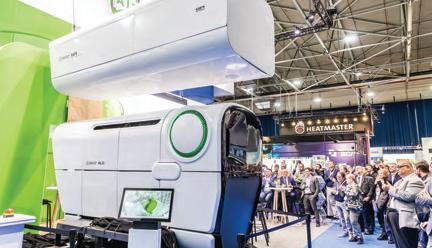
Can you offer any predictions about new technology and developments for the maritime industry among the companies exhibiting this year?
Digitalisation will have a growing impact in all aspects of shipping and vessel technology. Ongoing digital innovations will help to counter major industry challenges in the field of energy efficiency, reducing the carbon footprint, cyber security and smart use of scarce human resources –especially with the disruptive revolution of Artificial Intelligence, of which I believe we have only seen the beginning.
In what ways do events like Europort help companies overcome challenges in the maritime industry?
Europort brings together industry professionals, experts and thought leaders from around the world. Through conferences, seminars and workshops, attendees can exchange knowledge, share experiences and discuss challenges and solutions. This knowledge exchange enables companies to gain valuable insights into emerging trends, best practices and innovative approaches, helping them tackle industry challenges more effectively.
Furthermore, events like Europort offer a comprehensive overview of the current state and future direction of the maritime
Rotterdam Ahoy
7-10th November, 2023
www.europort.nl

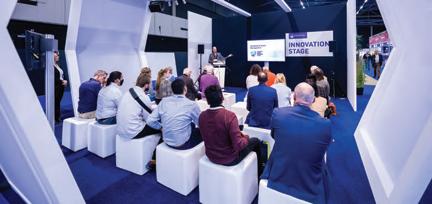
industry. Through keynote speeches, panel discussions and presentations, companies and visitors gain insights into market trends, regulatory developments and emerging challenges. This knowledge equips companies with the necessary information to adapt their strategies, identify potential risks and seize opportunities in a rapidly evolving industry landscape.
What part of Europort are you personally looking forward to the most?
The beauty of exhibitions in general is that they truly connect people and cultures from all over the world. In a world that becomes more and more divided and polarised, exhibitions play a fundamental role in literally bringing people together.
Exhibitions focus on opportunities and cooperation, on mutual ambitions, shared values, and synergy. This certainly applies to Europort where industry peers from more than 90 countries are expected to get together to connect, cooperate and innovate.

What can visitors expect from this year’s conference programme?
We have defined four key topics to lead the Europort 2023 agenda: Energy Transition, Digitalisation, Ship Finance and Human Capital. These themes will be deeply explored in the exhibition and during the many conferences, innovation pitches and networking events. Europort offers an exceptionally in-depth programme in close cooperation with national and international industry partners, innovators and pioneers. And it will be fun too, with plenty of occasions to make the trip enjoyable and memorable.
Is there anything not covered so far that you would like to share with our readers?
Yes: visitors should make sure they get inspired by young entrepreneurs and their visions. It is crucial that everyone visits the Rising Stars Pavilion, where a selection of 21 promising start-ups will showcase the newest insights. n
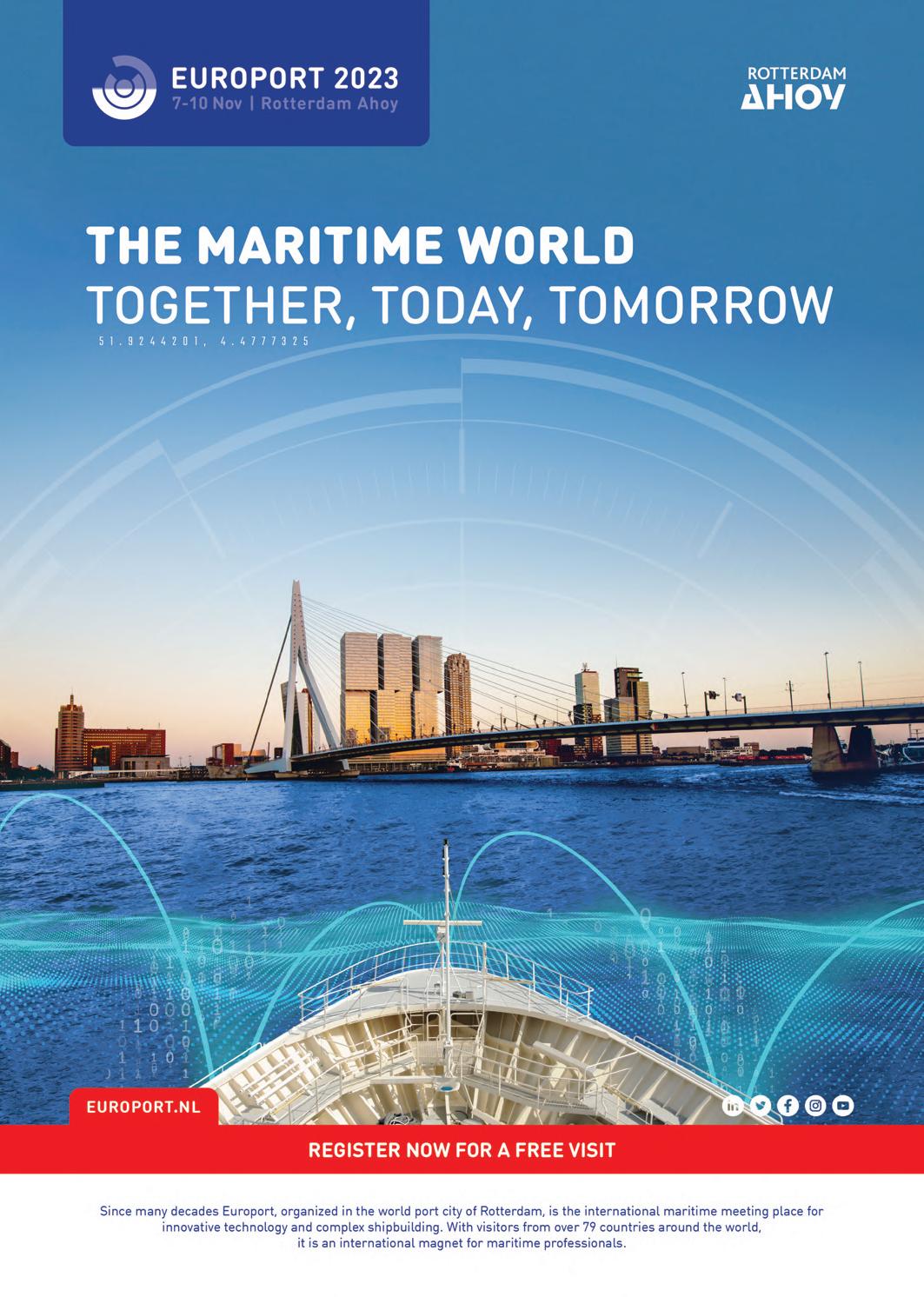


Marketing & Media Director Leslie Meredith previewed the event for Inside Marine
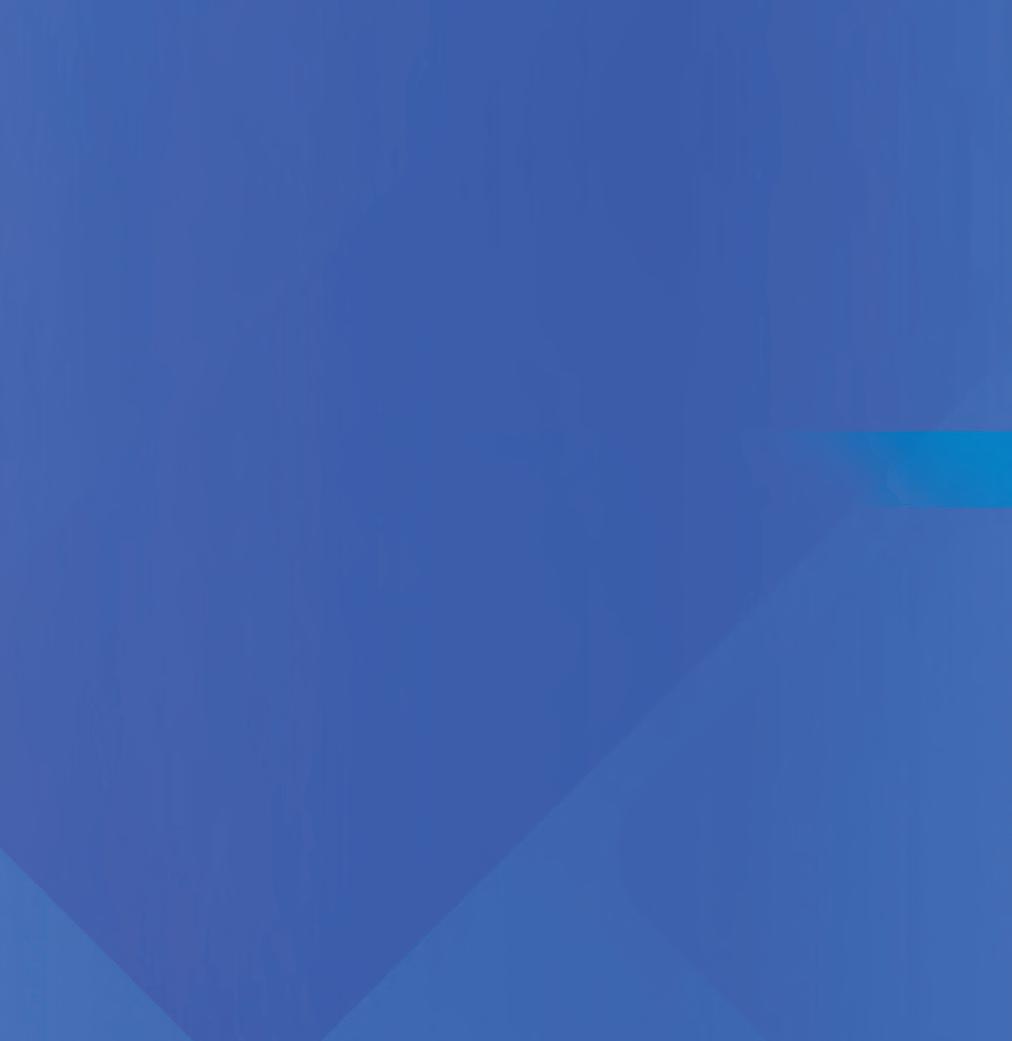
Running from 26th to 28th September in Houston, Breakbulk Americas is the only exhibition devoted to the project cargo and breakbulk industry in the Americas. Marketing & Media Director Leslie Meredith summarised the Breakbulk Americas experience for Inside Marine. Questions by Jasmine Lodge.
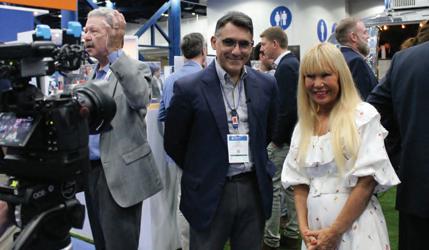

How has Breakbulk Americas evolved over the years?
The event has a long and rich history spanning more than 30 years, beginning when containerization was first introduced. At the same time, modularization – building huge components like drilling rigs in pieces where manufacturing was cheaper and then assembling them at the jobsite – opened new transportation opportunities, leading to what has become a major part of the transport and logistics of project cargo.
It is not unusual to see components manufactured in multiple countries and then shipped separately to the project’s location.
The complexity and unique aspects of every job demand expertise from all people involved in a project including the project owner and EPCs, the global forwarders, spe cialized transporters, ports, equipment providers, and related service providers. This evolving and ever more complex supply chain is represented at Breakbulk Americas.
What can visitors expect from their trip to Breakbulk Americas?
Nowhere else will you find the variety of companies that are on the exhibition floor and walking the aisles. Last year, 2,240 companies were represented from

59 countries, united in a common purpose: to renew business relationships and make new ones. Everyone is looking for business, but they all know business starts with relationships.
In addition to exceptional networking, participants can enjoy the Main Stage sessions scheduled for Wednesday and Thursday. In the early days, most sessions focused on handling traditional breakbulk cargo, but today you’ll find a wider variety of topics –from project outlooks by sector and region

to sustainability, new regulations, and digi talization – factors that impact the cost and efficiency of project development.
What visitor numbers are you targeting this year?
We learned during Covid that we could get our work done remotely, over email or a video call. We also learned there was no replacement for face-to-face interaction. In fact, Breakbulk Americas attendance
Marketing & Media Director Leslie Meredith previewed the event for Inside Marine

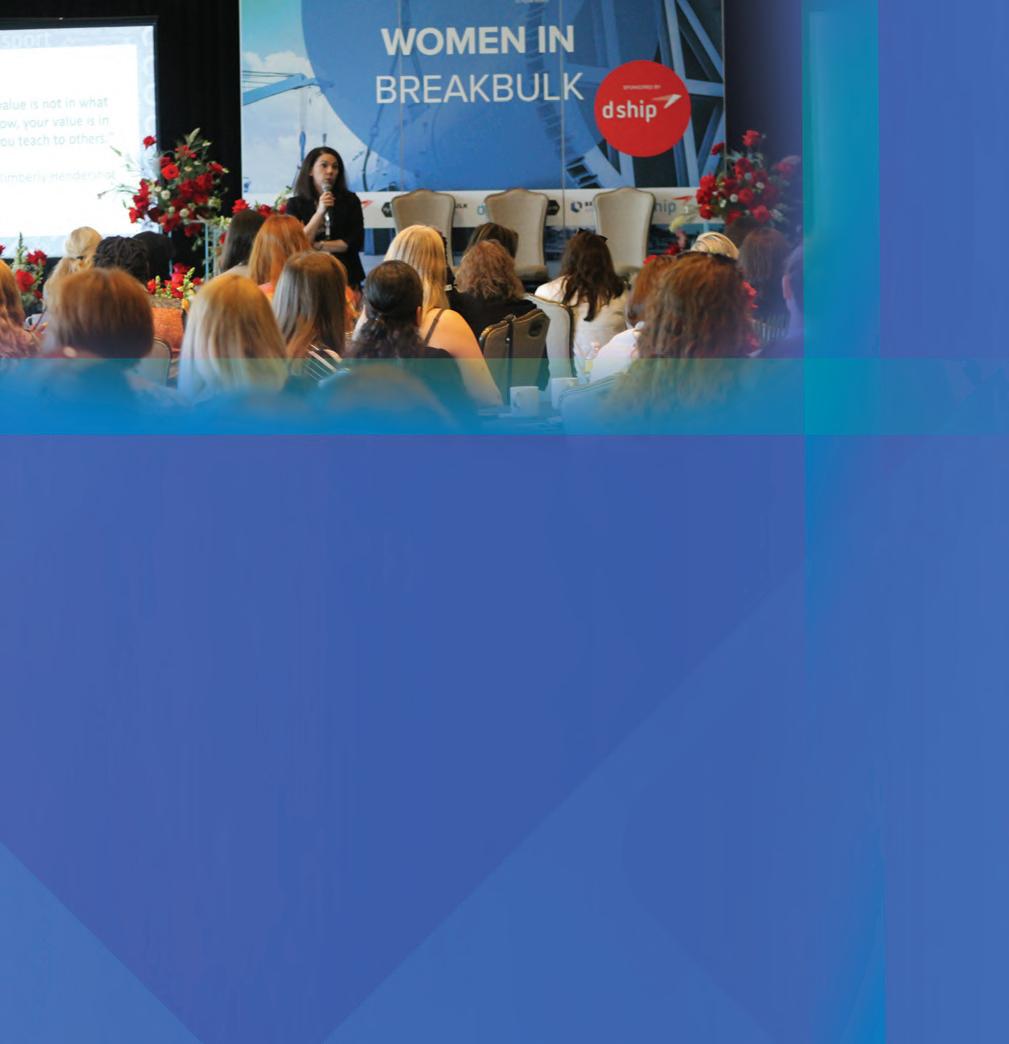
surged 39 percent in 2022 compared with 2019, due to the enthusiasm for meeting again in person. There is not a more efficient way to network with reputable industry companies than over the course of two-and-a half days at the George R Brown Convention Center in Houston. More than 5,000 visitors are expected at this year’s event.
Are there any special aspects of Breakbulk Americas that you would like to include in this feature?
Breakbulk Americas sets itself apart with two special programs: one for cargo owners who are the decision-makers when it comes
to new project contracts, and Education Day, designed to attract university students into the business of project cargo.
Our Breakbulk Global Shipper Network includes members from the world’s largest energy companies, EPCs, industrial manufacturers, and mining and metals firms. Houston is home to many of these companies, making Breakbulk Americas the top event for BGSN members.
At the other end of the spectrum are students who are interested in joining the industry. For more than 15 years Education Day has provided a solid introduction to the world of project cargo, and given students a chance to meet executives from different sectors – for some,
Houston, USA
6-28th September, 2023
americas.breakbulk.com


Education Day has led to a career filled with challenges and travel. This year we expect to host about 200 students from schools throughout the region.
What do you have planned for the conference agenda at Breakbulk Americas?
This year’s program features a ‘double header’ with an industry sector review of mining, oil and gas, renewables and manufacturing, followed by a panel that will discuss the readiness of the breakbulk sector to respond to shifts in demand and services for these four types of projects. We will also do a deep dive into projects across Latin America, as well as new projects that will revitalize the Gulf of Mexico as we move further into the energy transition.
One of the most exciting things we see at Breakbulk, is the spontaneous formation of industry work groups following a panel discussion. These groups tackle challenges that came to light during the panel, and then come back to the stage to report their progress along with industry developments. At Breakbulk Americas, last year’s air cargo solutions group featuring CargoLive, Airbus, and Antonov will return to the stage this fall. Breakbulk is more than just an event, it is a catalyst for industry solutions.
Alongside the formal aspects of Breakbulk Americas, how are you supporting the more social side of the event?
We also recognize that casual networking can be just as important as scheduled meetings. All participants are invited to Tuesday’s Welcome Reception on the show floor, followed by an after-party at The Rustic, sponsored by Port of Houston. d-ship Carriers will host the annual Women in Breakbulk breakfast at the Marriott on Wednesday morning to give female attendees the opportunity to make new connections and discuss career issues.
From Tuesday until Thursday, participants will have the full Breakbulk experience: friendly networking, exceptional business insights, and the opportunity to be a part of the industry’s original Breakbulk event. n



seven seas, five oceans, one voice
An introduction to specialist support vessels, with a special report, news and a photo feature, followed by the company profiles for: tideman boats us rem offshore e-nav offshore tug malta tor group
An overview of how the National Oceanography Centre conducts research cruises

Jon Short, Senior Project Manager at the National Marine Facilities, National Oceanography Centre (NOC), and Helen Oldridge, Head of Scientific Engineering, lead teams of highly skilled technicians on board NOC’s fleet to fulfil science research missions efficiently and optimally.
The National Marine Facilities (NMF) operates two world class, multidisciplinary, deep ocean research vessels, RRS James Cook and RRS Discovery, alongside the National Marine Equipment Pool (NMEP) to deliver the UK marine science programme, which supports a world effort to better understand our ocean.
Modern research projects are rarely single nation affairs, with participants joining from institutions around the world, and collaborations with international partners increasingly the norm. This was
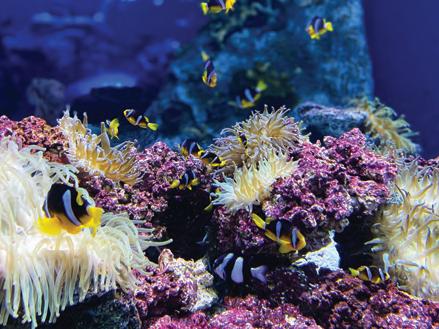
particularly evident during Covid-19, where, after a brief pause in 2020, most research programmes resumed with a focus on the recovery of data and deployed assets between research vessel operators. Fast-forward to 2023: normal service has resumed with NMEP equipment and technicians deployed globally, and the research vessels operating in four of the five oceans this year.
Oceanography covers a vast range of research areas, each asking different qu es tions and so requiring different data and methods of collection. A multidisciplinary cruise requires a range of different platforms, instrumentation and equipment from the NMEP that spans the range of engineering disciplines, skills and experience to deliver. NMF’s mission is to do just that. Four groups converge to ensure the success of research cruises. The Programme Management team create the schedule for the RRS James Cook and RRS Discovery, alongside managing each

individual research cruise within the programme. Research Ship Operations comprises the mariners and base support staff delivering the day-to-day operation of the research vessels.
The Scientific Engineering team is responsible for the maintenance and operation of equipment within the NMEP. Finally, the marine autonomous and robotic systems (MARS) team is responsible for the maintenance and operation of the autonomous platforms requested by the scientific team.
Producing the marine facilities programme is a complex process that must consider the geographic, temporal, and technical requirements of funded projects whilst minimising ‘passage legs’ (periods where a ship is transiting between two locations without carrying out a science project) to maximise the efficiency and capacity of the programme. This efficiency gives the maximum ‘science bang per carbon buck’ and helps deliver carbon emissions targets.
The project manager forms the bridge between the technical and scientific teams, ensuring the right person and equipment is in the right place at the right time to collect the data.
When a project manager is assigned, their first task is to meet with the Chief Scientist (CS) to review and discuss their original application. These may often have been submitted several years beforehand and the objectives may have evolved along with the technology available to support them. They revisit the simple but key question: ‘what are you trying to achieve?’
Of course, everyone wants more than the time, budget, equipment, deck space or berth limitations allow, so the project manager’s task is to find the best combination of equipment and skills to meet the aim.
As with most projects, the execution rarely looks exactly like the first draft of the plan, with complications inevitable such as diplomatic clearance delays, freight issues, supplier lead times and technician availability. These are mitigated firstly through an early and iterative planning process; but mostly by making sure the cruise priorities across the full programme year are understood, so an action to assure a positive result for one project does not have unintended negative consequences on another.
The assembly of the correct technical team onboard is arguably the most telling factor of cruise success. This requires
An
overview of


a del icate balance, so that the operations can be carried out safely and adhering to the relevant working time directives, but also keep as many onboard berths as possible free for the science party.
Consideration is also given to ensure that the team, drawn from multiple engineering disciplines, have complementary skills. A decision is taken assigning the Senior or Lead technician role, who then assumes overall responsibility for the NMF-supplied equipment and personnel onboard.
The project manager attends the mobilisation, assuming the responsibility for commissioning the requested equipment onboard the vessel. They liaise closely with the Captain and the Chief Officer to make sure that the ship’s staff know what is
required of them and that all operations are carried out safely and efficiently.
This can be a complex operation – often involving local contractors – to bring large pieces of plant equipment on board the vessel. To this end the PM will produce a ‘port programme’; a document that details all of the mobilisation operation with an accurate timetable.
The vessel will sail on the research cruise once the Captain of the vessel is happy that everything is secure and safe for going to sea and the PM and Chief Scientist are happy that all of the science gathering equipment is working.
While the ship is performing the science, the PM will prepare for the demobilisation. This is the reverse of the mobilisation and

includes liaising with appointed ships’ agents and local customs to prepare any freight that urgently needs to come back to the NOC – this is minimised however, to limit carbon and financial costs.
Change is coming: not necessarily in what science is done, but in how it is achieved. Fossil fuelled shipping has a high carbon output, with emerging low-carbon fuels having lower energy density. Therefore, the next generation of research vessels are likely to accommodate fewer personnel as the space required to hold fuel increases by two to three times, impacting marine, technical and scientific teams.
With the emergence of LEO satellite connectivity bringing reliable, high speed, low latency internet connection at sea, the opportunity for remote participation increases significantly. By streaming data in real or near real time, scientific teams ashore can actively participate in cruises.
Similarly for technical support, live participation from ashore in terms of fault finding, and even remote operation, becomes more feasible. Over the next few years, this type of scientific and technical participation will be explored to find what can be achieved safely, without impacting the quality of
science delivery. This will be a cultural shift, working on the principle that ‘if your job is working on a computer, then you should be doing it ashore.’
As we move towards Future Marine Research Infrastructure, data collection that can be done effectively using autonomy –that is currently done using the vessels – will gradually transition to these platforms as the fleet and capability expands. This leaves the vessels to be prioritised for the data collection that cannot be done using autonomy.
In this +Ship model, the first question is ‘can this be achieved using an autonomous platform?’ Autonomy is not the silver bullet for decarbonising marine research, but it is an important capability that allows the ves sels to be prioritised for the research that genuinely requires world class, multidisciplinary, deep ocean research vessels for the foreseeable future. n


Workboats has announced the sale of a new 15m ProZero vessel to Nord University in Norway. This acquisition marks a significant milestone for Nord University's commitment to expanding and enhancing its research capabilities within the blue sector.
The 15m ProZero workboat will provide researchers and students with improved opportunities to expand and advance their studies. It is expected to contribute to technological progress, empowering students and researchers to engage in high-quality teaching and research activities.
This acquisition is part of Nord University’s historic investment in the blue sector. With the ongoing construction of the Blått bygg campus in Bodø, set to accommodate the Faculty of Biosciences and Aquaculture from the fall of 2024, and the recent christening of the coastal research vessel
‘Prinsesse Ingrid Alexandra’ (PIA) in April 2023, this new vessel represents another significant addition to Nord University’s marine infrastructure.
According to Skipper Morten Krogstad, the new 15m Prospero Workboat is a clear improvement that complements the
existing fleet. He emphasised that Nord University's campus in Bodø is now the ideal place to study marine and fisheries sciences.
The ProZero 15m vessel represents an advanced maritime solution, designed with versatility and efficiency in mind for various marine applications. Constructed using high-quality composite materials, it ensures durability and longevity while meeting regulatory standards.
The vessel incorporates robust features for enhanced functionality and protection, including large fender lists for docking and mooring operations. Its interior and exterior are set up to meet the university’s specific needs in regards of equipment, such as winches and cranes to handle water and seabed samples, and the layout is configured to ensure the best possible workflow when students are on board. n
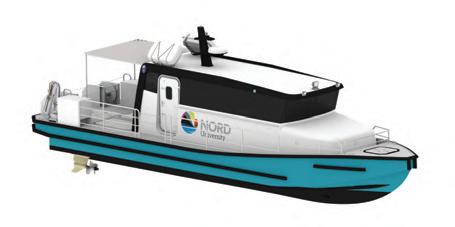

North Star’s second hybrid-propulsion service operation vessel (SOV) is set to be mobilised three months earlier than planned to support SSE Renewables with a new scope of work at the Dogger Bank Wind Farm.
The first of the firm’s new offshore wind fleet, the Grampian Tyne, was blessed in June at an event held at the Dogger Bank O&M base in Port of Tyne. The second SOV, the Grampian Derwent, (which is a larger ship with increased accommodation capacity and helideck), has recently been delivered to North Star in Vietnam.
The new award with SSE Renewables will see the UK’s leading infrastructure vessel support firm aiding the construction and commissioning stage at the initial phase of the wind farm’s development, located
130km off the Yorkshire coast. This will allow the ships to then dovetail straight into scheduled long-term charters to carry out operations and maintenance (O&M) related in-field vessel activities for the development partners. The wind farm is a joint venture between SSE Renewables (40%), Equinor (40%) and Vårgrønn (20%).
North Star has a proven track record of successfully building multiple vessels simultaneously on time and on budget. The 135-year-old business also has a robust £127 million finance package in place to fund its Dogger Bank SOV fleet newbuild programme, which will result in four of its hybrid-electric ships being operational in field by 2026; each on a 10-year minimum term charter agreement. n

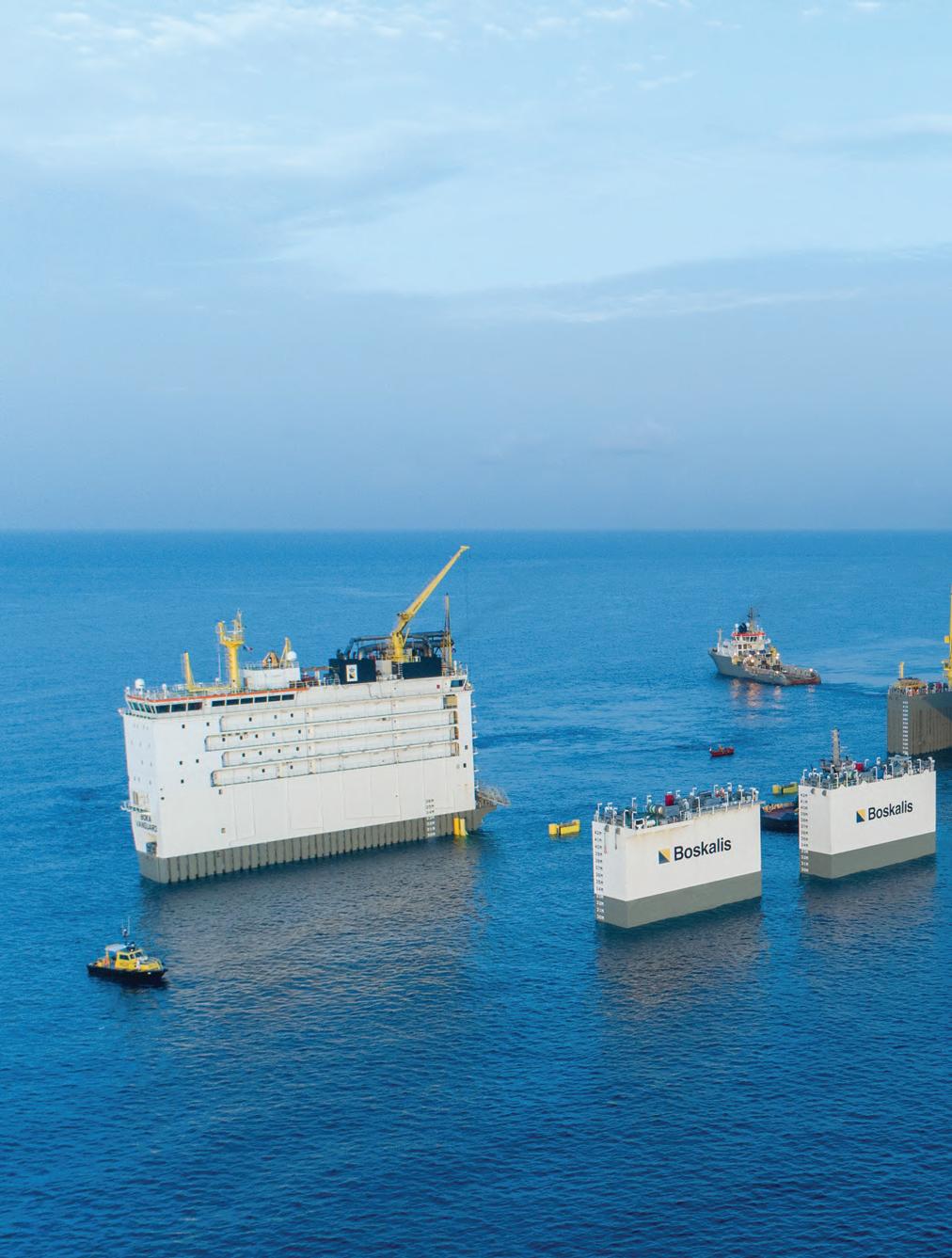
This stunning photo (copyright Boskalis) shows the BOKA Vanguard loading the Carnival Vista, attended by a small fleet of support vessels. BOKA Vanguard is a state-of-the-art semi-submersible heavy-lift ship, owned and operated by Dockwise BV. For
mething interesting to show the business world? We are always looking for beautiful and interesting visuals of ducts, innovations, buildings and technology. Get in touch and start promoting your company to the global market. media@insidepublication.com


Tideman Boats US manufacturers high speed, virtually indestructible, HDPE hulls and other marine components for the North American marine market. It is an offshoot of Tideman Boats, the Dutch company pioneered by Bruno Tideman. The vessels manufactured by Tideman are especially beneficial in shallow waters and rocky coastlines. Hannah Barnett spoke with Sales and Business Development Manager Matt O’Sullivan to learn more.
The distinguishing feature of Tideman Boats US is summed up by four letters, HDPE: the company fabricates hulls in this durable, lightweight, high-density polyethylene material.
Sales and Business Development Manager Matt O’Sullivan extolled the virtues of working with HDPE: “The material has been used in boat building for decades. It’s very sound for welding and is sledgehammer – impact tough. It’s in a class of its own.”
HDPE means low maintenance, no bottom paint, less dense than water and virtually indestructible.
Bruno Tideman, founder of the Dutch company Tideman Boats BV, discovered the use of HDPE while working as an aluminium boat builder. For years, he tested it out, proved it and never looked back.

Bruno explored bringing Tideman to the North American market in early 2021. By February 2022, after forming a joint venture with Yacht Eco, LLC, an innovative partner, and United Plastic Fabricating (UPF), a thermoplastic fabrication company with over 35 years in the industry, Tideman Boats US was born.
“A perfect match bringing UPF and Tideman Boats BV together to form Tideman Boats US,” Mr O’Sullivan reflected. “It’s been excellent partnering with Bruno and his experience, bringing the pioneering legacy built in Europe onwards into North America. Equally important is the strategic investment and plastic fabrication expertise UPF brings to the table, as the majority owner of the Tideman Boats US joint venture and the sole supplier of the Tideman hulls.”
One key element separating Tideman Boats US from its Dutch roots is that this operation focuses specifically on the fabrication of bare hulls. This means the
“THE PRODUCTION OF HDPE USES 1/5 OF THE CARBON FOOTPRINT THAT ALUMINIUM DOES.
IT’S ALSO 100 PERCENT RECYCLABLE: NO WASTE ”
com pany partners directly with boat builders all over North America, from its two fabrication facilities in Wisconsin and Florida. Tideman hulls are manufactured in UPF’s facilities, by leading experts in thermoplastic design and fabrication.
“We are part of the supply chain,” Mr O’Sullivan explained. “So instead of being the boat builder, we are supplying a part of the boat, the bare hull. The boat builders take our HDPE hull and perform the vessel outfitting, the aluminium work, rig propulsion, marine electronics et cetera, then deliver the boats to their customers. Most often an HDPE hull with aluminium outfitting above deck: the best of both worlds.

“We chose not to compete against the existing boat builders, but rather to partner alongside, offering aluminium and fiberglass boat builders a Tideman HDPE hull to work with and supply their customer’s demand.”
When it comes to partners,
Mr O’Sullivan acknowledged a few including Metal Shark in Louisiana, Waypoint Marine in Massachusetts and LMM Boats in Washington State. He also referenced partners in Florida, North Carolina and Canada as part of the expanding network.
“We want boat builders to order our hull like they would a Yamaha or Mercury outboard,” he continued. “We’re part of the
supply chain and deliver hulls fast. Our own supply chain and labour is both simple and has depth. We use Rochling HPDE and have over 100 welders on staff.
Bruno Tideman’s vision was to build a safe and robust work boat that would last. So the company’s signature vessel, the RBB (Rigid Buoyancy Boat) is built for exactly that.
“The Tideman RBB hulls are designed for utility and performance on the water,” explained Mr O’Sullivan. “The material itself is less dense than water (it floats) and exhibits zero corrosion, coupled with
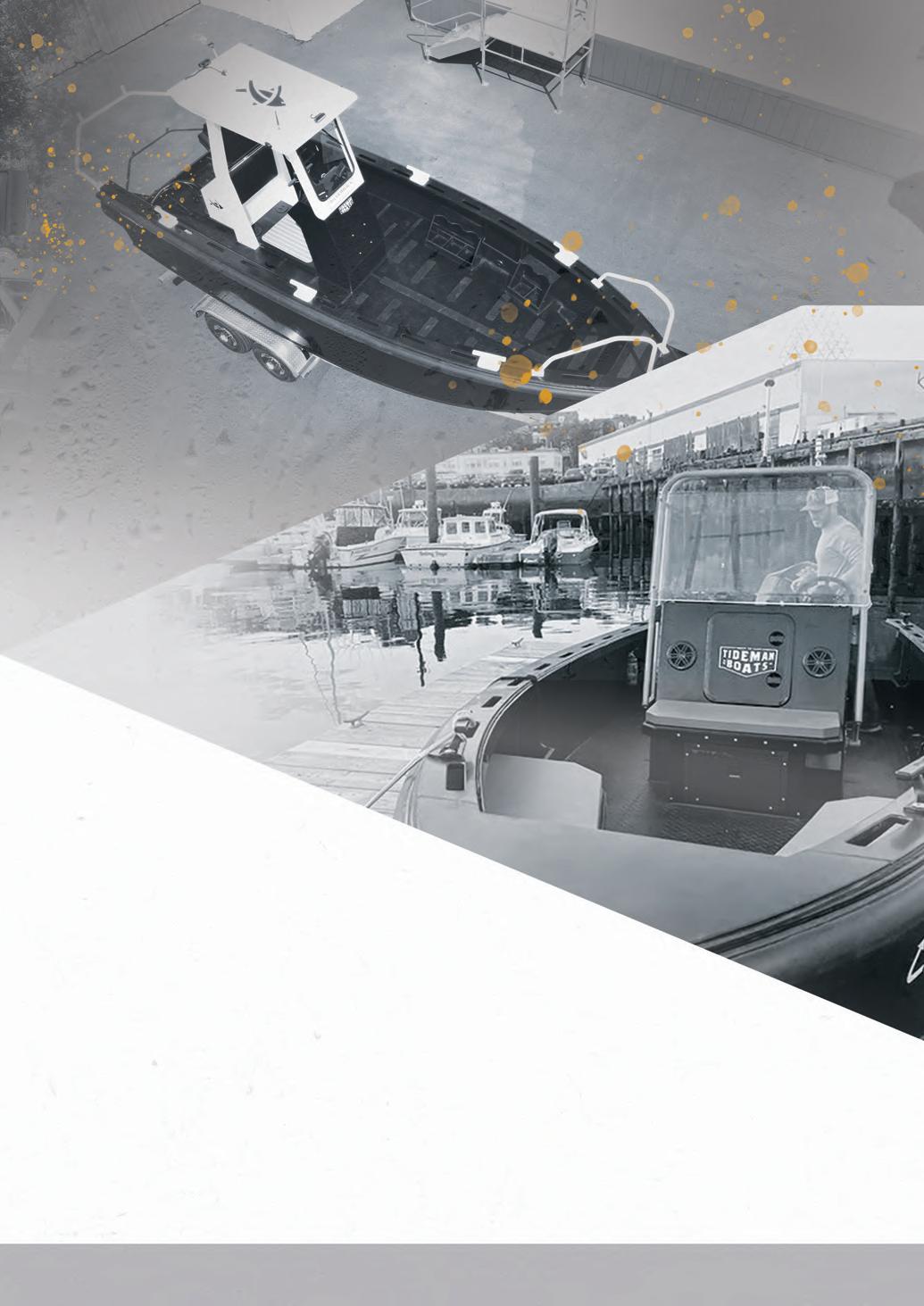
versatile aluminium outfitting above deck, creating an outstanding vessel overall.
Additionally, the environmental sustainability of HDPE is a significant selling point for the future. According to Mr O’Sullivan, the production of HDPE uses 1/5 of the carbon footprint that aluminium does: “It’s also 100 percent recyclable: no waste. ”

Tideman Boats US is in a good position to provide the material and labour for hulls in North America. The company delivered its first RBB 700 hull for a boat that went to Hawaii last year. Another RBC 900 hull went to a workboat delivered to California. There were a handful of other RBB hull sales last year, as well as building a few custom marine vessels, including a project completed for General Dynamics.
“Partnering with Metal Shark has been very significant for us,” said Mr O’Sullivan. “They are one of the best boat builders in the world. We’re excited to recognise the synergy. The best workboats and patrol boats in the future will combine aluminium and HDPE, once customers in North American understand the benefits.”
Going forward, the company is overcoming obstacles and offering its innovative HDPE materials to the wider market.
“One challenge is getting the material widely recognised,” said Mr O’Sullivan. “People are beginning to understand that it works, is safe and reliable. We have so much interest in this product, and everybody recognises how cool and innovative it is.
But it’s also new to North America. We are about 10 years behind Europe on this front.
Part of the company’s quest for wider recognition will come from classification by regulatory bodies. Mr O’Sullivan highlighted the United States Coast Guard and the American Bureau of Shipping (ABS) as entities that can help bring HDPE to the mainstream. “DNV in Europe now recognises HDPE, having put it into their small craft rules in 2022,” he said. “We need more support in the US to recognise HDPE as a viable and safe material for hull building, and to have HDPE take its seat at the table with steel, aluminium, and fiberglass.”
The other exciting development around the corner for this innovative and everevolving company is that Tideman Boats US will soon be called Tideman Marine.

“This is something we’re all excited about,” revealed Mr O’Sullivan. “It focuses on the fact that Tideman builds hulls in North America: our RBB bare hulls, custom hulls and vessels, and other innovative marine components as the industry grows.”
There is no doubt that Mr O’Sullivan is highly passionate about the HDPE hull technology and the strategic growth opportunity, and he has the industry experience to back it up.
“It's a privilege to build on Bruno’s legacy in Europe here in North America,” he concluded. “It’s remarkable to consider what is happening within the industry. The innovation of utilising HDPE f or marine vessels, the simplicity of it, the way we can utilise this material and wha t it brings to the industry is truly gamechanging. These are boats that don't dent. They don't need bottom paint. They perform incredibly on the water, resisting impact, lowering fatigue. It's a revolution of the industry. I am pleased to be a part of that.”
n


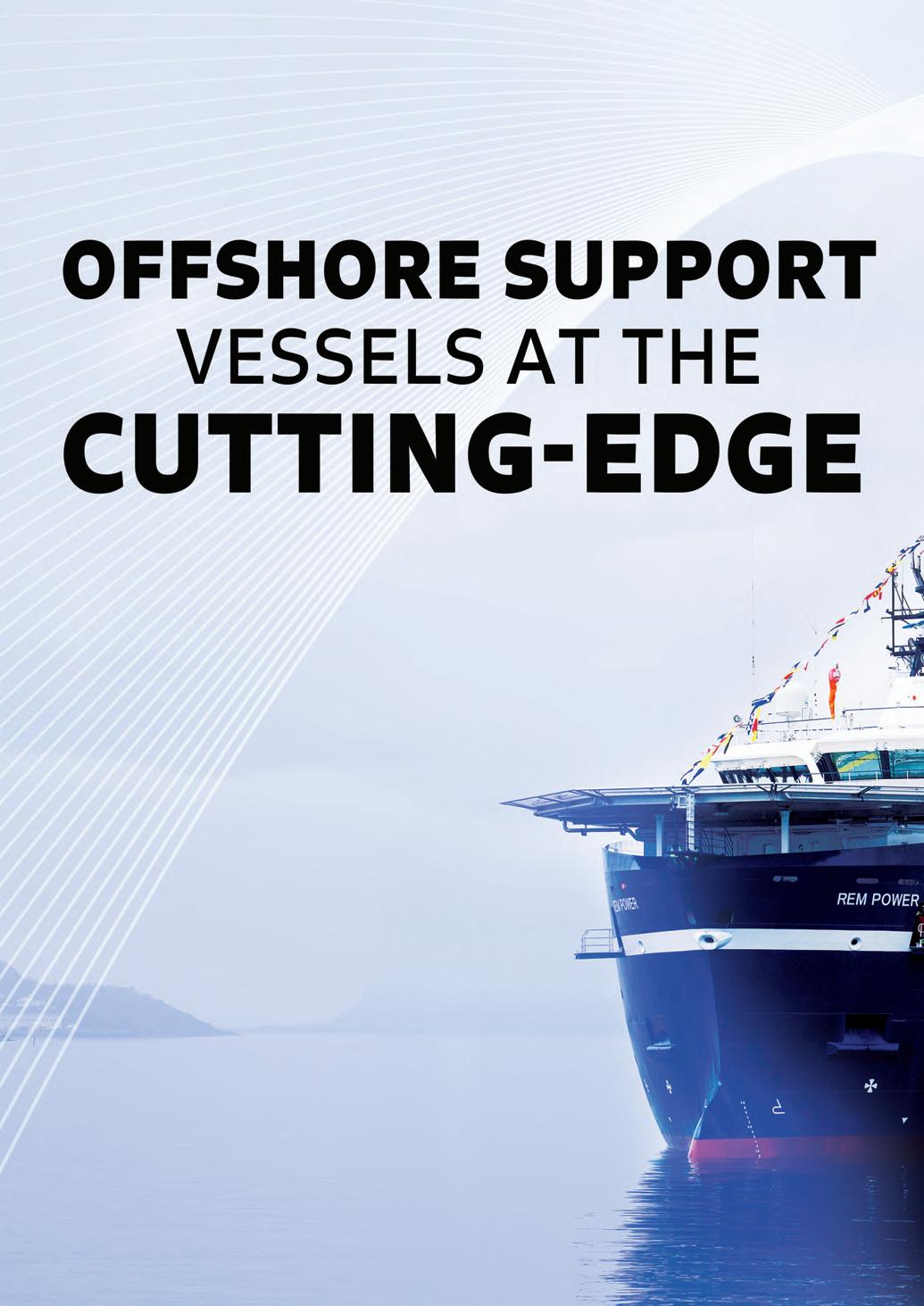
Rem Offshore is a new company with older roots. Since beginning operations in 1978 in service of the Norwegian fishing industry, the fleet today provides offshore support vessels worldwide, with a main office in Fosnavåg, on the west coast of Norway. Ronny Pål Kvalsvik, CCO, explained to Hannah Barnett more about what the company does.
Rem Offshore prides itself in being a pioneer in several different offshore markets, while continuing to build its presence throughout the industry.
The company’s fleet is built up with well-known designs bought on the market. With a new build recently added and another due next year, Rem Offshore is expanding to include high-specification vessels fitted with cutting-edge technical capabilities.
Strong partnerships 2023 has already been a good year for Rem Offshore. It has signed contracts for several PSVs, established on market terms. This ensures that the company will

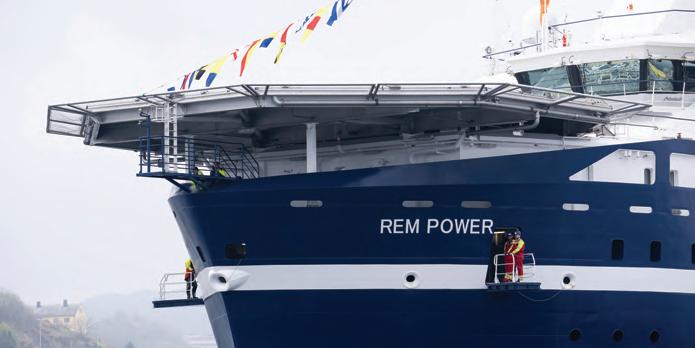
maintain high fleet utilisation during the next year.
These include contracts for Rem Cetus and Rem Insula, which were extended for one year with Apache North Sea Limited in the UK sector, and the company values this continuing relationship.
“We have been working with Apache for a while,” Ronny Pål Kvalsvik, CCO, said. “The contract extensions show trust in our organisation and satisfaction with the performance of our vessels. We have had several contracts with the company and this is one of our key customers in the UK market.”
At the same time, Rem Arctic has been awarded contracts with Well Expertise (DNO Norge ASA and Wellesley Petroleum AS) supporting Deepsea Yantai and Neptune Energy. Rem Commander has been awarded a 14-well plug and abandonment contract with Spirit Energy North Sea Oil Limited, which is estimated to last ten months.
It is clear that Rem Offshore is reaping the benefits of multiple closely forged ties with its partnership network. “It’s aways good when you have a track record working



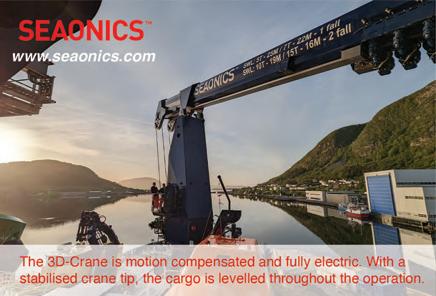

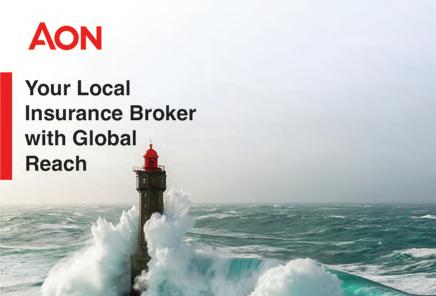



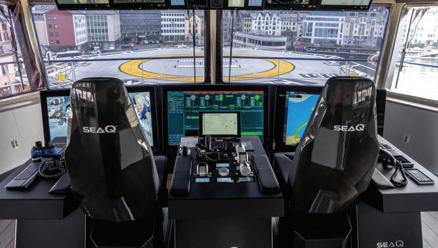
with a customer,” reflected Mr Kvalsvik. “To ensure longevity, you need to establish a good relationship and agree on what you need to deliver. That is very important. And that is why the majority of our clients come back to us.”
One of the jewels in the Rem Offshore crown is Rem Energy, a CSOV offshore supply ship built in 2021 to sail under the Norwegian flag.
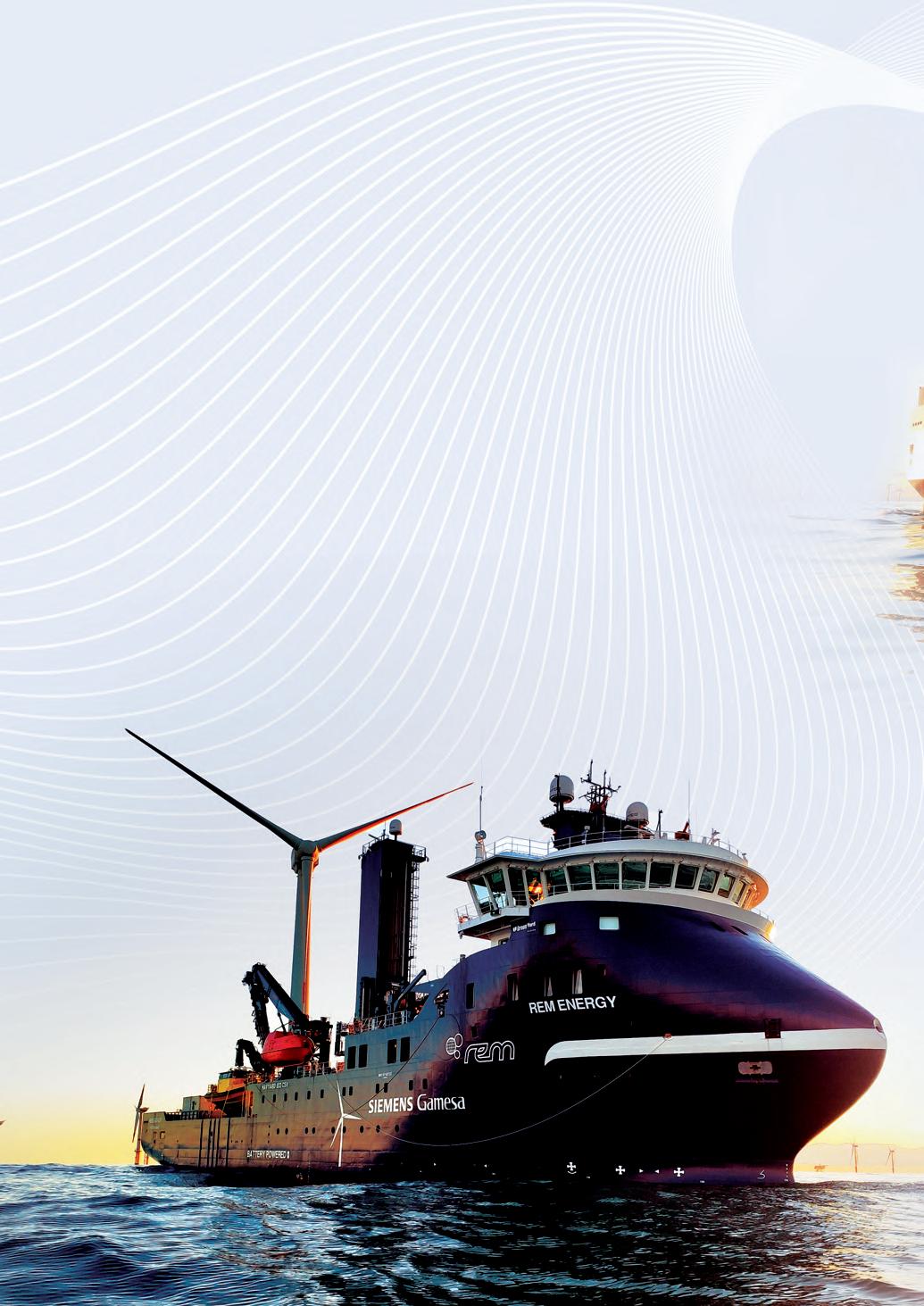
Rem Offshore has a five-year contract with Siemens Gamesa and Rem Energy has proved a vital element in the evolution towards working in renewables.
“I think what we have been able to do with Rem Energy is a big step,” said Mr Kvalsvik. “Because we were able to use one CSOV to cover two offshore wind fields in the German Bight. It is very efficient and is one of the top vessels working for Siemens Gamesa.”
Another key vessel in the offshore wind sector has been Rem Inspector. The vessel has been working since the early days of the still-emerging renewables market. It was built in 2013, sails under a Taiwanese flag and is currently contracted for Siemens Gamesa in Taiwan.
“It was with Rem Inspector that we first established a good relationship with
Siemens Gamesa, especially for our work in the German Bight, and other areas within wind too,” said Mr Kvalsvik. “That laid the foundation for us to move into providing our tailor-made solutions for the client with vessels like Rem Power.”
Rem Power, the company’s new build sailing under a Norwegian flag, will perform maintenance on various wind farms in Denmark, France and the UK. “We also have two PSVs working in renewables. One is Rem Supporter, which is being used in the UK renewables market,” added Mr Kvalsvik.
Rem Offshore has a target to create a balanced portfolio of vessels via an environmentally conscious fleet conversion, according to Mr Kvalsvik.
“You can call it a target, but it's also a challenge,” he continued, “with all the

alternative fuel options out there. But we all need to go greener, we need to look at technology and how to utilise it; how to do things smartly and efficiently. That is part of our strategy at Rem.”
The company already has Rem Power, operating more efficiently and using less power than some of its older, sister vessels. Rem is also working on its port system with long-term strategies in mind to improve sustainability.
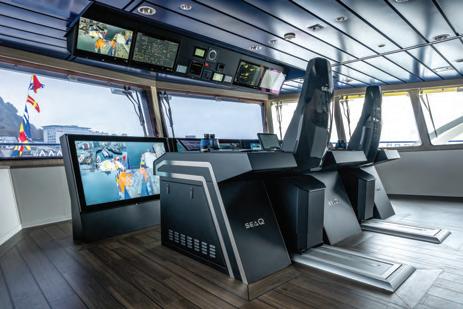
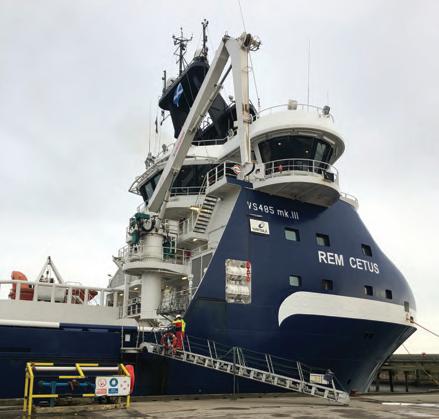
“Like everybody else, we are considering the low hanging fruits by starting to implement batteries with a shore connection,” explained Mr Kvalsvik. “I think that is very welcome to see at Aberdeen port now. Later this year, we will be able to implement batteries on one more vessel in our fleet. That's a good step for the industry in general.”

Rem is part of the Ocean Charger Project, a consortium of industry and research partners, leading the way from research to testing, validation and commercialisation of new technological solutions for energy transfer to battery-powered ships offshore. “The work will be performed over three years, and we are spending a lot of time on it. We are doing the pilot testing which will be performed between Q1 and Q2 of 2024 and we will demonstrate that we can charge offshore with Rem Power,” said Mr Kvalsvik.

Another of the significant elements of Rem Offshore is its strong track record for safety. This is down to care of its employees and excellent training schemes.
“We put a strong focus on internal training, for both the office and offshore team,” said Mr Kvalsvik. “This is an important factor for our clients. Our job is to improve over time

and keep our safety record strong by continuously doing what we can to keep the work culture at the highest possible level.”
The same strong partnerships the company maintains with its customers, it also seeks to uphold with its suppliers. As most of its fleet is second hand, there is a lot of different equipment on board.
“We are in close dialogue with the majority of suppliers available in the marine industry,” Mr Kvalsvik said. “We also focus on new builds, so we have a strong technical department working to find optimised solutions. And it is important that we audit our suppliers. Plus, we visit them, and they visit us. So, we have a very good supplier base we regularly interact with.”
For Mr Kvalsvik, it is this innovative and evolving environment that keeps the job interesting. “I’m really into new technologies,” he concluded. “Thinking outside of the box, finding better solutions, discussions with suppliers. These kinds of things give me energy each day: I find it all quite exciting.” n

As the owner of the largest and most modern fleet in Mexico, and one of the largest fleet of offshore vessels in the world, offshore support specialist E-NAV Offshore has the muscle to tackle the most demanding projects anywhere on earth. With its vessels supporting clients in long-term contracts at all of the world’s busiest oil and gas fields, E-NAV Offshore continues to prove its value to major operators in every region. Founder and CSO Diego Aguilar met with Richard Hagan.
E-NAV Offshore’s primary customers are the major international oil and gas companies for whom it provides various services, including general support, transport, offshore construction and maintenance support, barge support, offshore accommodation, anchor handling, and towage.
Following the company’s acquisition of a large fleet of 33 offshore support vessels of varying capabilities in February 2022, E-NAV Offshore has since strategically sold off several non-core vessels, many of which were also too small for the company’s requirements, leaving only the larger vessels. The vessels that were sold
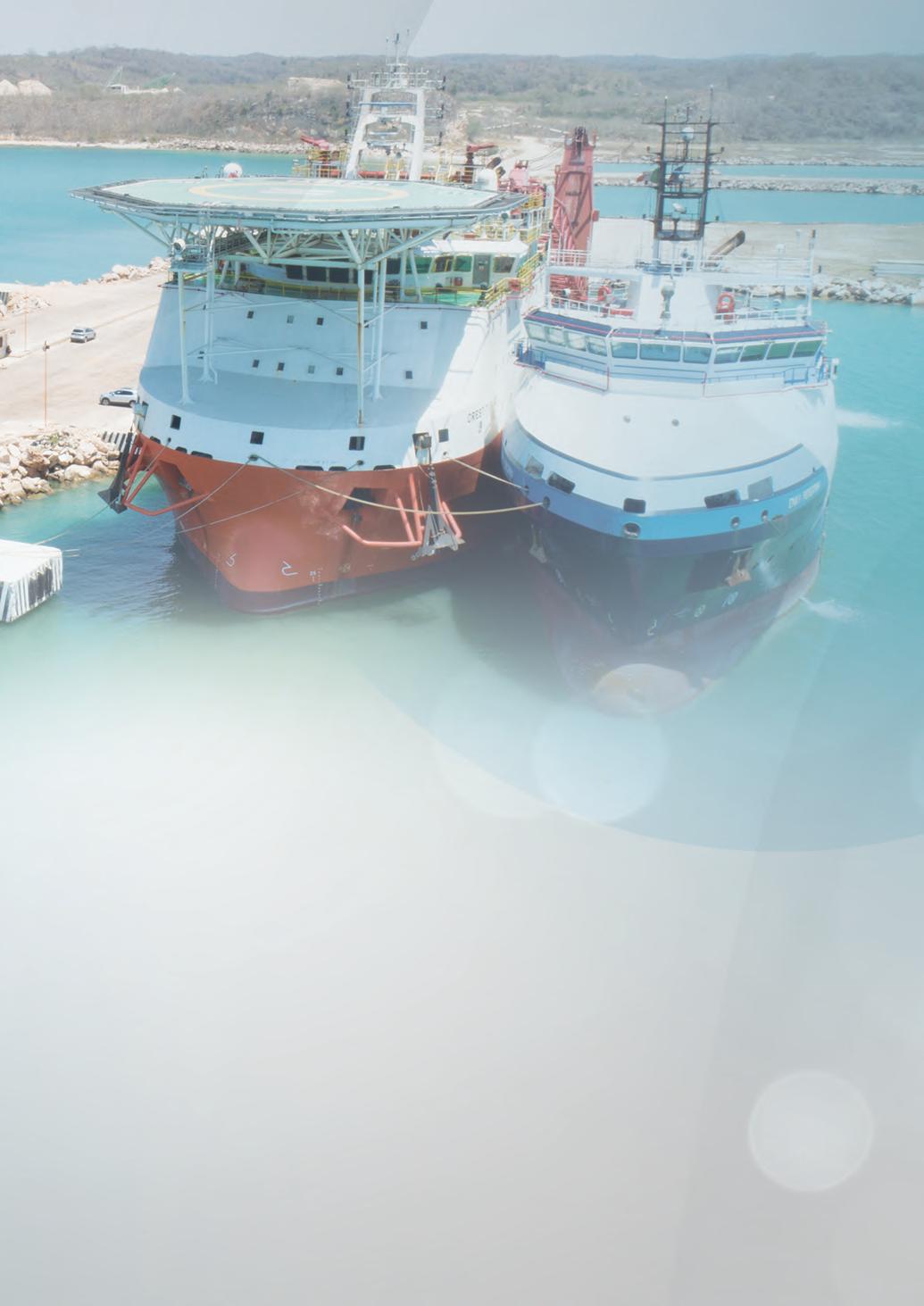
off included two highly advanced diving support vessels, the proceeds of which were substantial and aided in the company’s strong financial performance in 2022.
E-NAV Offshore’s fleet is now aligned with the company’s strategic direction, core business and core values, particularly in terms of propulsion, as Founder and CSO Diego Aguilar explained: “One of the reasons for selling some of the vessels was that they were traditional fuel vessels. We kept diesel-electric vessels as they consume less fuel and produce fewer emissions. Therefore, we’ve been focusing on diesel- electric and now most of our vessels are in that category.”
On 16th January 2023, E-NAV Offshore marked a special milestone when it took
delivery of its latest new build vessel: The ENAV Jacaranda, the third of a series of new builds manufactured for E-NAV Offshore by Fujian Mawei shipyard in Fuzhou, China. Named for the beautiful Jacaranda tree common in Latin America, the new vessel is the most modern large PSV in the world. It joins its sister ships, the ENAV Peregrina and ENAV Saguaro. ENAV Jacaranda operates under the flag of the Marshall Islands and has been mobilised to work in Latin America.
ENAV Jacaranda is certainly not the last of ENAV Offshore’s new build programme, but according to Mr Aguilar, the programme’s future direction will be directly determined by its clients’ needs.

“When we decide to build our next vessel, its design must be backed by an international client with specific requirements for where the vessel will be deployed, and on a long-term contract. We won’t build any vessels j u st on speculation,” he noted.“The main challenge today is deciding what to build, given the fast-evolving debate around future fuels such as methanol, hydrogen, ammonia, LNG and electric propulsion. It’s an ongoing discussion.”
He also pointed to current challenges within the market in general, citing high new build costs and long wait times at extraordinarily busy industrial shipyards as further hindering the company’s new build programme.
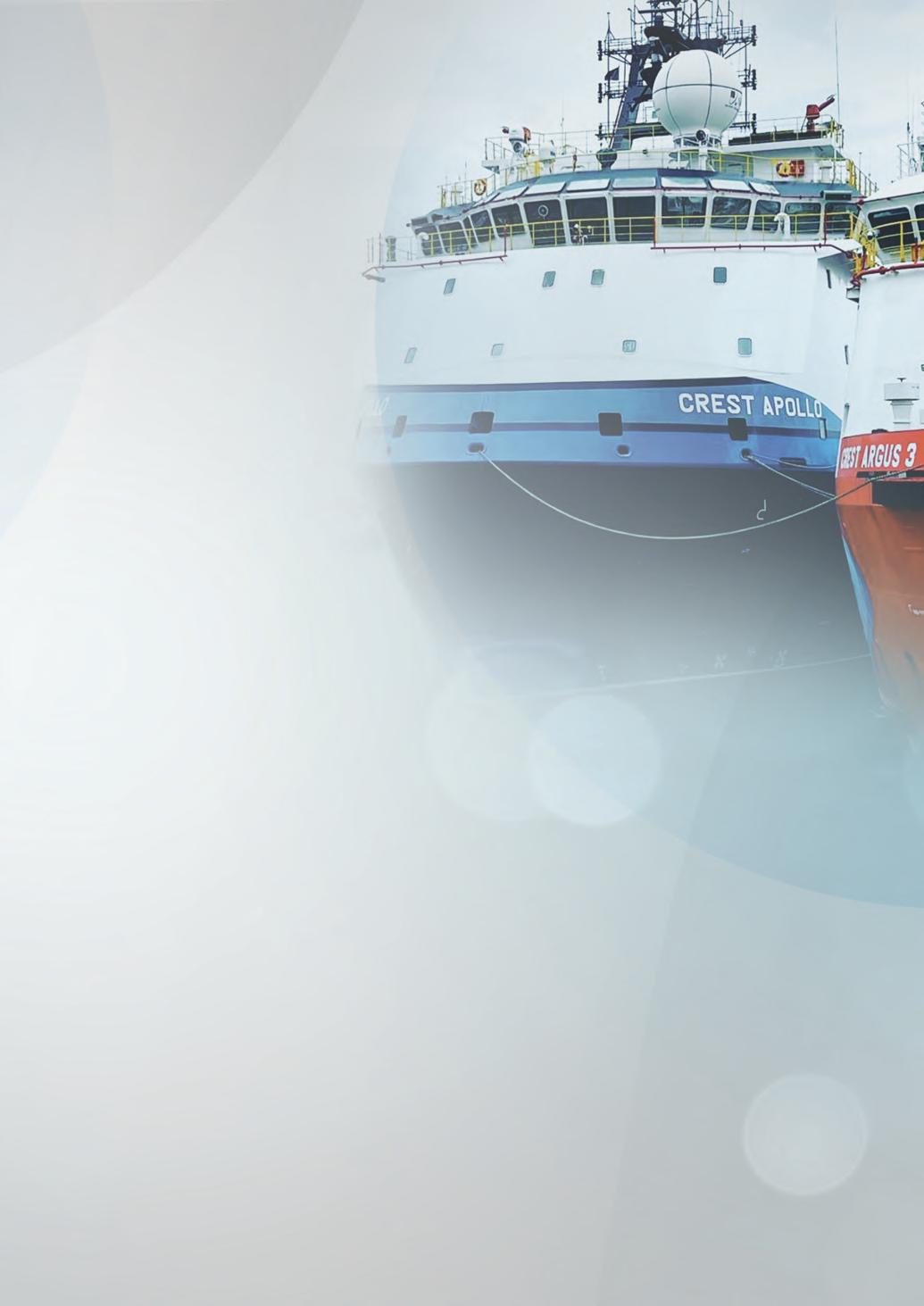
E-NAV Offshore’s fleet has been busy servicing client contracts all over the world. Following a strategic realignment of the company’s global fleet commitments in 2022, E-NAV Offshore has added two additional vessels to its fleet operating in the Americas. That fleet now numbers five vessels – up from only two in 2022. Similar shifts are happening in its other markets.
“Our other markets are doing very well, and we’ve been very active in them,” said Mr Aguilar. “In the meantime, we’ve been bidding on various offshore wind projects on the United States East Coast. That process is slow and so far, we haven’t actively begun any projects there, but we’re optimistic. We’re expecting that

announcements will be made in the second half of 2023.”
Meanwhile, E-NAV Offshore has become the largest vessel provider to the Italian energy firm Eni SpA in Mexico. “We already have three vessels operating for Eni and we will be adding a fourth by the end of 2023,” said Mr Aguilar.
On the eve of E-NAV Offshore’s four-year anniversary in August 2023, the company celebrated the opening of its first office in Dubai. The new office will allow E-NAV Offshore to offer better service levels to its growing client base in the Middle East, whilst also providing a home for E-NAV Offshore’s Fleet Manager, who operates both in the Middle East and Singapore, frequently travelling around these areas.

This new office takes E-NAV Offshore’s physical footprint worldwide to five offices, including its Mexico City HQ and another in Ciudad del Carmen in Mexico, as well as Dubai, Houston and Singapore.
By mid-2023, E-NAV Offshore was enjoying increased rates amidst a general lack of available tonnage on the international market, but Mr Aguilar revealed that this was somewhat of a double-edged sword: “The global fleet is ageing and there’s a lack of tonnage –it’s a big challenge for end-users,” he said. “For shipowners and operators like us who wish to build more OSVs, the chal -
lenge is that shipyards are not currently keen to build offshore supply vessels.
“They’re focused on building container ships, tankers and bulk carriers, for which there is huge demand, and so that is what’s drivin g the yards. Therefore, finding a yard and financing a vessel has become a huge challenge.”
The used vessel market is similarly difficult, he explained. “There are no more good opportunities in the second-hand market; prices have increased tremendously. While we operated like that in the past – by buying used vessels – the prices are now so high that those opportunities are no longer viable.

“Therefore, for us, the future lies in negotiating long-term contracts for new build vessels with international companies that need our services. With that in mind, we are negotiating with several such companies, and we hope to be putting in orders for new vessel builds during 2024.”
Concluding, Mr Aguilar reflected on his love for the business. “It’s always been something that I have enjoyed doing; I love waking up and going to work. When your job is your passion, it makes it easy!” n
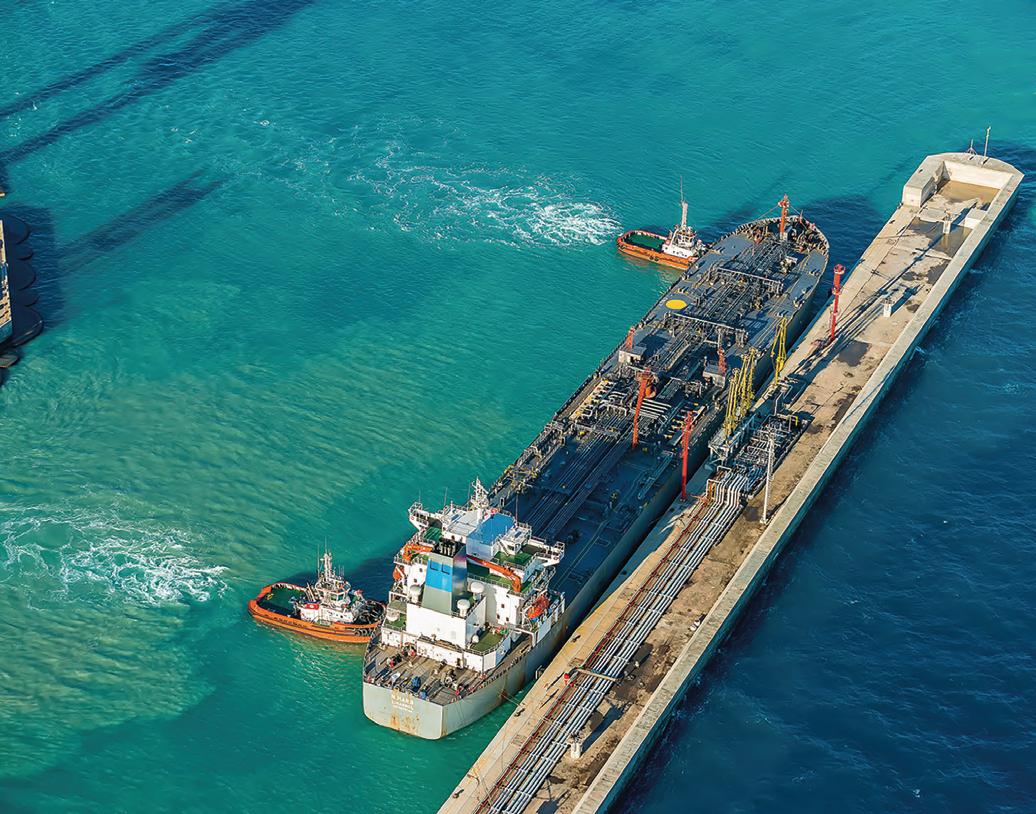
Tug Malta Ltd meets the towage service requirements of the shipping industry and provides a variety of offshore support services. With an excellent safety performance record, trained and experienced crews and a modern, versatile fleet, Tug Malta has evolved as a leader in the port services field. General Manager Malcolm Custo told Hannah Barnett how the company has become a credible, niche player in the Mediterranean offshore segment.


INOctober 2022, Tug Malta’s managing group Rimorchiatori Riuniti agreed to sell 100% of its stake in Rimorchiatori Mediterranei SpA to SAS Shipping Agencies Services Sàrl, the subsidiary holding company of the Swiss shipping giant Mediterranean Shipping Company.
MSC is the world’s largest shipping company : it calls at 500 ports on over 230 trade routes, carrying some 23 million TEU annually. It is also the first ocean carrier to surpass a staggering five million TEUs in fleet capacity, which means the firm holds 17.5% of the global market share.
So, it is no surprise that, in the words of Tug Malta’s General Manager Malcolm Custo, “the acquisition will change the playing field completely.”


Founded in 1980 as a state-owned company, Tug Malta began operations with just three tugs acquired from two private towage operators. Its location in the important transhipment port and logistics centre of Malta meant that the company soon experienced an exponential increase in demand for towage services.
Plenty more changes came to the company in 2009, when Rimorchiatori Riuniti Group became the 100% shareholder. “This gave us the opportunity to invest in new tugs and a modern fleet, because previously we had tugs which were 20 or 25 years old,” said Mr Custo. “It also gave us the opportunity to venture into the offshore business and not be limited only to local harbour towage.”
Within this context, the recent acquisition by MSC is just the next rung on the ladder for Tug Malta. The company is a proud member of the International Salvage Union (ISU) and an active member of the European Tug Owners’ Association.
Mr Custo was enthusiastic about the opportunities the takeover looks set to herald: “The synergistic potential of being part of a large group is huge. We already saw this when we became part of Rimorchiatori Riuniti. But now, with MSC, the opportunities and economies of scale are even bigger –both from a purchasing point of view with suppliers, and from our expanding client base.”

Tug Malta has already experienced some of the power a connection to a corporate behemoth can wield. Two years ago, MSC purchased 50% of Palumbo shipyards, a drydocking company in Malta, and started sending ships for repairs on the island. “As a towage company, that doubled our tug activity at the shipyards,” explained Mr Custo. “Now, MSC has added a new shipping route with Malta as a stop off, which means even more business coming to us.”
Tug Malta is already a thriving company ; last year it clocked up an €18 million turnover. €15 million of this it earned from freeport work and oil tanking contracts, with the other €3 million split between work in the Grand Malta harbour and its shipyard.
The company operates eight regular tugs, with an average bollard pull of around 74 tonnes. It has also invested in a smaller tug, with a bollard pull of nine tonnes, to offer services to larger yachts and smaller vessels. “With the larger tugs, we weren't able to offer the service, because the tug would be too large and too powerful, ending up damaging the ship,” Mr Custo explained.
Due to Tug Malta’s commitment to growth and reinvestment, five of the company’s tugs were purchased in the last four years. The newest one, Tug Senglea, was built by the renowned Dutch shipbuilders Damen shipyards, and purchased in 2020. Seven of the tugs have firefighting equipment, whilst three have the facility

of oil recovery, which helps if ever there is a pollution incident.
“We keep investing in new and powerful tugs,” said Mr Custo; “We have tugs which have up to an 82-tonne bollard pull capacity. This makes it easier for us to tow large container vessels which are 400 metres and above. The sea is very deep in the ports around Malta, so we get a lot of these larger draft vessels. We need to be well equipped to serve them. And this can only be done with a modern, powerful fleet.”
The MSC acquisition is likely to positively impact Tug Malta’s supply chain, too.
“Most of our tugs, and the tugs of the group, run on Caterpillar engines,” explained Mr Custo. “It makes it easier to come to agreements with the suppliers and get good prices. But it’s even more important to have suppliers who can ship the parts you need quickly, and at short
notice. Obviously, once you have a tug which is laid up, it means you have one tug less. But that also means there is a risk that there'll be certain situations where you will not be able to offer an emergency service. We try to avoid that.”
Requests for emergency service assistance are all too real in this industry: Mr Custo emphasised how important some of the company’s endeavours are. He described an incident in March 2022, when two Tug Malta tugboats were required to provide salvage assistance to a 200-metre tanker.
“The day was characterised by very inclement weather,” recalled Mr Custo, “and as a result, the tanker ended up with engine difficulties and was drifting close to the coastline. We had to send two
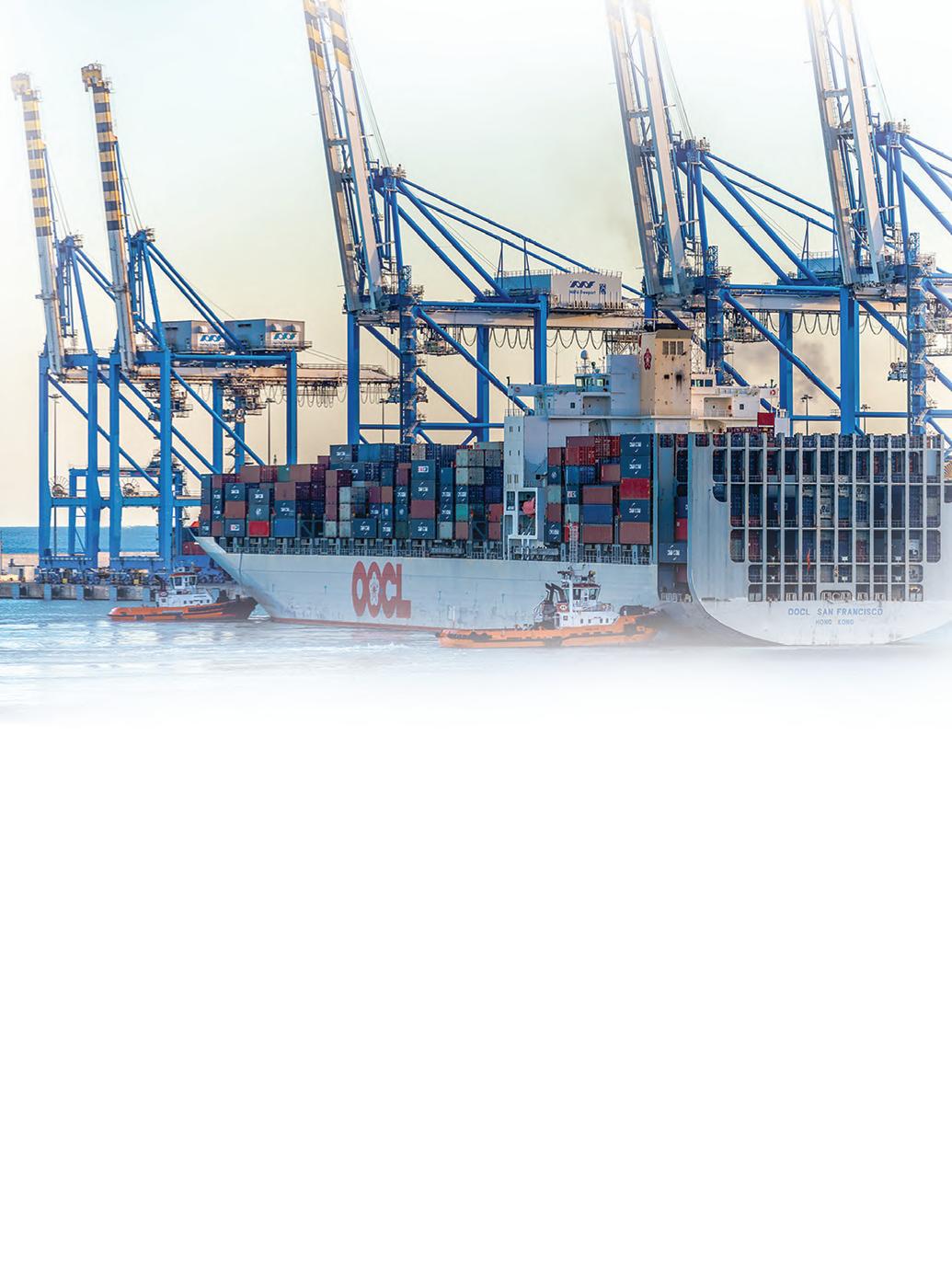
tugs to hold the ship to avoid it running aground. They ended up there for two days until the weather calmed down;. then eventually we managed to bring the vessel to a safe berth.”
For a company operating from a small island such as Malta, challenges in staffing are common, especially in the highly skilled tugboat industry. But Tug Malta has turned this into a positive, by ensuring it takes good care of its employees.
“Our crews need to be qualified and it is not easy to find them locally,” said Mr Custo. “We try and recruit apprentices who are studying at local maritime institutes but there aren't enough to meet industry requirements. Also, besides us,

there are other key players hunting the same market, for the same skills, so, it is not always easy to find the right people. But this is why we try to create and sustain a culture where if you join Tug Malta, you are happy to remain and grow with us.”
There is little doubt that Tug Malta is a company that looks after its people. Mr Custo emphasised the importance of the supportive, strong team he works alongside. But more than that, he has seafaring in his blood.
“My dad was involved in the maritime industry; I’ve always loved it,” he reflected. “I grew up within it, and that is where my passion comes from. What attracted me
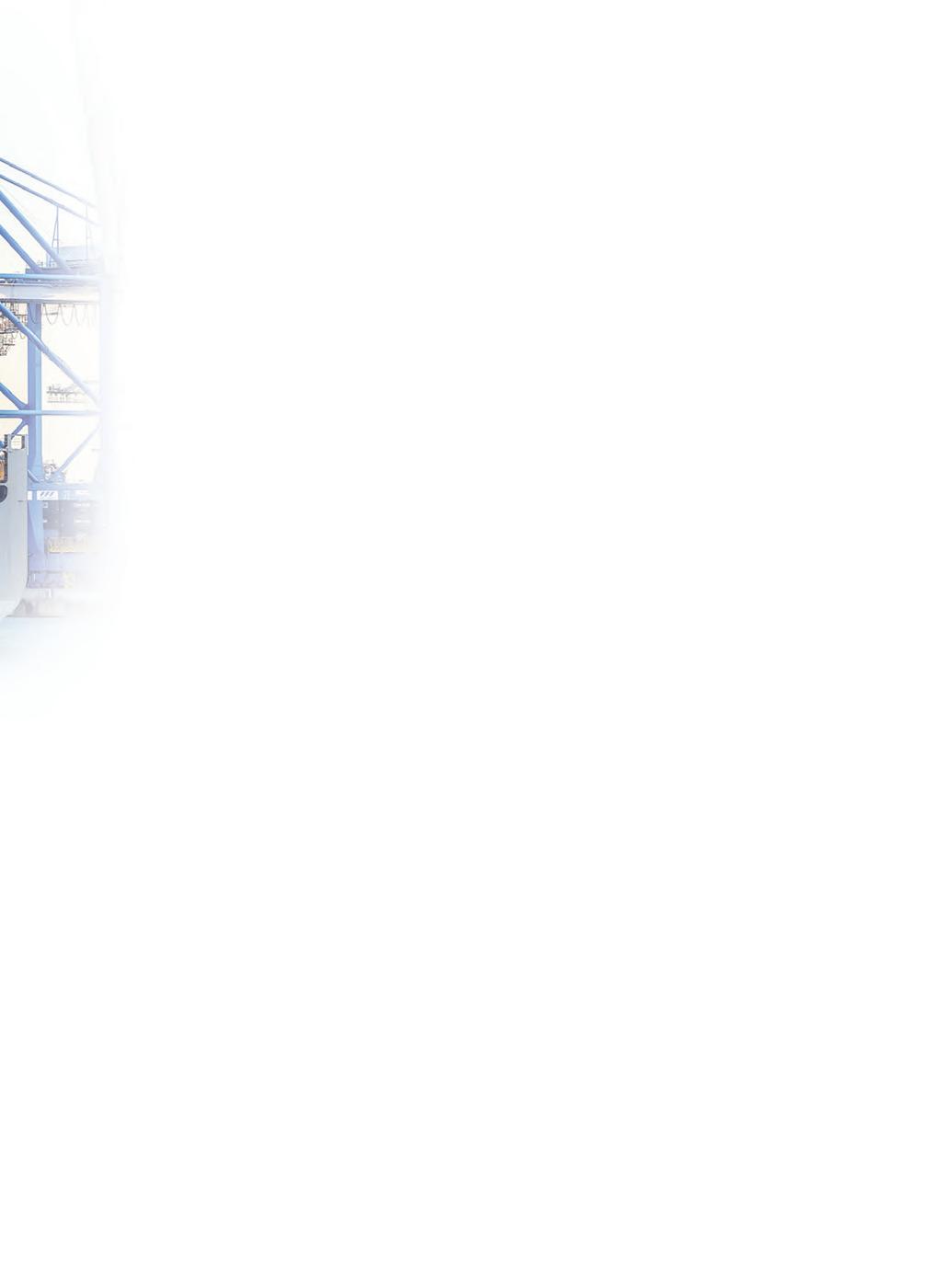
to Tug Malta was that it was part of an international group. That already gave me so many different opportunities. And now that we are fully owned by MSC, the opportunities are limitless.” n


TOR Group is a family shipbuilder that has gradually stretched its links from its Black Sea roots in Türkiye to different shores worldwide. The business is currently in transition, diversifying to own and operate a fleet while continuing to offer the best engineering competencies to clients. CEO Kemal Torlak and Chairman David Cullen described TOR Group’s journey. Profile by Andy Probert.
Through five generations, shipbuilding has been the beating heart and lifeblood of the Torlak family. From first building wooden boats in the Eastern Black Sea province of Rize in the 1880s to today’s
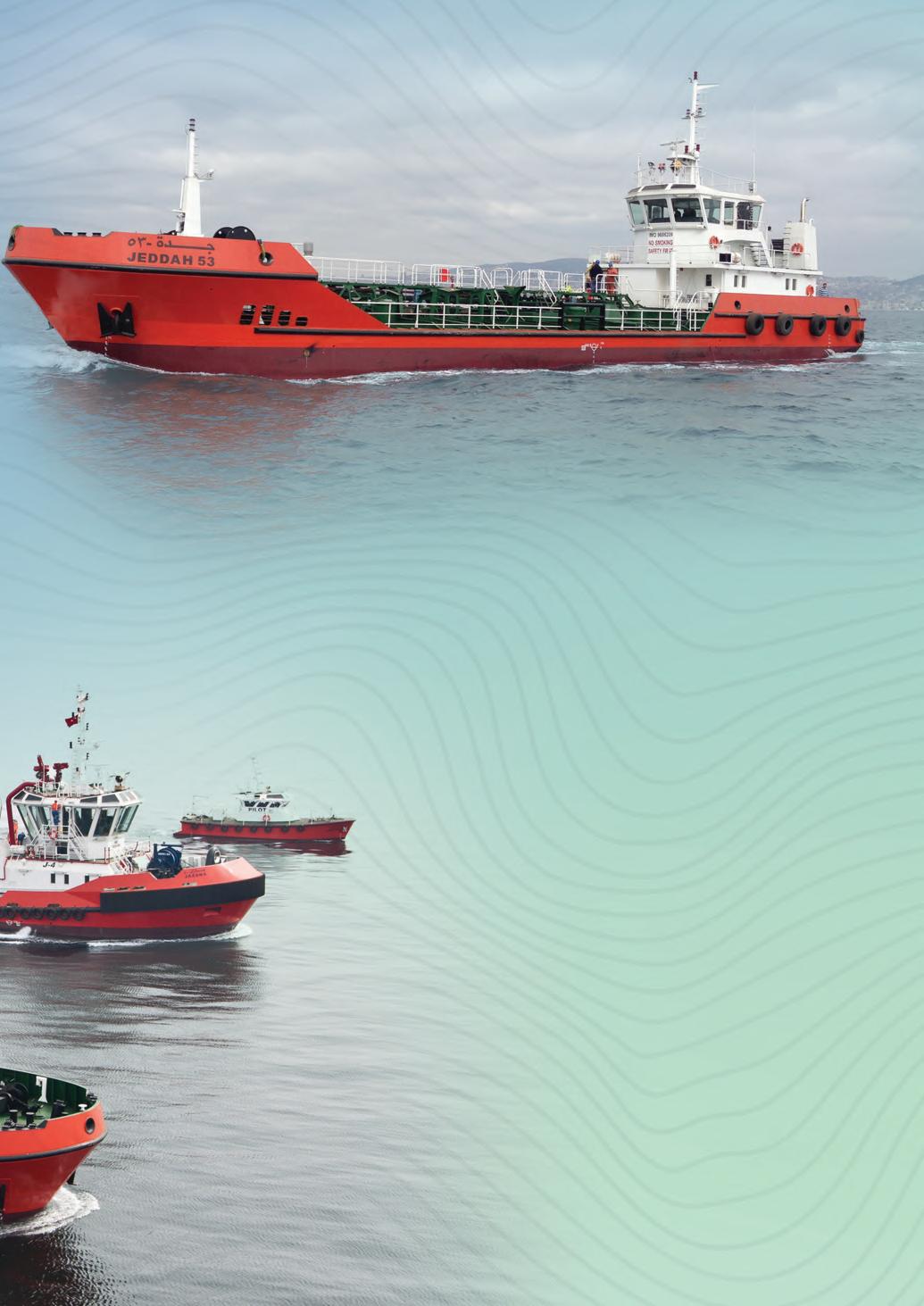
Tuzla manufacturing site in Türkiye, the TOR Group has built various vessels for an increasingly international client list.
Under the leadership of CEO Kemal Torlak, and Chairman David Cullen, the TOR Group is now on a journey of major transition that will see it, for the first time, becoming a vessel owner-operator.
The third generation of the Torlak family successfully delivered Türkiye’s first steel hull vessel in 1968, propelling it to the forefront of Turkish shipbuilding. Tor continues to break ground, in 2021 becoming one of the first to manage an external shipbuilding project. In this case, the client was the Pakistani Navy with TOR Group providing the parts, equipment, engineering expertise and project co-ordination to enable the build to take place in Karachi Shipyard.
While building various vessel-types, including bulk carriers, ferries and patrol

boats, for the international market, workboats have recently become a key business line for the company.
“TOR Group holds tremendous tradition and experience,” said Mr Cullen. “In 2019, it decided to set up its commercial headquarters in the UK while retaining operations in Türkiye, with the aim to expand and diversify. It began operating a self-designed and built tugboat in UK waters in 2022, a critical milestone indicative of the direction TOR Group seeks. We are already embarking on the production of a second vessel for UK operations, and more will follow.”
The company has fostered flourishing partnerships with Karachi Shipyard in Pakistan, the Oman Dry Docks Company and a small dry docks operation in Penzance, Cornwall, in the UK, with options to expand these and new links further.
“For the 48-tonne bollard pull workboat for Pakistan, we completed the design, and the full material package from steel cutting to nuts and bolts in Tuzla,” explained Mr Torlak. “It was, under our supervision, assembled in Karachi. The boat is undergoing commissioning and sea trials, and the client is very happy.
“It was the first of this type of contract for TOR Group, apart from physically building the boat. This proved an interesting experience despite the pandemic and a broken supply chain. But it is indicative of our diversification plans and we hope to replicate and extend that to future clients.”
A workboat built in Tuzla, intended for sale to a client but which fell through due to the pandemic, became a focal point of its diversification goals, according to Mr Torlak:
“It was decided to operate the boat in UK waters as a TOR-owned and operated vessel. We wanted to put it to use and prove the concept of launching our own operations here. It attracted a lot of interest and has since been sold to a client in Newfoundland, Canada.”
That has spurred TOR Group to build a new workboat at Tuzla (the first of a small fleet) to operate specifically in UK waters under its sister company TOR Offshore.
Mr Torlak said the 26m hybrid utility vessel would arrive at the end of 2023 and will begin operation in 2024 potentially to service the windfarm sector. The boat will have 4-point mooring, an A-frame, dive support, an offshore crane capability, and a gyrostabiliser. It could also act as

a tugboat with electric propulsion and diesel generators aboard.
“The company is looking to build sister variants, maybe three, and build tugs for the UK market,” said Mr Cullen. “These designs are presently underway. Owner-operation is one route for diversification; another is innovative procurement solutions, including finance, to enable clients to procure vessels and facilitate other partner shipyards to build those vessels.”
The Tuzla yard employs around 50 core staff, increasing that workforce to 300 depending on the contract. It has two slipways with the capacity to build up to 100m, but commercially the optimum is
around 40m-50m vessels. Significant use is made of sub-contractors.
The company is presently building two tugboats with 65-tonne bollard pull capacities. They are nearing completion and sea trials, with a number of potential international clients in advanced negotiations.
Prior to the Pakistan contract, TOR Group delivered three tugboats with an 80-tonne bollard pull for the Ghana Port and Harbour Authority. “All three were built in 12 months: it was a challenge, but the company completed them on time,” said Mr Torlak.

The shipyard has previously built pilot boats, tugboats and oil recovery vessels for the Saudi Sea Port Authority. “One of our most significant projects was to build a 45m patrol boat with a speed of 32 knots for Aramco,” Mr Torlak continued.
“It was a unique project meeting complex engineering and propulsion demands to achieve that speed with that weight. TOR is one of only four companies worldwide with these proven design capabilities.”
“Covid, the global economic situation, supply chain delays and rising costs
have inevitably impacted us, but in the past two years, the company has seen growth of about 60%, and it is anticipated to increase by 100% in 2023,” Mr Cullen said. “TOR remains, at its heart, a shipbuilder, endeavouring to stay at the forefront of cutting-edge and sustainable technologies, and has diversified its suite of services to help meet this aim.”
Both said business relationships with clients and suppliers were built on the collective foundations of trust, loyalty, transparency and compromise while upholding high-quality standards in all operations. “Quality is expected within the group from the product to the people we employ,” Mr Torlak explained. “It is a core value of ours that can never be sacrificed.”
He added that the company is taking a cautious approach to the sustainability demands of the industry as “there are many options and some significant uncertainty about where green energy is best
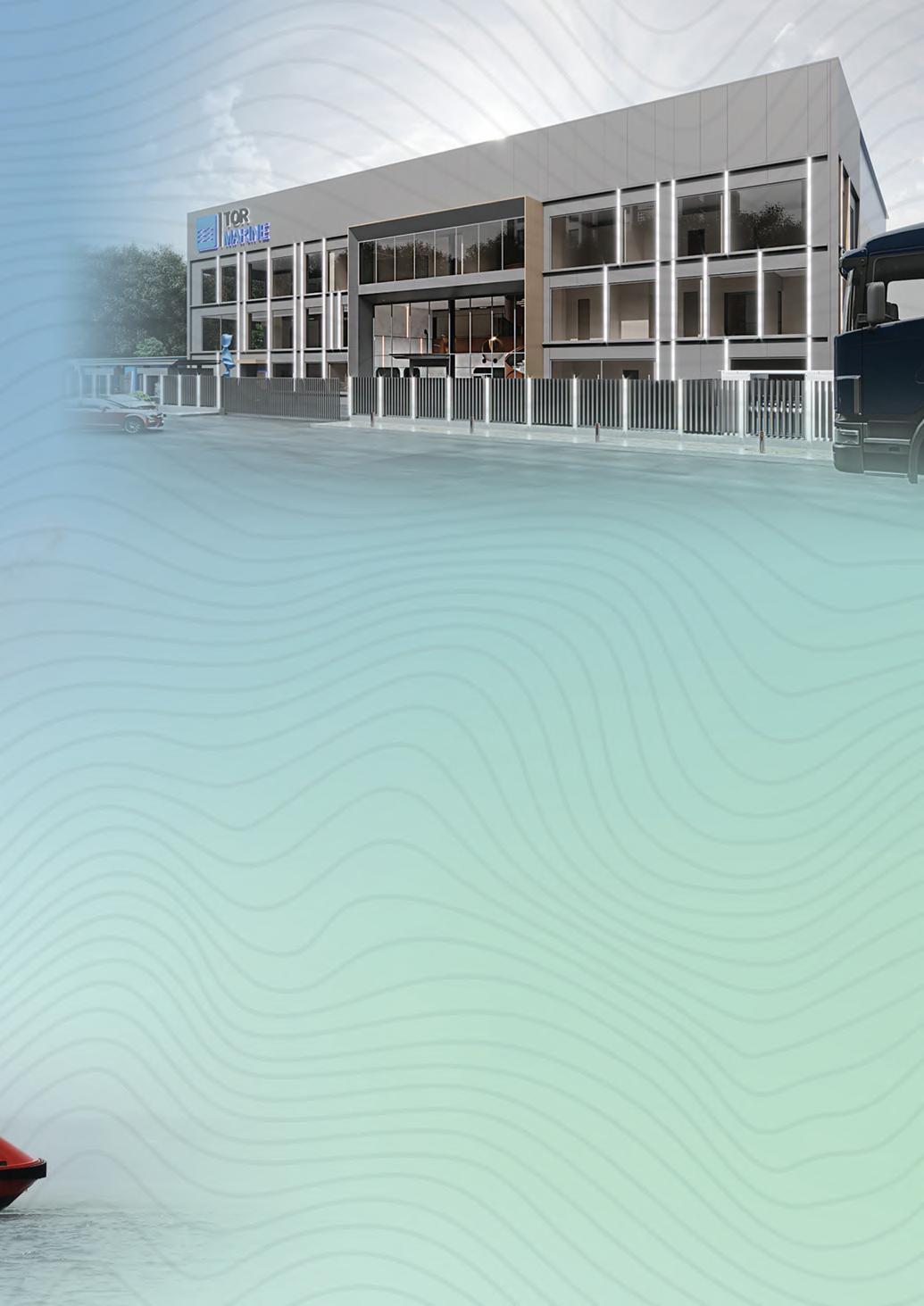
evolving and understanding all of the technical complexities.”
Mr Cullen agreed, saying: “The maritime industry is not straightforward: It operates in an environment that is multi-faceted and, often, extremely challenging. People are looking for a fundamental breakthrough, such as hydrogen, to embrace change properly and that may be a little way off.
“As for the TOR Group, it will continue to expand and diversify, strengthen its core activities, and evolve its business plans pragmatically.” n


seven seas, five oceans, one voice

aelm & aecmi genoa maritime iblea ship management blue fleet group norvic shipping

Anglo-Eastern Leisure Management has evolved from a pivotal acquisition within the marine industry. Previously under the name CMI Leisure, AELM (in partnership with its counterpart Cruise Management), is leading parent company Anglo-Eastern into previously unchartered waters. AELM’s President & CEO
Dietmar Wertanzl, AECMI’s President & CEO Sanjay Sukhrani and Anglo-Eastern’s COO Carsten Ostenfeldt explained more about this momentous transition in an exclusive interview with Inside Marine. Report by Imogen Ward.
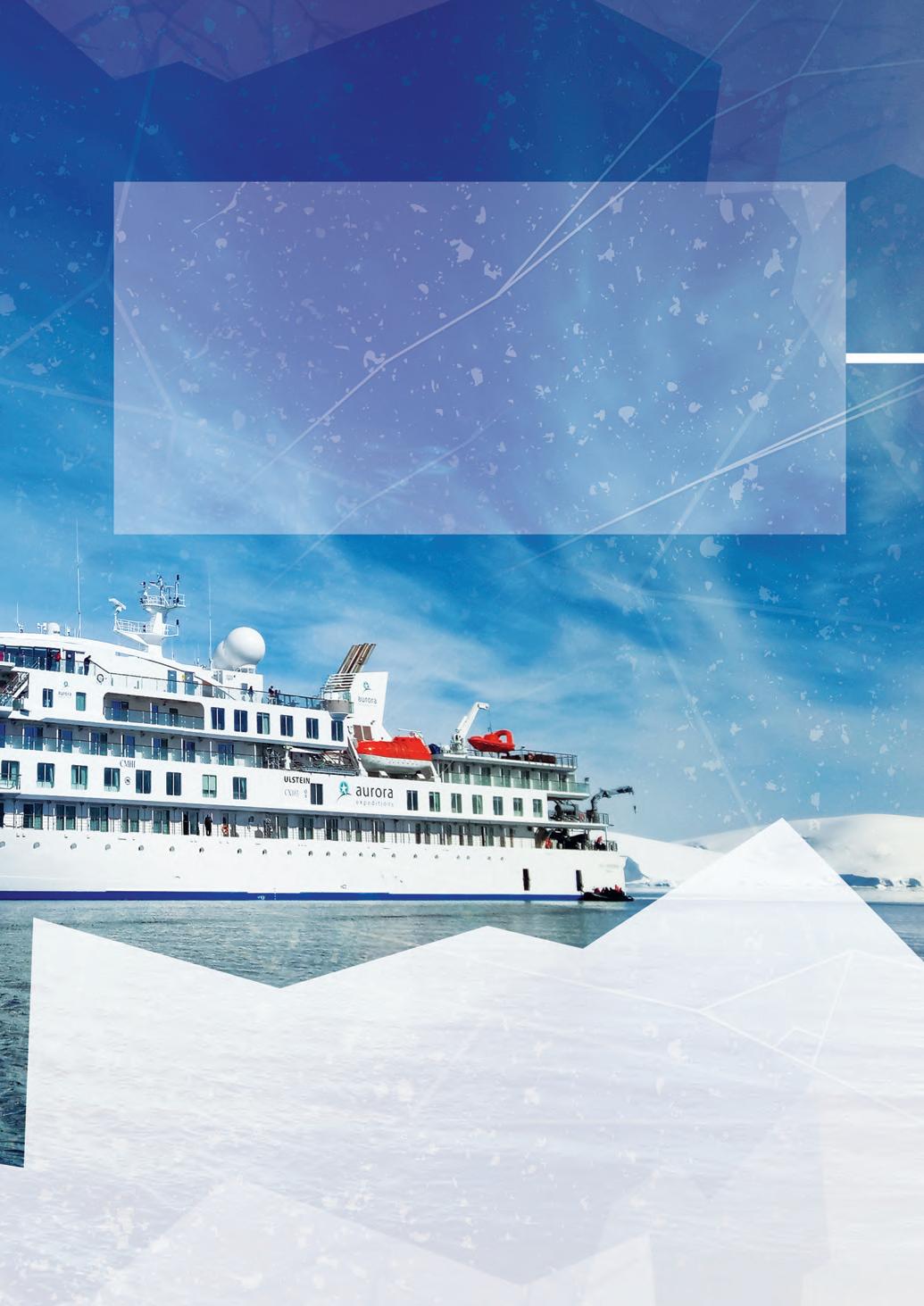
Originally established as Cruise Management International (CMI), the newly formed AngloEastern Leisure Management (AELM) and Cruise Management (AECMI) are perfectly positioned to offer plain sailing from their home base in Miami.
“Anglo-Eastern was looking to expand its footprint within the ship management segment,” President & CEO of AELM Dietmar Wertanzl explained. “The company really wanted to show the world t hat it can manage any ship. Having previously never set foot in this area,



Anglo -Eastern needed a partner who was experienced and capable. That’s really where CMI entered the picture.”
With almost 50 years’ experience in ship management, Anglo-Eastern is a popular choice for those in search of ship, crew

and technical management services. Whether operating dry bulk carriers, container ships or tankers, Anglo-Eastern has i t covered. Now, with the acquisition of CMI and its sister company CMI Leisure, AngloEastern has the cruise sector covered too.
“The cruise industry is very demanding, especially for smaller companies,” said COO of Anglo-Eastern Carsten Ostenfeldt.
“However, it is a natural space for a ship manager of our size; we have a considerable footprint in various parts

of the world, and we have the resources to provide a comprehensive service, right down to the seafarers.
“From our huge pre-sea academy in India, we train 500 cadets every year.”
Training is just one of the many areas Anglo-Eastern’s experience shines through. The new divisions believe this will be an asset to the cruise sector. “In this post-pandemic recovery phase, we don’t have the same seafarer numbers we used to,” President & CEO of AECMI Sanjay Sukhrani said. “They all transferred out when the cruise industry was on lockdown
“The challenge is getting talent back into the business and building a strong pipeline from engine room to boardroom; that’s something Anglo-Eastern really excels at.”
For Anglo-Eastern the cruise segment was the last area left unconquered. Initially a board member for CMI, Mr Ostenfeldt already had an understanding of the company’s capabilities and a strong confidence in its vision for the cruise sector.
“This sector was the last notch missing from our belt,” Mr Ostenfeldt explained.
“Over the years, we had discussed entering the cruise sector from scratch, but there are lots of challenges involved with that. When the opportunity to purchase CMI first surfaced, it was a golden moment. The two companies were experts at what they do, and for that reason, we were confident that they could successfully guide us into the industry, and we could build from there.”
This acquisition was first announced at Seatrade Cruise Global 2023, which was Anglo-Eastern’s first experience of a cruise event.
This was also a first for Mr Sukhrani. He described the cruise event as an incredible experience that provided the perfect opportunity to learn about the latest industry developments.
As a ship management company, AngloEastern has the capacity to manage more than 650 ships at any given time, with more
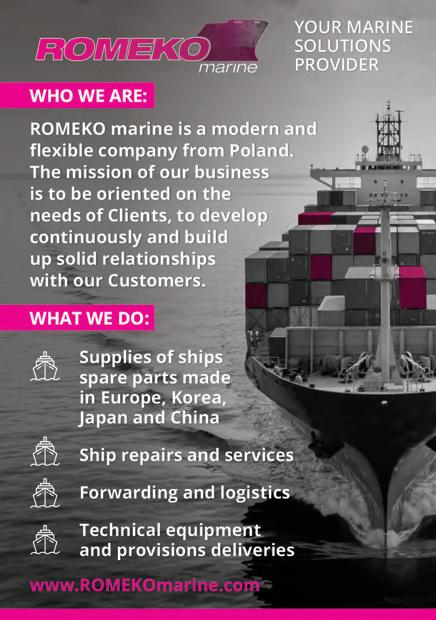

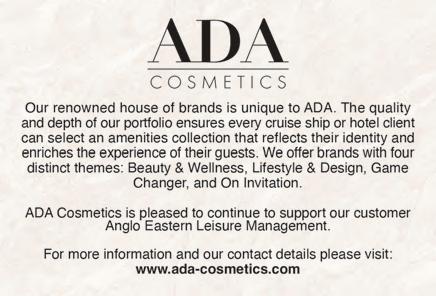
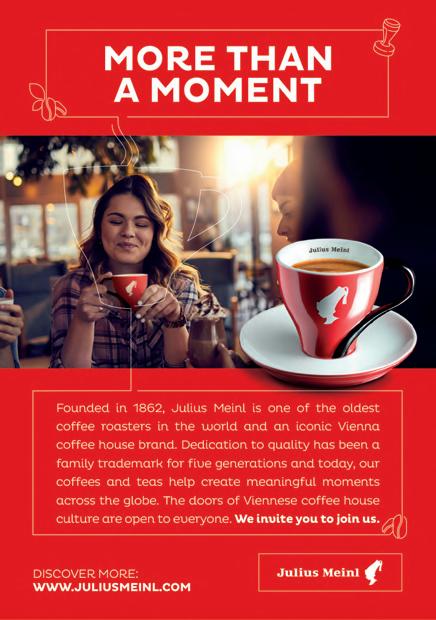





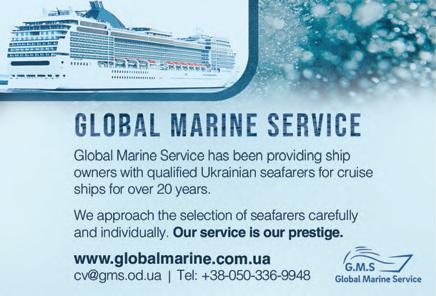
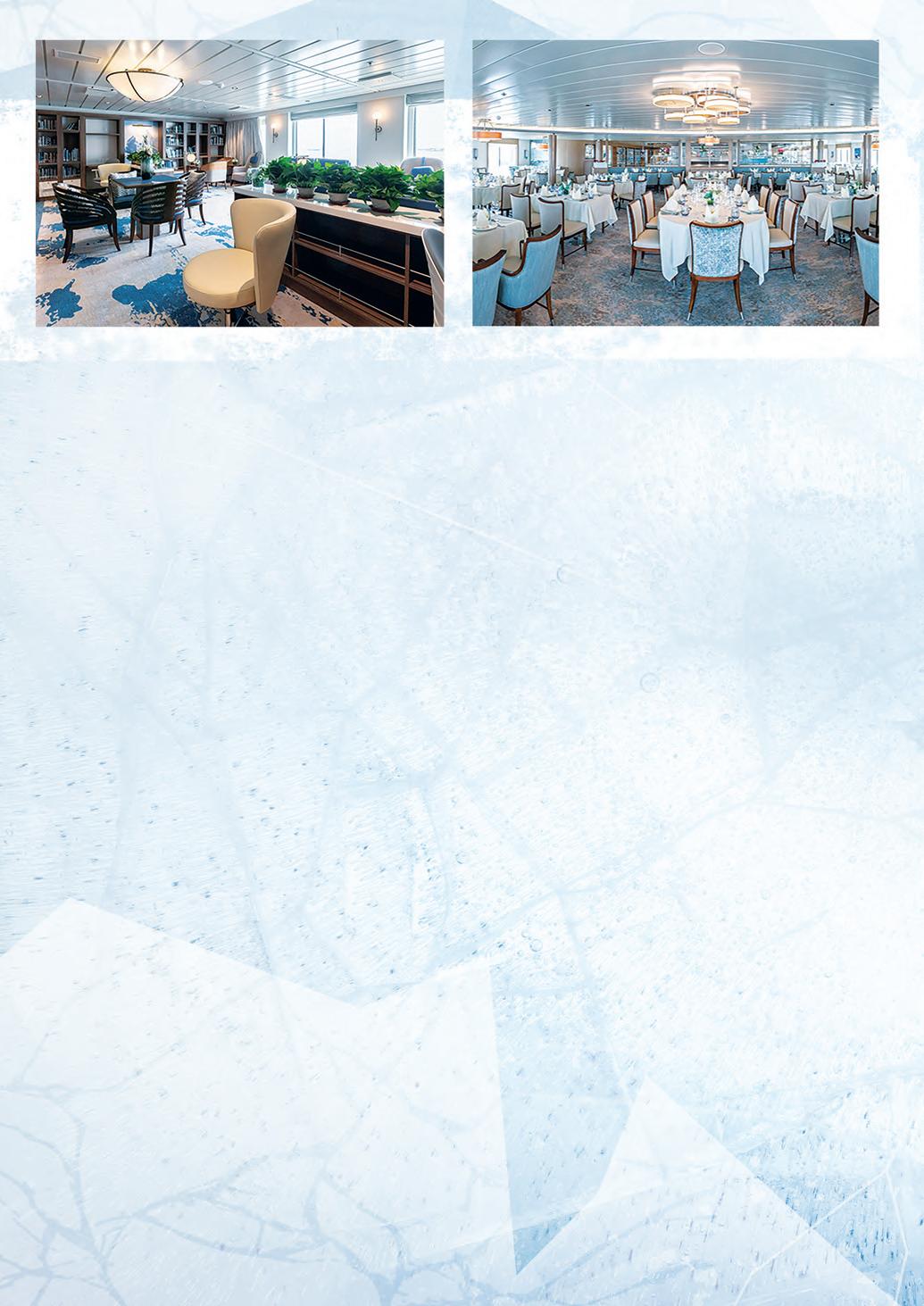
than 17,000 crew members in total: because of this, the scale of Anglo-Eastern is more than geared up to take on the cruise sector.
“The volume of everything we do is massive,” Mr Ostenfeldt said. “That greatly benefits our new Miami base because they now have access to our resources.”
“Anglo-Eastern is a huge company, with brilliant resources,” Mr Wertanzl added. “To have these platforms available to plug into is definitely an advantage for us.”
Both of Anglo-Eastern’s new divisions had their own expertise within the cruise industry. The technical side came under AECMI’s jurisdiction, and headed by Mr Sukhrani, the company was in safe hands.
“My experience does not originate from the ship management sector,” Mr Sukhrani explained. “I spent my entire career on the ownership side; in fact, I was one of Anglo-Eastern’s largest customers. When the company’s leaders first approached me with the opportunity to lead Cruise Management, I asked them to consider my lack of experience in the cruise sector.”
“The company assured me that they needed someone who not only understood Anglo-Eastern’s culture, but also understood ship management from both a customerand owner-perspective. I had that unique
experience, and to this day it’s a learning curve; but it’s a very exciting journey that is beneficial for everyone involved.”
AECMI also offers expertise in compliance, port planning, crewing, procurement and finance capabilities.
“The cruise industry is in the business of creating experiences for passengers,” said Mr Sukhrani. “We lead with that knowledge. It’s all about creating that experience, from the quality of the carpets a nd the food to the ambience and air conditioning. Anglo-Eastern brings scale and scope to the table. The company has immense resources, including very talented people who have successfully delivered excellent products in various other sectors. There’s no reason why they can’t take that and apply it to the cruise industry as well.”
Anglo-Eastern’s new leisure management division offers the full package of customised hotel management, culinary expertise, logistics and unique services dedicated to the niche and expedition side of the cruise sector.
“A cruise ship is effectively a floating hotel,” Mr Wertanzl said. “At the end of the day, we are in the vacation business; we have a niche, we have an established client base, and we have a positive outlook on the progression of the cruise industry.
“We are known for our expertise in the small ship expedition sector, and having Anglo-Eastern’s backing is of great value, it will enable us to grow and expand that niche and other segments.”
AELM endeavours to continue on this journey in a way that is respectful of the environment, and it fully understands the importance of these locations – both for the tourists and for those living there.
“When it comes to sustainability, AngloEastern always goes above and beyond compliance,” Mr Wertanzl said. “That’s really important to us, because we want to sustain these destinations for everyone’s sake. These places are our home away from home, and we want to protect that.”
“The leisure side ensures that guests are having a good and memorable experience,” Mr Ostenfeldt added. “By combining our expertise and resources, we can start to assess the possibility of further expansion.
“Ice navigation is one area where we are interested in expanding our
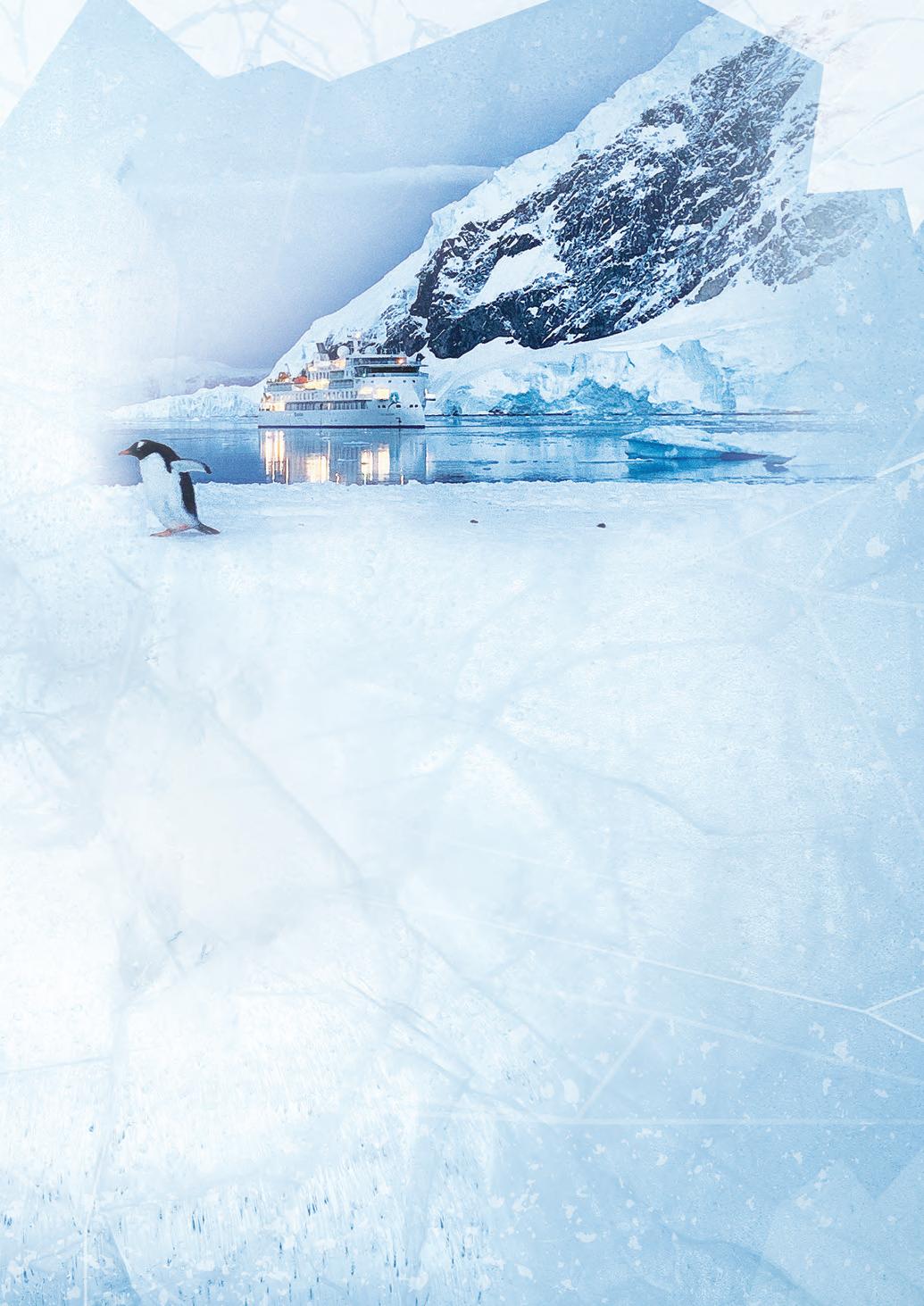
pres ence further. We have worked in this area for many years, but we see an opportunity to really tap into our Miami base’s expertise. We expect this navigation to be based in Canada, and for it to be gradually expanded out to other locations where we have experience.”
Going forward, with the help of suppliers, AELM plans to continue offering extreme expeditions.
“Our suppliers are critical when entering these extreme locations,” Mr Wertanzl said. “Knowledge is number one, and you’ve got to know and trust who you’re dealing with.
We are lucky enough to have amazing suppliers that we can trust, who really help us deliver these special and unique experiences.
“I am sure this will be magnified under Anglo-Eastern,” he concluded. “So far, working under this company has been an extremely positive and enjoyable experience.”
n
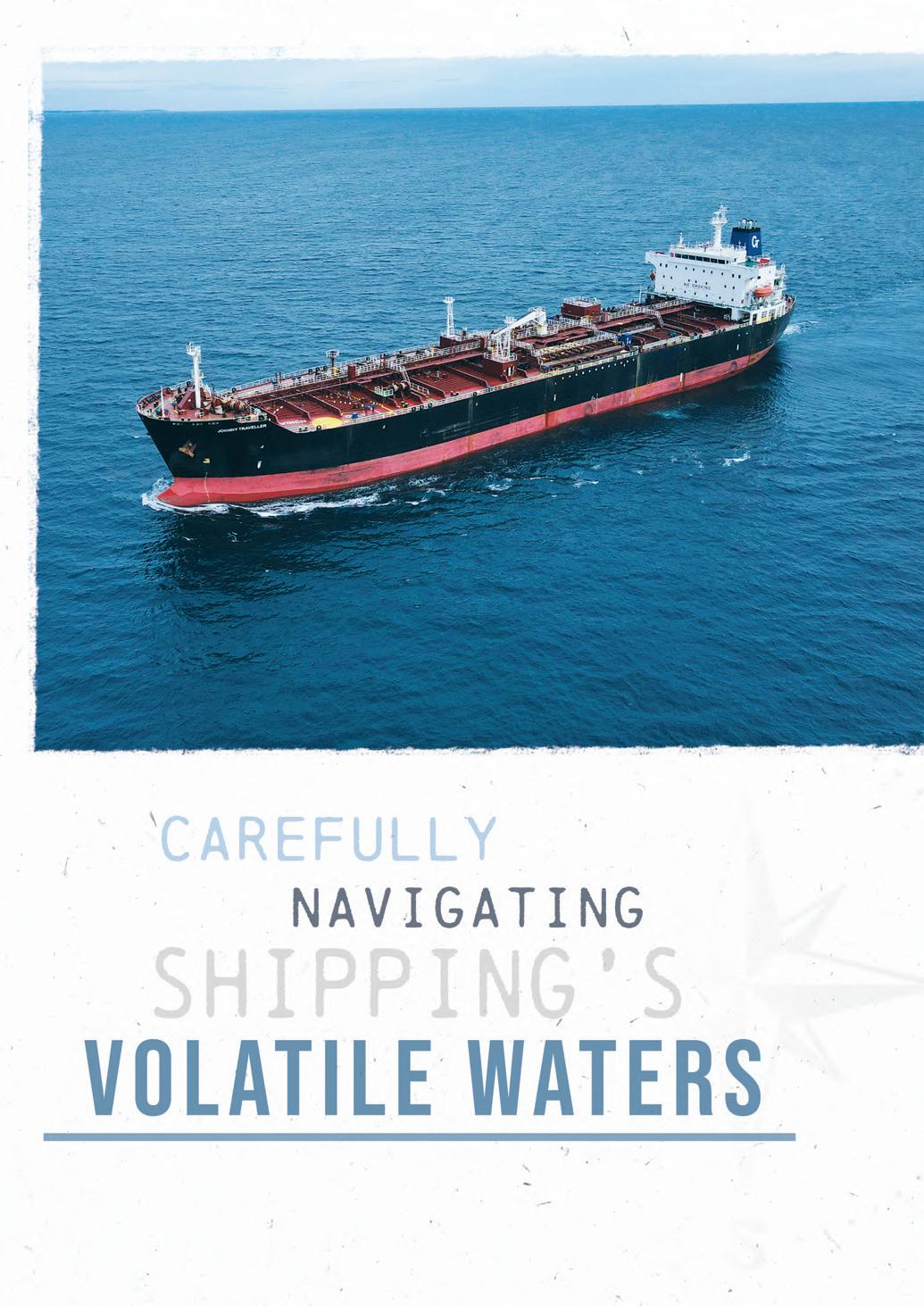
Genoa Maritime, a leading ship management company specialised in vegetable oils and fertiliser-carrying vessels, has survived the peaks and troughs of the shipping industry through a cautious and considered approach. Managing Director George Magliveras sees no deviation from that philosophy. However, in conversation with Andy Probert, he is outspoken on the ever-changing and challenging landscape of an industry with which his family has had historical links for nearly 100 years.
Italian-born, Greek-based, Indiancrewed and Norwegian-partnered.
A kaleidoscopic international smorgasbord that describes, but doesn’t define, Managing Director George Magliveras and his aptly named Genoa Maritime. With such a global overview, Mr Magliveras - born in Genoa but now located in Piraeus, Greece – has a unique, if critical, eye on an industry that has changed beyond comprehension since his ship management business launched in 1997, and even more so given his family lineage in shipping dating back to the

1930s. Due to its professed philosophy of ship management enacted through a ship owner’s eyes, Genoa Maritime has remained at the forefront of ship management expertise, backed up by a skilled pool of Indian crews, as well as shore staff having great previous experience at sea, partnered by Norway’s Champion Tankers.
“We approach ship management with a ship owner’s mentality,” said Mr Magliveras. “We believe in the personal touch, and our crews are our priority. Happy ships are productive ships.”



“SHIPPING IS ALREADY HEAVILY REGULATED, BUT EMERGING REGULATIONS ARE BECOMING TOO MUCH. WE MUST LIVE WITH THAT, BUT THE CREW MUST BE THE KEY PRIORITY”

Indeed, the long-standing experience behind Genoa Maritime ensures it stays the course, not only through cyclic highs and lows of the shipping market at large, but to anticipate and prepare itself for more unprecedented changes.
“We established close ties in 2000 with Champion Tankers, and that business alliance is still active today,” Mr Magliveras said. “While Champion Tankers sustains the majority of commercial operations, we perform technical and administrative tasks as well as crewing and related disciplines, together with our own operations. We are unique as a Greek business cooperating with a Norwegian company of this kind.”
Genoa Maritime presently has five vessels under direct management; all chemical tankers between 43,000 and 51,000dwt, and all utilised for the worldwide transportation of edible oils such as sunflower oil, as well as fertilisers. “We are specialised in this trade. It is a niche we enjoy,” he said.
When Inside Marine last spoke with Mr Magliveras in 2020, there were ambitions to diversify into the dry bulk sector. Today, he reflected: “There was an involvement, but not from a ship management point of view. We invested with a close Greek family I have known for over 30 years. They were without ships then, so I helped them, and since 2017 have taken on dry cargo vessels.
“In turn, as they were unfamiliar with the product tanker business they asked us to
help enter this sector. I proposed that our partner, Champion Tankers, could adopt the ships into its fleet while we handled the technical and crew management.
“They accepted, and it has given the family a good base to seek further devel opment as it has the means and the willingness. With Champion’s participation and GM’s input the family are delighted, as we have collectively improved their vessels’ performances in an alternative and additional sector of shipping trade”.
Those close links between Genoa Maritime and the Greek family have conspired to work in each other’s favour. GM has relocated into the same building as the family company running the dry cargo ships, ensuring rapid decisionmaking and a smooth logistic overview.
“We remain independent, but it offers an opportunity for this partnership to supply more ships to Champion in the future,” Mr Magliveras explained. “It’s not GM’s aim to have many ships in its management; we are organised to have six to eight in our fleet.
“Due to market conditions, it is not a good period to buy ships as they are too expensive: the market is much inflated and unpredictable. We take a measured approach and will be patient as the industry is volatile. Timing is everything.”
That volatility is also prevalent in the sector Genoa Maritime specialises in and is skewed by global sanctions due to the Ukraine-Russian conflict. He said: “We have a peculiar situation in which politicians, who don’t understand the world in which

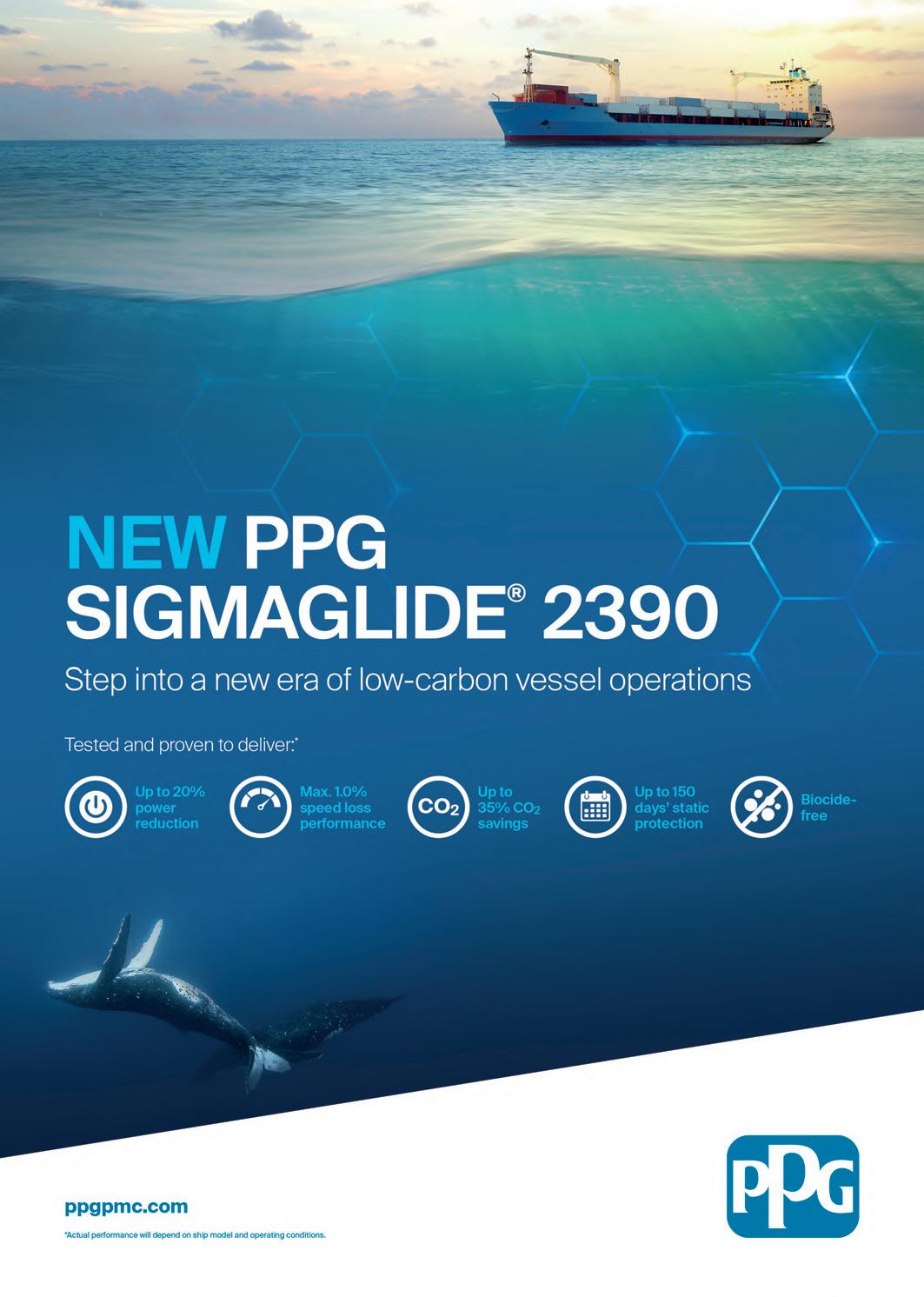
we trade, impose sanctions on goods they do not have, and on people, entities and nations that have these commodities.
“Europe 100 per cent needs edible oils and fertilisers. So, what happens? This distortion fuels the kingdom of the middleman. You do not import directly from sanctioned countries: Instead, the cargo is sold to other countries that don’t apply sanctions. This cargo is then re-exported to the countries applying the sanctions. This is the middleman’s paradise: they benefit from these additional costs. It’s a crazy situation and an awkward one for shippers.”
Since 2001, Genoa Maritime’s crew management has been organised through its Genmarco Maritime Services office in Mumbai, India. Thus, it maintains

a large pool of between 400 and 500 qualified and experienced officers and ratings.
“Ship management has developed very much since 1997 and is becoming more critical,” said Mr Magliveras.
“Nowadays, you must be fully compliant with all the regulations and requirements regarding environmental risk.
“The industry has changed so much over the years. Sometimes there are crazy ideas – look at alternative fuels, such as ammonia and methane. We are not dealing with Einsteins when we are talking about the crew. They are already under too much pressure.
“If we put the obligation on them to utilise dangerous commodities for fuel, then the risk for the ships is much increased. Methanol, for example, is highly flammable and very dangerous.
I appreciate we must improve emissions, but we need to care about safety.
“There are many people around shipping nowadays that don’t know the practice of shipping. It is a tough proposition, a complex profession, and a qualified crew is hard to find. The crew must carry many burdens. If we increase that with sophisticated fuels and safety alerts, I think there will be problems.”
He revealed that another challenge in the industry was the growing regulation around shipping and emissions: “That is very demanding and the most crucial field to stay ahead of.
“Shipping is already heavily regulated, but emerging regulations are becoming too much. We must live with that, but the crew must be the key priority. Yet it is a declining profession, and qualified and loyal crew is hard to find.”
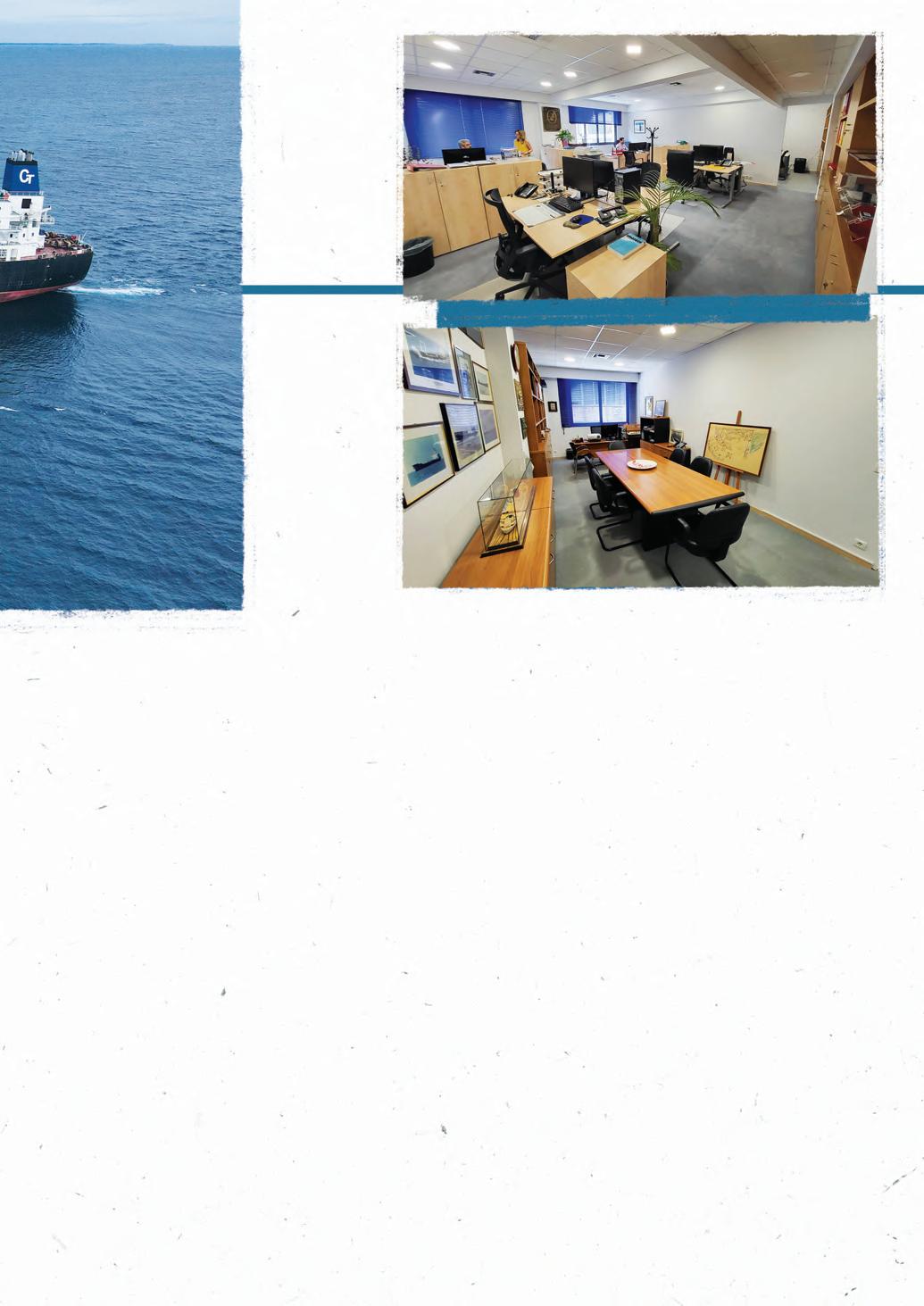
Mr Magliveras highlighted how transp arency and good communication remained the important principles for good relations with crew, clients and suppliers. “Since 1997, Genoa Maritime has handled more than 40 ships,” he said. “Ultimately, to guarantee a client’s satisfaction with good management from Genoa Maritime is the overall experience. To have the ship owner’s confidence is the utmost for a ship manager.
“Shipping remains the cheapest and safest form of cargo transportation compared to road, rail or air,” Mr Magliveras concluded. “But I find there’s a lot of hypocrisy regarding those that seek to govern shipping. There’s no opportunity to discuss their decisions.
“Essentially, we are the last wheel on the train in the decision-making process, however, we have to bear the responsibility of these decisions. Yet, I and all those associated with Genoa Maritime remain firmly grounded in reality.”

Bulk carrier management specialist, Iblea Ship Management was established in Greece in 2021, but it is not a newcomer to the industry. As part of the esteemed Augustea Group, which boasts over 60 years of maritime industry experience and deep Italian maritime roots, Iblea Ship Management inherits the group’s unwavering commitment to continuous improvement and high standards of crew safety and environmental impact; shaping its identity, values and strategy. General Manager Francesca Trotta spoke with Richard Hagan.
Operating on the global market, Iblea Ship Management serves a diverse clientele by offering high-quality ship management services tailored to their specific needs.
Iblea Ship Management’s services range from full technical management of vessels to operations and post-fixing; a meticulous process that ensures contracts are fully resolved in terms of payment and dispute resolution once a vessel has transported goods from one point to another. The company’s comprehensive service offering leaves no need unaddressed, making it a preferred partner for many ship owners around the world.
The company specialises in the management of bulk carriers, providing seaborne transport of major commodities
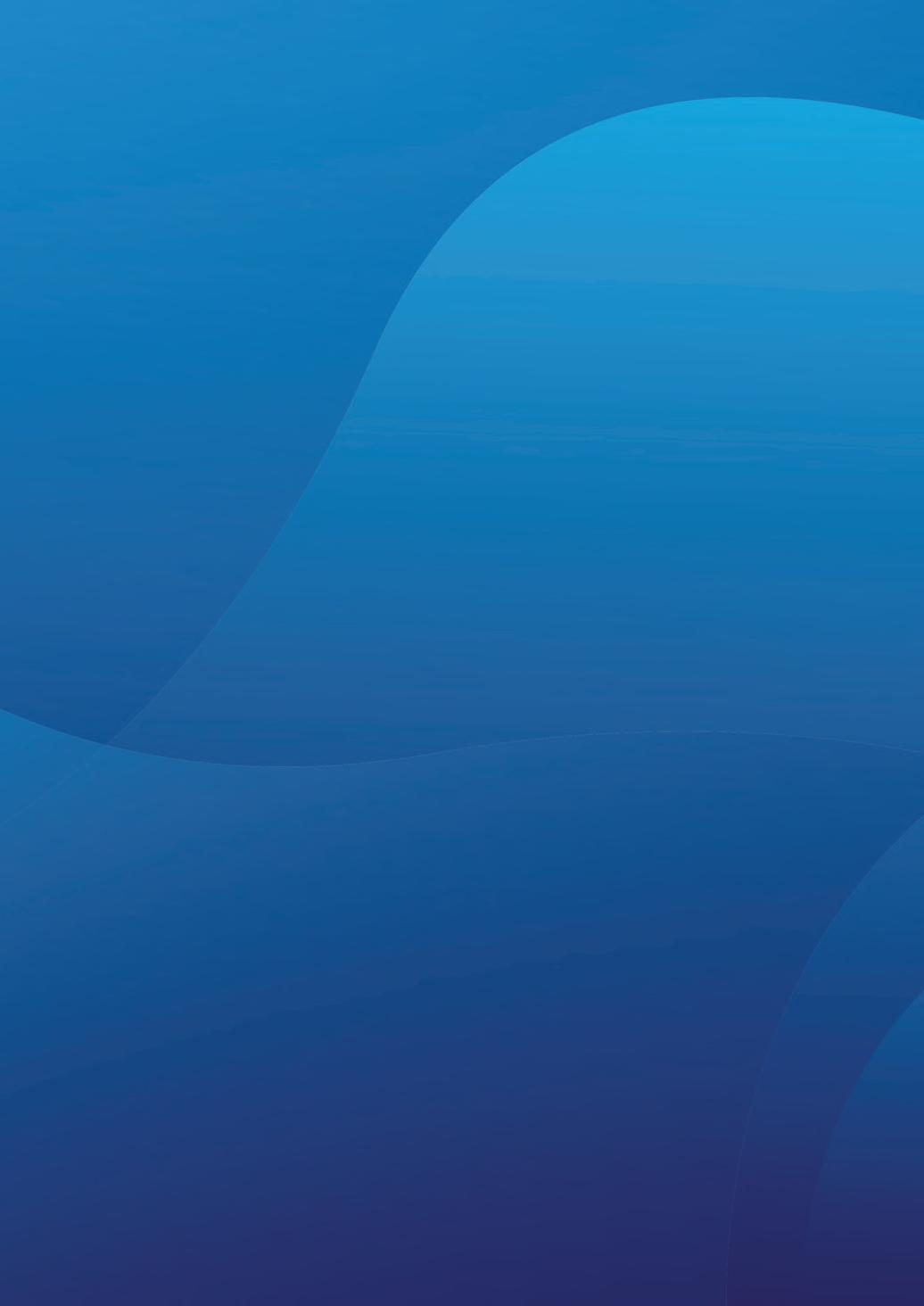
such as iron ore, coal and grains. By mid2023, Iblea Ship Management had 22 vessels in its management portfolio.
This growth in Iblea Ship Management’s portfolio has been steady and sustained, thanks, in large part, to its highly effective people. The company’s bustling headquarters in Athens, Greece, are a hive of activity, housing over 37 onshore employees. Roving superintendents and travelling staff ensure smooth operations between ships.
“We have managed to create what we have now, in Athens, in just two years,” said General Manager Francesca Trotta, as she reflected on the company’s remarkable growth trajectory. “It was a lot of hiring, while still trying to run the
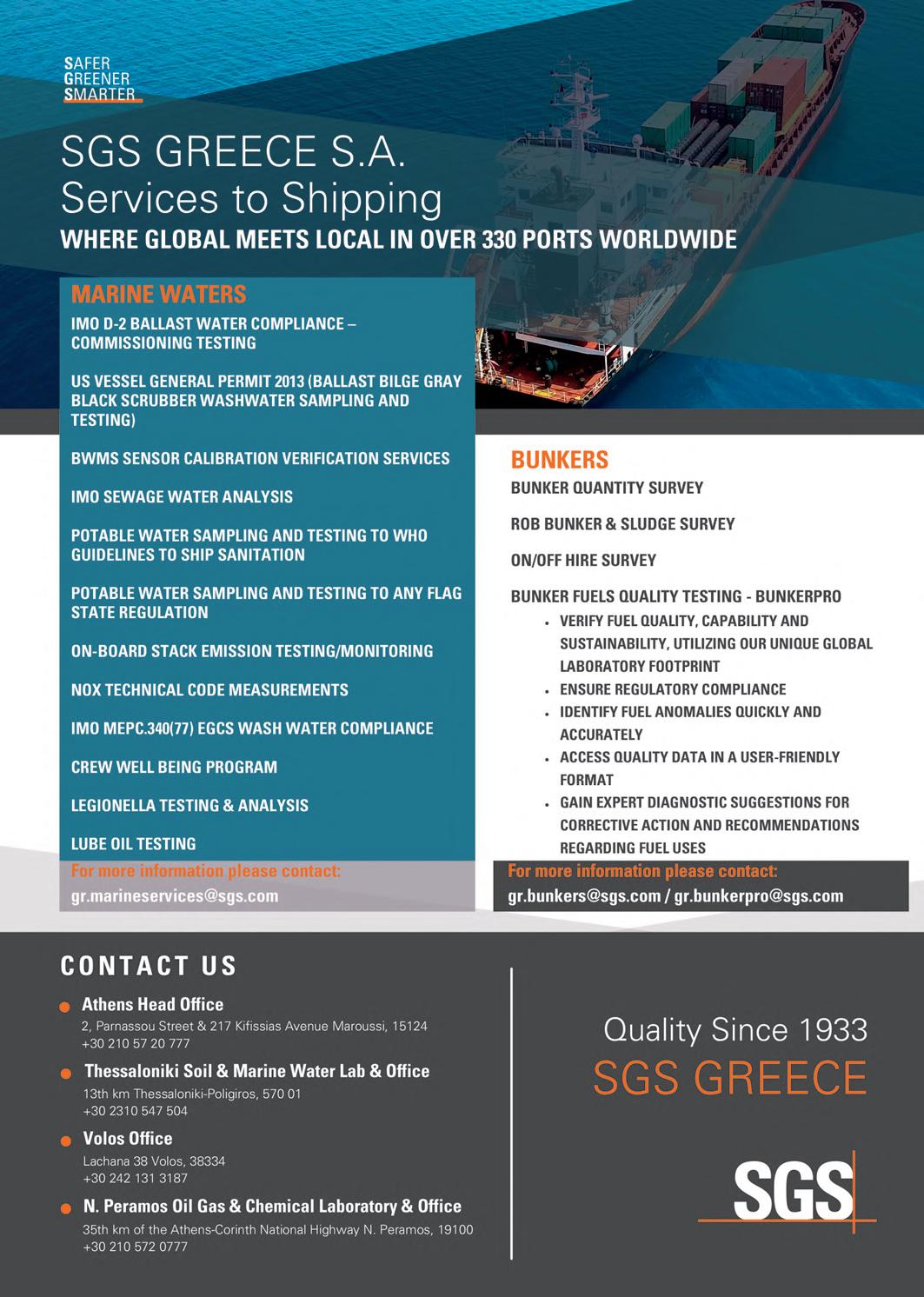
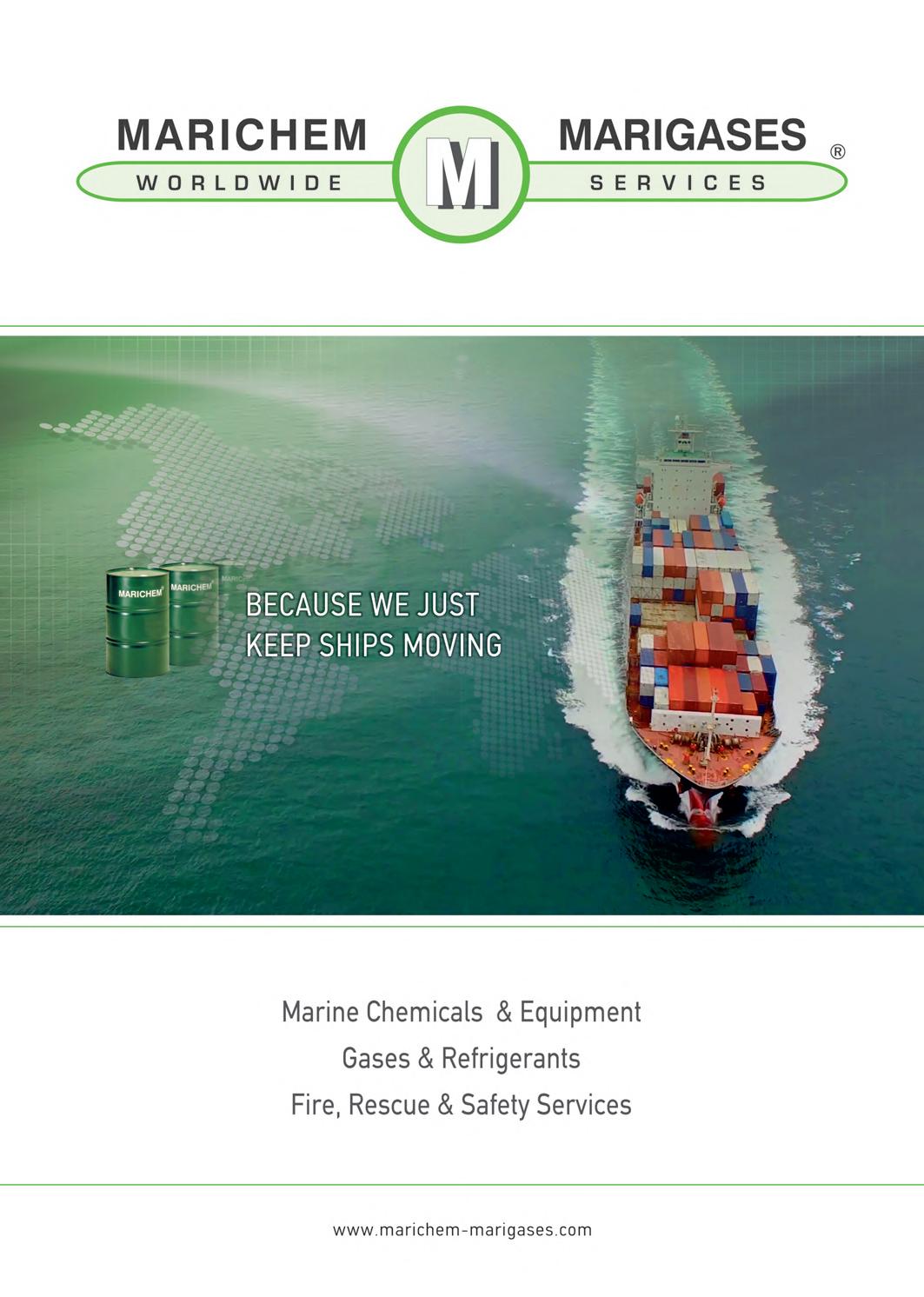
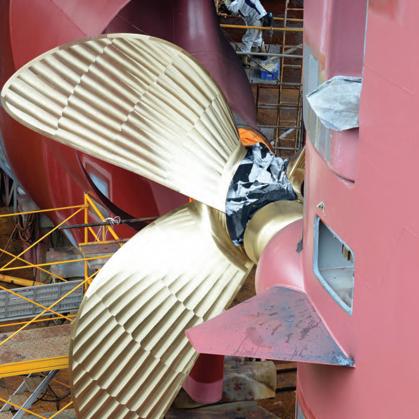
business and service our vessels. This was our biggest challenge and our biggest achievement!”
Augustea Shipmanning is based in Manila and is part of Augustea Group.
Augustea Shipmanning has over 3,000 seafarers to serve over 100 vessels from different clients. The group’s state-of-the-
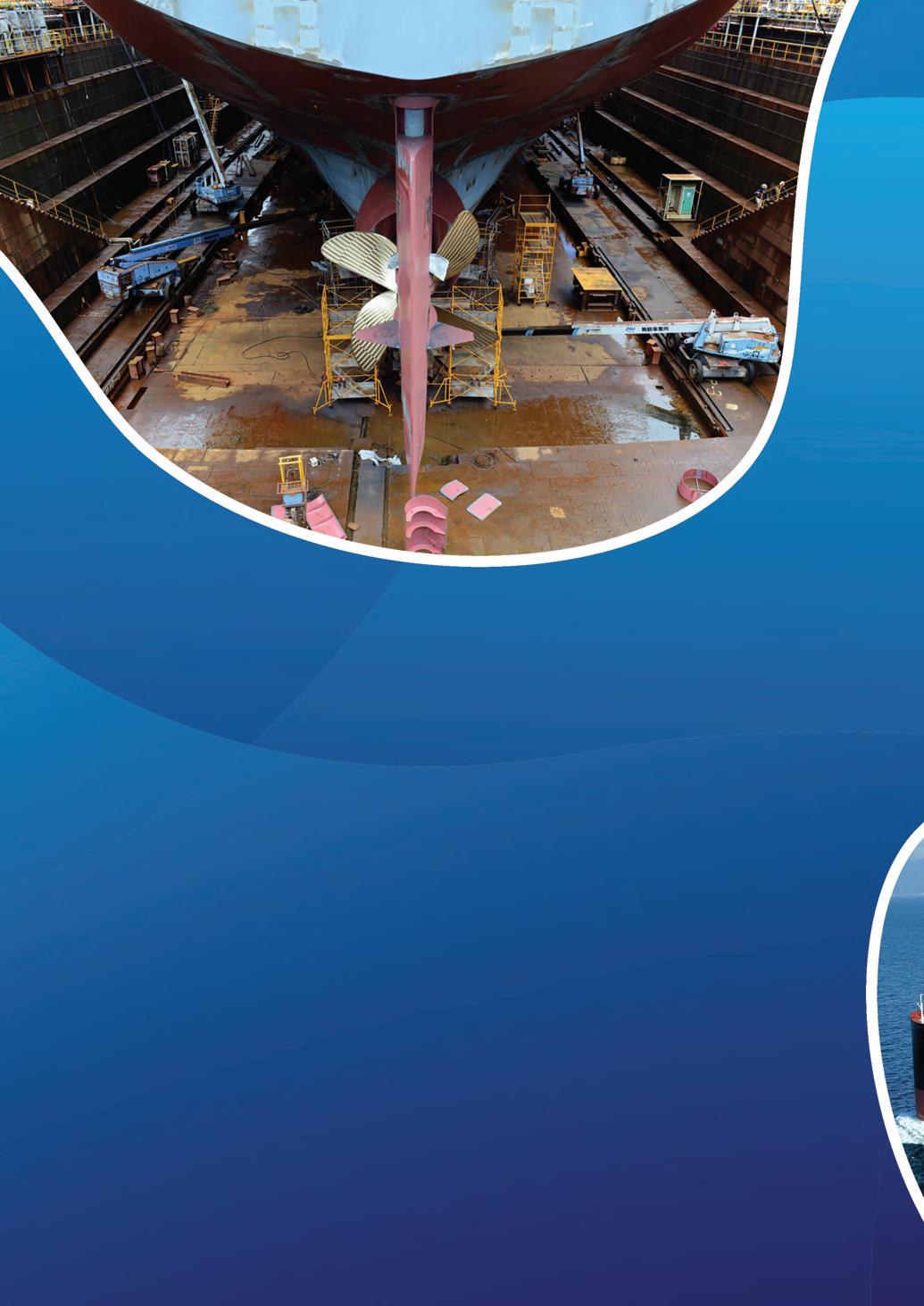
art Italian Maritime Academy (IMA) is also located in Manila and is part of Augustea Shipmanning. In addition, Iblea has a pool of around 300 seafarers.
“Augustea Shipmanning has been around for over twenty years and having it available to us is a huge advantage for our business,” said Ms Trotta. “We frequently send people from the office to train the new personnel there, as well as to meet the crew.”
Despite being in an industry steeped in tradition, Iblea Ship Management is not immune to the digital transformation wave reshaping various industries.
According to Ms Trotta, the adoption of technological advancements that support the company’s daily ship-to-shore operations is still in the testing phase due to inherent challenges with the remote nature of shipping. “Our biggest challenge is communications and connectivity,” she said. “In order to truly harness AI and the
Internet of Things, we require real-time data to be transmitted, which demands very fast communications between the ship and shore.
“We’ve embraced various systems and are trialling various others on our vessels, as well as testing the market to see what else is out there that can benefit our operations.”
Despite these challenges, the company remains optimistic about harnessing the potential of various new tools to improve vessel safety and efficiency. Ms Trotta emphasised the company’s vast maritime heritage as evidence of its ability to adapt to these new technologies and challenges: “Greece has always played a leading role in the maritime industry and that will continue to be the case. Greek shipping companies possess expansive experience in shipping as well as industry knowledge and, altogether, a vast fleet of vessels.

“I believe that Greece’s strongest point is its capacity and capability to successfully adapt to changing market conditions, challenges and global trends. Our goal is to leverage the best of both: our Italian heritage and new Greek roots and personnel.”
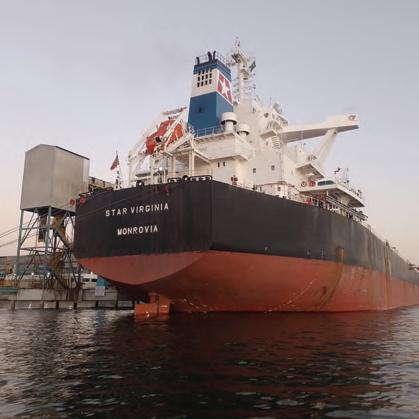


With the human and technological infrastructure firmly in place, Iblea Ship Management is now focusing on expanding its client base. The company is keen to demonstrate its track record to potential clients and show them the value it can bring.
As part of its competitive strategy, Iblea Ship Management is dedicated to providing a more personalised service, unlike larger industry players. “What we offer is a more tailored service,” said Ms Trotta. “For example, we have weekly calls with our clients where we update them on their fleet –just generally; even if there aren’t any issues

to discuss. We update them constantly on the fleet’s condition. We share info and pictures with them. We don’t hide anything from the owners.”
In addition to those regular calls, Iblea Ship Management also provides owners with a comprehensive quarterly report, reflecting the current status of all of the company’s pre-agreed KPIs with the customer.
Meanwhile, Iblea Ship Management is a member of RightShip and has embraced its inspection regime, adding further credibility to its technical management service. The company is also a member of INTERCARGO, a key international forum representing the interests of dry cargo shipowners, and it is certified for ISO 9001, 14001 and 45000.
With its unwavering commitment to safety, operational excellence and transparency, Ms Trotta emphasised that Iblea Ship Management is well-positioned

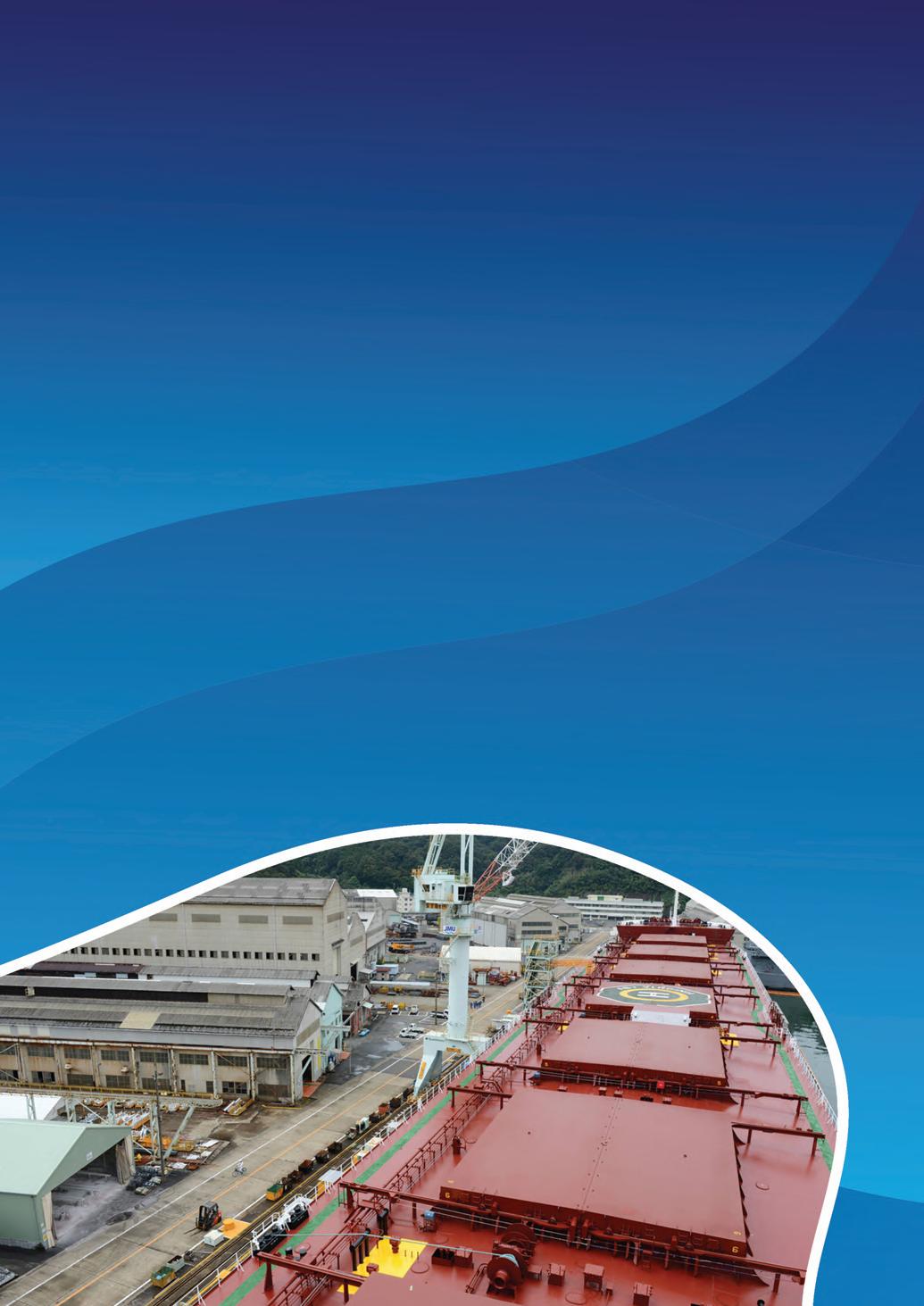


to sail its clients towards a future filled with success and growth in the maritime industry. “We have the capability to immediately run your vessel,” she said. “We have done a lot of work to earn strong vessel compliance scores and we have the human capacity to look for more clients, so our mission right now is to tell the industry that we’re here; we have the track record and we’re ready to serve you.
“In the meantime, our goal is to work every day to deliver even better quality and optimised costs for our clients.”
Concluding, Ms Trotta reflected on what it means to work in shipping: “I love the challenge of the job, and I love the fact that shipping is such a highly dynamic environment: there’s very little boredom in this business. Shipping is not simply operating vessels – it’s an intricate, complex business with many moving parts: it’s about people, economics, and engineering.” n
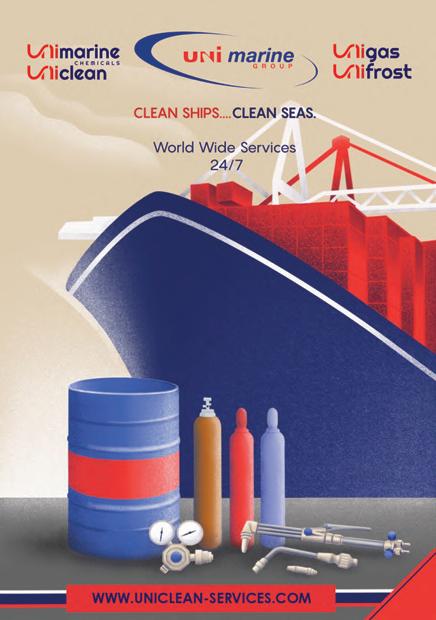

Blue Fleet Group has over 60 years of experience in ship-brokering, chartering and ship management. With the third generation of the Arsenal FC-loving family now navigating new waters in the ship-owning business, the company’s future looks bright. Chartering Manager Cherif Khoury spoke to Andy Probert about the venture’s desire to maintain its premier league position in volatile times.


Filled with colourful tales of the family’s maritime past, Chartering Manager Cherif Khoury would inevitably step on board the family business and continue t he tradition his grandfather Edward began with the opening of Lebanon’s first shipping agency in 1961.
Mr Khoury’s father, Roy, went on to establish his name in the ship managing and chartering space and operated 16 dry bulk carriers. Ultimately, Blue Fleet Group was founded in 1996 and now, from its Lebanon and Greece offices, manages 36 vessels with deadweights ranging from 10,000 to 56,000 tonnes, carrying more than three million tons of dry cargo annually, internationally.
Blue Fleet has grown through maintaining close relationships with several Middle Eastern ship owner clients over the last three decades.
Too young to remember his pioneering grandfather, who died when Mr Khoury was just two, the third generation is intent on maintaining that indelible link with the sea. “From the age of six years, I was vis iting the company office and became enthralled with the matching of cargo and ships,” said Mr Khoury. “From that moment, I knew I wanted to be in shipping.”
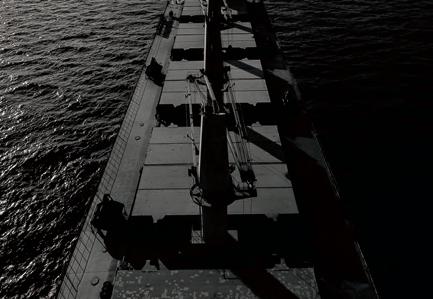





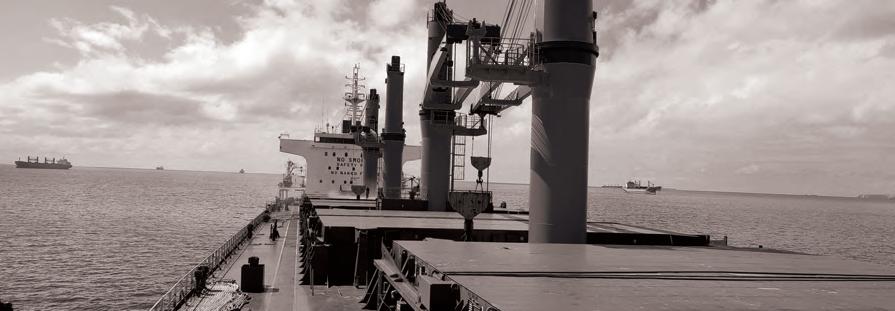
That dream came true when he joined the business in 2012, having completed his bachelor’s degree in maritime business and maritime law in Plymouth, and his master’s in shipping, trade and finance at London’s CASS Business School.
Following a decade’s experience, Mr Khoury and his father decided in 2022

to go to the next level: they became the owners of four Supramaxes of 55,500 tonnes dwt and two Handymax vessels up to 36,000 dwt to add to their 30-strong managed and chartered fleet.
Brought up on a diet of top-flight football courtesy of Arsenal back in London during his formative years, Mr Khoury,

along with his father, named most of their vessels after former and present stars of the Arsenal team. Hence Saka, Bergkamp, Ødegaard, Henry and Martinelli, as well as Gunner.
The entire fleet, comprising eight Supramaxes and the rest Handysize, is operational globally on the spot market.
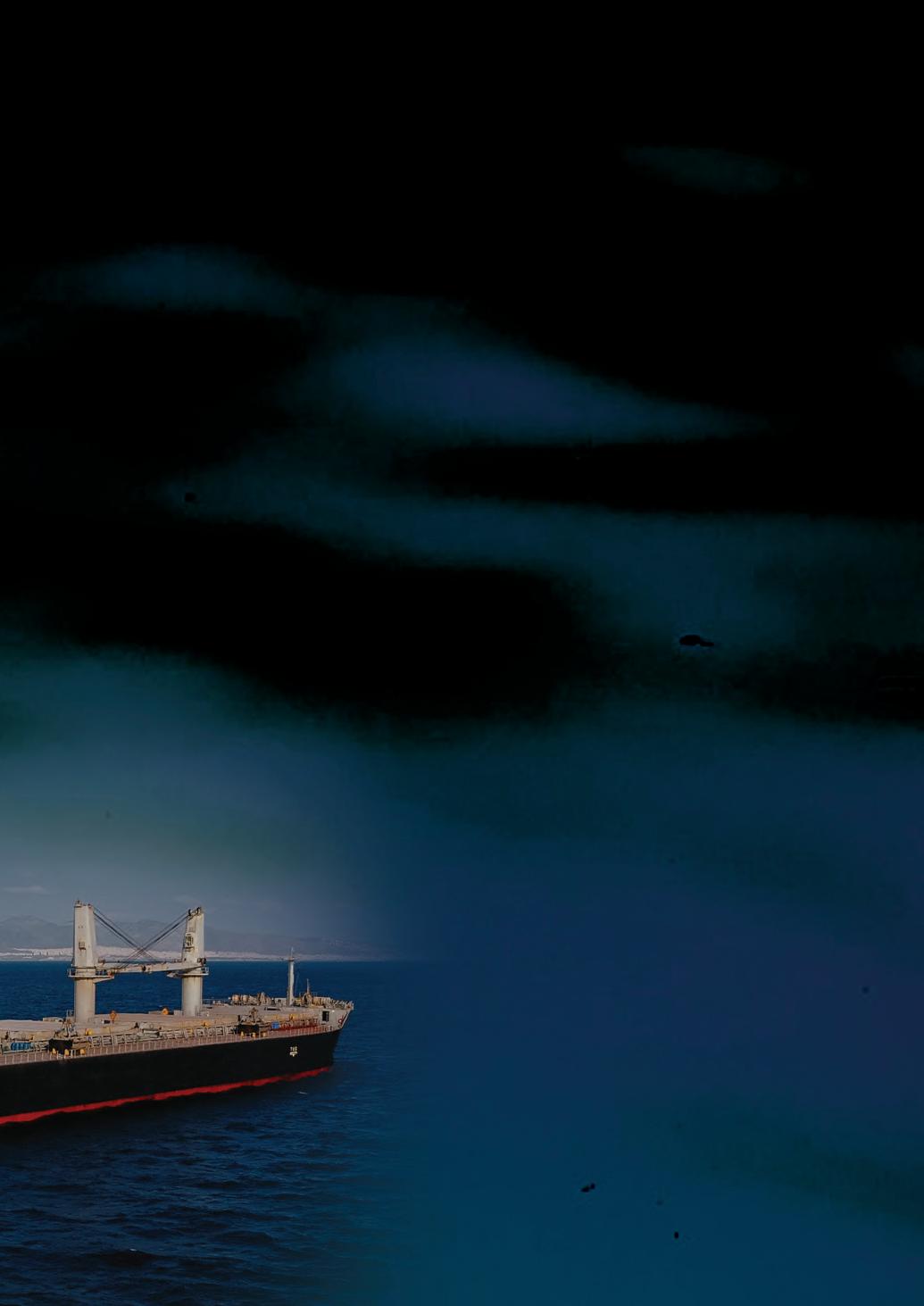
“We have a special relationship with a Lebanese trader who imports rice into the Mediterranean region. We transport around one and a half million tonnes of rice in bags or slings a year, either utilising our vessels or other ships,” said Mr Khoury. Sugar, grains, soya and corn are also popular dry cargo shipments on trade routes, including the Ukraine grain corridor.
“For example, Ødegaard is trading coal from Southeast Asia to China; Saka and Henry are discharging rice in West Africa,” Mr Khoury explained. “Bergkamp is taking grain from Ukraine to China, and Martinelli is currently loading in Odesa (Ukraine).
Gunner is discharging grains in Yemen from Argentina.
“As our vessels are trading in some of the world’s hot spots, such as Yemen, Ukraine and West Africa, Blue Fleet is a wellknown client for extra war risk insurance.”
The Group has a diversified approach to business, including ship managing some of the vessels. Its chartering business is a particular expertise, with ship owners and


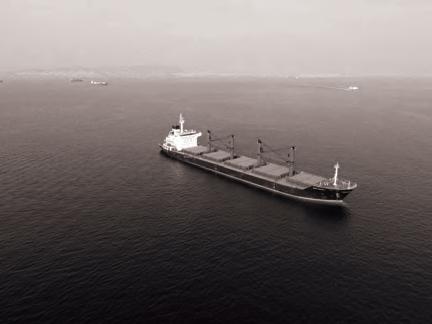
direct charterers entrusting their cargo to the company.
“Such substantial foundations have allowed the Group to work on an exclusive basis and be at the disposal of charterers who we have worked with for a long time,” said Mr Khoury.
Over the years, the Group, a member of the Baltic Exchange of London, has closely monitored the ship brokering sector, gathering information from its associates, first-class charterers and co-brokers. As a result, it can adapt, make prompt decisions and rapidly deploy the fleet.
Mr Khoury said its crews are Middle Eastern, who he described as ‘hard-working and tenacious’. The Group is also a member of BIMCO, one of the largest international
shipping associations representing 60% of the world’s merchant shipping tonnage, with members in 130 nations.
“I know financing in the maritime sector can be a headache for shipowners, but for Blue Fleet, it was relatively smooth when we purchased our ships,” Mr Khoury explained. “We utilised three global financial houses, even though we are located in Lebanon.
“Strangely, given the Lebanese shipping i ndustry, its culture and country, the biggest challenge we faced was hiring people. There are many ship owners here, but not the potential to find staff for crews and chartering.
“It’s not the inability of the Lebanese people to perform such jobs, but the lack of knowledge that surprised me. However, as Lebanese, we are looking to raise skills more as we want to recruit locally, help them and support the economic situation.”
“Now, as shipowners, we are utilising clients, as we have strong bonds in the rice market and with charterers and traders. Having vast experience in the chartering sector gives us a distinct edge in the market.
“We value quality over quantity in relations, which means we work only with trusted people in business. The relationships flourish and are adaptable to each other’s demands and needs. That is what we value.”
The company welcomed advances in green energy and was looking into collapsible water sails to drive vessels forward and new anti-fouling coating concepts to protect its ships.

Blue Fleet has enjoyed a 10% uplift in business growth in recent years due to its proactive approach to the spot market and full fleet utilisation. It has doubled annual tonnage from 1.5 million in 2012 to over three million in the past three years.
With that in mind, father and son are now weighing expansion options and looking to step into the Ultramax market in the next 12 months. “I believe it is a fascinating segment,” Mr Khoury said. “We have done the research, and the OPEX is comparative to within about 5 per cent of a Supramax vessel. The difference being that as you can load more, there’s greater profit margin potential.
“The desire to be a ship owner was driven by my father’s tales of past shipowning adventures, but also the fact that we do so much of the work for ship owners,” Mr Khoury concluded. “We know the market, the traders, the charterers and the supply chain.

“It’s a 24-hour job, but I enjoy it and have no regrets. Blue Fleet is well-positioned for the future. It has a great team, and each member works hard to drive the company forward in a volatile market.”
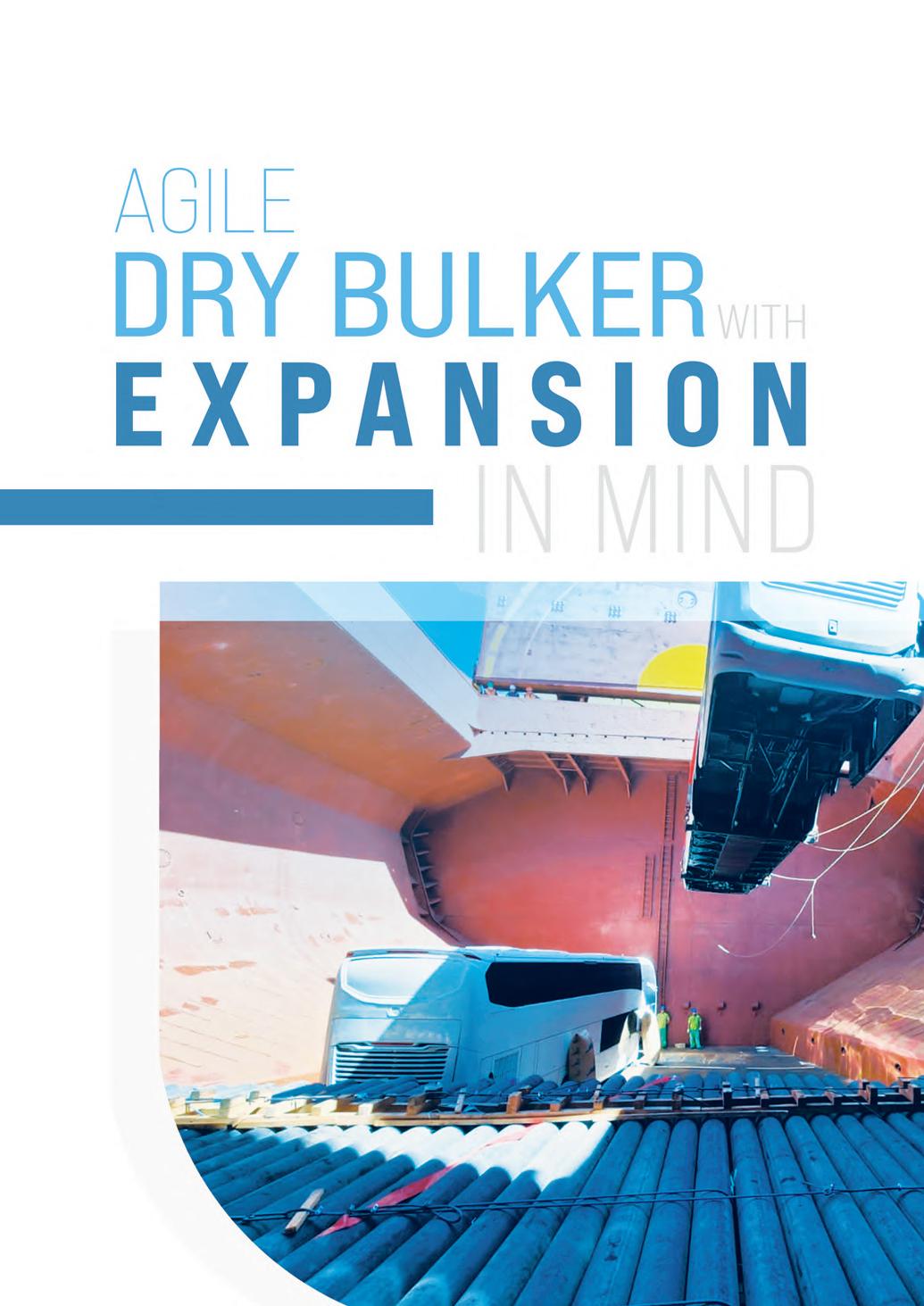

Norvic Shipping has the world in the palm of its hand as a global specialist in shipping dry bulk commodities. Driven by strong personal ties with clients and shipowners, it has a ship operating platform that connects cargo with vessels on the most efficient routes. The billion-dollar bulk-operator is primed for further expansion, with a foray into long-term vessel chartering and in handling special project cargos. Commercial Director and Co-Head of Atlantic Business Unit Niels Kay Kjaer-Petersen discussed the company with Andy Probert.
For a company that began as a oneman band in a Toronto basement to become a $1 billion plus venture by 2022, AJ Rahman’s Norvic Shipping is a model of international success. Yet, as with all enigmatic entrepreneurs, the goal is to aim even higher.
The dry bulk operator has signalled intentions to diversify and deepen its capabilities by acquiring three newly built dry bulk vessels on long-term charter from Japan, as demand for its services
shows no sign of slowing. And having secured a $42.5 million working capital credit facility to bolster its growing physical presence in key markets and strengthen its project cargo division, the company is hungry to extend its global reach.
Norvic has a focus on all basins alike: Atlantic, Indian and Pacific Ocean. Chartering and Operations services are underpinned through offices in Copenhagen, Houston, San Francisco, Rio de Janeiro, Dubai, Mumbai, Delhi, Shanghai and Singapore.
Its Atlantic business unit handles all chartering activities in the Atlantic basin, spanning the east coast of the Americas to West Africa and Europe, including the Mediterranean and the Black Sea. The west coast of the Americas is covered jointly by the Atlantic and Pacific Business Units.
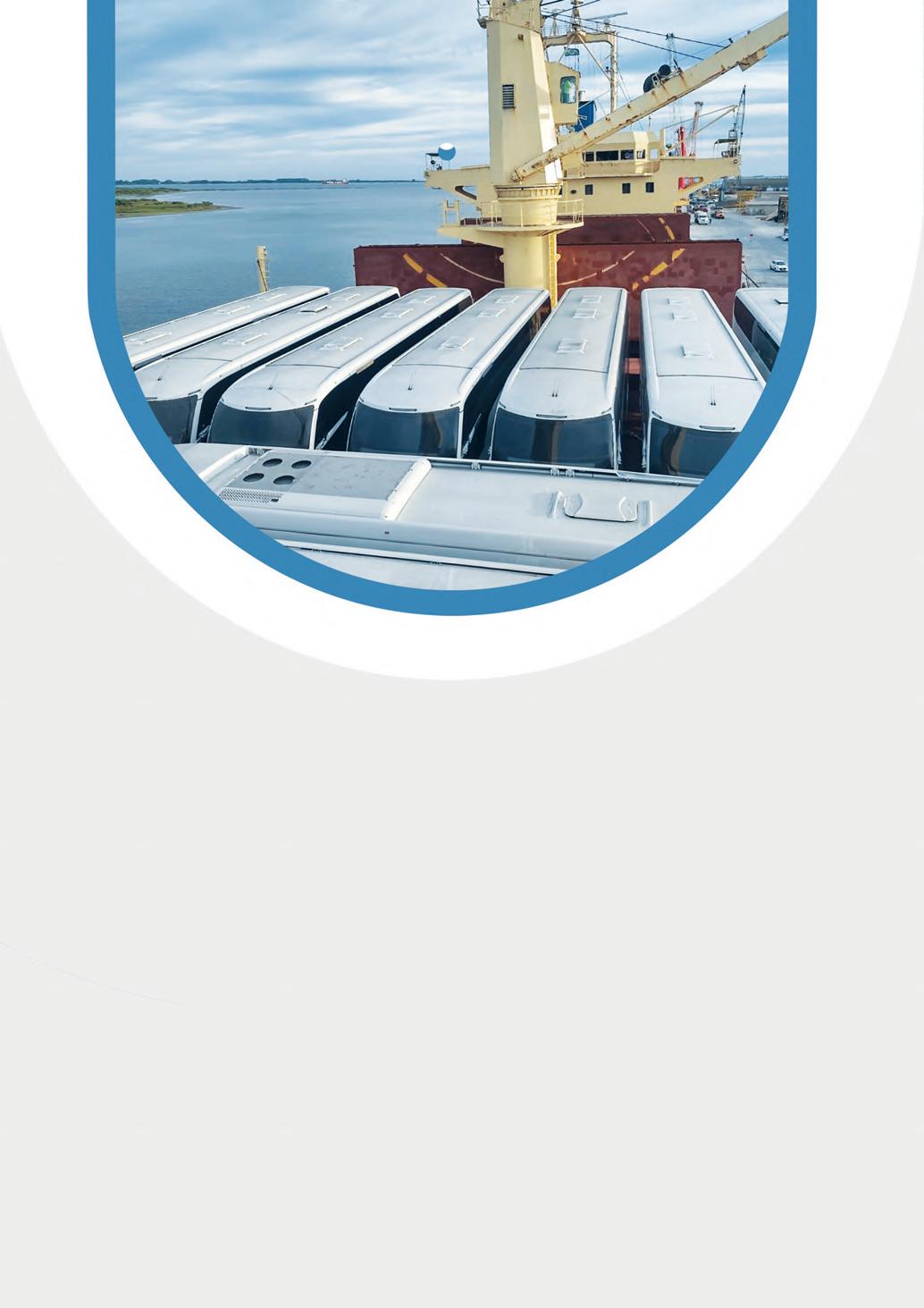
Niels Kay Kjaer-Petersen is the Commercial Director and Co-Head of Atlantic Business Unit and, since his recruitment about four years ago, has been instrumental in Norvic transcending from mainly being a short-term charterer into the long-term charter landscape it now covets.
“In my time, the Atlantic division has grown considerably and employs more people now in all 3 offices, and it has, in line with Norvic’s aims, been a success story of continuous growth,” said Mr Kjaer-Petersen, who has been in the shipping industry for more than 30 years.
Initially a crude oil and petroleum transportation operator, Mr Rahman pivoted Norvic Shipping into shipping



dry com modities in 2012 and the company has grown rapidly. Today, it has 11 offices globally and an experienced team of 180 people.
Norvic operates an all-inclusive, agile business model that inspires innova tion among its workforce. Another standout is that the company, rather than owning dry bulkers has adopted a lean, light operation, meaning it does not own any ships.
Mr Kjaer-Petersen outlined how Norvic’s asset-light approach enabled it to offer clients lightning-quick freight and logistics services. It trades in all dry commodities, inc-luding minerals, metals, grains, clinker and fertilisers. It presently employs around 135 vessels across its global network, covering Handysize, Supramax and Panamax bulk carriers.
“Norvic is one of the fastest-growing bulk operators, now moving over 60 million

tonnes of cargo annually. It has over 700 clients that include miners, producers, traders and end-users,” he said. “We have trade operations in North America, Europe, the Middle East and Asia.”
Norvic Shipping’s Project Cargo division, headed by Kasper Bihlet, has been highly successful since its launch about a year ago. The specialist division transports out-of-gauge cargo such as wind turbine equipment, construction materials, vehicles and offshore components.
The team can be asked to transport bus shells one day and huge turbine blades, each measuring 82 metres in length, the next.
Mr Kjaer-Petersen acknowledged: “Project Cargo is currently negotiating some exciting projects that may come to the fore in the coming months. The division wants to expand its workforce,


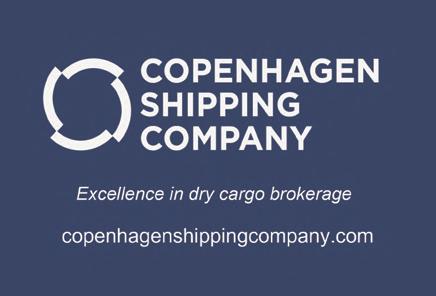

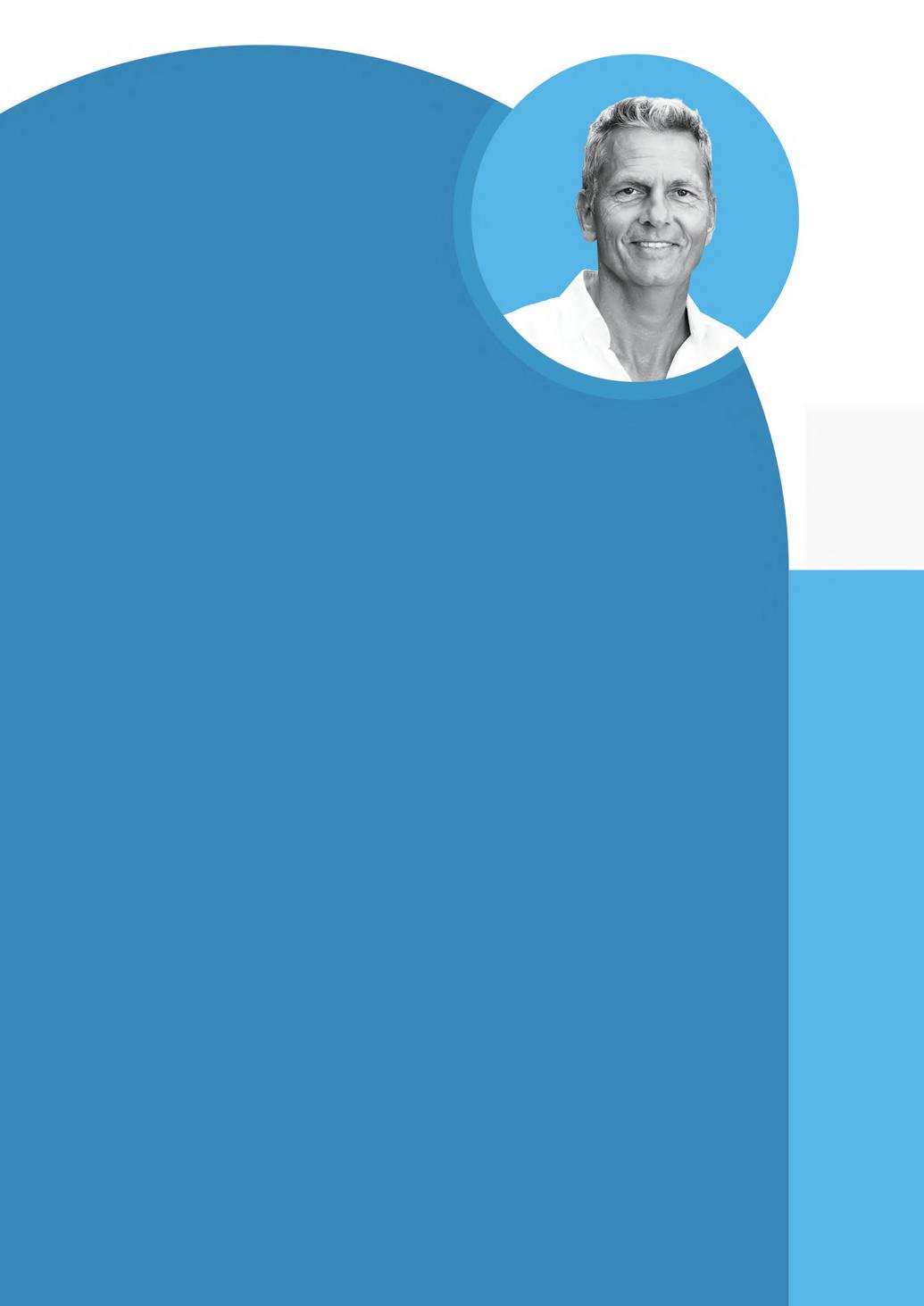
recruit natural problem solvers and help support Norvic’s ambitious growth targets.
“One of the wonderful experiences of being with Norvic is the can-do company culture fostered throughout the workforce. It has a progressive and active ownership that seeks to empower its people. Mr Rahman has a great approach, never says no to a good idea and is always open to getting into new trades and ventures.
“Norvic has been successful because it acknowledges that the dry bulk industry is still a personto-person business. It is essential for us to have the right people connecting with clients. While highly agile in business, the key is maintaining a personal touch. Ultimately, we are dealing with people, not computers. Building strong persona l and professional relationships across our network has ensured greater collaboration.”
Mr Kjaer-Petersen noted that Norvic remained super-motivated to build on its growth and strengthen its
dominance in what can be a highly volatile and unpredictable sector.
“Our immediate ambition is to increase our fleet to between 200 and 300 ships, and we are geared for that,” he explained. “Norvic has always been respected as a short-term charter operator but is now getting into the long-term game.”
The company is set to take on three new build vessels – one Ultramax and two Handymaxes – in 2023 on fiveyear charters from Japanese shipyards. The first will be a 64,000 dwt bulker from Japanese shipowners following delivery from Imabari Shipyard. The vessel, Norvic Copenhagen, will enter the Norvic period fleet and service customers worldwide.
“These three ships will obviously help expand the long-term fleet, as well as diversify and deepen Norvic’s service offering globally,” Mr Kjaer-Petersen said. “Building a long-term charter profile is one that I am highly involved in. The new vessels are in response to our growing business and commitment to IMO’s environmental regulations to
reduce the carbon intensity of ships by 40 per cent before 2030.
“The decarbonisation challenge is one being faced by the entire dry bulk industry, and not just in terms of legislation. BIMCO is making time-charter clauses for ship owners in this respect, but if they become too strict, they could be difficult to navigate for the time charter operators.”
Norvic, further bolstered by securing a $42.5 million working capital credit facility to finance its growing physical presence in key markets, is also considering buying vessels and becoming more involved in dry cargo logistics rather than just being an operator. The company aims t o do this without compromising the

agility in the market and to keep its asset-light approach in general.
The aim is to continually build on Norvic’s experiences and to become a complete end-to-end dry bulk transportation logistics and solutions provider. “Like all operators, N orvic is facing competition,” concluded Mr Kjaer-Petersen. “The markets are extremely transparent, and it’s difficult to find your niche in trade, but Norvic still believes it has some angles in both commodities and trades, and we continue building on those strengths.”
“Over the last four years, Norvic has buil t fantastic teams with a mix of youth and experience, and the company is now primed to drive its expansion aims.” n

seven seas, five oceans, one voice

asenav teignbridge propellers tema shipyard wouter witzel heysea yachts moteurs baudouin sd marine interiors oms group
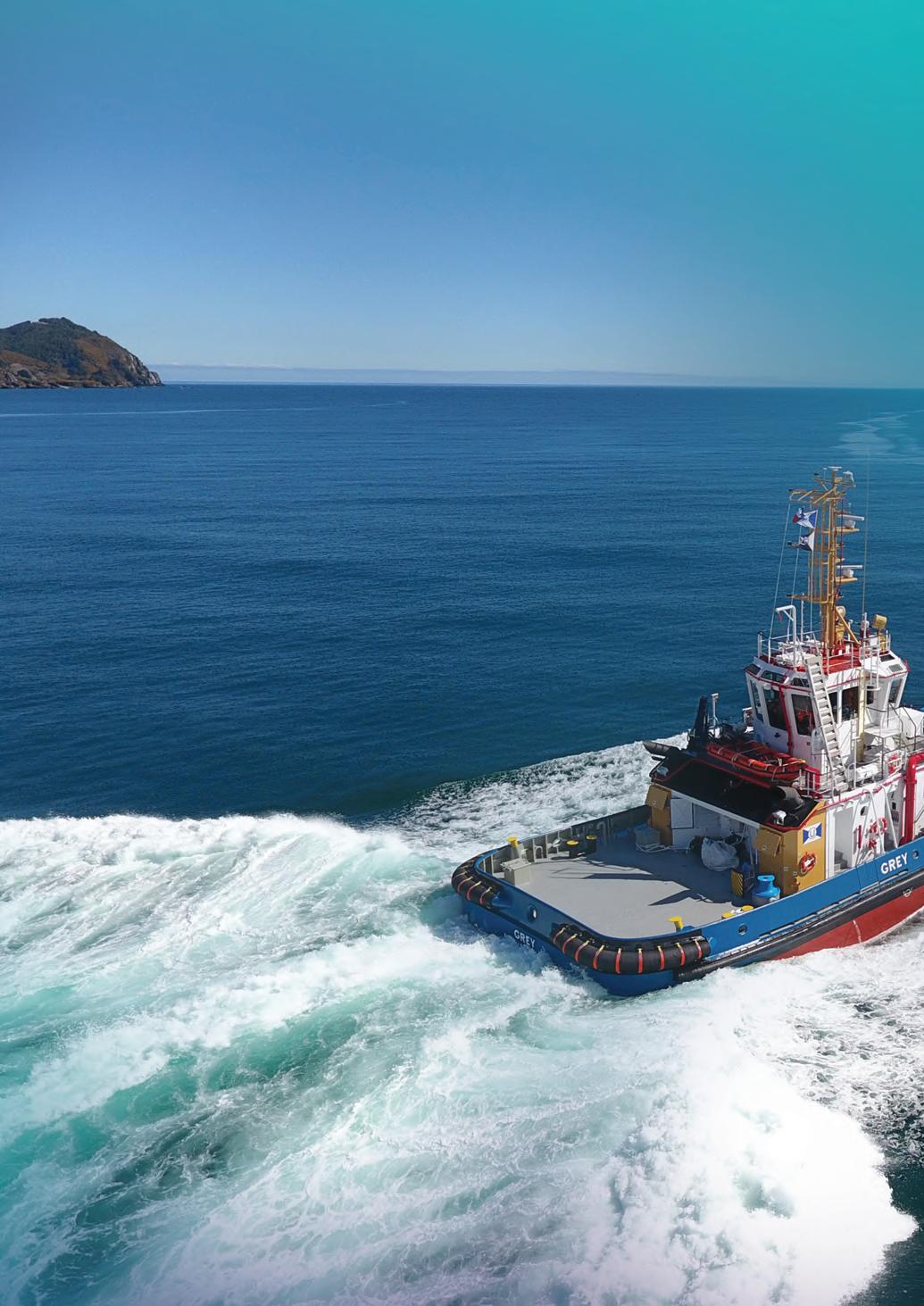
Astilleros y Servicios Navales (ASENAV) continues to set the standard as a leading shipyard in South America for its world-class quality approach and adoption of new technologies for ‘greener’ shipping. With several projects on the go or planned, the future looks immensely bright, confirmed Business Development & Marketing Manager Germán Schacht in discussion with Andy Probert.
ASENAV, the famous Chilean shipyard, is experiencing an immensely productive period, having navigated through Covid and being close to its 50th anniversary. It has confirmed new shipbuilding projects, approved or planned, through 2026.
The family-owned shipyard, located on the Calle-Calle River in the city of Valdivia, 15 km from the Pacific coast, continues to be a model of world-class production quality and at the forefront of technological development in meeting modern challenges for ’greener’ ships. Business Development and Marketing Manager Germán Schacht is the third generation to enter the business, founded by his grandfather, Eberhard Kossmann.

“Our shipyard offers a global showcase for Chilean engineering and is recognised as one of the most important on the Pacific Coast,” Mr Schacht said. “The shipyard continuously scales the highest quality standards required and is a renowned shipyard in South America, which comfortably maintains itself competing shoulder to shoulder with global players.”
ASENAV followed up on the completion of two vessels for the Chilean aquaculture industry: Patagon X, a 69.5m live fish transport vessel and the tenth construction for Patagonia Wellboat, a leader in the live fish transport vessels segment of Chile, and the Owurkan, a first, unique deworming ship of its kind developed to treat different diseases that affect salmon.
Today, ASENAV nears the delivery of the Patagon XI, a live fish carrier with a fish tank capacity of 3,000cbm. The 80m vessel built for Patagonia Wellboat is diesel-electric powered and will be one of the largest vessels built in the Americas for the salmon farming industry, with Chile second only to Norway.
“The ship is equipped to reduce its gas emissions” said Mr Schacht. “Her size reflects the growth of the industry. With a large cargo volume in two holds, she can transport up to 400 tonnes of fish from the farm site to the processing centre. That means improved efficiency, better loading and unloading times, and fewer hauling trips.
“The ship has an oxygenation system based on low pressure and high water flow. This allows greater efficiency in


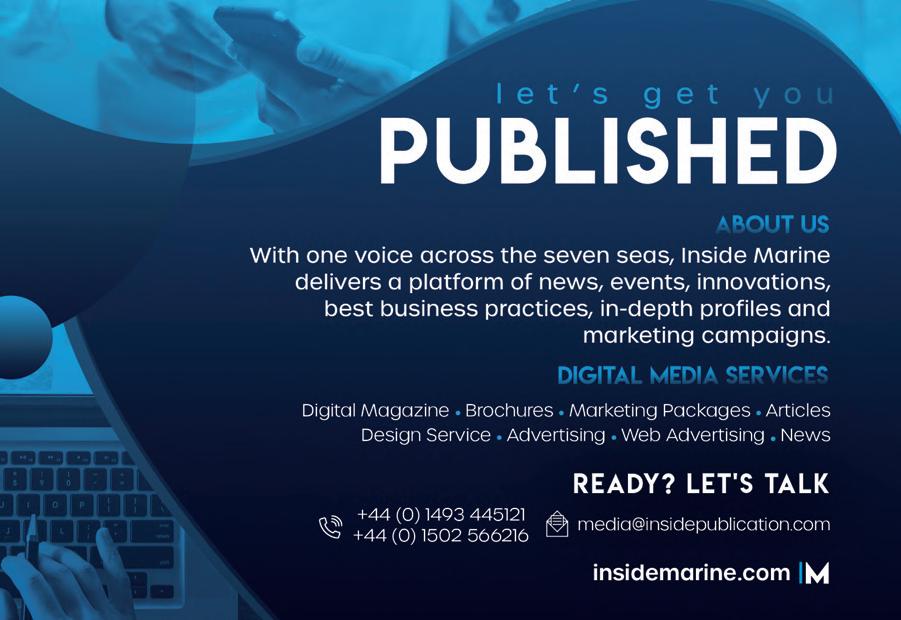

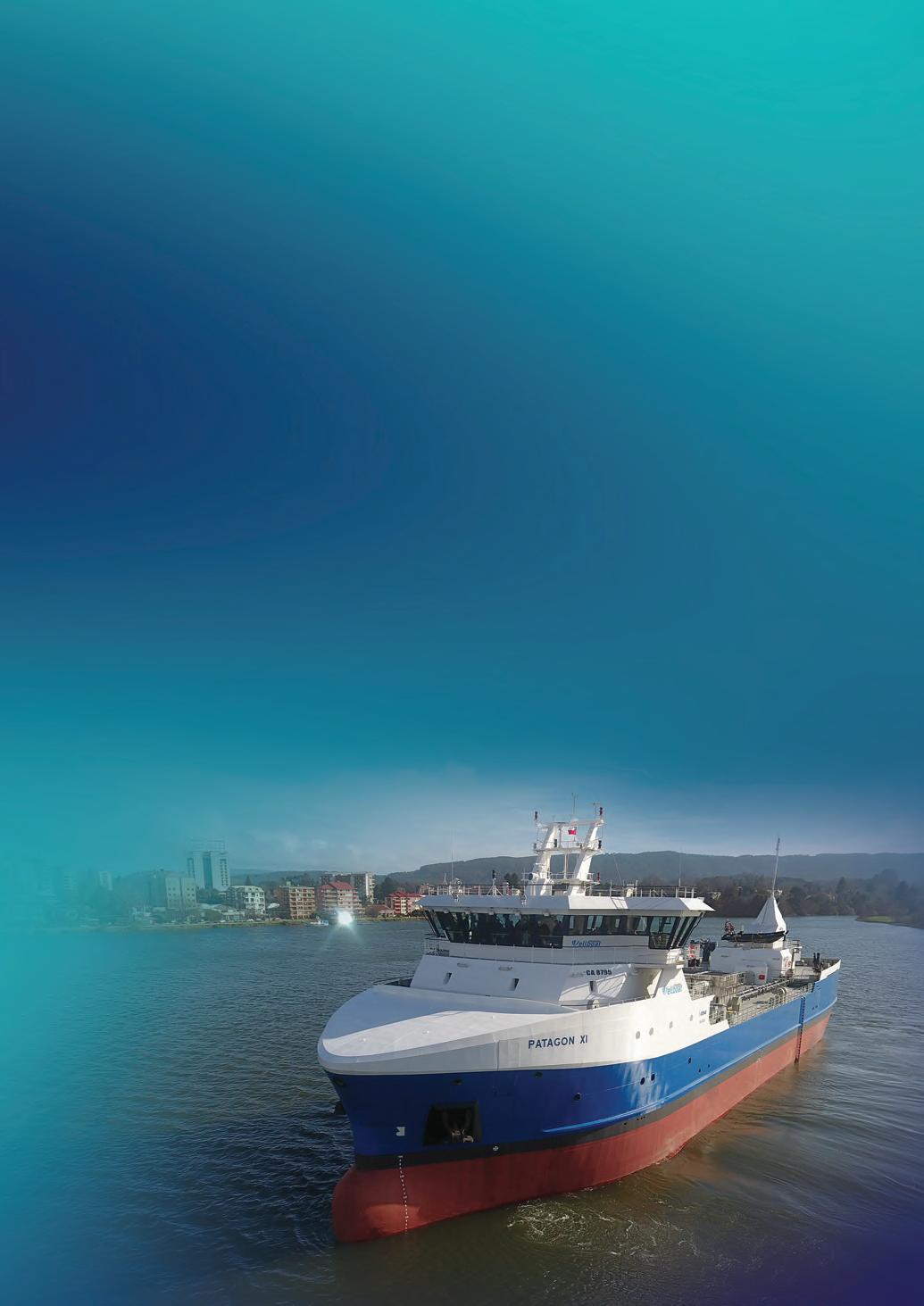
achieving oxygen concentration levels and treats the water discharged into the sea so that it does not contaminate the water in the area where the ship operates or affect local biodiversity.”
Another recent milestone was the construction and sale of a powerful speculative 25m ASD tug with 75 tonnes of bollard pull to the customer Ultratug. The ASD-type tug, designed and built by ASENAV, named Grey, is equipped with a firefighting system, MAN engines, a carbon fibre shaft and Kongsberg propellers. It is already operating in the port of Arica.
“The speculative nature of this project testifies to the strong financial position of the shipyard to finance the construction itself, its precision in cost control, discipline in execution time and trust in the technical abilities of our staff and suppliers,” said Mr Schacht. He also anticipated the growth and needs of the tugboat industry. Ultratug and ASENAV enjoy an invaluable long-term relationship dating back
30 years. ASENAV has built 32 ships for this company, with the first still operating in Pisco, Peru.
One of the main objectives of ASENAV is to deliver a 31m fishing and oceanographic research vessel for the Instituto de Fomento Pesquero of Chile. This will be the first oceanographic research vessel designed and built in the company’s 50-year history. Scheduled for the end of 2023, it will be used for maritime exploration for scientific purposes, operating along the Chilean coast and navigating the fjords of southern Chile. She has been named in honour of the Chilean oceanographer María Ángela Barbieri.

The vessel will capture fish, crustaceans and other species for research and will have scientific equipment that makes it an optimal vessel for meteorological data. Its main features include a 3m draft and low emission and vibration systems, which allow it to work in shallow areas while being less invasive to the maritime ecosystem.
“This demonstrates the great confidence that national institutions have in the worldrenowned capabilities of our shipyard,” Mr Schacht said. ”A ship built in Chile for the country’s maritime navigation, and in honour of a world-renowned biologist, is a source of great national pride.”
ASENAV plans to build another speculative tug, the RAstar 3200-W Escort Tugboat. The 32m vessel, with 80+ tonnes of Bollard Pull, has been designed with precision by the Canadian engineering office Robert Allan and represents the first alliance between both companies.
“This project provides the shipyard with a great opportunity to expand its presence in other international markets,” said Mr Schacht. “Given the success in selling its first speculative tug, Grey, the shipyard’s strategy is to build even bigger.
“We chose this larger and more powerful design, where its manoeuvrability, speed and strength stand out, as we see that the market needs these boats to operate in different formats globally.”
The vessel will be easily navigable by towing the vessels laterally, maintaining adequate stability during entry and exit to and from terminals, as well as navigation through demanding areas. It will be equipped with a firefighting system,

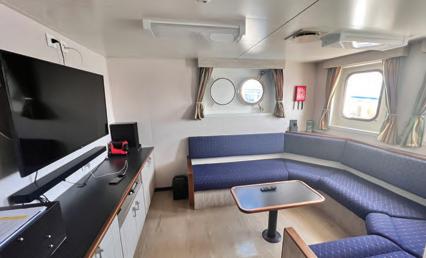


a misting system to allow the tug to tackle fires more safely, and will be equipped to meet Tier III emission reduction requirements.
In 2024 ASENAV will celebrate its 50th anniversary. And while it is on its way to celebrating half a century of existence, it is already working on plans to continue positioning itself as a leader in maritime solutions on the Pacific Coast. One such development was recently confirmed: project number 200 will be a ferry that will contribute to the connectivity of the

Chilean continental zone with the large island of Chiloé.
Designed with a maximum load capacity on deck of 350 tonnes, this ship will measure 70.9m in length, 17.3m in width, while its height will be 2.8m. With these dimensions, the ship will operate to transport people, vehicles and other types of cargo.
The German Chamber of Commerce recently recognised the shipyard with an environmental award for its work on the Magellan Explorer, given the low impact on the environment that this work has.
Other exciting plans include building a second cruise ship with more sustainable
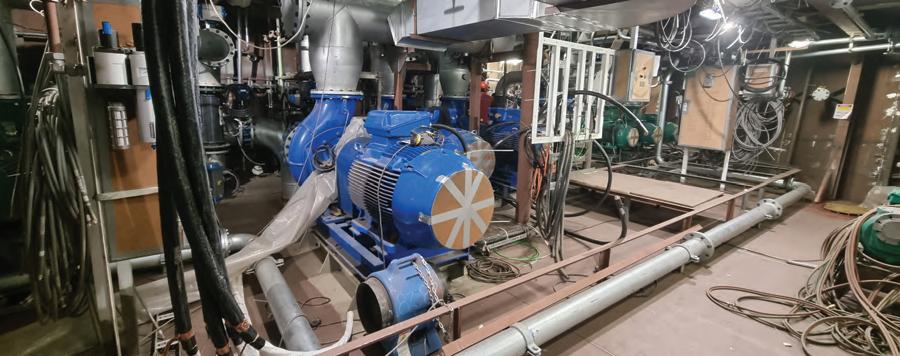

technology on board and a hybrid propulsion system, further reducing emissions. It is speculated that the sister ship will also be able to operate in the Antarctic and Arctic regions.
But that is not all: “There are hopes for another live treatment vessel similar to the Owurkan, and there are other projects currently under negotiation,” Mr Schacht said. “If these projects come to fruition, we will have a significant workload until 2026.”
As a pioneer in the construction of ferries, ASENAV has helped connect hundreds of islands in southern Chile. It introduced a simple, safe and durable technique with a double ended ferry solution and continues to manufacture vessels for that market today. This is enhanced by the recent signing of project 200.
The company recently invested in adopting a line of microwelded panels for

hull structures, with the goal of reducing welding time by 30%. It has also installed LED lighting in the shipyard, reducing energy consumption by 60%.
ASENAV’s engineering department is always innovating. “Our current focus is on propulsion systems that use green fuels that will significantly reduce emissions,” said Mr Schacht. “When the time comes, we will be ready to adapt the new technology to our ships. We are proud to play an active role in contributing to the change in the energy matrix of maritime transport.
“ASENAV is always looking to enter new and interesting markets because our Chilean engineering is world-class, and it receives more and more recognition with each project it carries out,” he concluded. “Our goal is to remain at the forefront of the industry.” n
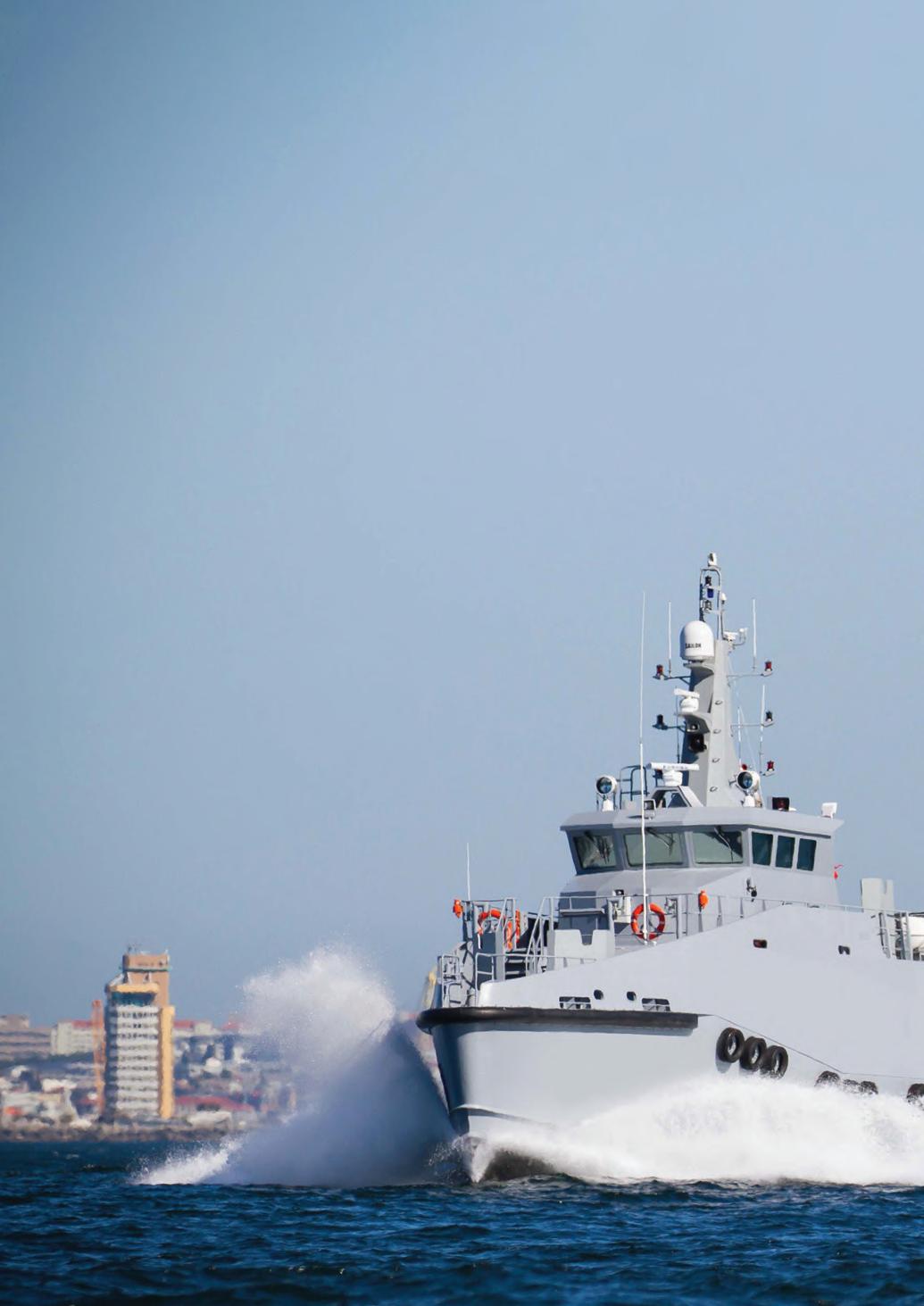
Despite a challenging trading environment, Teignbridge Propellers wrapped up 2022 having recorded its best year ever, enjoying a 15% increase in turnover. On the back of those results, the company kicked off 2023 with a substantial reinvestment programme that will see both its physical and technological footprint increase to better serve its constantly growing demand. Richard Hagan met with Teignbridge Propellers’ Group MD Mark Phare to find out more.
Teignbridge Propellers, headquartered in Newton Abbot in the UK, is a specialist manufacturer of propellers and stern gear for commercial vessels, superyachts, leisure boats and the defence industry.
The company prides itself on its unmatched combination of engineering expertise and specialist manufacturing facilities that deliver some of the world’s most efficient, durable and high-quality propellers and stern gear systems.
Adding protection
Teignbridge Propellers’ investment programme kicked off at its Newton Abbot head office, where the company has invested in a new 600sqm warehouse.

The warehouse will provide secure storage for completed orders prior to delivery to customers. This new storage space will drive efficiency and shipping cost reductions, according to Teignbridge Propellers’ Group MD, Mark Phare: “While it’s true that most of our products spend their lives underwater and can cope with getting wet without rusting, the new warehouse will ensure that the packaging is kept safe, secure and dry.
“80 per cent of what we sell is exported, and in international shipping, the costs increase for wet boxes and packaging. We’re effectively then paying more to ship water around the world.
“Therefore, the new warehouse will make us more professional in the way that
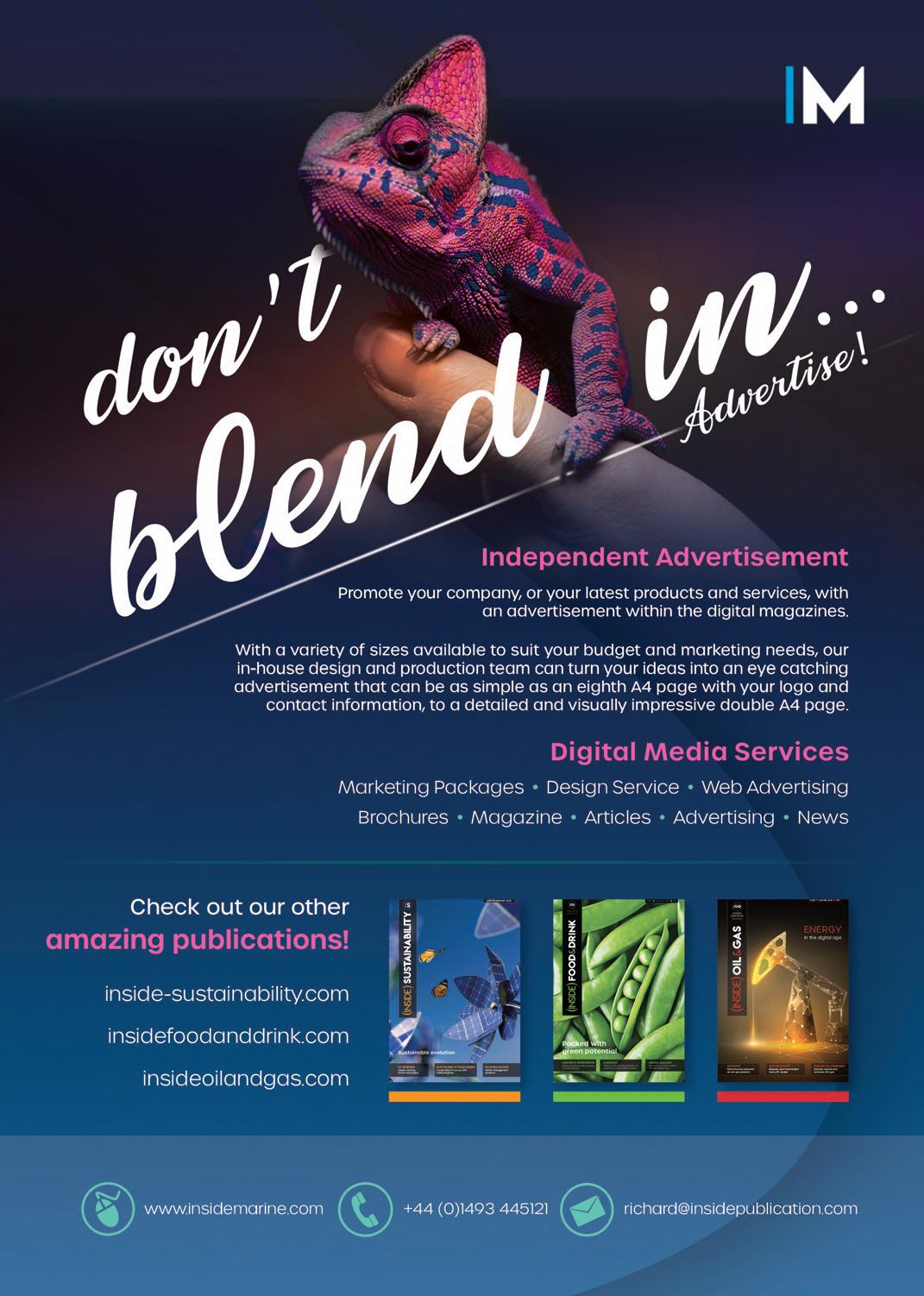

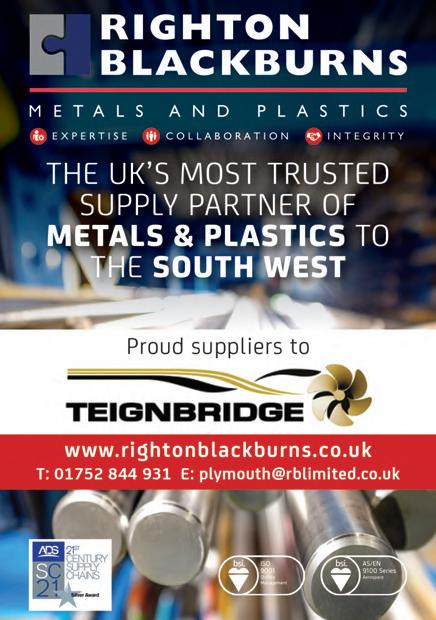

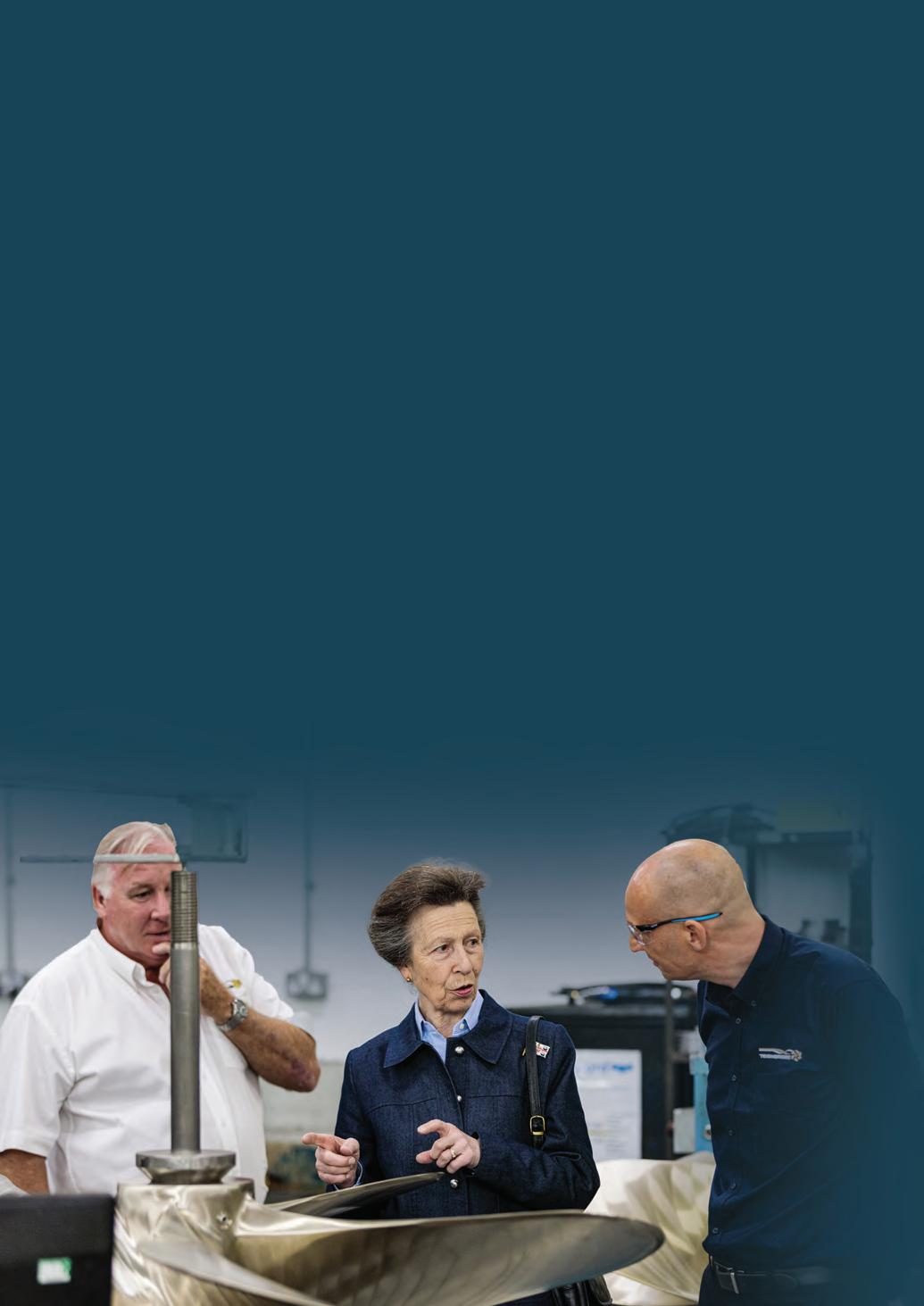
we handle finished goods. It’s a relatively small investment, but it will deliver a significant advantage for us and our customers.”
A new factory is also under construction at the Newton Abbot site. The foundations for the new 1,500sqm facility were laid by early 2023, with the new factory’s expected completion date pegged at Q3 2023. The space will house Teignbridge Propellers’ new, extremely cutting-edge, robotic sand milling centre, as well as several other new machines.
“These developments demonstrate that we are continuing to reinvest profits into the business, ensuring the continued growth of our operations worldwide,” said Mr Phare.
In addition to its new warehouse building, Teignbridge Propellers has made a substantial investment into its manufacturing process with the purchase of two extremely high-tech new machines.
The first of these is a Tuscan LG38 propeller turning lathe. Purchased as a replacement for an existing, older machine, the new machine delivers a massive 400% output improvement over the model it replaces. “The LG38 delivers a significant production output increase for us, and consequently it is already far along into paying for itself,” Mr Phare noted.
The second machine is a Mazak Intergrex e-1600/V10 mill, with the capacity to fully machine propellers of up to 2.2 m in diameter, producing both the blade surface and the boss. “It machines our products to very high tolerance levels – within the thickness of a human hair,” said Mr Phare. “It produces a perfect propeller because there’s no human involvement in its production; its geometry is perfect, faithfully replicating the designer’s intended tolerances and design, with no v ari ations from one blade to the next.”
Purchased at a cost of approximately £1 million, the Mazak mill has revolutionised


both the quality of the product that Teignbridge Propellers offers and the quantity. “It’s a two-pallet system,” Mr Phare explained. “We can load two propellers for machining on a Friday afternoon and when we arrive on the Monday morning, we have two finished propellers.
“It also gives us a higher level of quality – particularly for customers seeking a small edge in performance, for example. The Mazak mill means we can offer guarantees in terms of better economy, lower noise or vibration. It means that we are able to supply a very high-end product to our customers.”
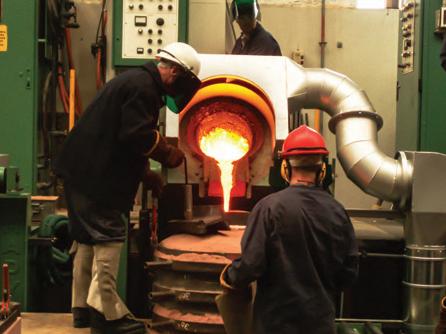
The Mazak mill has been such a success for Teignbridge Propellers that the company plans to buy at least one more during 2023.
In support of its strong customer base in Indonesia and its surrounds, Teignbridge Propellers has a brand-new factory in Batam, Indonesia. Located inside the Batam free trade zone, and only a short 40-minute ferry ride from Singapore, the new factory places Teignbridge Propellers in a strategic location right in the middle of the company’s most important Asian market.



The new facility will be equipped for manufacturing new build projects including shafts, couplings, stern tubes, rudder tubes, fabricated rudders and various other turned steel components. While cast components will provisionally still be shipped from Teignbridge Propellers’ Newton Abbot facility, the long-term plan is for the Batam facility to reach 50% of local content for products supplied to the Asian market, especially the Indonesian sector. The Batam factory will also provide robust after-sales support to its regional customers.

According to Mr Phare, the local market’s response to Teignbridge Propellers’ new presence in Batam has been enthusiastic: “We’ve received lots of feedback from the local shipyards and navy: they’re all excited about this opportunity. It puts us in a much stronger position in the region, with easy access to logistics networks and the nearly 100 shipyards on our doorstep. It’s an extremely good decision both for us and our customers.”
Looking forward, Teignbridge Propellers’ ongoing reinvestments into expanded capacity and new technologies are expected to bring an annual growth of approximately 20%.
Certainly, part of this growth will continue to come from sales of its best-selling product: high-performance propeller designs. Thanks to its high-tech Siemens STAR-CCM+ Computational Fluid Dynamics (CFD) software and hardware, Teignbridge Propellers is able to run 500 iterations of propeller design adjustments within only two days - a number that is far beyond the capabilities of a human.”
Through this process, we are able to rapidly achieve a propeller design that is optimum for the parameters we require –for example top speed, or fuel economy,” Mr Phare explained.
The company’s growing sales force will aid in its growth plans. It recently appointed a specialist sales manager for Northern Europe, who will be responsible for growing Teignbridge Propellers’ presence in the Benelux and German markets.

“It’s an exciting environment to be working in,” said Mr Phare, in conclusion. “Being in such a strong position, with our best year to date last year, and this year on track to reach our 20 per cent growth target. Meanwhile, purchasing new machines and gaining new technologies means that the future for Teignbridge Propellers is bright and we have everything to look forward to.” n
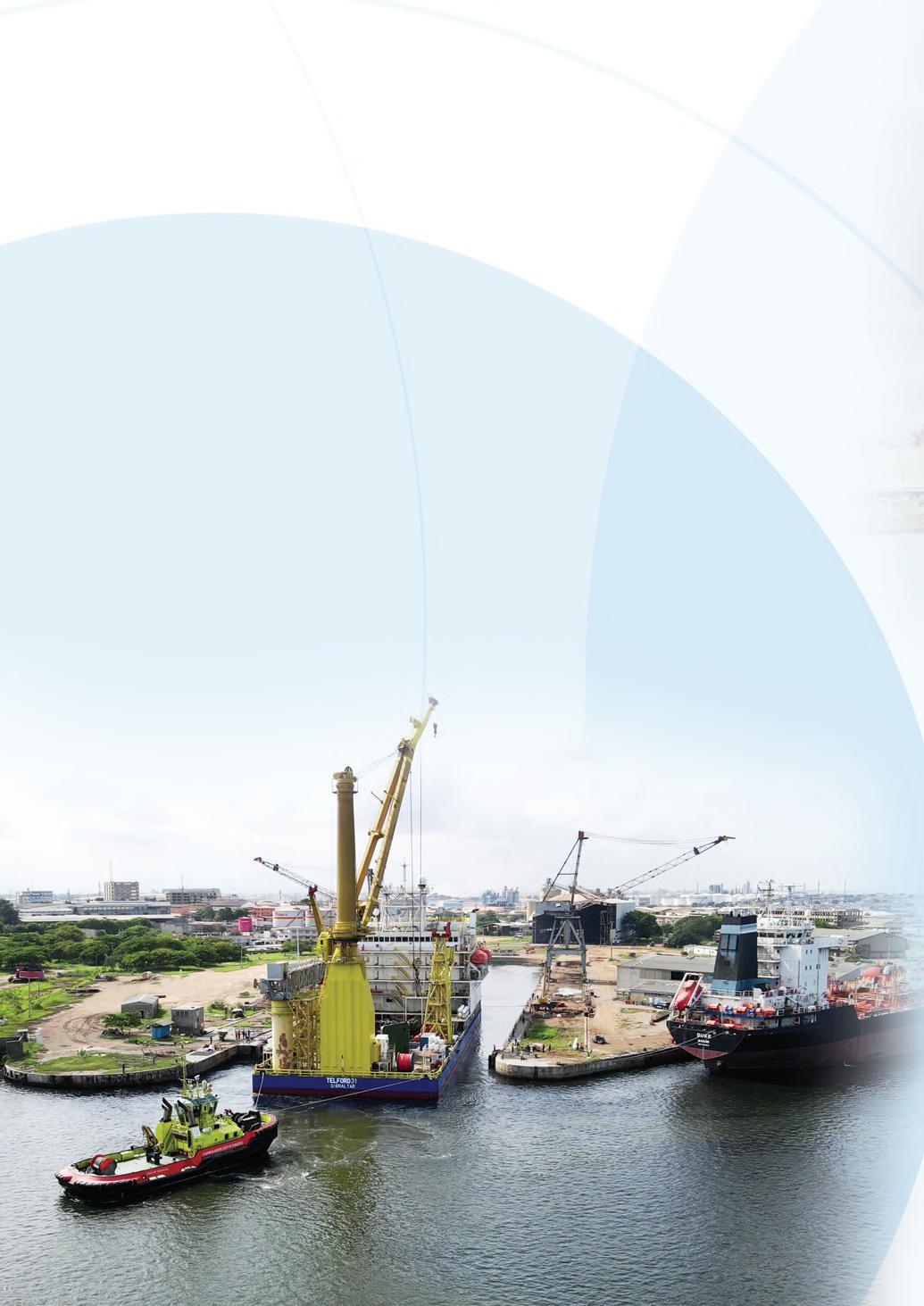
The year 2023 is projected to be one of the biggest turning points in Tema Shipyard Limited’s near-60-year history. Fundamental changes and challenges are being met head-on at the once-ailing state-owned Ghanaian company. On the cusp of private investment, an extensive brand overhaul, experienced staff recruitment and a sharpened focus on efficiencies, the Chief Executive Officer, Dr Alexander Yaw Adusei Jr. reflects on one of the “biggest transformational agendas in Ghana’s maritime industry” in an interview with Andy Probert.
Sitting calmly but firmly in the eye of a storm that has been whipping up for years around the fortunes of Ghana’s Tema Shipyard, CEO, Dr Alexander Adusei, is pragmatic, but impatient for a new era to dawn.
Dr Adusei, a Ghana-born US-trained lawyer, is adamant that plotting a new direction is one of the few remaining hopes


to guarantee the state-owned shipyard a brighter commercial future. “The aim is simple: to reawaken this sleeping giant with the collective support of Ghanaian technocrats and professional maritime artisans,” he stated.
January 1, 2023, was ground-zero for the shipyard with an executed decision to offer severance packages to over 270 people employed by the state at Tema Shipyard.
“Upon careful evaluation, it was recognised that the workforce had been accustomed to a public sector mindset and, it was quite a challenge to adjust to a private sector mentality,” Dr Adusei said.
This was a strategic decision to pave the way to clean the age-long systemic challenges that had bedevilled the growth of

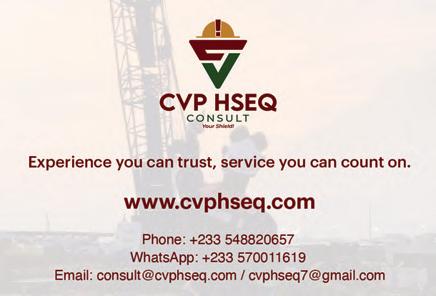
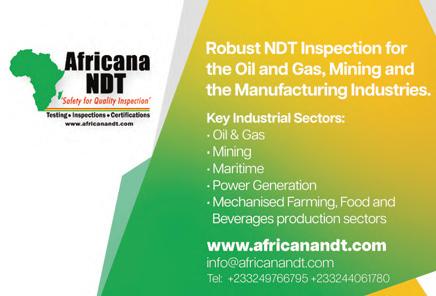
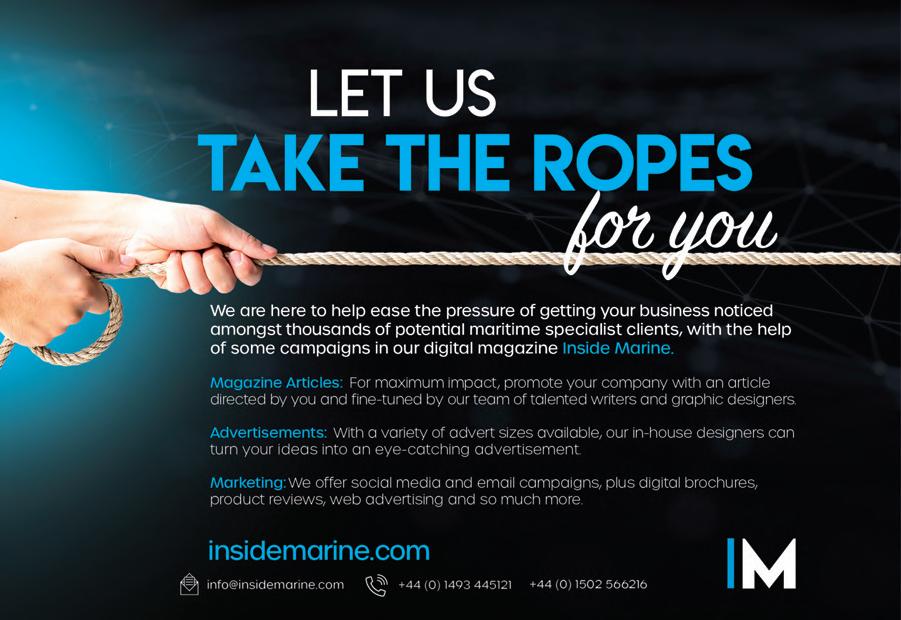



the company and to allow it to usher in a new era as a formidable competitor on the world stage.
“While there was a lot of pensiveness, hope springs eternal and reflected a longoverdue turning point,” said Dr Adusei, who has been CEO since November 2020. “It represented a new start. With the policy direction of the Transport Ministry and the support of the Director General of Ghana’s Port and Harbours Authority, we have adopted a new strategic focus, running the shipyard with a private sector mentality.
“Tema Shipyard is a public sector entity, some aspects of its operations are being affected by the bureaucratic processes and regulations inherent in the public sector. To be efficient in our productivity, we need not only capital investments but we need strategic private partnerships that open the doors for employment, technology transfer and increased revenues for the government.”
The new strategy is a paradigm shift from previous incarnations of running the shipyard, which began in 1965 with aspirations to be the biggest dock between Europe and South Africa’s Cape of Good Hope.
“We did not want to continue on the same trajectory so we decided to radically change the dynamics. The workforce will be from the private sector, while we maintain public sector oversight. We have engaged consultants from various backgrounds to help re-position the shipyard to engage the private sector. Our new management model does not intend to divest a State-Owned

Enterprise (SOE), but rather, to lease and license private sector operators who intend to do substantial investments in the company. These private operators can come on board, invest and run the facilities and pay royalties to Tema Shipyard.”
Attracting private-sector investment is conditional, Dr Adusei explained: “We won’t allow someone to come in and take j obs from Ghanaians. We want to ensure we work with parties that can transfer knowledge and expertise to a Ghanaian workforce and work with local enterprises. We want a win-win for the investor community and our youth being trained in various technical institutions across the country.”
On private sector interest, Dr Adusei said: “About 20 companies initially wanted us to completely divest our interests, but that did not reflect the model we envisaged.
“Instead, we have about four to six active parties, including Ghanaian interests with international partners from Turkey, Russia and the Netherlands, plus groups from Nigeria, who are all interested in working within our framework.
“If we can attract three or four private sector entities to invest about $30-$40
million each, in addition to the Ghana Government’s own investment, coupled with the required expertise, the yard’s profile will be augmented to attract bigticket vessels and also be competitive in the drydock market.”
The envisaged investment will include floating docks, synchronised ship-lifts and the development of slipways so vessels can be brought ashore, enabling the workforce to service five vessels simultaneously. These opportunities will change the dynamics of the working space and uplift the company’s strategic placement of the market share.
In the meantime, Tema Shipyard has changed to a 24-hour shift pattern, helping reduce turnaround times from a month, (under the former system), to 14 days. The

yard has improved its pump downtime from 24 to eight hours, with a new addition planned to shrink that further. There are plans to install a power generator as a backup to Ghana’s national grid. The yard is also working with the port authority to dredge channels, improve the depths, and be able to attract vessels with deeper drafts.
Alongside the dock infrastructure, Tema operates 29,000 sqm of open space and 10,000 sqm of enclosed space. Two dockside cranes are supplemented by three mobile cranes, two cherry pickers, three forklifts and compression machinery among the new fleet in order. The yard is in talks with foreign companies and OEMs to refurbish the dockside cranes to improve their functionality.
Being active in ship repair, ship modification, steel fabrication and associated works, the facility also operates Western Africa’s largest dock facility. Its two graving docks consist of one capable of handling up to 100,000 DWT and the other 10,000 DWT.
Attracting high net-worth vessels for work can only be achieved with well-trained manpower with the requisite equipment, according to Dr Adusei: “Our focus is to restructure the yard and ensure the tools are in place to attract these vessels. We want owners to bring their vessels for ship repair here knowing we run a one-

stop-shop providing a complete portfolio of services.”
The yard is also set for a new name as part of a brand overhaul that will help engage clients and bring more traffic, revenues and crucially, investment. The process is underway and should be concluded soon.
Reflecting on the first six months of 2023, Dr Adusei acknowledged the shipyard had been busier than ever in his almost three-year tenure: “That is because we do not have concerns about delays. If we agree to 20 days work we push to

finish in ten days. Time is of the essence for our clients and we need to meet our contractual obligations.”
The yard now operates with about 40 regular contract staff, while the private sector provides a pool of upwards of 800 workers per project. The ultimate goal is to help the unemployment market by opening spaces within the maritime industry.
“We can work on various vessels, including barges, tankers, jack-ups and dredgers,” said Dr Adusei. “In 2023, we are working on some of the largest tankers from Nigeria, which all come with different complexities.”
A modern yard attracts clients that otherwise might go to the Mediterranean or Middle East. That also applies to Ghanaian vessel owners, according to Dr Adusei: “Ghana has about 97 fishing trawlers and Tema will be lucky to get ten as the rest go to the Ivory Coast, Togo, Senegal and further to repair facilities because of scheduling conflicts and contractual obligations.”
The shipyard intends to work within the legal framework to allow all vessels operating within Ghanian waters and in contract with the Ghanaian government, to give Tema Shipyard the right of first refusal on vessel repairs.
“We are working to raise confidence,” Dr Adusei concluded. “We cannot do the same things and expect different results. If you cannot guarantee the work will be done in a certain time, then that simply destroys a business and customers go elsewhere.
“We need to rebuild those confidences to show the mindset of today is not the mindset of old. We have to take the busi -
ness to them. Our shipyard is on the upturn and will again be the primary focus of Ghana’s maritime industry and the number one shipyard in Africa. The legacy I want to leave is an SOE operating in partnership with the private sector: with strong local content expectation, creating job opportunities for Ghanaians and guaranteeing government revenues.”



In the high-stakes, high-cost, high-pressure maritime industry, Dutch butterfly valve specialist manufacturer Wouter Witzel has defined its leading position in the market with a combination of incomparably high-quality products, flexibility and comprehensive customer support. Marine Sales Manager Justin Bijenhof spoke with Richard Hagan.
Serving customers ranging from ship owners to dredging firms and naval forces, Wouter Witzel has a broad range of products and expertise capable of providing robust solutions to any pipeline engineering challenges. Supplying customers both inland and offshore, Wouter Witzel offers a complete butterfly valve service, including engineering of bespoke solutions, post-sales servicing and comprehensive technical sales support. Its valves are especially well-known for their vulcanised rubber lining, which is
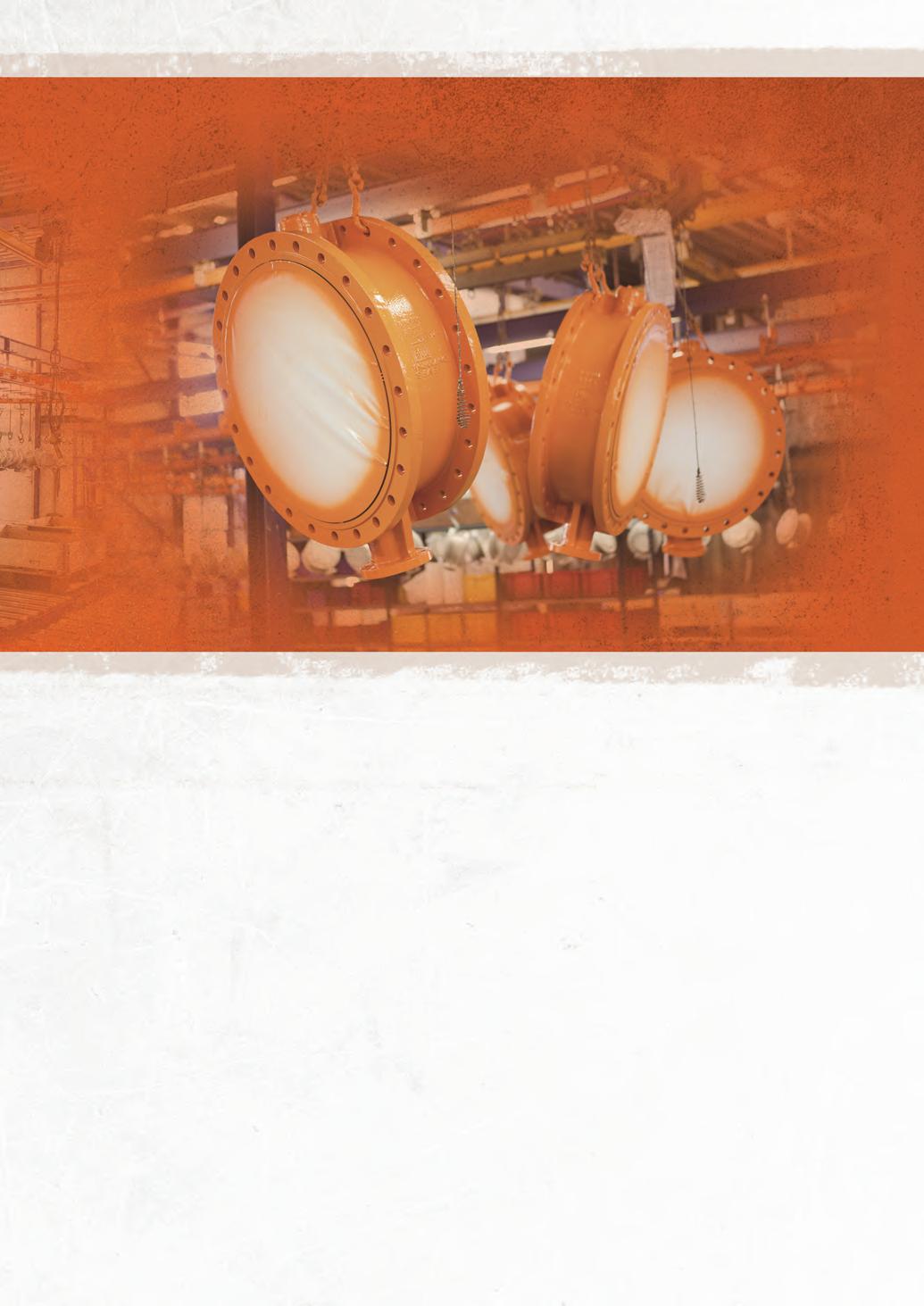
guaranteed not to detach regardless of the application for which the valve is destined.
The company’s team of engineering experts works alongside ship owners from the beginning of construction in the shipyard, through to support for the product many years after the ship has hit the water.
At the start of any new project, Wouter Witzel’s team begins with identifying key information required to understand the customer’s needs, according to Marine

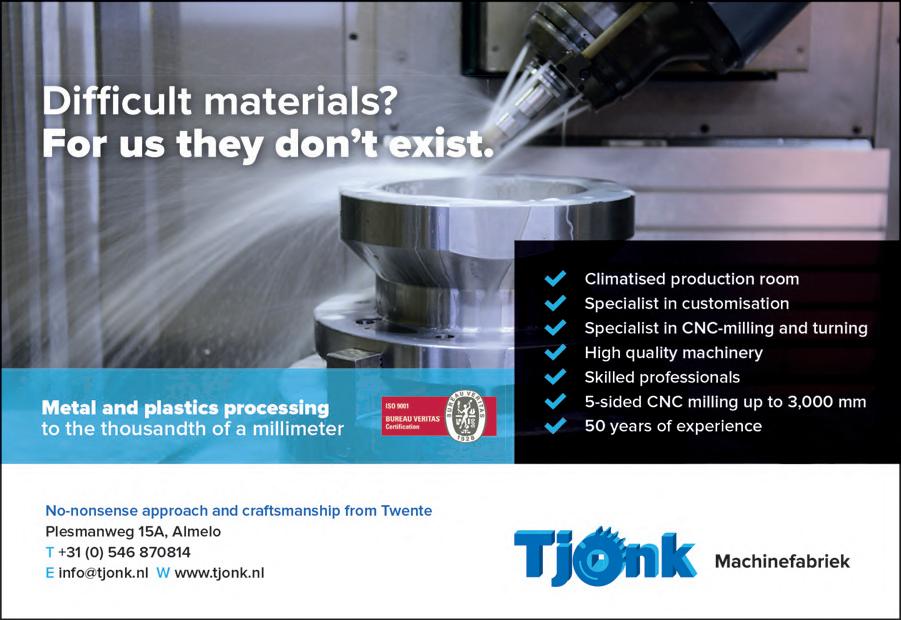



Sales Manager Justin Bijenhof: “We will find out what the valve’s application is, as well as what speed or velocity the medium is, what temperature the medium is, and how fast the valve should actuate We’ll also identify the available power supply and establish whether the valve is hydraulic or pneumatic.
“Based on that information, we’ll build a big picture of what the customer needs and from there, we’ll go back and find the best matching product for their application.”
If Wouter Witzel’s teams cannot find a precise match from amongst its product catalogue for the customer’s needs, the company will gladly make

any required changes to existing products to make them relevant to the customer’s project. And every valve that Wouter Witzel supplies is backed by its venerated after-sales service, including replacement parts suppor t.
Amidst the geopolitical turmoil in Europe, there has been a renewed emphasis on defence spending throughout not only that region, but elsewhere in the world too. This comes on the back of Wouter Witzel’s own long-term product development e fforts within the naval market – including new products, changes, testing and
approvals processing – which is now paying dividends for the company as the world’s navies seek bespoke solutions from Wouter Witzel.
“At least half of our turnover comes from the maritime industry, and based on that we can see that the market is indeed evolving, and a lot is happening in Europe,” said Mr Bijenhof. “The war has resulted in demand for our products being fast-tracked within the maritime business and we’re enjoying strong growth in that sector.
“Our leading position within the naval sector especially, meant that we were able to anticipate that positive shift in time for us to serve it comprehensively, but it’s also made our partnerships throughout Europe more and more important.
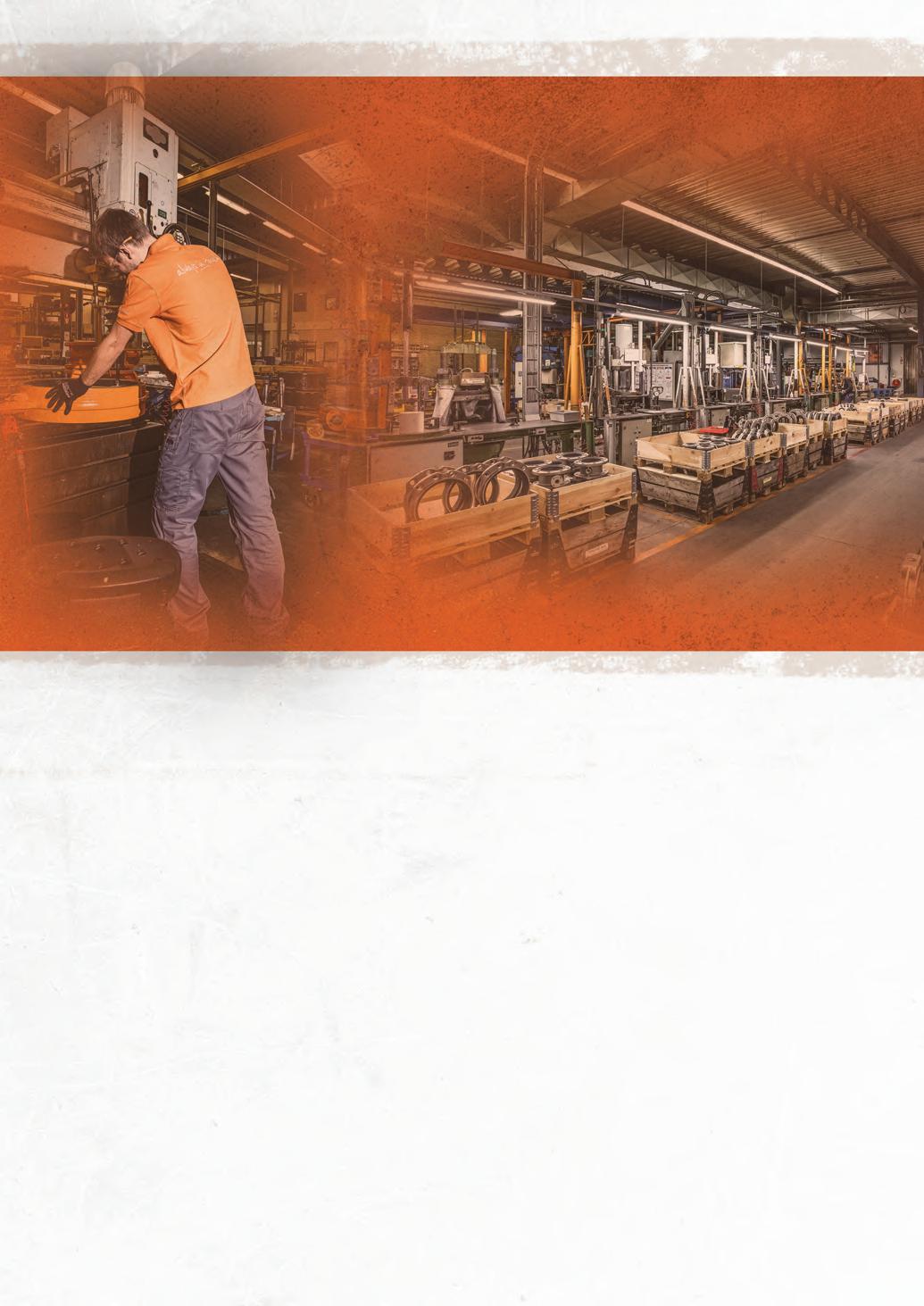
Naturally, we always try to ensure that we’re ready for whatever big step is coming next and therefore we are continuing to design new products.”
European demand comes home
Wouter Witzel’s production and sales activities are centralised in The Netherlands. Externally, it has agents all over the world serving countries ranging from China to the US and Spain.
Notwithstanding its global reach, Wouter Witzel is positioned within the market as a flexible Dutch manufacturer offering highly respected, top-notch European quality, backed by strong pre-sales technical support and robust after-sales customer service. At a time when so many firms are bringing their manufacturing needs back
to Europe, Wouter Witzel has found its solid reputation delivering increased enquiries from companies across Europe.
“European companies have found that doing business with us and within Europe is much easier thanks to the shared culture, our special expertise and the close proximity of our manufacturing,” Mr Bijenhof revealed. “Therefore, we’re seeing a process developing in which a new level of specialisation is requested from Europe, rather than from traditional markets in the East.
“Customers are seeking solutions to challenges that fit better within the ambit of European producers. We’re seeing

more and more enquiries from both owners and governments with specific requirements and specific challenges for which they wish to collaborate with us to find creative solutions.
“It means that our product is no longer seen as a commodity, but rather that there is a priority placed on our size, our capabilities and the value of our service as well as our ability to take ownership of the client’s challenges. That’s simply not something that can be achieved with a company on the other side of the world. So, as a Dutch manufacturer, it’s an area in which we can bring incredibly good added value for the customer.”
Wouter Witzel is excited to announce the launch of a brand-new range of valves.
The new EV valves, which include the EV-Alu and the EV-F&B, are designed for heavy-duty applications whilst offering low energy consumption.
The EV-Alu is a lightweight valve solution manufactured from aluminium, while the EV-F&B is designed for food and beverage industry applications. Both valves are designed to be drop-in replacements for existing valves. “Customers don’t need to replace or remove anything surrounding the valve,” Mr Bijenhof said.
T he EV range offers lower torque with a higher KVA value and is easy to install, and it is offered at the same price as similar valves.

This and other innovations come as a result of Wouter Witzel’s ongoing investments in its production capacity. These investments have seen the company increase its capacity from 200,000 units per year to 250,000 and still growing. “Ongoing upgrades to our planning tools and ERP system will see our capacity continue to rise,” Mr Bijenhof concluded.
Wouter Witzel participates in a number of important marine industry exhibitions, with particular highlights being the Europort Expo in Rotterdam in November of this year, and SMM Hamburg, with the next one taking place in September 2024.
You are invited to meet Wouter Witzel’s sales team at these prestigious events to learn all about how they can assist you with your engineering challenges. n

Since its establishment in 2007, Chinese superyacht builder Heysea Yachts has developed a build portfolio and an order book that would make many European yacht builders envious. The company’s recent, highly successful launch of a range of large new sailing catamarans has further cemented its position as the number one Chinese yacht builder in mainland China. Richard Hagan met with CEO Fang Yuan to learn all about how Heysea Yachts has carved an impressive niche in such a competitive industry.
Heysea Yachts was established by a group of three co-founders, including naval architects Allen Leng and Ma Xiaodong, and current CEO Ms Fang Yuan, who holds a Master’s Degree in Engineering.
The group’s goal then was the same as it is now: to prove to the global market that the Chinese are not only capable of building extraordinary superyachts, but also that their yachts can be as good – or better than – their Western counterparts.
And by all accounts, the company has thus far managed to do just that.
Heysea Yachts is headquartered in the bustling port city of Hong Kong, while its main production base is in Jiangmen City, adjacent to Macau and across the Pearl River estuary from Hong Kong. This 66,700 sqm factory has a deep draft frontage, making it especially well-suited for accommodating superyachts. It is strategically located a short 30-minute drive from the area’s boat-building zone, which hosts a number of other shipyards and various yacht industry suppliers.
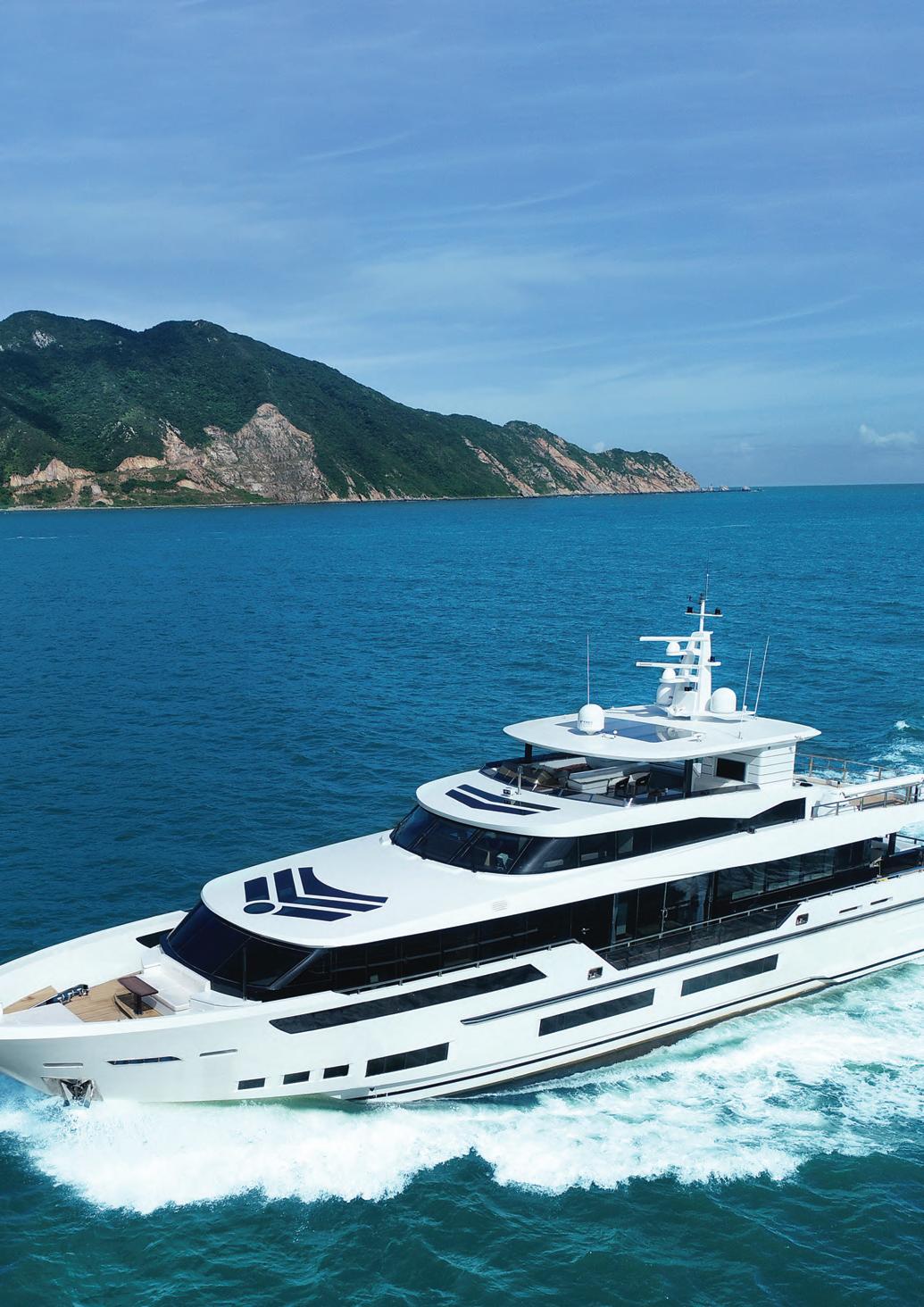

Heysea Yachts’ staff roster of over 200 people is a particular highlight, alongside a management team that boasts over two decades’ worth of industry experience. Amongst its staff is a highly experienced team of yacht design specialists, an R&D team, a veteran quality assurance team and a variety of highly trained technicians. These teams work hard at the company’s comprehensive footprint of modern workshops, alongside its launching slipway and berthing dock.
Staff are crucial to Heysea Yachts’ ongoing quest to be the best in the business, according to CEO Fang Yuan: “Our workers are very skilled, with many having worked in our shipyard for over a decade. This level

of commitment and time-honed skill is one of our hallmarks and it guarantees consistent quality in our craftsmanship.”
Heysea Yachts offers two major product ranges, including luxury motor yachts between 58ft and 142ft, and sailing catamarans ranging from 42ft to 56ft.
In its sixteen years of operation, Heysea Yachts has risen to be the number one Chinese builder of yachts 80 feet or longer, based on both the total length of deliveries and the number of yachts built annually. Additionally, amongst mainland Chinese clients, Heysea Yachts has proven to be the most popular builder of yachts with a length of 80ft or more.
During its first decade of operation, Heysea Yachts delivered over 20 units of its Heysea 82 superyacht model - its most popular model at that point. The 82 was subsequently overtaken in sales volume by the larger Asteria 112, of which the company had already sold 15 by early 2023. Having only just launched its new Seaview range of sailing catamarans, Heysea Yachts delivered its first order for a Seaview 56 in
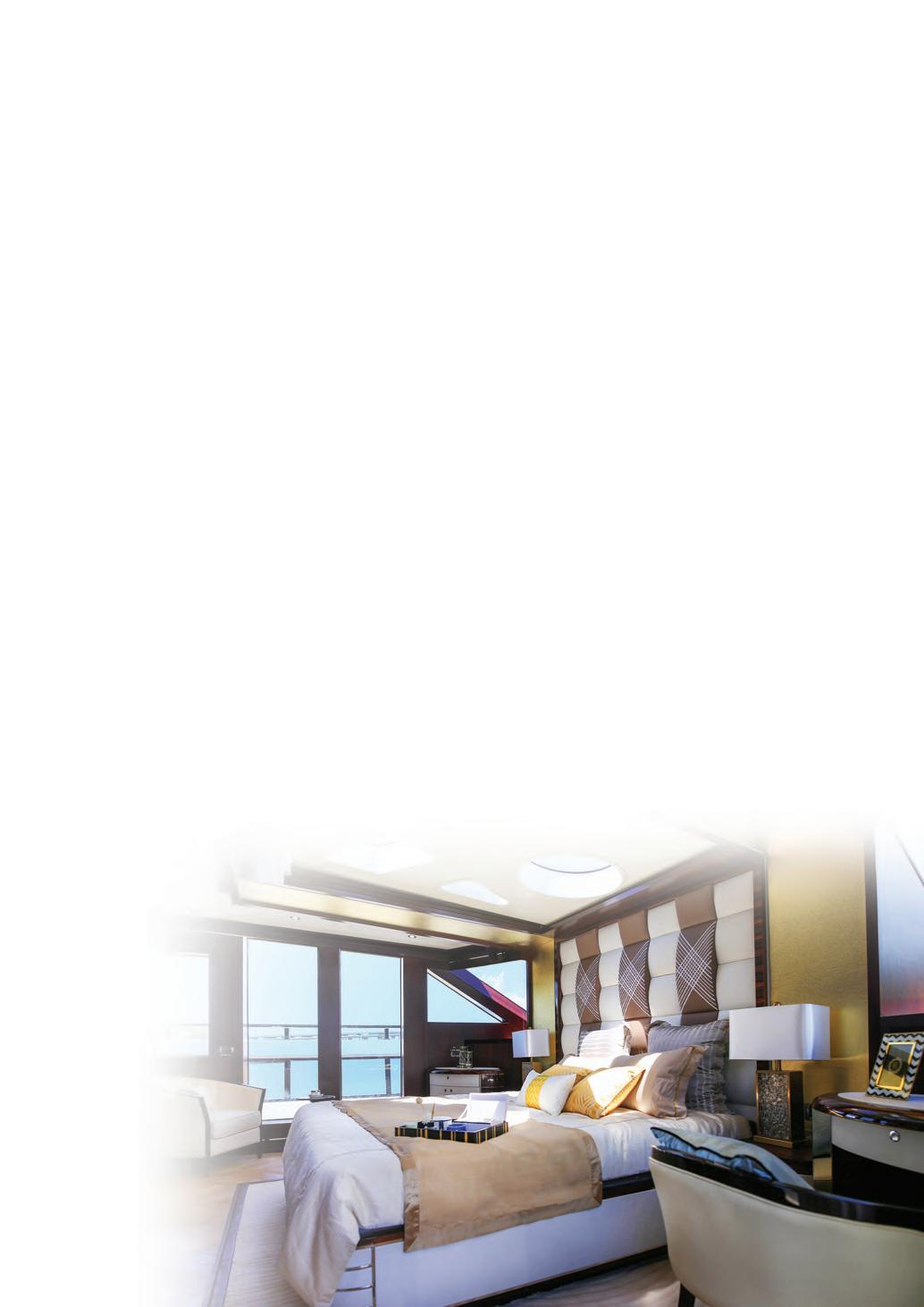
May 2023, which is planned with delivery of Seaview 48 in August of the same year, as well as several more orders for its Seaview 56 and 48.
In recognition of Heysea Yachts’ ongoing strong order book, between 2014 and 2016 Boat International Media - a respected superyachting industry publication - ranked Heysea Yachts within the top 30 of its Global Order Book listings. “By 2017 and 2018, we ranked sixteenth and in 2019 we reached twelfth in the world,” said Ms Fang. “Despite the challenges relating to Covid, Heysea Yachts still ranked seventeenth while remaining number one in mainland China.”
Heysea Yachts believes that it owes its success in China to its ability to understand and integrate the specific needs of Chinese customers into the designs of its yachts from the keel up. “When we first began designing yachts for the Chinese market, the industry told us that the yachts should
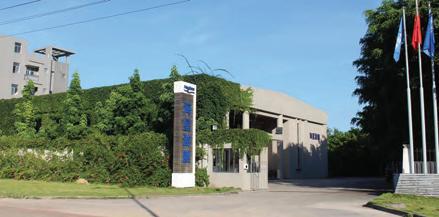
be designed and built in line with American or European markets,” said Ms Fang. “Everyone said that we simply need to put Chinese furniture or Chinese-style interior décor into the yacht in order to localise it. But this was too superficial for what we had envisioned.
“We believed right from the start that we could take substantial market share in China because we really understood what the Chinese customer really wants and could match their expectations to the yacht, from design through to construction.”
For example, for Chinese-owned vessels, Heysea Yachts places the galley at the aft corner of the lower deck as opposed to in
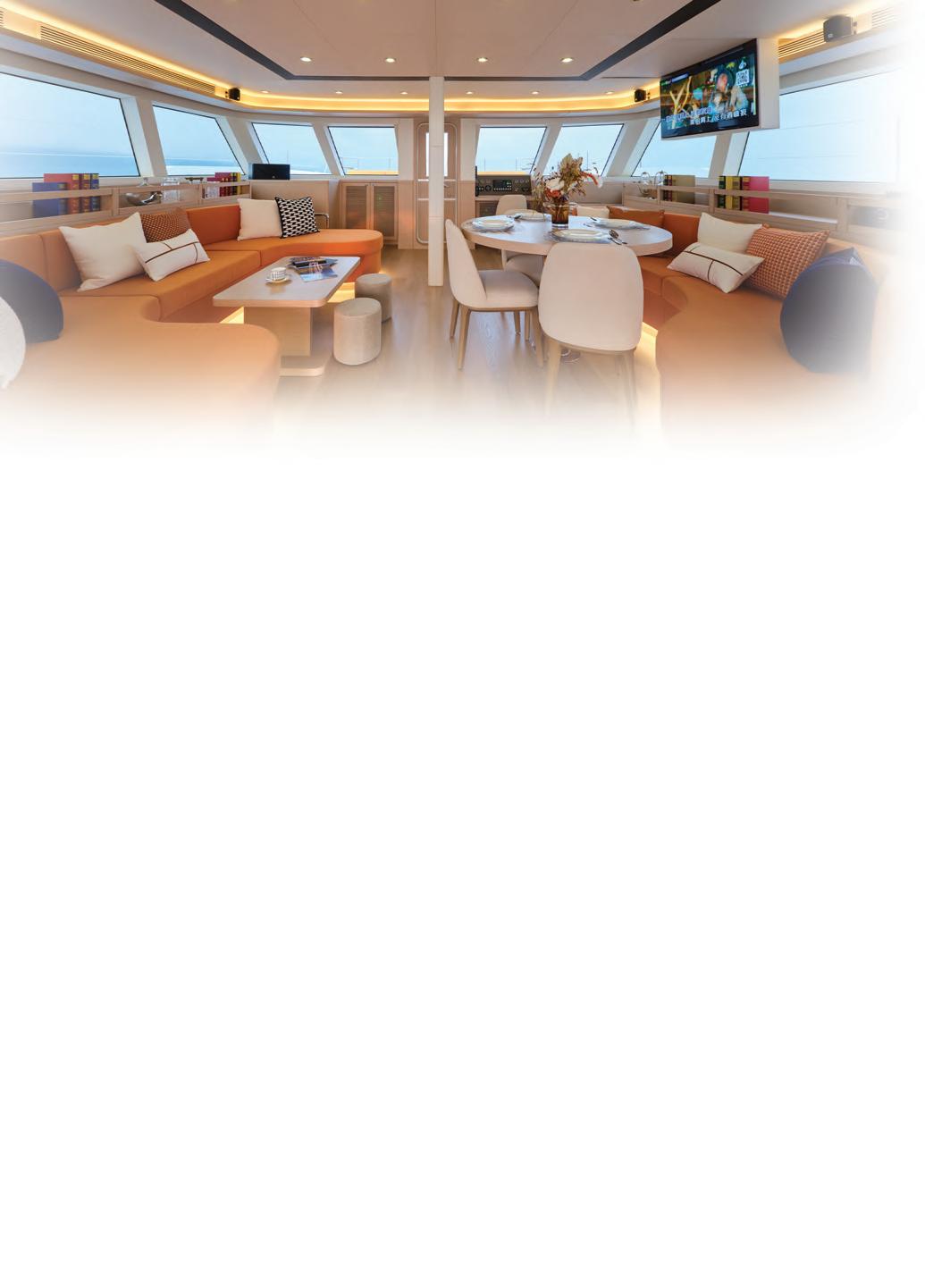
the salon - like on western yachts. This is done to hide the strong smells typically associated with the cooking of Chinese food. Additionally, since Chinese customers prefer not to tan or be exposed to the sun, Heysea Yachts has fitted hard tops to many of its yachts, including smaller ones in the 60ft to 70ft range.
The success of Heysea Yachts’ business strategy is by design, as Ms Fang explained: “In 2007, when we established Heysea Yachts, there were only two types of yacht builders in China. One was shipyards which primarily produced commercial boats but would occasionally produce yachts on-demand only: The other type was Taiwanese yacht builders with production

facilities in mainland China, which did not have R&D teams or salespeople within China, and all of their yachts were made for international export; none were built for the Chinese market.
“We saw an opportunity in that there were no high-quality, well-known brands serving the Chinese market, and that’s when we decided to establish Heysea Yachts.”
Heysea Yachts’ ability to move fast and exploit opportunities within the market has repeatedly delivered value to the company. By 2015, the company estimates that it was receiving the majority of orders for yachts longer than 80ft within China.
Despite ongoing geopolitical challenges, Heysea Yachts remains optimistic.
“Demand for yachts and especially sailing catamarans is growing,” said Ms Fang,



“and thanks to increased recognition of our brand globally, we are looking forward to strong international interest.”
Concluding, Ms Fang reiterated her enthusiasm for the work being done by Heysea Yachts. “I’m very excited by our daily mission of building a unique Chinese brand and telling the world that the Chinese have the ability to build worldclass, high-quality yachts” n


Our technical experience and support for the design and build staff at Heysea Yachts provided a solution on board a superyacht that pleased the owner. Recommendations included vibration damping and isolation, floated walls/floors, flexible noise barriers utilised in the correct areas, and thermal/fire and sound absorption solutions, ensuring a comfortable boating experience. Pyrotek delivered these products and a full insulation plan including weight distribution, CAD engineering and drawings for fitout. We also oversaw installation through multiple site visits and progress reporting.


Moteurs Baudouin is a highly experienced engine manufacturer that has strong presence in several key sectors, including marine. CEO Fabrizio Mozzi, Vice President of Strategy & Engineering Sébastien Peyron and Marine Sales Director Mehdi Kebaili provided an exclusive interview to Inside Marine’s Imogen Ward.
Dominating the world of marine propulsion, Moteurs Baudouin is a household name. With a reputation for excellence and a portfolio to prove it, the company currently holds an enviable market position.
“Baudouin has the largest diesel product range in marine and power generation applications, which varies from 15kW to 4,000kW,” said CEO Fabrizio Mozzi. “There is no other company in our industry that has such an impressive offering for its customers.”
Baudouin has evolved rapidly over its 105-year history, now designing and manufacturing engines for several sectors, including marine, power generation and industrial.
Although the company is now thriving, it has felt hardship: In 2009, Baudouin was at risk of closing its factories; however, Weichai Power (one of the world’s largest manufacturers of diesel engines) stepped in to help. Under the ownership of Weichai, Baudouin was able to harmonise the highs and lows and come out stronger than ever.
“We’ve gone from selling several hundred engines to selling 25,000 engines last year alone,” said Mr Mozzi. “This
really highlights the efforts that everybody has put into the business, and that is incredibly exciting.”
Making the most of Weichai’s expertise and willingness to invest, Baudouin has successfully utilised its parent to further develop its offering. Discussing a new plan for growth, Vice President of Strategy & Engineering Sébastien Peyron said: “We understand that to maintain our market position, we have to continue to expand and diversify.
“To address this, we have recently implemented an incredibly challenging and important product plan. Over the next five years, we intend to produce a complete range of new heavy-duty engines that answer our customers’ needs. This means higher specific power, higher displacements, high torque at low speed, fuel economy, emissions compliance and flexibility.
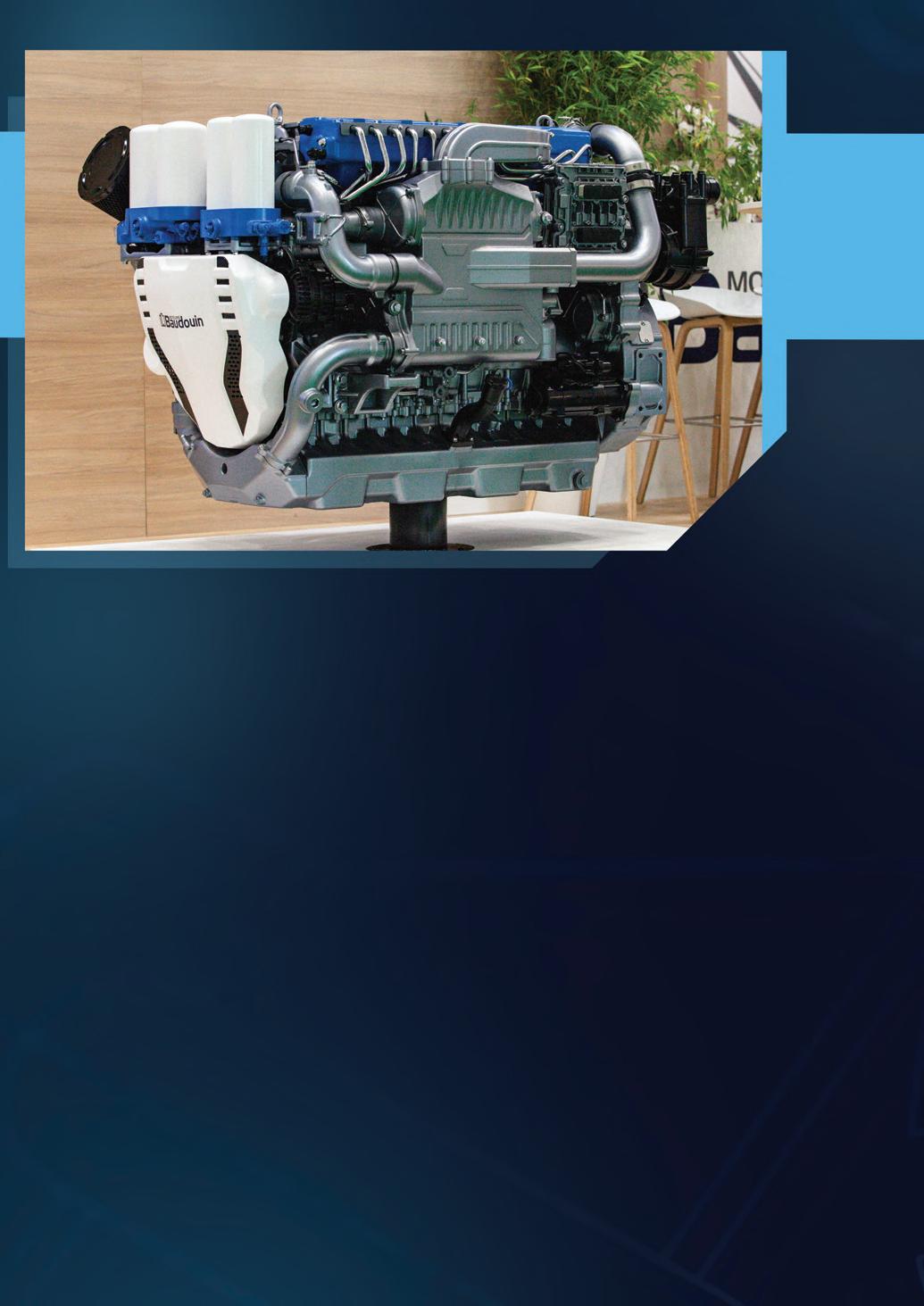
“Unlike our competitors, our marine engines are truly designed for the harsh marine environment and are not conversions of industrial or truck engines for marine use. This allows us to meet the needs of some of the most demanding customers in the engine industry; ensuring every requirement is met and guaranteeing robustness and functionality.”
This line is expected to comprise ten marine engines and will be perfect for heavy and intermediate duty, as well as use in the pleasure market. With the release of 6F21, this plan is already in motion.
6F21 is the most compact marine engine on the market. It includes components for diesel technology, with a very highpressure injection system and a double stage turbocharger.
“6F21 is the first step in Marine Baudouin’s new diversified era,” Mr Peyron explained. “It is the most

power dense 13-litre engine available and is capable of going from intermittent duty at 599kW to 735kW at high performance duty, which is very impressive for a 13-litre engine.”
Keen to continue this evolution, the company is always quick to utilise the brilliant minds of a hybrid customerfocused department.
“We have a dedicated department that is somewhere between R&D and sales, which supports customers even before their order is finalised,” Mr Peyron said. “At this point, we can adapt the design with special options and additional features. The department also provides assistance regarding calculations and installation issues.”
“I think Baudouin’s strength is really in its ability to create a number of products that can cater to customers’ needs,”
Mr Mozzi agreed: “This has been magnified by the support of Weichai, a company that is exceptionally good at manufacturing high product volumes for the engine industry. We can now bring to the market large levels of standardised products and complex tailor-made alternatives.”
Although these developments are incredibly exciting, the company has always been able to depend on the M26, its most popular design.
Initially entering the market in the 1990s, the M26 was a huge success. Designed to produce continuous power, this engine enabled the company to compete in the big leagues of engine manufacturing.


“The M26 series was really a game changer for us as it placed us in line with the big players of engine manufacturing,” said Mr Mozzi. “The engine was manufactured in six-, eight- and 12-cylinder sizes and could power up to 500kW.”
In 2010, this series entered its second generation with the introduction of M26.2. Produced with the same cylinder configuration as its predecessor, according to Mr Mozzi this engine remains the company’s best-selling product, having sold thousands to-date.
Now in its third generation, the M26.3 can be purchased as a custom-build or as a standard product, which is manufactured as a 32-litre multipurpose engine.
“The M26.3 can be used for fishing, passenger and offshore vessels,” said Mr Peyron. “It goes from 441kW to 1215kW and is designed specifically for marine applications.
“There are several reasons why this engine is so great. Firstly, it is easily maintained. We take this aspect very seriously during the design stage and understand that every engine room is different. So, we place the crank house inspection doors, the tubular heat exchanger and all the filters on the front of the product. We also offer a lot of marine options with this model.
“Safety is also paramount. We developed the ‘four-step redundancy’ design which means that if there are any electrical faults, the crew will always be able to manoeuvre back to harbour. Lastly, it is state-of-the-art regarding emissions, because it can be designed to incorporate IMO II and III solutions, EPA 3 and 4 solutions for the USA, and Stage V for the Inland Waterways market.”
Providing low emission solutions is a philosophy Baudouin is also applying on the new engines in development, such as the M33 platform in 6 and 16 cylinders, which is due by the end of 2024.
Maintaining a strong presence across the globe, Baudouin has been part of several major developments. With 40% of its business dedicated to passenger vessels, and 35% in workboats, the company partakes in a diverse variety of projects.
The company is currently collaborating with Hornblower Marine on the City Experiences Partnership, which will result in Baudouin powering and re-powering all Hornblower’s vessels. Baudouin also works with several major shipyards, including Penguin Shipyard, Singapore.
The company is currently collaborating with Hornblower Marine on the City Experiences Partnership, which will result in Baudouin powering and repowering all of Hornblower’s vessels.
The company also works with several major shipyards, including Penguin Shipyard, Singapore..
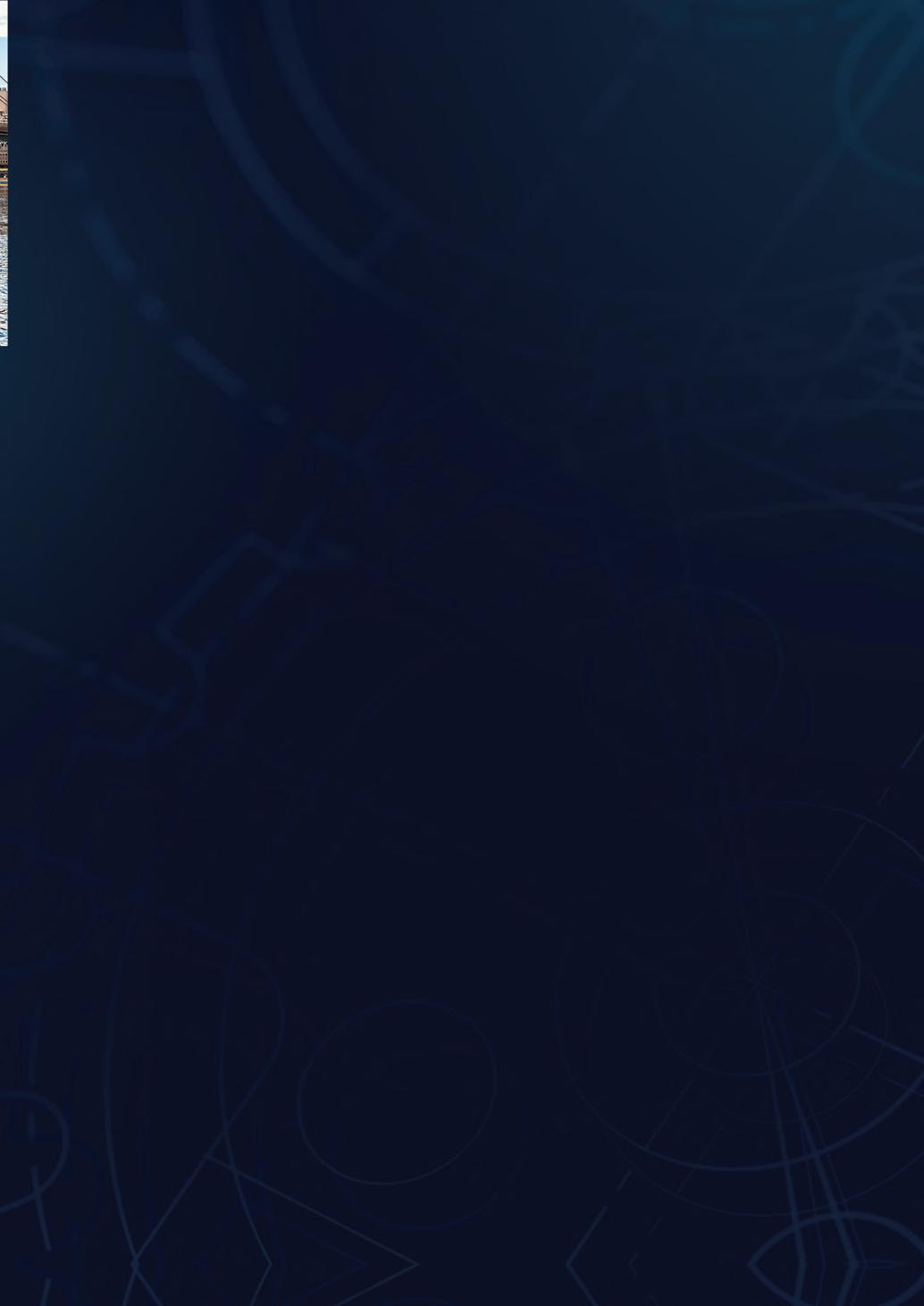
Going forward, Baudouin will continue along the path of expansion, and it will do so with a great team of people backing it.
“The company is growing fast, and every day is new and exciting,” Mr Kebaili concluded. “In the next three years, we plan to more than double our market share and we will achieve that through dedication and from the help of an exceptional team, both here at Baudouin and at Weichai Power.” n
Since 2019, SD Marine Interiors has established itself as an outfitting and cosmetic repair specialist in the cruise line industry. In newly appointed Managing Director Simon Dawkins, the company is looking to move to the next level while keeping a firm steer on deepening its sustainability commitments. Report by Andy Probert.



SDMarine Interiors is presently riding the crest of a wave, executing projects for major brand-name clients across the cruise line industry. In little more than four years, it has asserted its skills in the outfitting and cosmetic repairs niche, from projects at dry docks to those on water.
The arrival of Simon Dawkins as Managing Director in 2023 represents a statement of intent to take the division of the UK-based SD Group to new heights and propel its sustainable methods in the marine interior niche.
“I’m eager to explore new opportunities within the cruise sector and for us to take as green an approach as possible,” said Mr Dawkins. “Everybody wants a more sustainable future, and I’m keen to make that a top priority for the business and for cruise operators. Exciting times certainly lie ahead.”
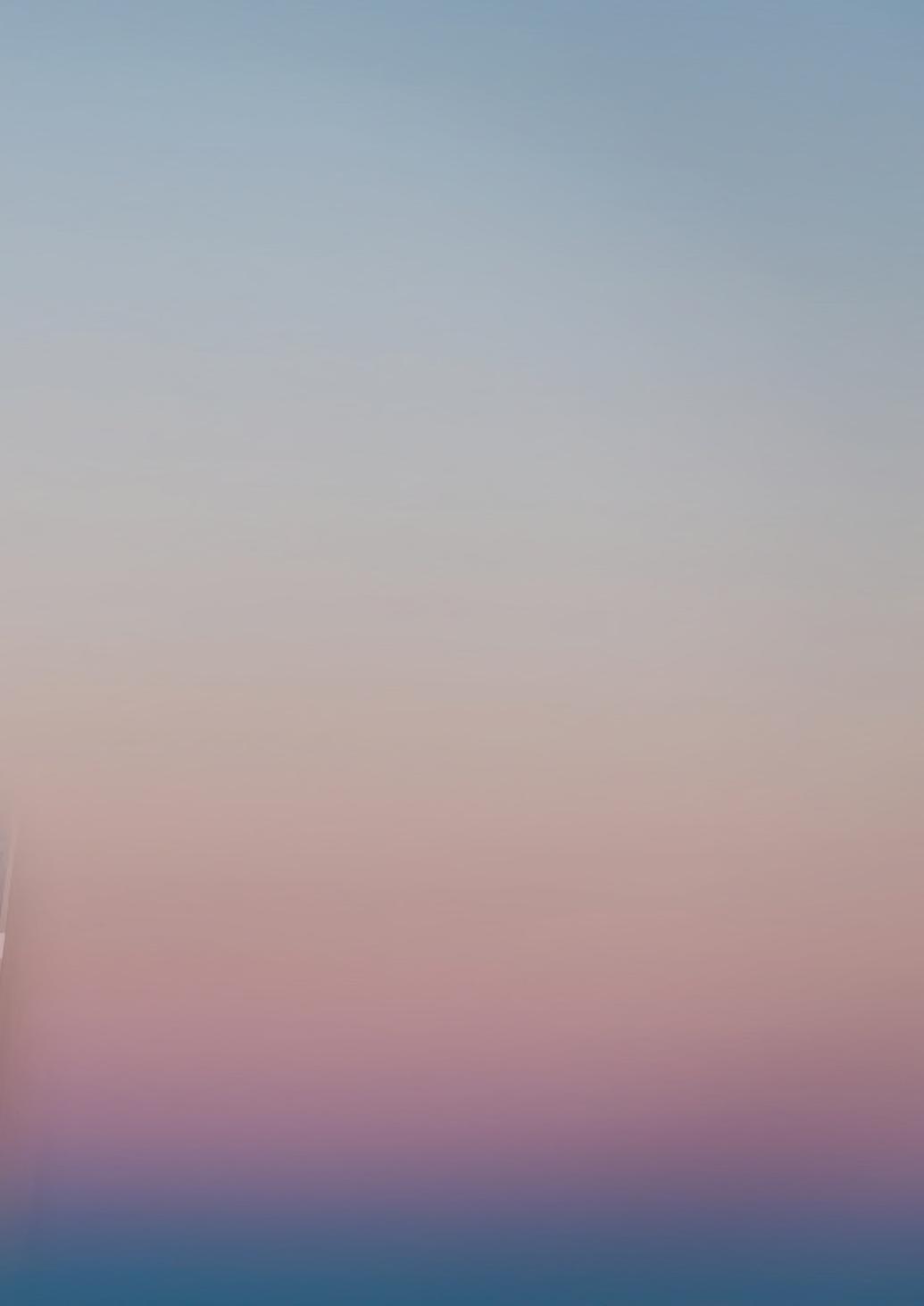
Global and reliable
SD Marine can draw on the experience of over 200 sealant applicators, decorators and cosmetic repair specialists that serve the SD group of companies with distinction in its land-based projects in the construction sector.
SD was established as a family-run business in 1973, initially specialising in the supply and fit of sealants. Based



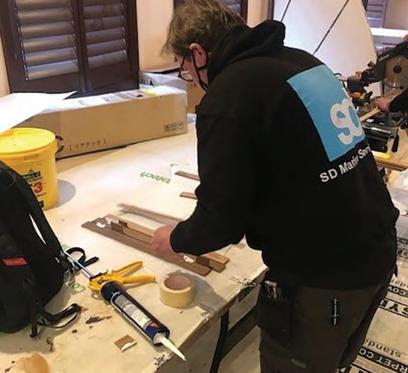

in Caldicot, South Wales, the group has grown to become one of the largest sealant specialists in the UK, with nine offices and seven distribution centres across the country.
Having added cosmetic repairs to its portfolio in 2013, SD Marine Interiors was launched in 2019 to bring its outfitting and cosmetic repairs expertise to the marine industry.
“We quickly established a reputation for reliability and efficiency,” said Mr Dawkins, “with a passion for providing the best service for our clients.” Its marine team has decades of experience in ship interiors and offers turnkey refitting for cruise ships, ferries and all passenger ships, maintaining and upgrading vessels in service and during regular dry dockings.
“As we do shoreside, we have invested a lot of time on cruise ships, looking carefully at all parts of the interior, recognising where damage can occur and then developing our own methods and materials for the appropriate repair,” he added
Scratched and chipped furniture, broken stone tops, chipped tiling and sanitary ware - there is nowhere that SD Marine’s teams cannot implement a robust, aesthetically beautiful and long-lasting repair.
With significant clients onboard, the marine interiors division is poised to step up its presence and reputation in the sector, with Mr Dawkins’ appointment an indicator of things to come.
He reflected on his new role: “I am bringing my deep knowledge, contacts and
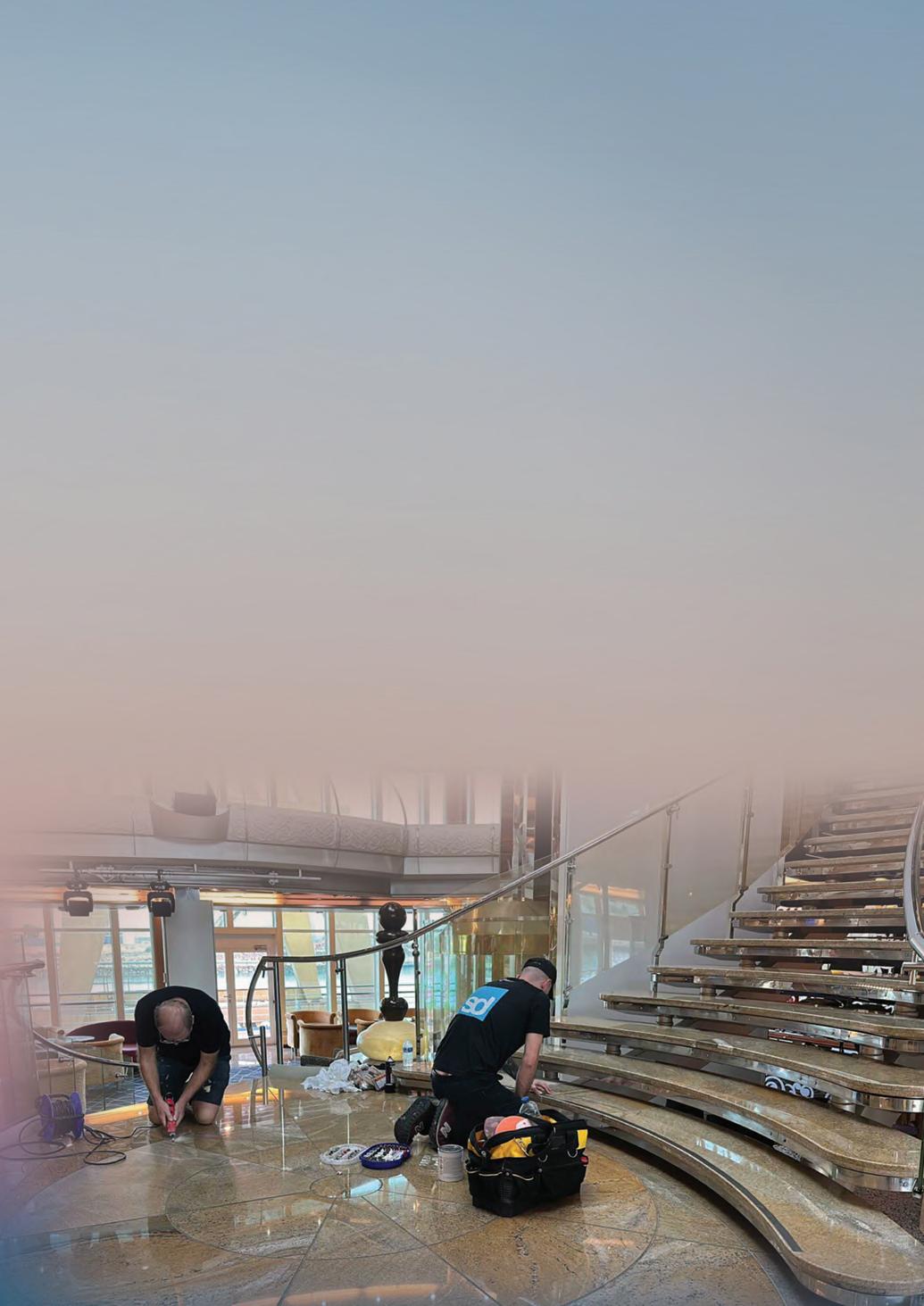
management experience from my previous positions in the sector. SD Marine has made progress in the last four years, and I have a two-pronged growth plan to drive the company forward.”
One side is fulfilling the cosmetic repair offering. This is already underpinned by the company’s desire to see all its specialists trained in-house and to extend their knowledge and experience in the niche.
“They are trained in all aspects of repair, and I want to make that best in class in the industry and push it out further into the marine industry,” Mr Dawkins explained. “There’s a lot of contacts and potential project opportunities that I can bring to SD.
“Our teams, usually four to six people in number, travel all over the world. A team has just concluded a big project in Panama, and another will be heading out on a trip to

Europe shortly. SD Marine has built up its offering, and I hope to expand on that by bringing in new clientele.”
On the outfitting front, such as interior construction of cabins, bars, restaurants and refurbishments, Mr Dawkins will seek to increase SD’s exposure: “Post-Covid, the market has stabilised, and companies want to start outfitting their ships more, bringing them up to modern standards.


More opportunities will begin to arise, and our experienced team is poised to tackle any outfitting project.”
The company is also taking strides to deliver on sustainability initiatives and responding to the challenge from within the industry, according to Mr Dawkins: “To me, sustainability is not simply a buzzword. It is an ethos, and I want to implement initiatives as we grow. There are many small things that we can do as an outfitter.”
These include looking at best practices, s uch as replacing plastic tubes with foil
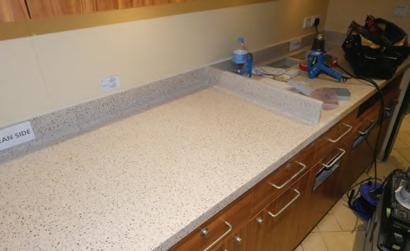
sausages for our sealant and adhesive applications, which offers 96% waste reduction. “From the outset, I want to be able to look at alternative products,” he said. “It is one small step for us, and the industry can follow us. I will look at all the products we use, the processes and how to reduce waste.”
SD Marine has also signed a sustainability declaration for marine interiors. “For me, the aim is two-fold: take the smaller steps we can as a company and also see what the wider group and industry can do to reduce carbon footprint,” Mr Dawkins added. “The ethos is always to reduce

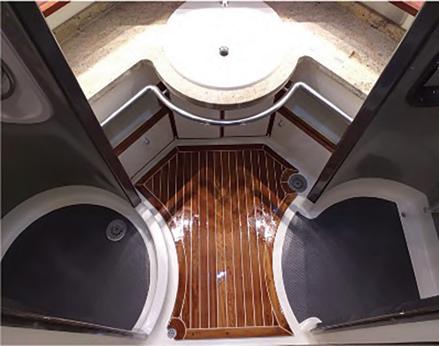
waste; repair, don’t replace. Whereas previously a worktop, furniture or a broken basin would be replaced, we now look to repair.”
He explained that having inherited SD’s customer base, the division was already talking with several clients on potential projects in the cruise line sector that were coming through: “That includes various works while ships are within the dry dock and cosmetic repair even when a cruise ship is in operation.”
SD Group plans to expand into mainland Europe to offer land- and sea-based projects and recruit European staff. “We are looking to step up a gear, as there is plenty of work out there,” Mr Dawkins continued. “We have just recruited a new Project Manager who brings a lot of knowledge

into what is already an experienced team at SD.
“We have built up a lot of trust with clients, and if you do a job well, they are more than likely to stick with you on the next project. We are constantly building those relationships in the market. That also applies to our suppliers. Trust, integrity, and transparency are very important to all industry stakeholders.
“I envisage 2025 could be a busy year for the cruise industry as companies want to modernise their ships,” Mr Dawkins concluded. “I think there is healthy competition in our sector, but that pushes us to achieve the best standards the industry consistently upholds. SD Marine is primed to kick on and grow further. I hope it marks a new chapter in the company’s development.” n


OMS Group is an integrated subsea cable installation and maintenance provider. The company offers services to turnkey submarine cable installation including project management, permit acquisition, wet plant logistics and storage, cable transfers, cable landing, and outside plant construction. Deputy Group CEO Richard Sun explained more to Hannah Barnett.

Though based in Malaysia, with supporting offices in Indonesia, Philippines, Papua New Guinea and Singapore, OMS Group is very much an international enterprise. This is evident in the work it does, connecting a vast network of submarine cables, linking countries around the world along the ocean floor.
But the company’s international credentials also extend to the manner with which it operates. “We are global and neutral, meaning we can serve east and west,” said Richard Sun, Deputy Group CEO. “As an independent private company, we are able to serve any telecommunications (Telco) or Over the Top (OTT) service provider. We are not bound by certain national constraints, and we do not have vested interests.”
OMS Group has been operating under several guises since it was founded by its current chairman, Datuk Lim Soon Foo, 30 years ago. The company began providing onshore services like customs clearance and agency logistics. Over the years, it grew through experience, developing its engineering and technological capabilities, to where it is today.
Now OMS Group operates ten vessels, comprised of five cable ships, two cablelaying barges and three anchor handling tug support vessels. It also has six ROVs and five ploughs. The company achieved a turnover of USD $203 million last year and continues to grow steadily.
Perhaps the most significant milestone is the most recent: in 2022, OMS Group embarked on a new business expansion


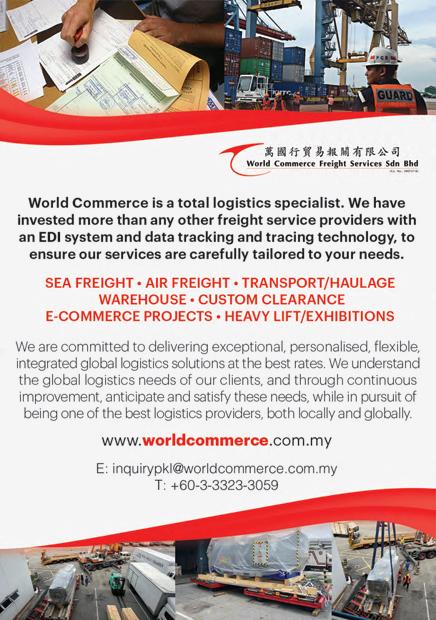

with the construction of a hyperscale data centre, set to deliver 50MGW midway through 2023 and another 50MGW in Q1 of 2024.
“We are already a significant contributor in the installation and maintenance space for submarine cables,” said Mr Sun about the project, “we also had the investment into the infrastructure, and ownership of the cable-laying stations with backhaul connectivity. The final piece was constructing the data centre, to really be an end-to-end, PoP to PoP infrastructure solutions provider.”
Also in 2022, OMS Group launched its fifth subsea cable ship, CS Cable Vigilance. The company’s fleet now accounts for around 10% of global cable ships. Alongside this, OMS Group has expanded its maintenance operation areas and is now present in three zones: the Atlantic Ocean, the Indian Ocean and the Southeast Asia region, and has
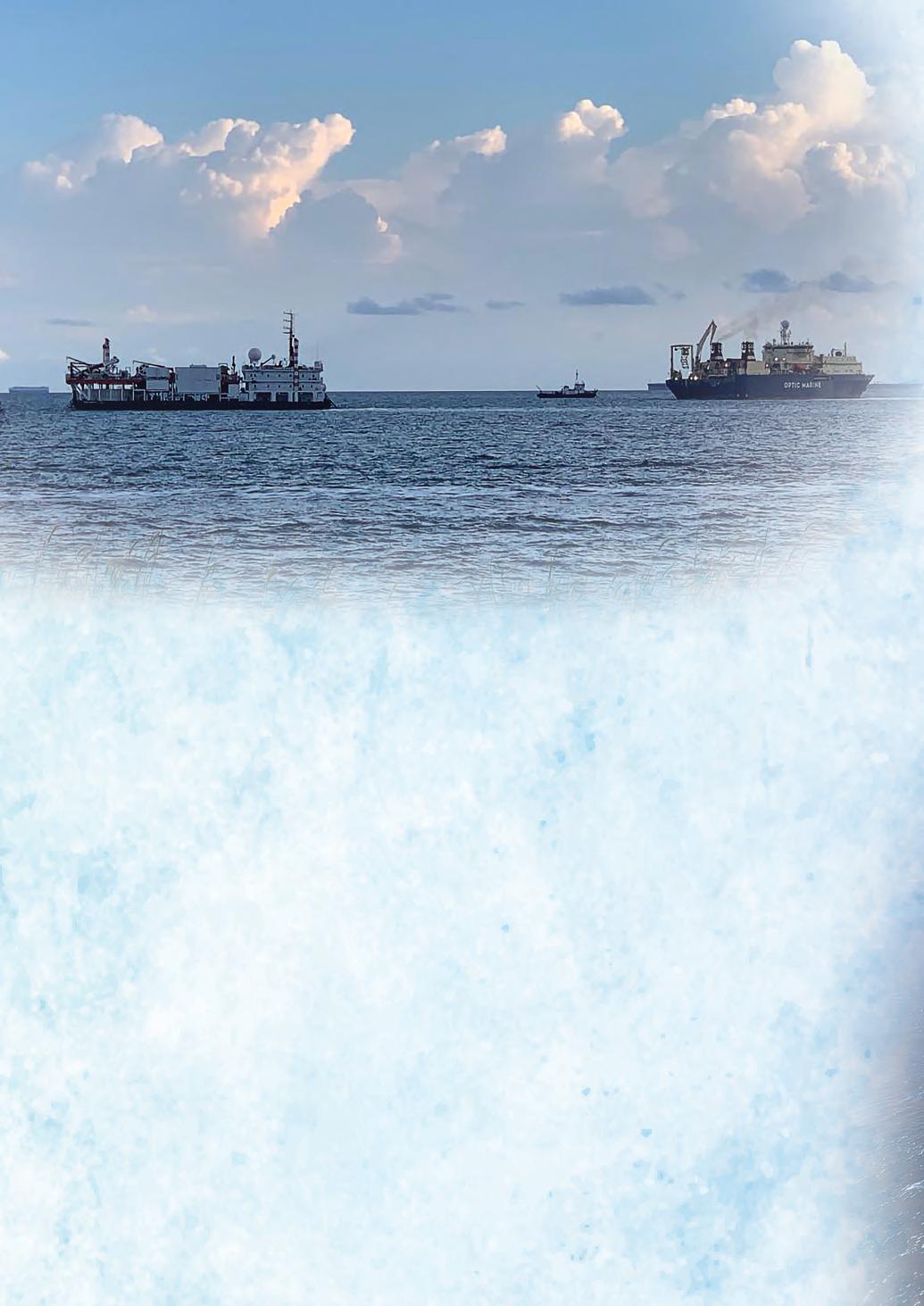
recently finalised a South Pacific Marine maintenance agreement, which covers all the Pacific Islands and the east coast of Australia.
It is certainly a busy time to be in in the fibre optic submarine cable space. “A lot of equipment suppliers are fully packed in terms of their manufacturing capabilities,” Mr Sun confirmed. “Certainly on our side, our installation schedule is very busy. Our big installation vessels are fully booked for quite a number of years.”


During the Covid pandemic, OMS Group completed the Converge ICTSI Domestic Submarine Cable Network (CDSCN), spanning 1,824 kilometres and connecting 22 landing stations throughout the Philippines.
CDSCN includes 48 fibre cores running on 400G and 800G. A project of this magnitude usually requires maintenance personnel to travel from site to site, which was impossible during the strict lockdown in the Philippines at the time.
But OMS Group is not the sort of company to be put off by a challenge. As Mr Sun explained: “We said to our customer: ‘We can get this done, it will probably cost a bit more, but are you willing to get this across the finish line?’ And they agreed.”

The company deployed all its shallow water assets – some acting as floating hotels for its teams – in order to get government permission for the work to go ahead. “Our teams spent the entire project on board the vessels, going to the beach
to do the work, and then hopping back,” Mr Sun explained. “It was quite an achievement for us, completing so many cable landings under those conditions.”
The company also contributed to an impressive submarine cable system called SX Next, a 15,857km network connecting Sydney, Auckland and Los Angeles, with branching units linking the Pacific Islands of Fiji, Tokelau and Kiribati. “It great to be able to bring connectivity to such a remote area and have them join the digital world. We are quite a proud of that too,” said Mr Sun.
OMS Group is fully integrated across the value chain when it comes to installations and does all permitting, beach team operations and LAN cable laying itself.
“If a customer contracts different teams
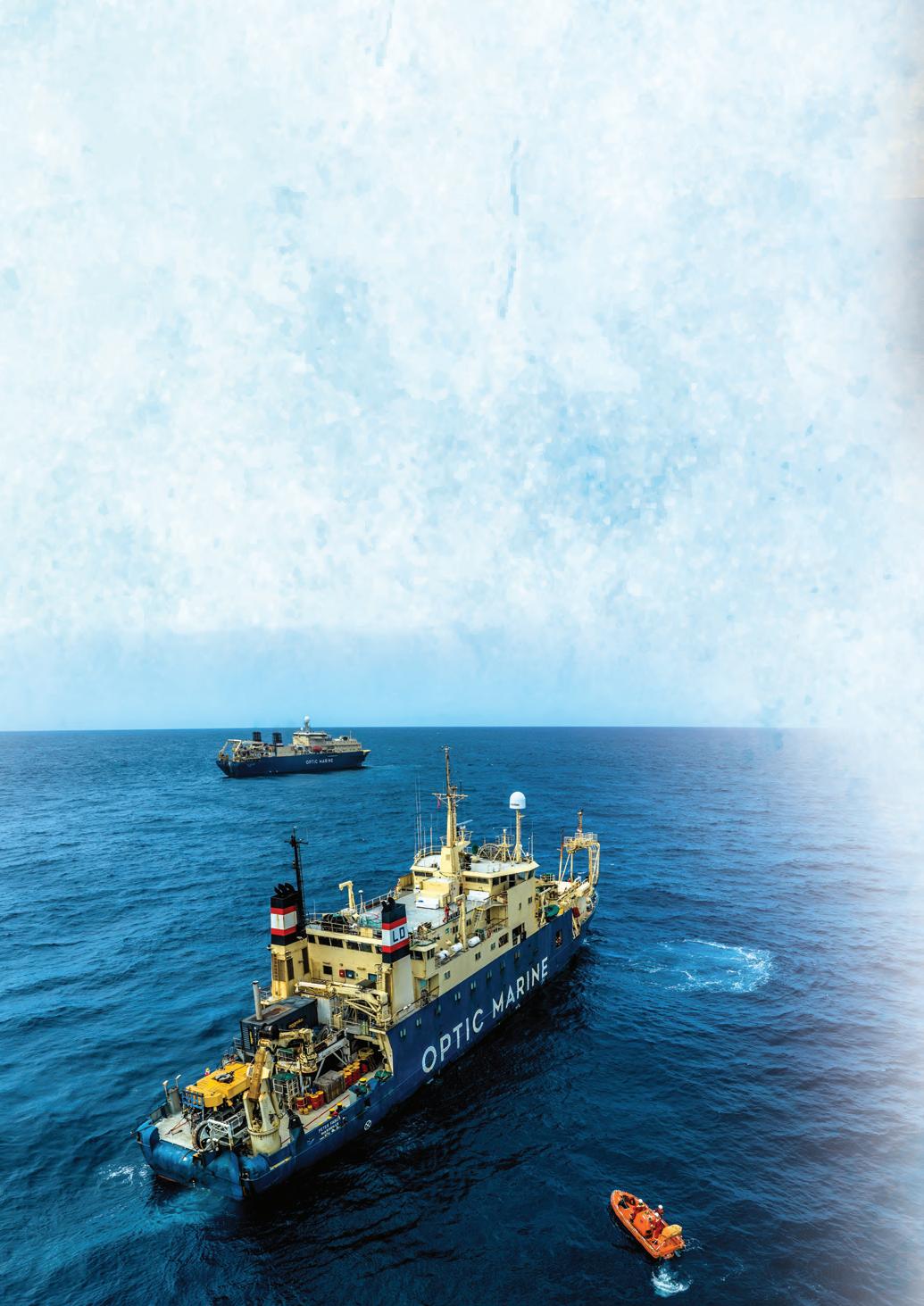
separately, like a shallow water team and a beach team, and then one is delayed, they'll need to pay extra for the other,” explained Mr Sun. “We're able to de-risk our projects, essentially for our customers, and provide that one-stop-shop installation solution.”
Like any successful business, OMS Group values robust relationships with its partners and suppliers. “I think the important thing about our partners is that we've always maintained a long-term approach,” Mr Sun said. “Even if others come out and commercially offer a better rate, we prioritise, above all, long-term relationships and loyalty. As well as, of course, quality in terms of the work performed.”
Engaging in transglobal projects on the scale OMS Group does also comes with its own bureaucratic obstacles.
One of the main challenges is obtaining government permits when laying a large international cable system and traversing several jurisdictions.
“It means we have a lot of discussions with governments and give them industry recommendations as to how they should address any issues,” explained Mr Sun. “And certainly, if there's any change, as soon as we are informed, we are hands-on doing the job. So we will try to use our expertise to alleviate the risk. And that way, we also know which projects may face risks, and perhaps change vessel planning in anticipation of these risks.”
There is not much stopping OMS Group as it continues its upward trajectory. The company proudly spans international borders.
“I think we're very versatile,” reflected Mr Sun. “If you look at maintenance specifically, there is the potential for some exciting developments. As we expand and move forward, having a maintenance solution that addresses the
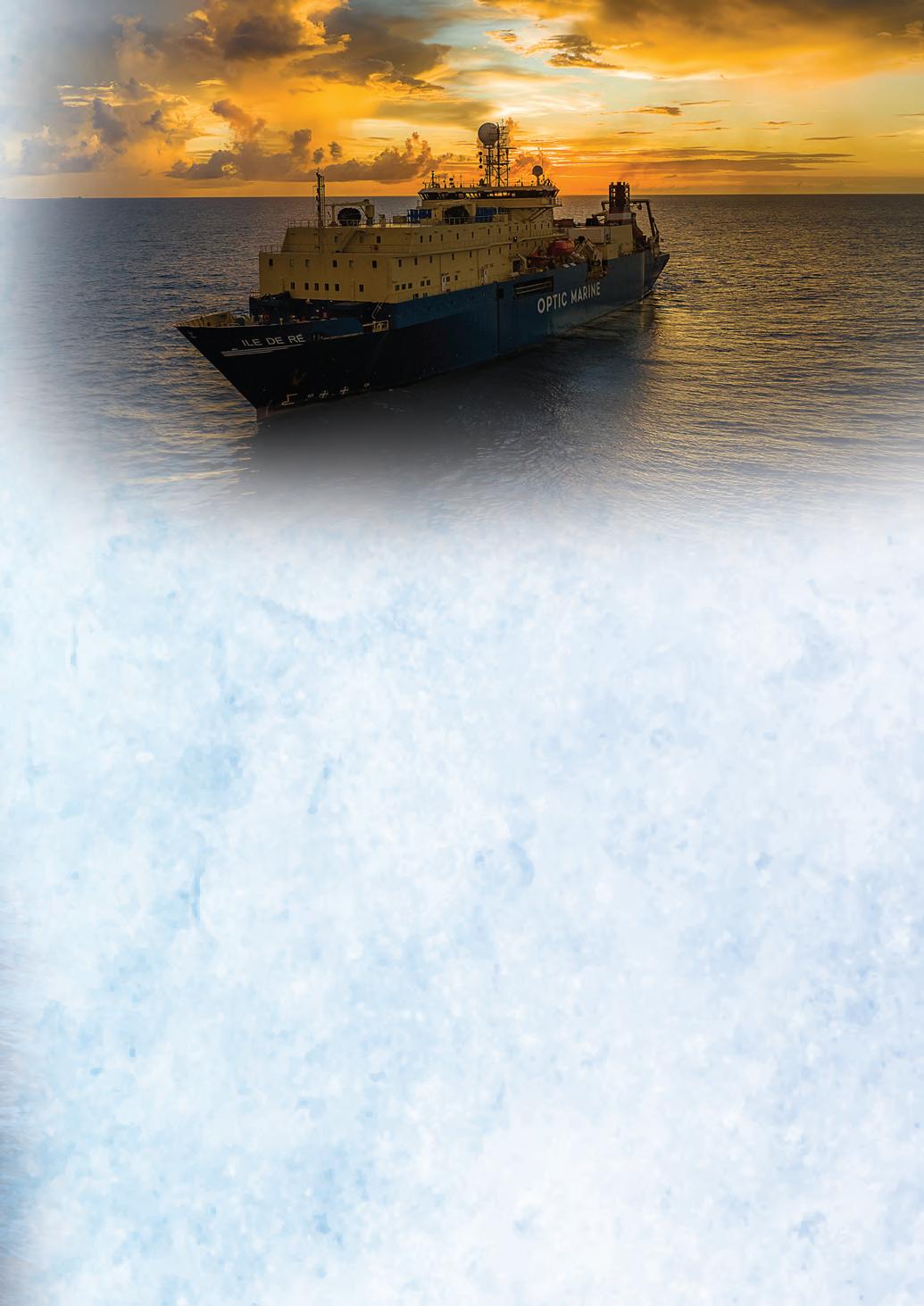
need for global, (as opposed to regional) networks will make the next few years quite exciting.”
It is this sort of opportunity for growth and international expansion, not constricted by borders, that makes the cable laying space such an exciting sector to be a part of.
“Being independent means we can make business decisions quickly,” Mr Sun concluded. “For example, our investment into the data centre was made quickly, and it's proven to be a great new commercial unit. It excites me to be able to go out and look at new business opportunities knowing that on our side at least, decisions can be taken quickly. It makes us extremely dynamic in this market.” n


seven seas, five oceans, one voice

conidia bioscience varuna marine services port of long beach porto montenegro
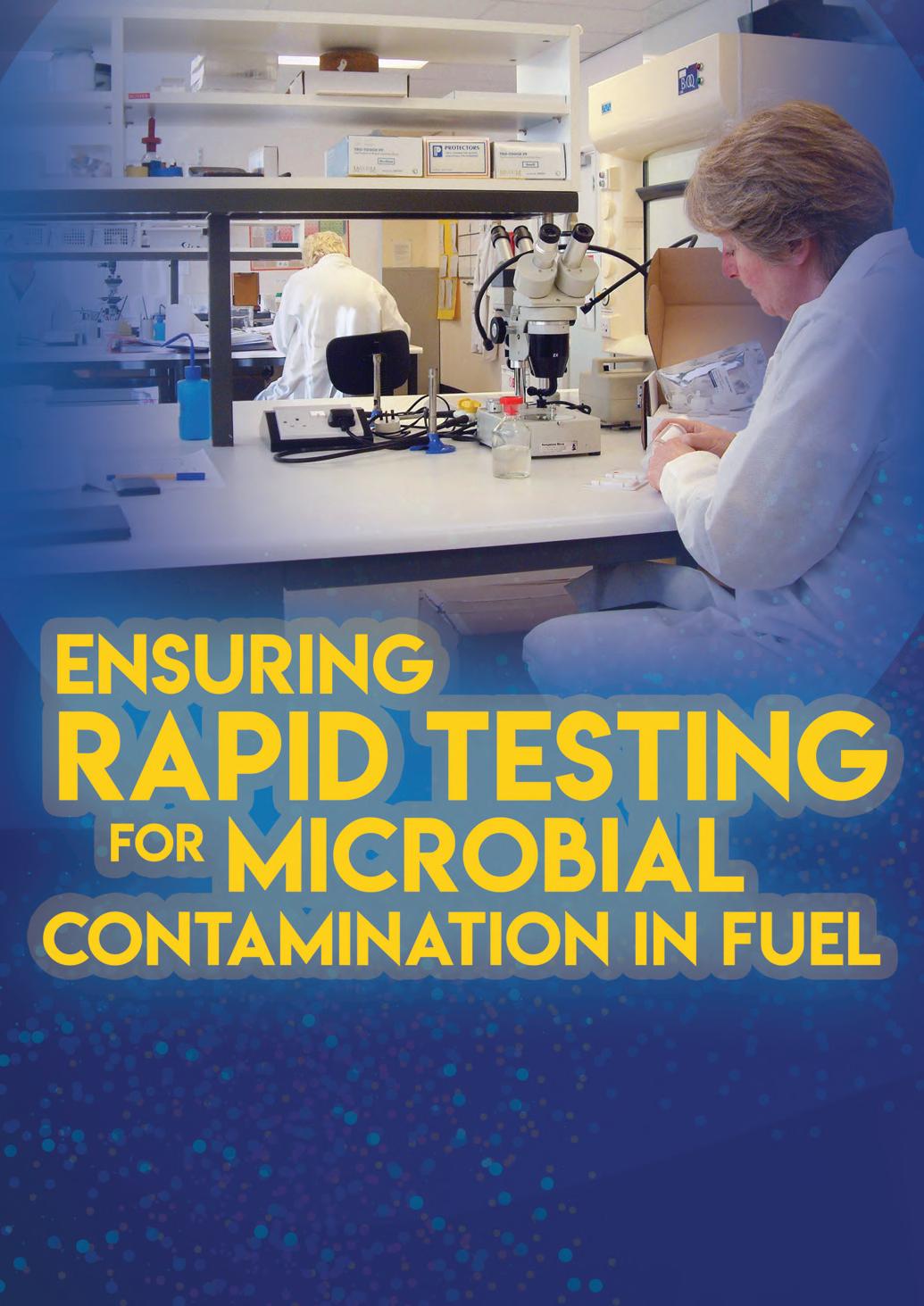
Conidia Bioscience is a leading UK-based biotechnology company specialising in developing rapid microbial detection technologies for the maritime and oil & gas sectors. Having passed the milestone of selling its six-millionth microbial contamination test, the company is well-positioned to respond to the ongoing fuel transition process across industry. Technical Consultant Pierre Poitras and Commercial Account Executive Paul Hicks discussed the, company in conversation with Andy Probert.
Conidia Bioscience might be small, but it is a global giant on the frontline of microbial detection technologies. From global heavyweights of the oil and gas sector to maritime vessel owners and one-person startups, Conidia’s testing kits are critical to the efficient working of industry.
In 2008, the company launched FUELSTAT®, a rapid microbial contamination test for diesel fuel. It is an immunoassay antibody test kit for microbe detection and can be used wherever fuel is manufactured, stored, sold or used. Unlike traditional tests, FUELSTAT can run different tests for bacteria, fungus and H-res (known as the ‘diesel bug’) and only finds micro-organisms that damage fuel systems and tank structures. Tests take as little as 15 minutes, onsite, at the tank, compared to others taking at least 48 hours.
Fuel testing kits can be used for many purposes: traditional marine fuel testing

methods have depended on fuel samples being sent onshore for analysis and waiting days or weeks for the result. Microbiological contamination often creates operational issues that can disrupt the use of an asset, such as an aircraft or generator, which leads to the question of whether sending samples onshore for lab analysis is worthwhile or economical.
If left unchecked, it can lead to microbial growth, corrosion and decreased fuel efficiency. A large tank could develop a leak causing fuel to escape into the ground, or, in the case of commercial aircraft, a blockage could cause engine failure and put human life at risk.
This is where the FUELSTAT kit comes into its own, particularly in the commercial marine industry. In a white paper, Pierre Poitras, Technical Consultant at Conidia Bioscience, highlighted how the increased

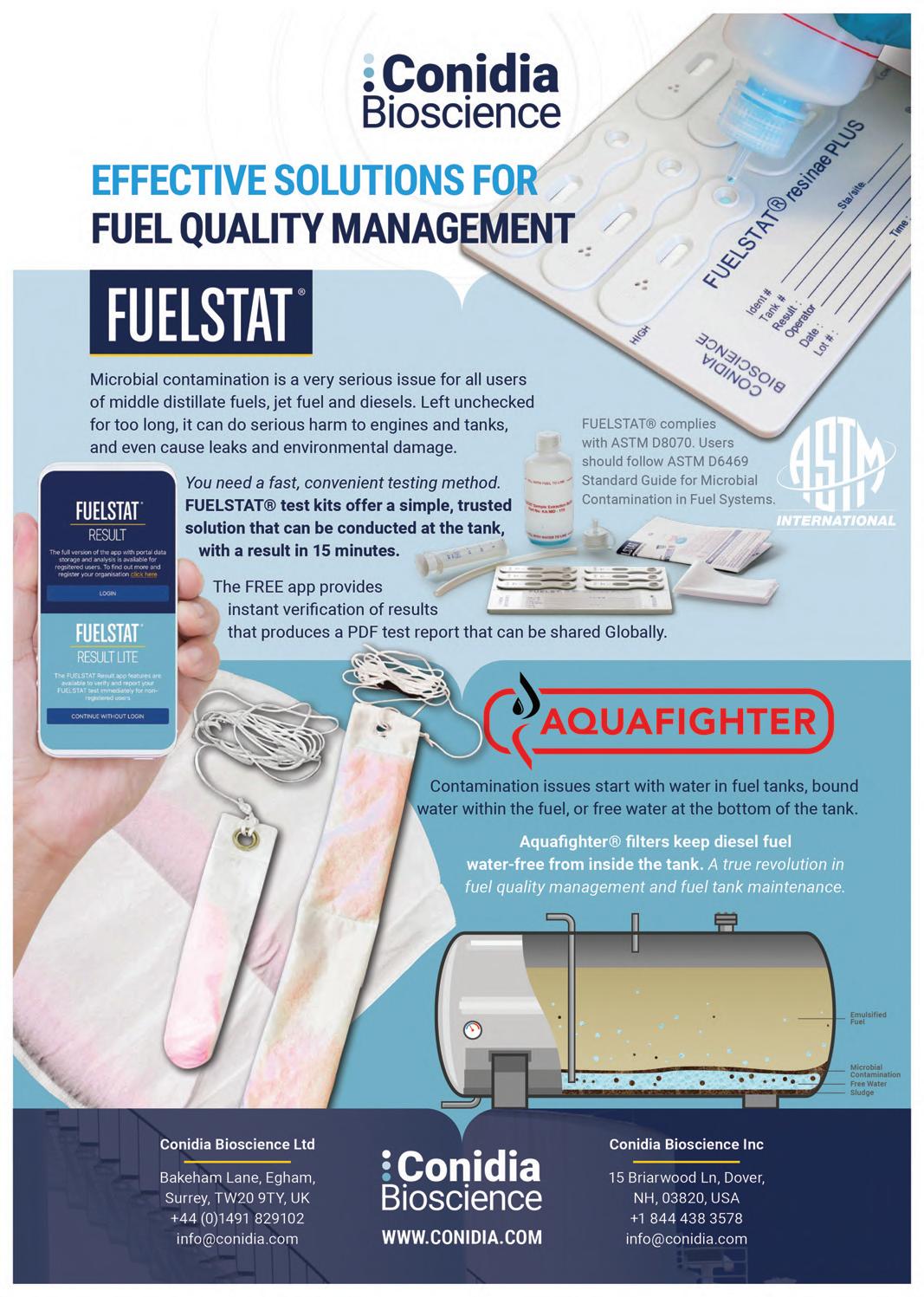

percentage of biofuels could raise the cost of fuel and leave it susceptible to microbes.
To help meet environmental regulations and reduce shipping's environmental impact, increasing percentages of bio-components are being added to marine fuels, including additional Distillate Fatty Acid Methyl Esters (FAME) grades, another potential facilitator of increased water content and microbial contamination. These are complemented with new biofuels created using innovative refining processes.
“The heightened threat comes from an increased potential for microbial contamination,” said Mr Poitras. “Dormant spores
of microbes, including yeast, filamentous fungi and bacteria are present in the fuel and, when water and air are in the system, create an ideal breeding ground for them to multiply.”
Utilising a fuel testing kit to identify microbiological contamination at the earliest possible stage is faster, cheaper and less risky. “While sampling can be sent to a laboratory,” continued Mr Poitras, “microbes are living, dynamic organisms. This means the microbial population can change while the sample is in transit and results may not be representative of the tank environment.”
However: the FUELSTAT testing kit can be used to test fuel in situ, whether in port or at sea. As a quick, easy and cost-effective alternative, the kit is proven for identifying microbes that can degrade fuel and accurately indicate contamination levels.
These low-cost, single-use test kits are simple, require minimal training and no special handling, and can readily be integrated into day-to-day operations. They provide rapid results, which can be scanned into a mobile app for logging and sharing results immediately from ship to shore.
“They offer an economical and quick way to determine levels of microbial contamination in fuel and enable fuel tank testing while at sea, and any required remediation work to be scheduled for when the ship returns to port,” said Mr Poitras.
The paper acknowledged that increasing the percentage of FAME in marine fuels to
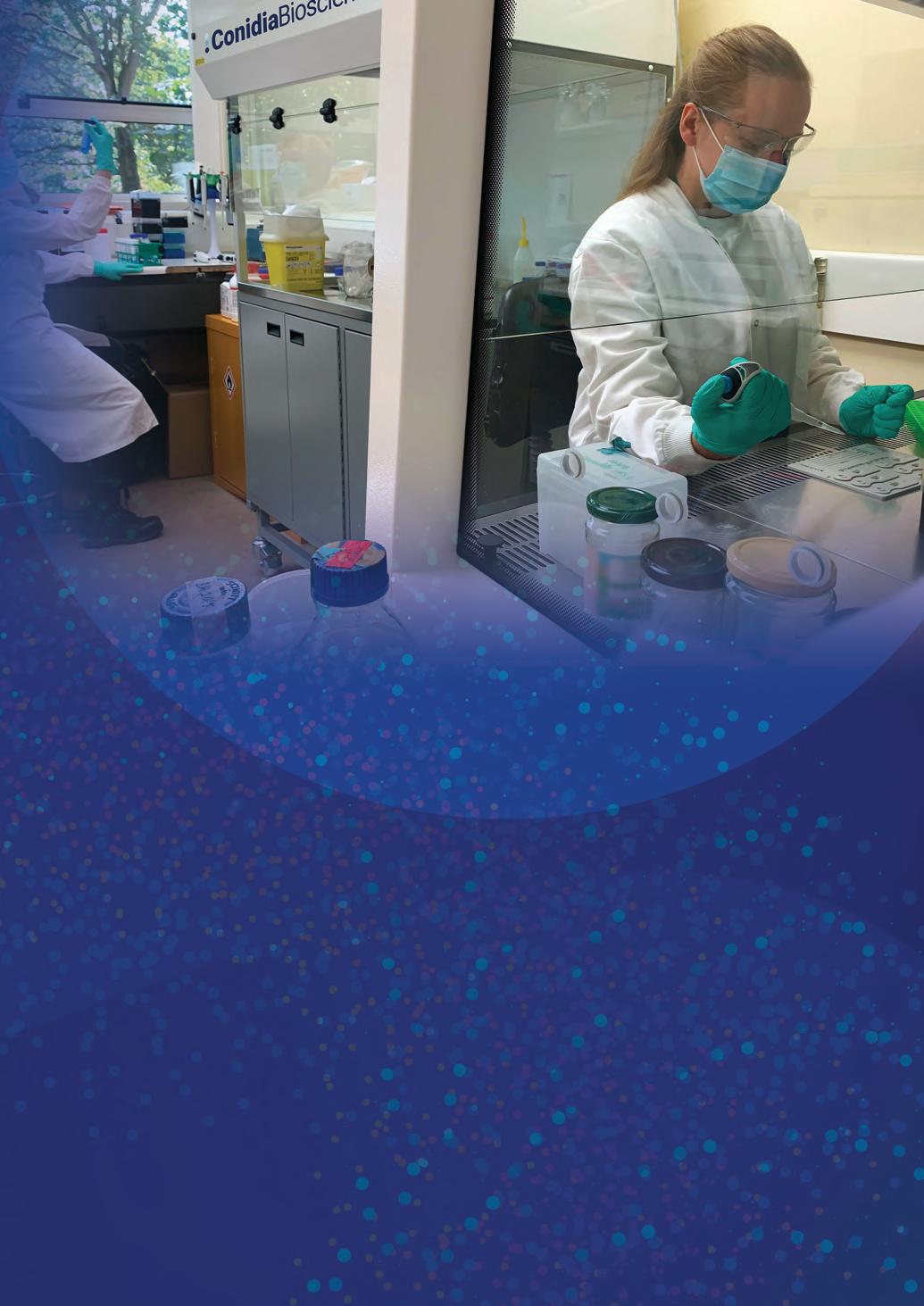
reduce greenhouse gas emissions is a clear winner in the short term. He concluded: “Contamination can occur throughout the fuel supply chain, and simple, onboard testing provides instant results, facilitates optimisation of maintenance procedures, and may save thousands in repairs or lost operating time.”
Such has been the effectiveness of FUELSTAT, Conidia Bioscience has sold more than six million testing kits to more than 400 operators and ten major oil companies in over 130 countries, according to Paul Hicks, Commercial Account Executive.
The company, founded as a spin-off from the UK's Defence Science and Technology Laboratory, has achieved critical milestones to become a leading provider of microbial detection technologies and services.
These include the development of multiple product lines, establishing partnerships with major industry players and receiving industry-standard accreditations.
In 2016 Conidia Bioscience launched a smartphone app, allowing users to analyse test results, track testing results by asset around the world in real time and receive guidance on how to manage fuel contamination issues.
The company expanded its range with the FUELSTAT Resinae PLUS test kit, which detects fungal contamination in aviation fuel and other fuel types. Conidia Bioscience then received ISO 9001 accreditation for its laboratory services' technical competence and quality management.
Conidia Bioscience expanded into the USA in 2020, with a new sales and service
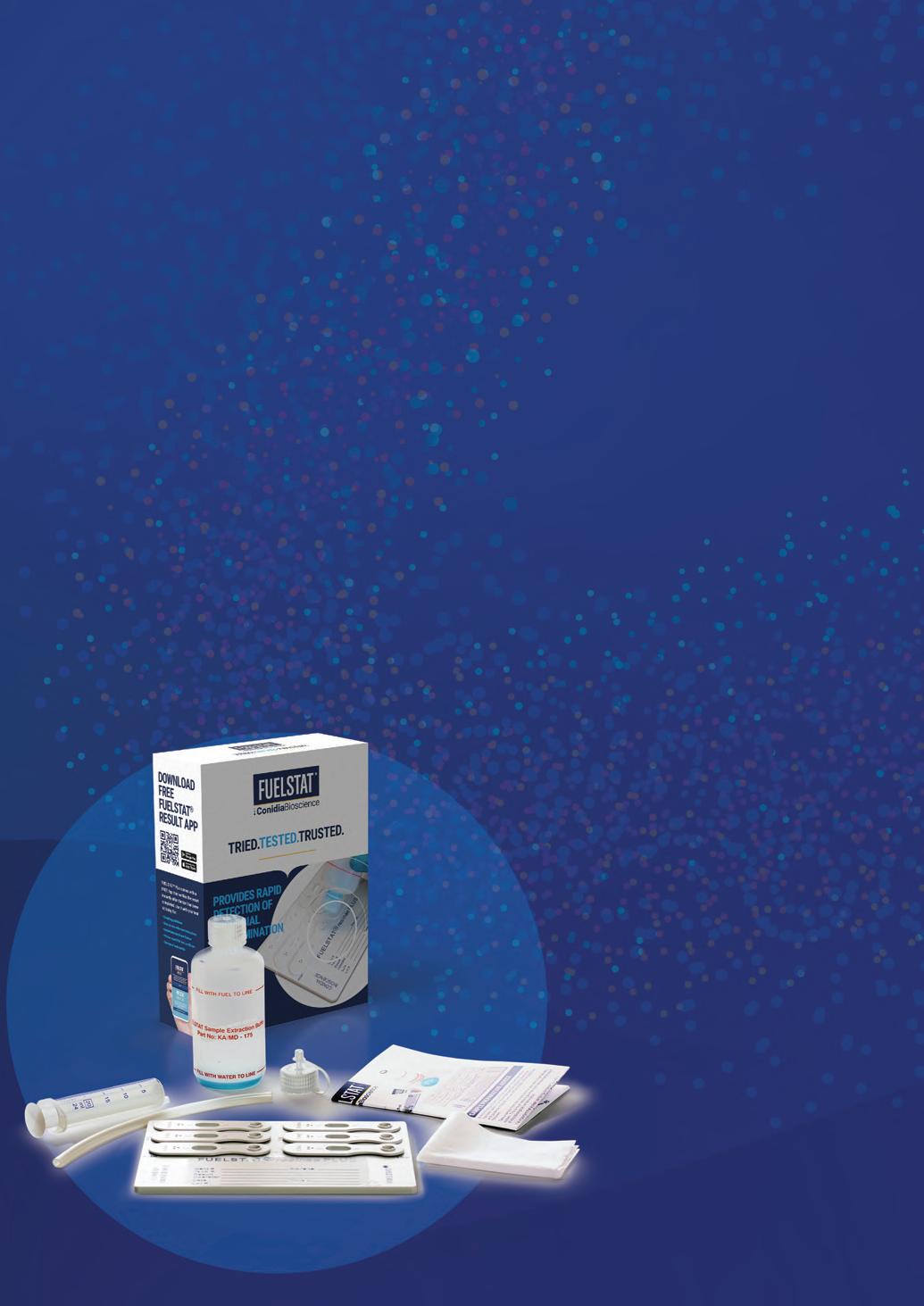
team focused on the growth of various aviation and diesel sectors. Mr Hicks said FUELSTAT provides the lowest cost to the result of any test on the market and is considered the only actual on-site test that gives dependable results – even in the dirtiest of conditions.
It is also ASTM D6469 compliant, the Standard Guide for Microbial Contamination in Fuels and Fuel Systems, which states in Section 8.3: ‘Ideally, all testing should be accomplished at the sampling site, within a few minutes after a sample is drawn.’ Testing immediately most accurately represents actual fuel system conditions and allows for faster maintenance decisions to be made.
He also described how using rapid microbial detection technologies can help reduce environmental impacts, promote more sustainable fuel usage, minimise the need for re-testing and allow for faster remediation of contamination issues.
Conidia Bioscience intends to expand its range; increasing its FUELSTAT line to include tests for different fuel types, expanding its microbial detection services to various industries and enhancing its digital offerings.
“The company continues developing new technologies by investing in research and development,” said Mr Hicks. “It also

focuses on expanding its global reach by establishing new partnerships and increasing distribution channels.”
Conidia Bioscience is also committed to developing products and services that address sustainability concerns in the industries it serves, potentially including waste reduction and emissions reduction measures. “The change in fuel types and fuel transition for engine types susceptible to contaminants shows that the company is well-positioned to take advantage of that trend.”
The company recently announced a new partnership between Conidia Bioscience and DieselCare AS, which sees Conidia acquire the global distribution of Aquafighter® water removal filters for Diesel and middle distillate fuels. “Water is one of the biggest enemies of fuel systems,” said Mr Hicks. “When present in fuel, water can cause a range of issues, including microbial growth, corrosion, and decreased fuel efficiency.”
Aquafighter captures and eliminates water directly in the tank. By using Aquafighter, individuals and businesses enjoy a range of benefits. These include increased fuel efficiency, improved engine performance, reduced maintenance costs and longer fuel system life. Plus, with its environmentally friendly formulation, Aquafighter is a responsible choice for those looking to reduce their carbon footprint.
Increasing competition, regulatory changes and global economic conditions made the industry landscape challenging, as Mr Hicks clarified: “Through transparency,
open communication, being responsive and dedicated to innovation and collaboration with our partners, Conidia Bioscience continues to thrive in an ever-changing world.
“Our long-term relations with suppliers and clients are a testament to our success. Conidia Bioscience is well-positioned to meet the evolving needs of its clients and the industry. The potential for our technology is limitless.” n

Varuna Marine Services BV proudly helps ship owners and technical managers understand the complexity of – and comply with – the everchanging maritime regulatory framework. Founded by a career seafarer, the company has enjoyed sustained growth and strong customer retention. Company Founder and Managing Director Sanjeev Wewerinke-Singh spoke with Richard Hagan.
Varuna Marine Services BV was founded in 2017, by current Managing Director Sanjeev Wewerinke-Singh, a career seaman with vast experience both at sea and onshore. As the head of Varuna Marine Services BV, and along with his global team of skilled professionals, Mr Singh has successfully leveraged this collective expertise and experience to assist clients with expert advice.
“We convert the laws into practical actions to help companies comply with them,” said Mr Wewerinke-Singh. “We provide Classapproved services to vessel owners and operators, as well as flag states.”
Since its establishment, Varuna Marine Services BV has grown from strength to strength, with a corresponding gradual increase in both its physical footprint and its headcount, as well as the services it is able to offer the industry. Today, the company has headquarters in Amsterdam and four additional offices located in the

major international shipping hubs of Houston, Singapore, Malaysia and Australia. Approximately 150 staff members operate from across these offices.
Varuna Marine Services BV is a maritime services company providing a wide range of traditional and cutting-edge solutions to the maritime industry. An extensive portfolio of services includes maritime securit, helping to protect vessels and operations from cyber threats, along with testing services for ballast water treatment systems to ensure that they meet all applicable regulations.
Other services focus on hazardous materials, helping businesses comply with Inventory of Hazardous Materials (IHM) regulations through documentation, sampling and testing, and compliance verification. Indeed, Varuna Marine Services BV provides a comprehensive IHM management service that includes


all aspects of IHM lifecycle management. The company can also help businesses manage asbestos on their vessels , featuring surveys and removal plans.
The company provides vessel inspection services around the world, assessing the condition of a vessel and verifying compliance with regulations. Varuna Marine Services BV offers Vessel General Permit compliance testing services for vessels operating in the United States. The Circularity ESG module offers an allencompassing approach to sustainability reporting, providing detailed insights into various key performance areas.
More technological services involve Flexible Satellite communication (VSAT) services to the maritime industry, delivering

connectivity between businesses and their vessels and operations. Likewise, CyberSmart is an Artificial Intelligence (AI) engine: a multi-modular platform digitizing maritime operations.
Varuna Marine Services BV is an ISO 9001:2015 company, also certified by major classification societies and flag states. This ensures that services meet the highest industry standards.
The company’s ability to integrate technology into its service provision is a particular highlight, according to Mr Wewerinke-Singh: “We heavily leverage technology for everything that we do, including the development of custom software for different processes. This is at the core of what we offer.”
Varuna Marine Services BV’s ballast water management (BWM) service is rapidly becoming one of its busiest. This i s thanks in part to a ground-breaking new mobile testing laboratory that the company has deployed at all five of its offices.
“ Our mobile BWM labs are approved by all of the major class societies for the service that they provide,” Mr Wewerinke-Singh explained. “While traditional physical labs cannot move, our BWM labs are able to go to the ship wherever it is and carry out the testing wherever it stops.”
Each mobile lab is operated by a fully –trained and qualified staff member. The

labs finally provide stakeholders with a means of enforcing new BWM laws and are very popular with the industry.
“The arrival of our mobile labs is significant in terms of our ability to meet the substantial demand for this service,” he said. “It’s clear that demand for ballast water management services is still climbing and may only peak in late 2024.”
Mr Wewerinke-Singh noted the growing demand for these BWM labs: “We’re also seeing a lot of interest from port authorities who currently have no way of knowing whether a ship’s BWM system is compliant and are therefore unable to enforce the responsibility of vessels to comply.”
Cybercrime on the high seas
Cyber security is another very popular service provided by Varuna Marine Services BV, and the company’s Security Operations Centre (SOC) in Amsterdam is the heart of its operation. There, the company’s cyber security research and testing operations are headquartered, giving Varuna Marine Services BV a critical advantage in the ongoing fight against internet crime.
“We’re up against very intelligent hackers and defending against them requires a proactive approach,” Mr Wewerinke-Singh explained. “We have a network centre with an IT/OT lab where we do all kinds of vulnerability and penetration testing. We also have hardware that simulates various kinds of equipment on an ongoing basis, allowing us to build better defences.”
AI has also already been incorporated into the company’s arsenal of security tools. “Defending against automated threats

requires alerts and responses able to defend at machine speeds. It requires advanced algorithms,” said Mr WewerinkeSingh. “Therefore, we are now implementing advanced AI as part of our algorithm as well as working with leading industry peers to ensure that our services are in sync with emerging technologies.”
Varuna Marine Services BV also offers a general maritime IT maintenance service –one that has grown rapidly, with approximately 1,000 vessels in the company’s care.
The company is standing by to assist the industry through compliance with a major new incoming cyber security regulation for new build ships. All classed ships contracted for construction on or after 1st January 2024 will be required to comply with the International Association of Classification Societies’ new Unified Requirements E26 and E27 for cyber security. The new rules require that onboard networks have a hardened digital footprint and be much more secure.
Varuna Marine Services BV proudly offers satellite communications (satcom) products and service contracts from well-known providers including Intellian, BlueC Mobile and Starlink, as well as legacy VSAT services. While VSAT was traditionally the main source of at-sea communications for vessels, the industry h as substantially embraced Starlink as a replacement, since it offers better coverage and much greater bandwidth.
“Starlink is becoming the primary solution that we’re supplying to customers, and VSAT – which is expensive and relatively slow – has become a fallback,” said Mr Wewerinke-Singh. “There’s a corresponding shift in costs because Starlink is much more affordable, and so for all of those reasons,

many of our customers are interested in deploying Starlink to their vessels. It’s a revolution in maritime connectivity; Starlink’s speed will revolutionise the whole maritime ecosystem by opening up more datasets and more automation thanks to the improved bandwidth availability.”
Varuna Marine Services BV provides flexible VSAT contracts to ship owners, keeping costs down while ensuring redundancy of connectivity should Starlink fail for any reason.
Concluding, Mr Wewerinke-Singh reflected on his love for the industry and the work he and his teams are doing: “I love solving challenges and resolving our customers’ technical problems. The explosion of technology in the industry is very exciting and you have to constantly think ahead!” n

Located in Southern California, Port of Long Beach is the premier US gateway for trans-Pacific trade, and a global leader in green port initiatives. Chief Operating Officer Dr Noel Hacegaba outlined the latest developments, in conversation with Phil Nicholls.
The busy wharves at Port of Long Beach generate $200 billion in trade annually and are connected to 2.6 million US jobs. In 2022, these terminals handled more than 1.4 million TEUs of exports, making it the nation’s leading export port for a second consecutive year.
“Port of Long Beach has been successful thanks to our two-pronged objective of maintaining commercial growth and environmental stewardship,” explained Chief Operating Officer Dr Noel Hacegaba. “We have demonstrated a commitment to operational excellence, preparation for
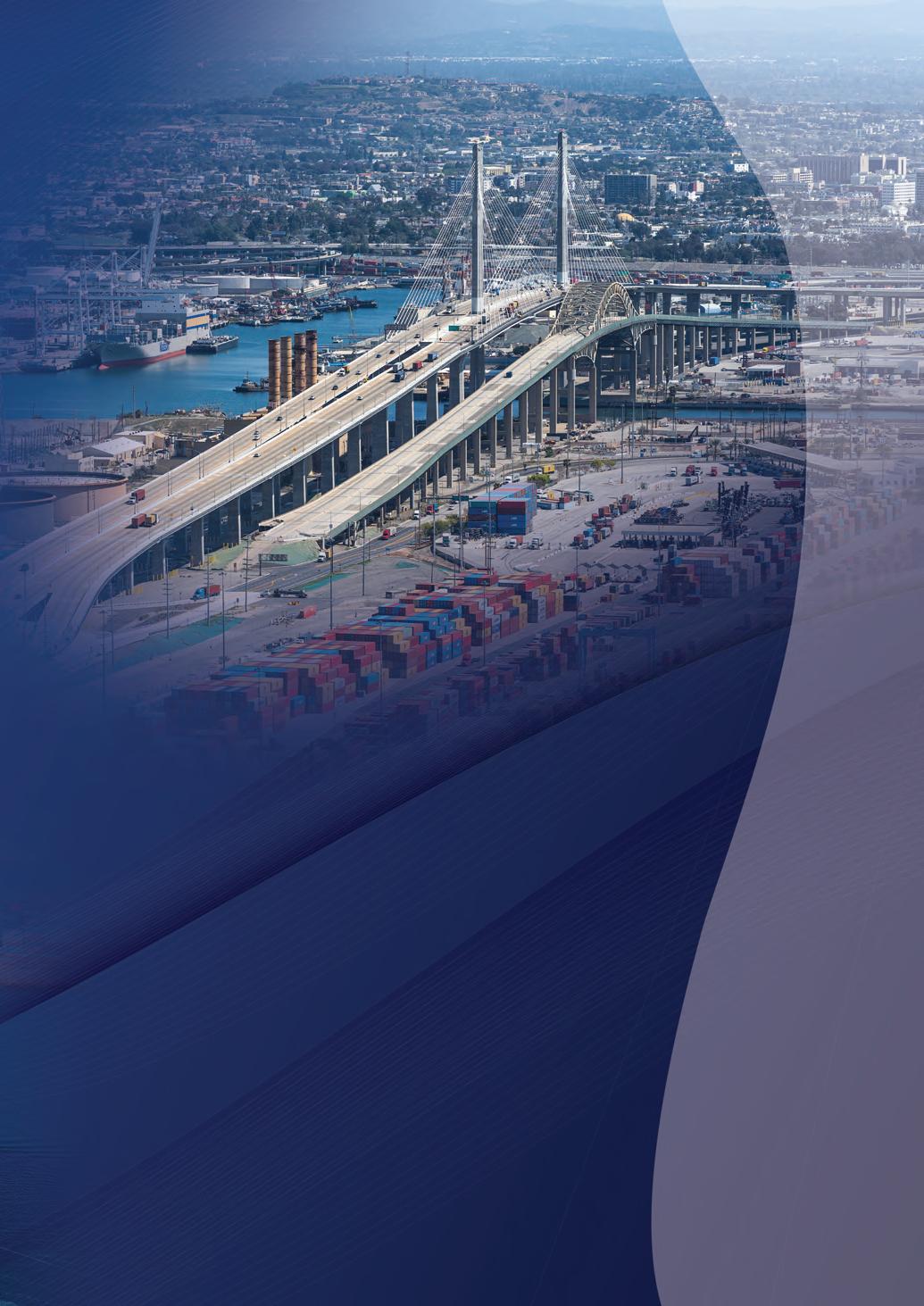
future challenges and the strategic management of resources.
“Our long-term dedication to remain competitive and environmentally responsible has made us an industry leader that shares a common goal with the Biden Administration to enact policies related to climate change and reducing harmful emissions.”
The Port of Long Beach is a public agency and is the Harbor Department of the City of Long Beach. The port manages almost 12 square miles of land, leasing it to private firms who operate the terminal facilities.
This is one of the few US ports that can welcome today’s largest vessels, serving 175 shipping lines with connections to 217 seaports around the world. Goods moving
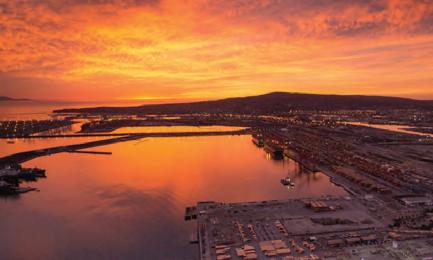



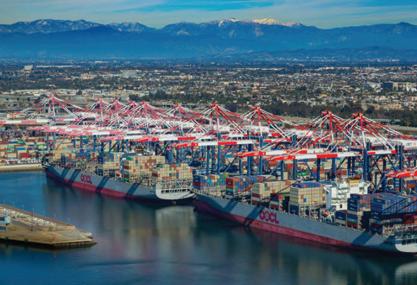
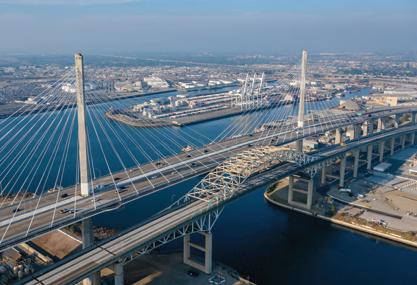
through the Port of Long Beach originate in, or are destined for, every congressional district in the United States. In 2022, the port experienced its second-busiest year ever, with over 9.1 million TEUs moved.
To maintain this leading position, the Port of Long Beach’s capital investment programme continues to outpace its competitors in North America. The port has $2.2 billion in terminal, rail and other infrastructure improvements planned during the next 10 years to enhance capacity, competitiveness and sustainability.
“This programme includes a critical channel deepening project that will help move cargo more efficiently,” explained Dr Hacegaba. “The project will also allow us to welcome newer, cleaner and more efficient cargo vessels. The Port of Long Beach and the federal government will share the costs, estimated at almost $200 million.
Among other features, the project includes deepening the Long Beach Approach Channel from 76ft to 80ft and easing turning bends in the Main Channel by deepening a wider area to 76ft. The work will dredge parts of the West Basin from 50ft to 55ft deep, construct an approach channel and turning basin to Pier J South with a depth of 55ft, and

will deposit dredged material in nearshore sites for refuse or in federally approved ocean disposal sites.
A key project is the Pier B On-Dock Rail Support Facility, with construction scheduled to start in March 2024. This upgrade is designed to switch more cargo to on-dock rail, where the shipping containers are taken to and from marine terminals by trains.
“The project will help the Port of Long Beach stay competitive and meet our environmental targets,” Dr Hacegaba said. “This enables railroads to assemble longer trains that will move goods more efficiently into and out of the Port, while also limiting truck traffic.
“The $1.57 billion facility will be built in phases, with construction scheduled for completion in 2032. This project will literally keep us on track for the future.”
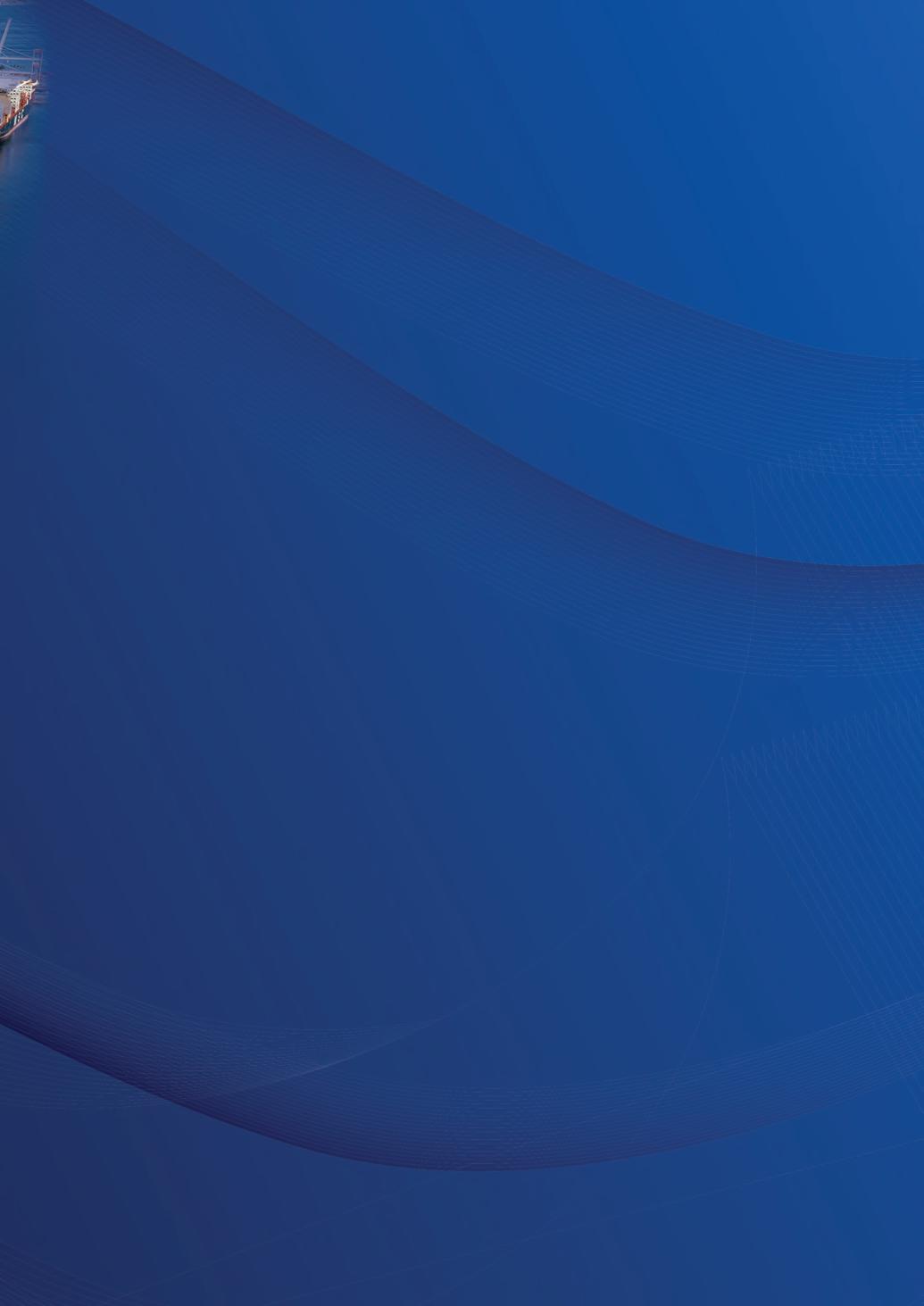
Alongside these capital projects, there is a parallel investment in personnel.
The Port of Los Angeles and Port of Long Beach Goods Movement Training Campus is designed to provide a single, central location aimed at attracting, recruiting and retaining workers in the goods movement sector.
The state of California has pledged $110 million to help fund the nation’s first training facility specifically devoted to supply chain workers. The 20-acre facility, expected to open by 2029, is a partnership between the Port of Los Angeles, the Port of Long Beach, the California Workforce Development Board, the ILWU and the Pacific Maritime Association.
With the motto ‘Port of Choice’, the Port of Long Beach has a single goal in mind –world-class customer service – which for
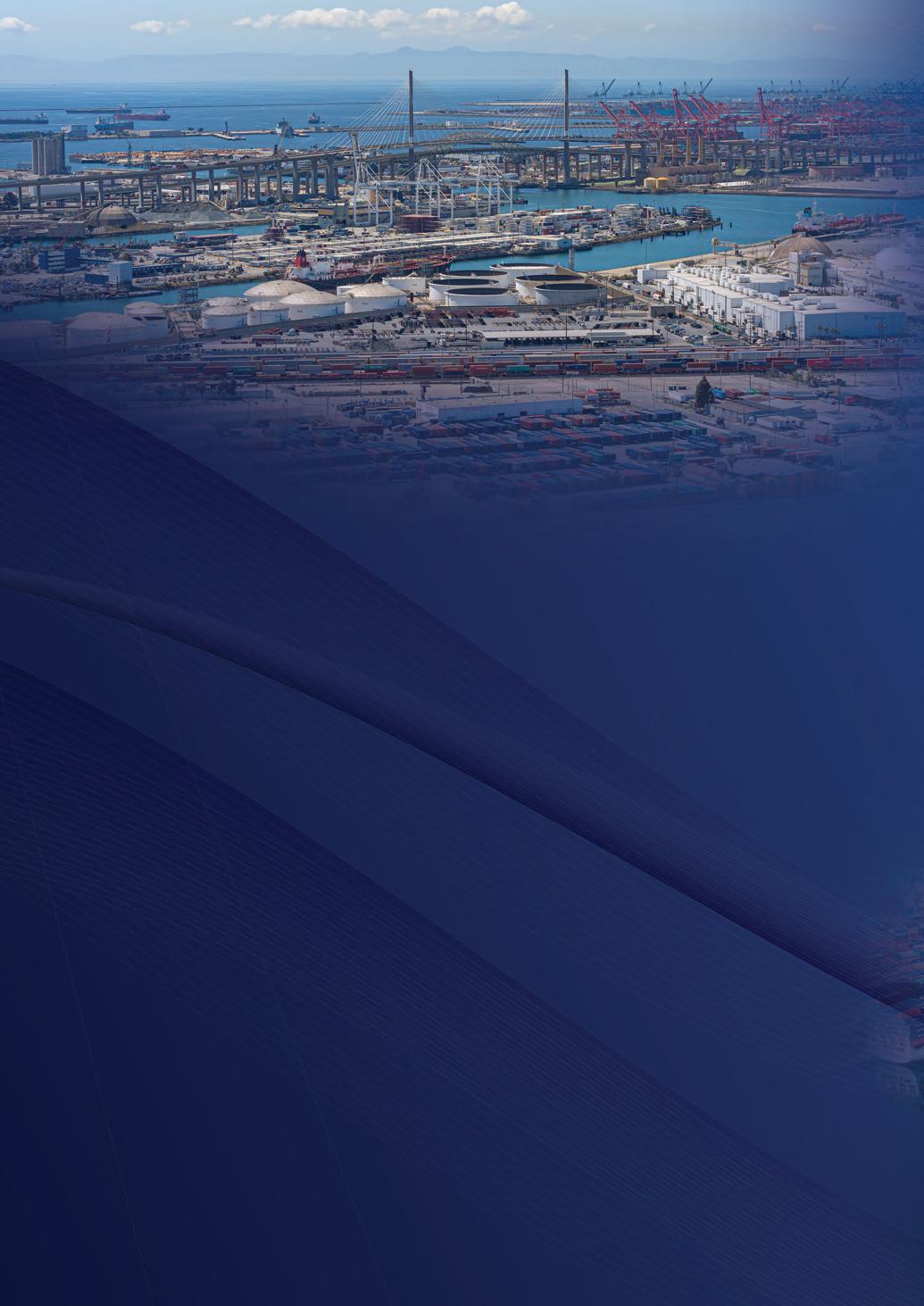
its business partners means moving cargo more efficiently and at a competitive cost.
“Customers choose the Port of Long Beach because we are dependable, cost-effective and ensure the fastest delivery of goods in the world,” continued Dr Hacegaba. “We are also chosen because of our strong relationships with industry, community, environmental advocates and partner agencies.
“In the years ahead, we see opportunities to continue improving on the operational excellence that has gotten us to our industry-leading position as the premier gateway for trade between the US and Asia.”
The efficient operation of the Port of Long Beach is enhanced by the digital Supply Chain Information Highway. Developed in 2021, through a partnership with leading St Louis-based tech firm, UNCOMN, this system is designed to maximise efficiency in cargo movement. The Supply Chain Information Highway enables shippers to track their cargo from departure to destination, providing partners with access to the necessary data to plan, schedule and track cargo containers.
“With the digital infrastructure project now in Phase Two, we are focusing on enhancing
the system’s interoperability, particularly among other seaports,” Dr Hacegaba explained. “The Port of Oakland, the Northwest Seaport Alliance, the Utah Inland Port Authority, PortMiami, the South Carolina Ports Authority, the Port of New York and New Jersey, and the Port of Hueneme have agreed to collaborate with the project. Ultimately, our vision for the Supply Chain Information Highway is to enable end-to-end visibility and coastto-coast connectivity.”
The Port of Long Beach is committed to achieving zero-emissions cargo handling by 2030 and zero-emissions trucking by 2035. “We're also working on an exciting new project, the proposed floating offshore wind facility known as Pier Wind,”
Dr Hacegaba said. “This ambitious project will also involve us becoming the nation’s largest facility to support assembling offshore wind turbines.
“Pier Wind will help California harness the power of natural ocean breezes to generate renewable energy at a lower cost, while enhancing air quality by reducing reliance on fossil fuels. The enormous wind turbines that will be built at the facility will stand as tall as the Eiffel Tower and be used

to meet California's goal of producing 25 gigawatts of offshore wind power by 2045.”
Other projects include developing green shipping corridors to reduce emissions and improve efficiencies along major trans-Pacific trade routes. These corridors will develop digital shipping tools to drive efficiency, demonstrate innovative vessel technologies and increase the availability of sustainable fuels.
“Fundamentally, a big part of our future is finding ways to get more productivity out of the port,” Dr Hacegaba said. “We’ll continue to advocate for 24/7 operations to match our partner ports in Asia. After all, we live in a world where a consumer can order products online at 4pm or 4am.
“What excites me most about my job is having the opportunity to meet leaders from all industries and sectors,” he concluded. “Our team of smart, talented and dedicated people work on projects to improve the global supply chain and the US economy.” n


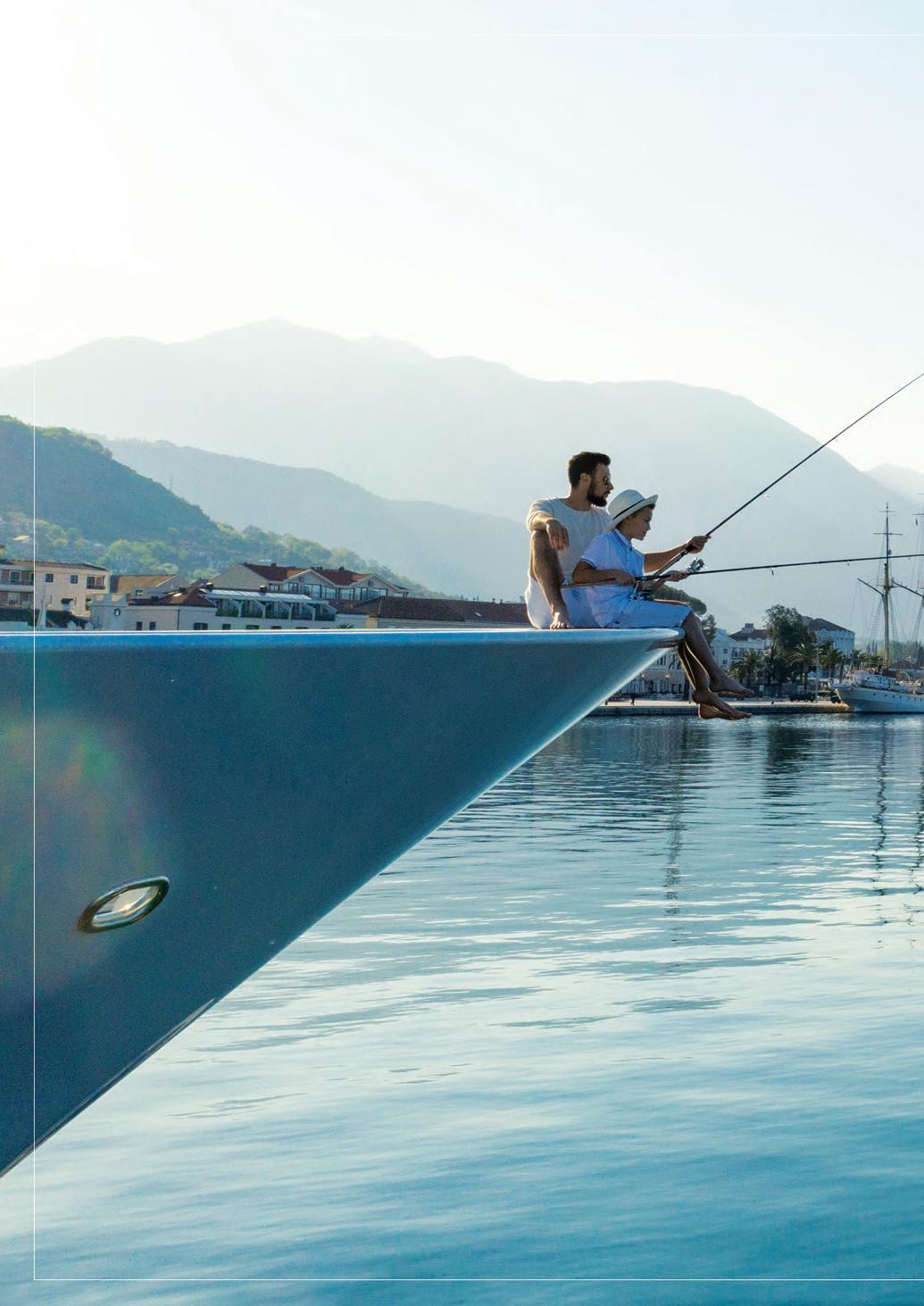

Porto Montenegro is a superlative marina village that offers the best in quality, comfort and service for the luxury yachting community. The owners of the multiaward-winning marina are continuing to enhance its development and solidify its reputation as a premier destination for shopping and leisure. Marina Director Tony Browne spoke to Andy Probert about how the marina continues to set the pace.
The marina is in the UNESCO-protected Bay of Kotor in Montenegro, also known as Boka Bay. Part of the quintessentially beautiful Adriatic Sea, Porto Montenegro is a superyacht marina that is going places.
With its infrastructure and supermodern facilities, Porto Montenegro caters to the needs of the largest yachts, their owners, guests and crew. It has luxury apartments, superior retail offerings, restaurants, bars and cafes, five-star hotels, and concierge services
“We have sought to challenge the approach of what a marina represents,” said Marina Director Tony Browne. “It is not a place to simply moor a superyacht; it is a living, thriving venue and community, designed to ensure guests experience a life less ordinary.”
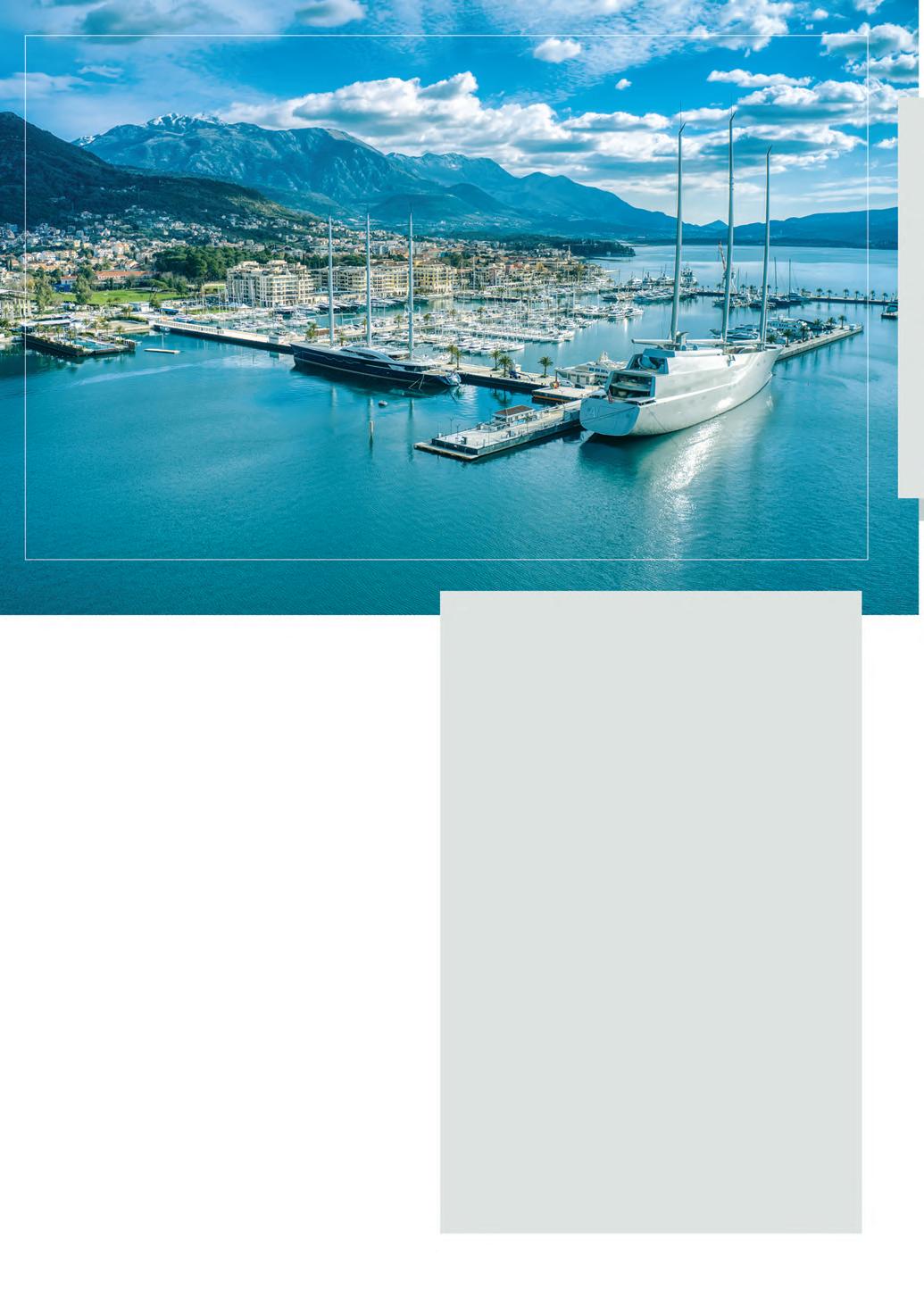
Porto Montenegro is a waterfront destination with year-round appeal: and that is before considering its stellar events calendar. This summer’s high point will see the marina host its first Rubix Festival, a mix of classical and orchestral music, and electronic and experimental sounds. Attendees include Morcheeba, John Malkovich the Vienna Philharmonic Orchestra and Francesco Tristano.
Along with fashion shows, photographic exhibitions, a polo tournament, an all-star cricket festival and multiple A-list celebrities, influencers, business heads and entrepreneurs for the Gumball 300 rally, all compasses invariably point to Boka Bay in 2023
The visionary of Porto Montenegro was the late Canadian billionaire Peter Munk who sought to revive the defunct
o nce-Communist-era naval base. Also, a former thriving shipyard, it was a base used by the Serbian and Yugoslavian navies prior to the break-up of Yugoslavia in the 1990s.
T he location emerged as a potential alternative to the overly crowded yacht marinas of France and Southern Europe –ready to accommodate a new generation of superyacht owners.
Initially, with 25 hectares of land and a further 65 hectares leased by the Montenegrin Government, the marina became one of the biggest private-sector investments in the country by the mid-2010s.
The marina, extended in 2015, operates 450 berths, of which more than half cater to superyachts above 100m in length, with one at 250m being the world’s largest superyacht berth.
Five neighbourhoods will be inclusive of the marina’s diverse community. The first already built is the suburban South Village,
“A ban on fishing in the marina has boosted the natural eco-system. We have also urged food and beverage operators to replace single-use plastic”

a vital social and entertainment setting for music, fashion and culture aficionados. It will become a long-term entertainment and events centre, improving the yacht club and associated amenities, with the addition of a five-star hotel, waterside residences and a beach environment. There are also plans for a multiplex cinema and over 45 retail spaces.
This will be followed by plans for a tenniscentric North Village, and eventually the luxurious water world of Park Gardens.
Overseeing the continued development is the Investment Corporation of Dubai (ICD), which acquired Porto Montenegro in 2016. ICD is the Government of Dubai’s principal investment arm, with holdings that span which accommodates more than 440 residences in gated communities, a five-star hotel, 75 bars, restaurants and retail outlets.
Next is Boka Place, an innovative vision on the cusp of realisation. This will set the standard for wellness-led modern living: a complementary collection of apartments around a central square, served by lively shopping, dining and socialising spaces.
The SIRO Hotel and Residences concept will underpin Boka Place’s ethos, seamlessly blending a boutique retreat hotel and wellness hub with privately-owned and serviced residences.
The third phase will see the repurposing of the marina’s iconic Synchro building, already

financial services, transportation, energy and industries, real estate, leisure, and retail interests.
Employing 350 people full-time, growing to 600 in the summer, Porto Montenegro has earned several accolades and is leading the way for other luxury marinas. In 2017, it received five Gold Anchors from the Yacht Harbour Association (YHA) – the highest accolade for service and operational standards available in the industry. That same year, it was the first superyacht marina to receive the Marina of Distinction award for three years of consecutive customer service excellence.
It earned the YHA’s Five Gold Anchor Platinum award in recognition of its Clean
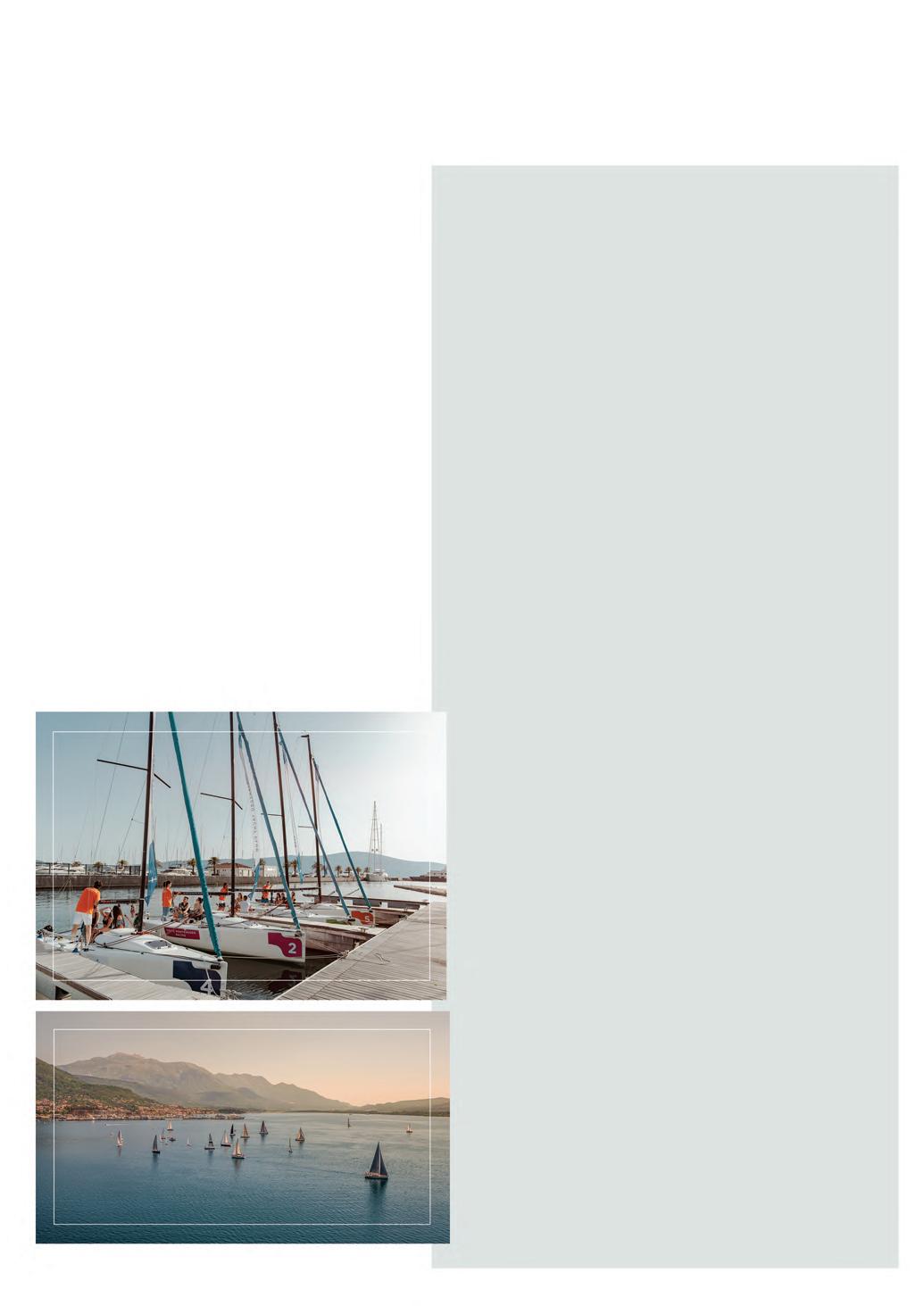
Marina Standards: Porto Montenegro was one of the first marinas to install sea bins in the marina basin, placing great emphasis on dealing with grey and blackwater, segregated and hazardous waste.
In 2021, it was awarded ACREW’s prestigious World’s Best Superyacht Marina at the Superyacht Business Awards after being voted by ACREW’s network of around 15,000 captains and crew members. The marina has always advocated strong links with superyacht crews, holding events and activities throughout the year.
“External accreditation from our peers often speaks volumes and we are happy to be judged on that,” said Mr Browne. Another milestone is the marina is running at above 100 per cent occupancy through a novel lease and license operation for yacht owners, while available retail space is over-subscribed.
An exciting development has been the launch of Adriatic42, a joint venture between PM Holdings LLC, an ICD company, and Drydocks World Dubai – a DP World company – to run the former Bijela shipyard at Herceg Novi, close to Porto Montenegro.
Located in one of the safest natural harbours in the world, it has undergone a comprehensive redesign, transforming it into a premium superyacht refit, overhaul, repair and maintenance facility.
“It is being positioned as among the world’s main locations for yacht overhaul , striving to provide reliability and high
technical standards for clients,” Mr Browne said.
Adriatic42 already employs about 100 staff who bring a long tradition of maritime expertise to the yard, which is nearly 100 years old and was the largest ship repair yard in the Southern Adriatic.
Over €40 million has been invested to date, including the acquisition of stateof-the-art infrastructure and sustainable technologies. Preserving the natural environment is a key priority, while Adriatic42’s sustainable approach i ncludes the highest environmental and safety standards to prevent pollution.
The facility recently added a $1 million new generation 180m floating dock from the renowned Turkish Hat-San Shipyard. It has a 10,000-tonne lift capacity that can accommodate the world’s largest y achts. This is in addition to the acquisition of a new travel hoist with a 720-tonne

capacity, the largest of its kind in the region.
Porto Montenegro is steadfast in delivering quality while investing in sustainable practices to minimise its carbon footprint. “We are a marina that supports and advocates sustainability wherever possible,” Mr Browne added.
“A ban on fishing in the marina has boosted the natural eco-system. We have also urged food and beverage operators to replace single-use plastic.”
Agreeing that Porto Montenegro operates within the top 1% of marinas globally, Mr Browne remained grounded in reality:
“Porto Montenegro is where it is today and recognised globally because of its team,” he concluded. “Everyone strives to ensure it offers a unique and excellent experience to the luxury yachting community.” n
